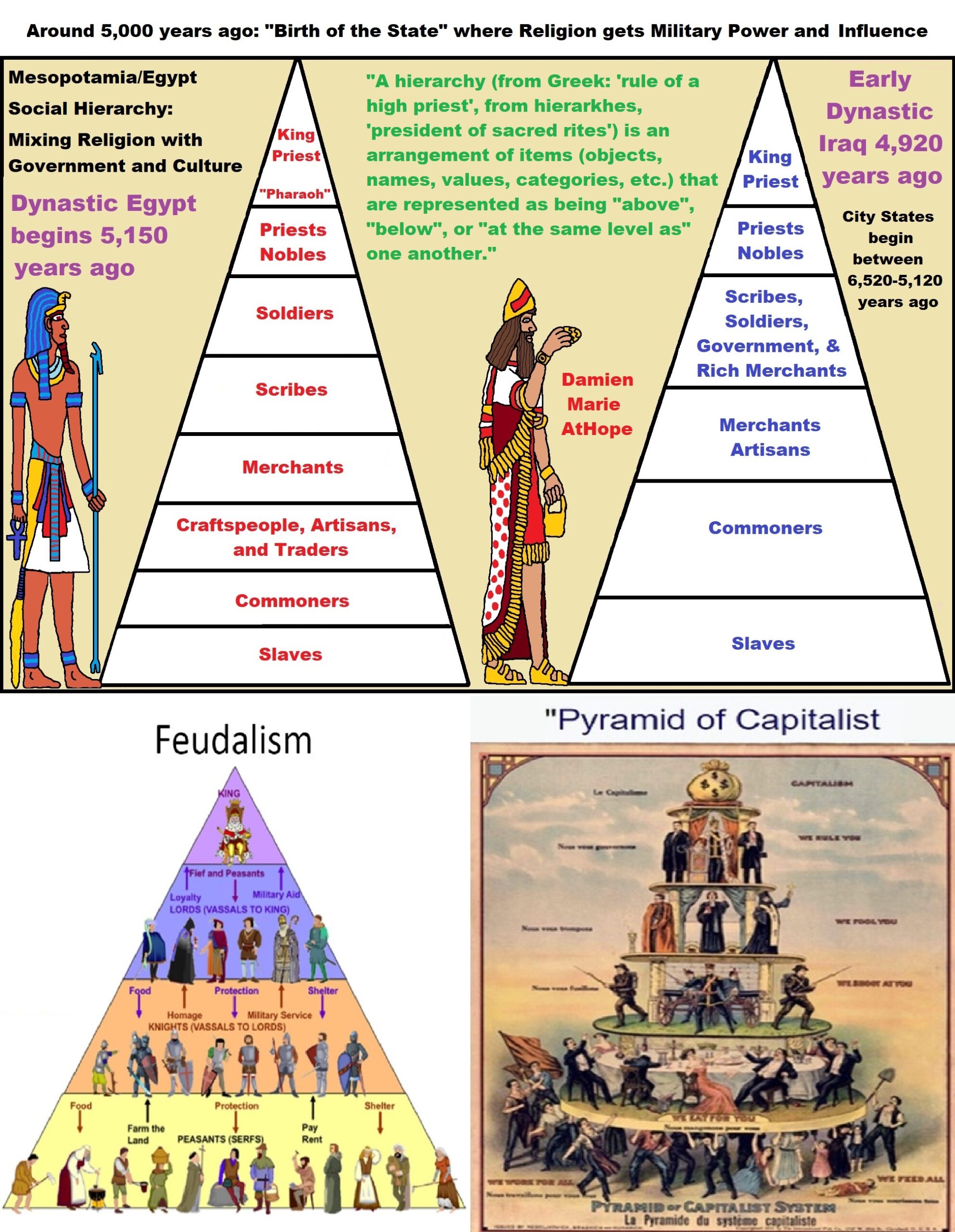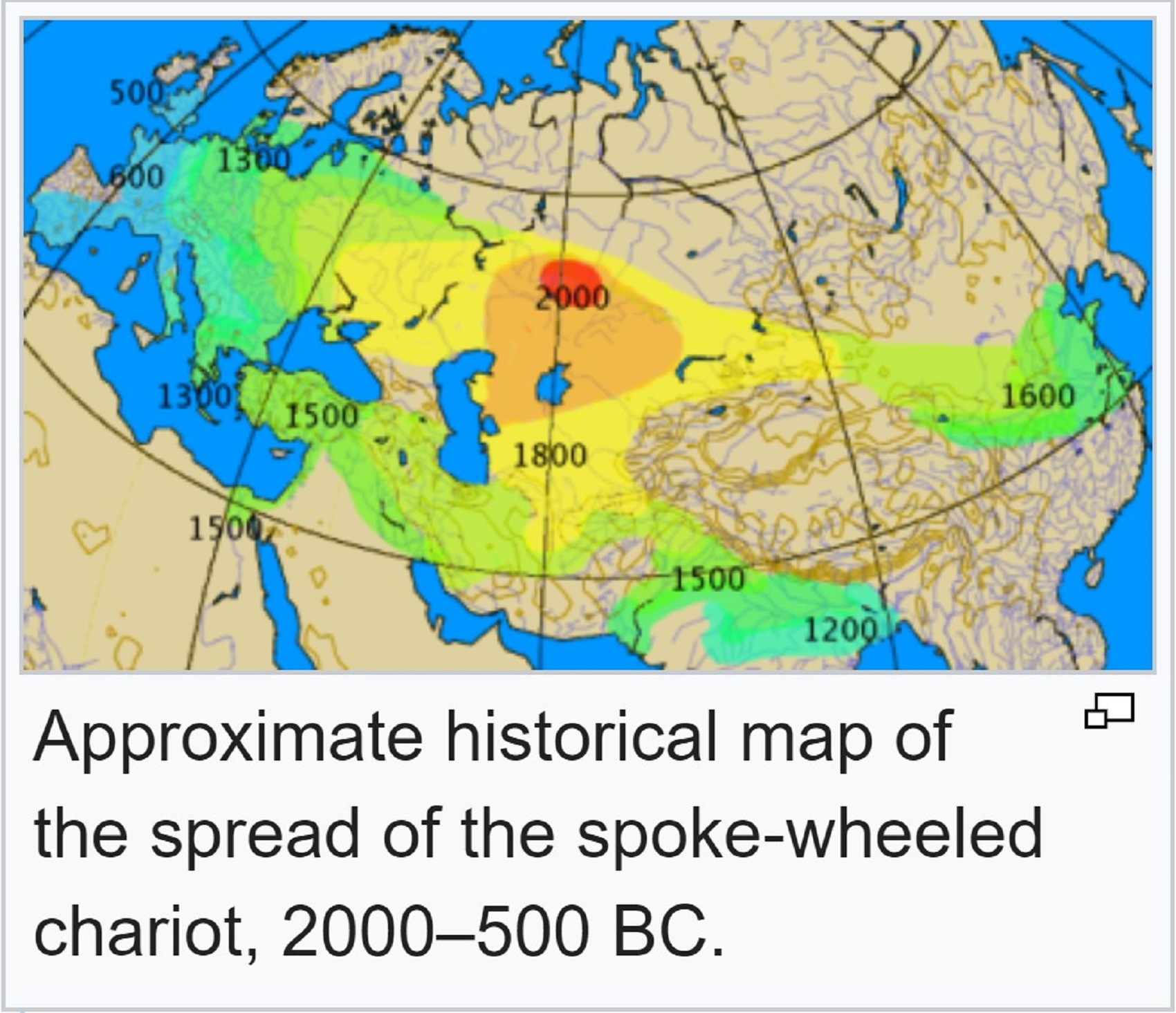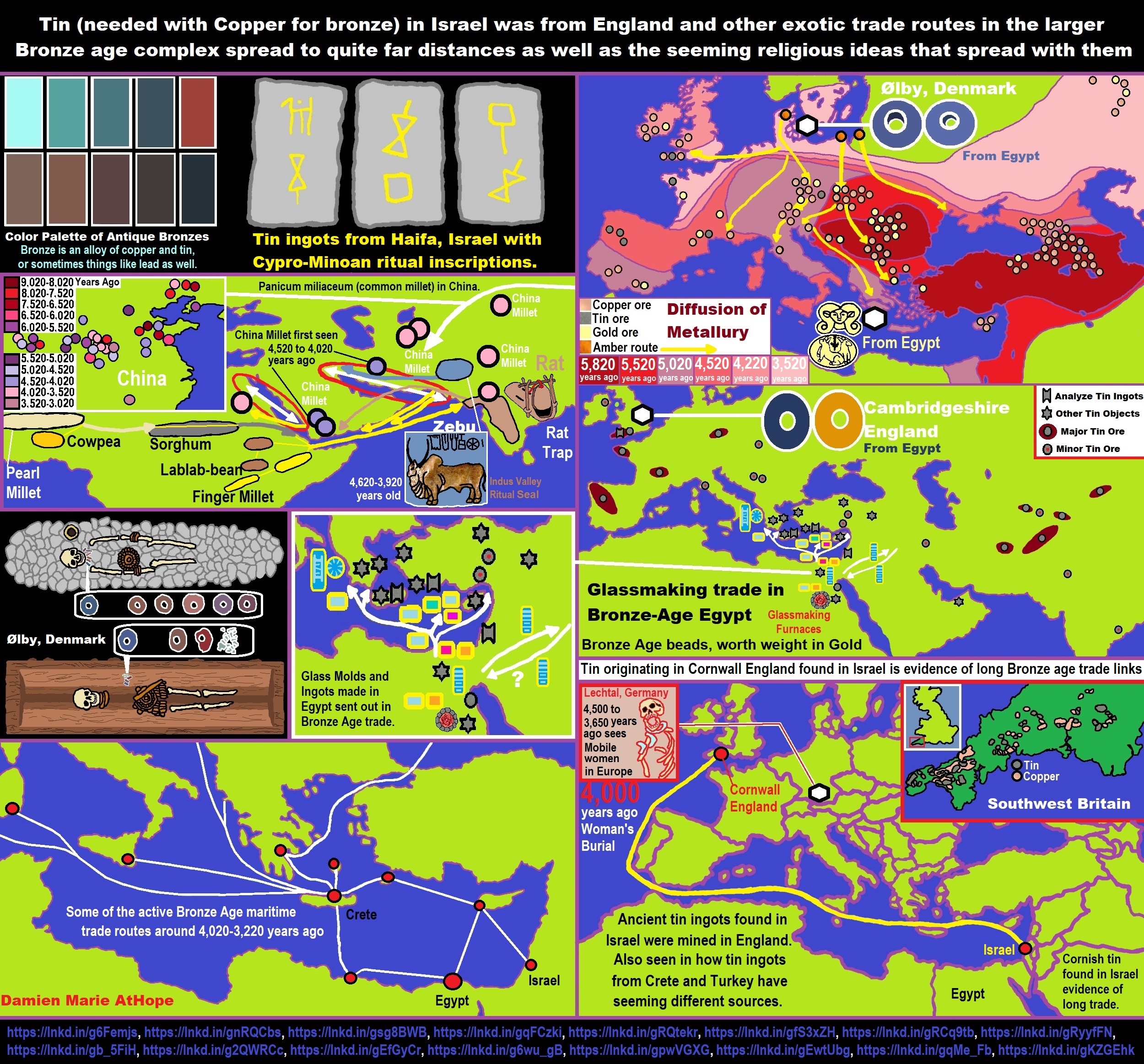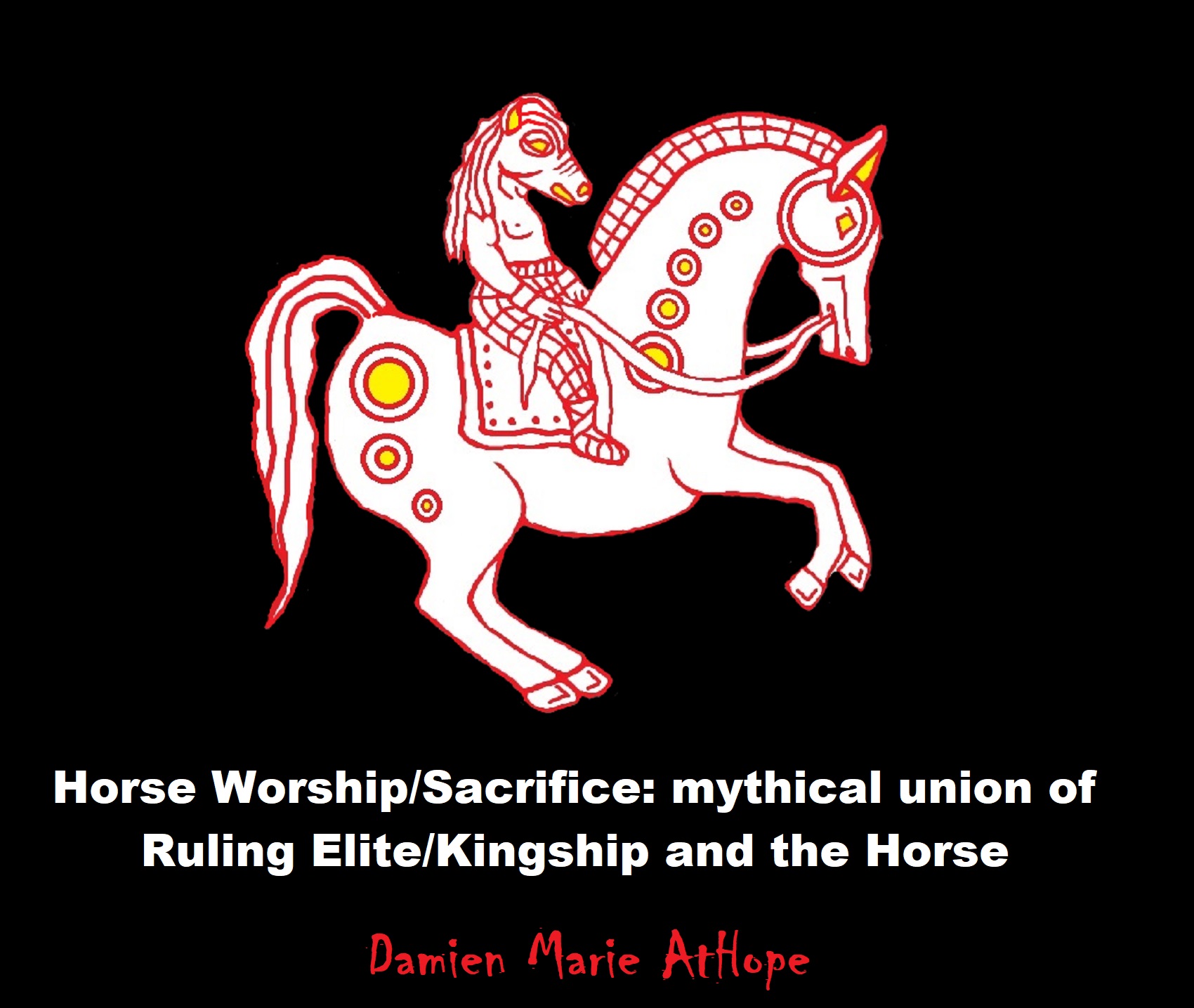
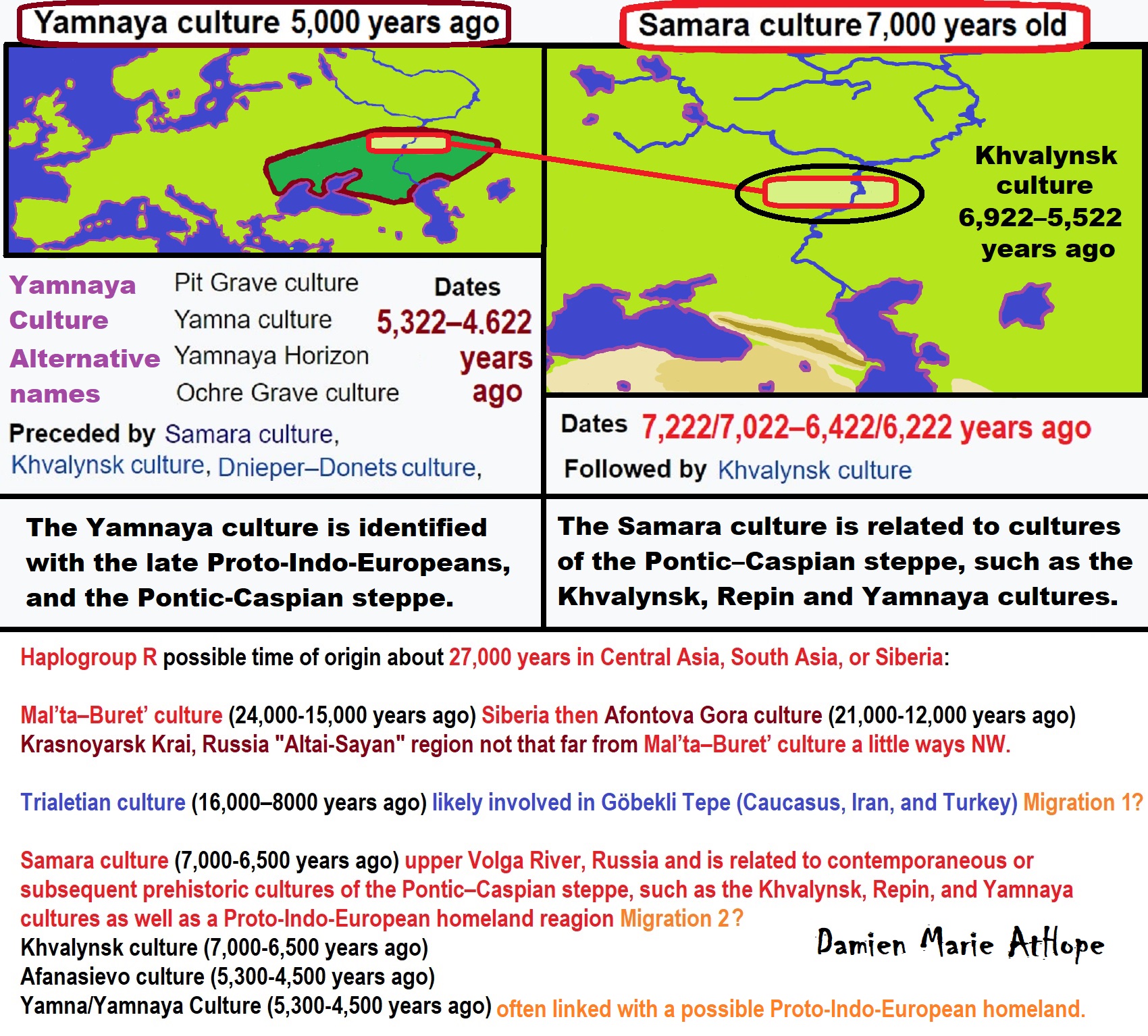
Samara culture with Horse Sacrifice and Kurgan burials
7,500-year-old Horse Sacrifice (its origin?)
“The Samara culture is an Eneolithic (Copper Age) culture dating to 5500 BCE/7,500 years ago (to 6,000 years ago?), the turn of the 5th millennium BCE, at the Samara Bend of the Volga River (modern Russia). The Samara culture is regarded as related to contemporaneous or subsequent prehistoric cultures of the Pontic–Caspian steppe, such as the Khvalynsk, Repin, and Yamna (or Yamnaya) cultures. Genetic analyses of a male buried at Lebyazhinka, radiocarbon dated to 5640-5555 years ago, found that he belonged to a population often referred to as “Samara hunter-gatherers,” a group closely associated with Eastern Hunter-Gatherers. The male sample carried Y-haplogroup R1b1a1a and mitochondrial haplogroup U5a1d.” ref
“The culture is characterized by the remains of animal sacrifice, which occur over most of the sites. There is no indisputable evidence of riding, but there were horse burials, the earliest in the Old World. Typically, the head and hooves of cattle, sheep, and horses are placed in shallow bowls over the human grave, smothered with ochre. Some have seen the beginning of the horse sacrifice in these remains, but this interpretation has not been more definitely substantiated. It is known that the Indo-Europeans sacrificed both animals and people, like many other cultures.” ref
“Some of the graves are covered with a stone cairn or a low earthen mound, the very first predecessor of the kurgan. The later, fully developed kurgan was a hill on which the deceased chief might ascend to the sky god, but whether these early mounds had that significance is unknown. Grave offerings included ornaments depicting horses. The graves also had an overburden of horse remains; it cannot yet be determined decisively if these horses were domesticated and ridden or not, but they were certainly used as a meat-animal. Most controversial are bone plaques of horses or double oxen heads, which were pierced.” ref
“From at least about 4500 BCE or around 6,500 years ago, a single dialect called Proto-Indo-European (PIE) existed as the forerunner of all modern Indo-European languages, but it left no written texts, and its structure is unknown.” ref
The prehistoric origins of the domestic horse and horseback riding
“The findings of Librado et al. (2021) show that modern domestic horses (DOM2) emerged in the lower Don-Volga region. They imply that horseback riding drove selection that resulted in these horses and fuelled their initial dispersal, and also that DOM2 horses replaced other horses because they were more suitable for riding due to their more docile temperaments and resilient backs. In this article, I argue that captive breeding of horses leading to their domestication began in about 4500-3000 BCE in the Pontic-Caspian steppe and made horseback riding necessary because managing horses, and especially moving them over long distances, required mounted herding. Horseback riding had been experimented with since the second half of the 5th millennium BCE, became common around 3100 BCE during the early stages of the Yamnaya culture, and necessary by the middle of the 3rd millennium BCE at the very latest. As horseback riding became more common, selection for malleable temperaments and resilient backs intensified, resulting in DOM2 horses by about 2300-2200 BCE in the lower Don-Volga region. The body size and weight-carrying ability of ancestral and early DOM2 horses were not limiting factors for horseback riding. The initial dispersal of DOM2 horses was facilitated by horseback riding and began by about 2300±150 BCE. Chariotry began to spread together with DOM2 horses after 2000 BC, but its high archaeological visibility may have inflated its importance, since chariots are of limited practical use for herding and other daily tasks.” ref
Khvalynsk culture with Horse Sacrifice and Kurgan burials
6,900-year-old Horse Sacrifice
“The Khvalynsk culture is a Middle Copper Age Eneolithic culture (c. 4,900 – 3,500 BCE ) of the middle Volga region. It takes its name from Khvalynsk in Saratov Oblast. The Khvalynsk culture is found from the Samara Bend in the north (the location of some of the most important sites such as Krivoluchye) to the North Caucasus in the south, from the Sea of Azov in the west to the Ural River in the east. It was preceded by the Early Eneolithic Samara culture. Sacrificial areas were found similar to those at Samara, containing horse, cattle, and sheep remains. Khvalynsk evidences the further development of the kurgan. It began in the Samara with individual graves or small groups, sometimes under stone.” ref
“Nina Morgunova regards Khvalynsk I as Early Eneolithic, contemporary with the second stage of Samara culture called Ivanovka and Toksky stage, which pottery was influenced by Khvalynsk culture, as a calibrated period of this second stage of Samara culture is 4,850–3,640 BCE. After c. 4,500 BCE, Khvalynsk culture united the lower and middle Volga sites keeping domesticated sheep, goats, cattle, and maybe horses. The Krivoluchie grave, which Gimbutas viewed as that of a chief, contained a long flint dagger and tanged arrowheads, all carefully retouched on both faces. In addition, there is a porphyry axe-head with lugs and a haft hole. These artifacts are of types that not too long after appeared in metal.” ref
“Although there are disparities in the wealth of the grave goods, there seems to be no special marker for the chief. This deficit does not exclude the possibility of a chief. In the later kurgans, one finds that the kurgan is exclusively reserved for a chief and his retinue, with ordinary people excluded. This development suggests a growing disparity of wealth, which in turn implies a growth in the wealth of the whole community and an increase in population. The explosion of the kurgan culture out of its western steppe homeland must be associated with an expansion of population. The causes of this success and expansion remain obscure.” ref
“Early examination of physical remains of the Khvalynsk people determined that they were Caucasoid. A similar physical type prevails among the Sredny Stog culture and the Yamnaya culture, whose peoples were powerfully built. Khvalynsk people were, however, not as powerfully built as the Sredny Stog and Yamnaya. The people of the Dnieper-Donets culture further west on the other hand, were even more powerfully built than the Yamnaya.” ref
“Recent genetic studies have shown that males of the Khvalynsk culture carried primarily the paternal haplogroup R1b, although a few samples of R1a, I2a2, Q1a, and J have been detected. They belonged to the Western Steppe Herder (WSH) cluster, which is a mixture of Eastern Hunter-Gatherer (EHG) and Caucasian Hunter-Gatherer (CHG) ancestry. This admixture appears to have happened on the eastern Pontic–Caspian steppe starting around 5,000 BCE. Mathieson et al. (2015, 2018) found in three Eneolithic males buried near Khvalynsk between 5,200 BC and 4,000 BCE the Y-haplogroups R1b1a and R1a1, and the mt-haplogroups H2a1, U5a1i, and Q1a and a subclade of U4.” ref
“A male from the contemporary Sredny Stog culture was found to have 80% WSH ancestry of a similar type to the Khvalynsk people, and 20% Early European Farmer (EEF) ancestry. Among the later Yamnaya culture, males carry exclusively R1b and I2. A similar pattern is observable among males of the earlier Dnieper-Donets culture, who carried only R and I and whose ancestry was exclusively EHG with Western Hunter-Gatherer (WHG) admixture.” ref
“The presence of EEF and CHG mtDNA and exclusively EHG and WHG Y-DNA among the Yamnaya and related WSHs suggest that EEF and CHG admixture among them was the result of mixing between EHG and WHG males, and EEF and CHG females. This suggests that the leading clans among the Yamnaya were of EHG paternal origin. According to David W. Anthony, this implies that the Indo-European languages were the result of “a dominant language spoken by EHGs that absorbed Caucasus-like elements in phonology, morphology, and lexicon” (spoken by CHGs) Other studies have suggested that the Indo-European language family may have originated not in Eastern Europe, but among West Asian (CHG-like) populations south of the Caucasus.” ref
5,000-year-old Horseback Riding?
“Archaeologists have previously found evidence of people consuming horse milk in dental remains and indications of horses controlled by harnesses and bits dating back more than 5,000 years, but that does not necessarily indicate the horses were ridden.” ref
“Clear evidence related to the world’s first horseback rider from hallmark damage that horseback riding does to the body. To identify horsemanship syndrome in ancient remains, the researchers developed a list of six indicators. They then set out to seek these indicators in bodies buried in Yamnaya kurgans (tomb mounds) excavated in Bulgaria, Romania, and Hungary, dating between 5,020 to 4,500 years ago. Altogether, they studied 24 skeletons – most Yamnaya – and some from other cultures in the vicinity. Among the six indicators cited for habitual horsemanship are stress signals in the pelvis and thigh bones, because riding, especially without a saddle and stirrups, involves the rider tightening the thighs and straining the lower body with each step the animal takes, lest they fall off.” ref
“Nine of the bodies evinced at least four of the six characteristics, marking them as likely horseback riders. Of these, five exhibited at least five of the six pathologies, while one person buried in Strejnicu, Romania, had all six. There are caveats. There is no archaeological benchmark for “damage caused by riding a horse” as opposed to other theoretical strains. Basket weaving could result in some similar indicators, they point out. Absent benchmarking, then, interpretations may vary and comparison with other nomadic pre-and-post-horse peoples could help. That has not been done yet. However, the researchers feel that, taken together, the six indicators do the job.” ref
“Indirect evidence of riding by the Yamnaya is the speed of their spread to Hungary in the west and Siberia in the northeast. “Considering the vast geographical distances of 4,500 kilometers (almost 2,800 miles) between the Tisza River [in Hungary] and the Altai Mountains [in Siberia], the absence of roads and the small overall population sizes, it is difficult to envision how this expansion could have taken place without improved means of transport,” they write. So in short, Yamnaya seem to have been the first horse riders, back in the Early Bronze Age. The authors add that 15 of their 24 bodies had three of the six telltale features. Not everybody who rides a horse will develop all six.” ref
Yamnaya culture with Horse Sacrifice and Kurgan burials
- “Also known as the Yamnaya Culture, Pit Grave Culture or Ochre Grave Culture.
- Generally considered by linguists as the homeland of the Proto-Indo-European language.
- It probably originated between the Lower Don, the Lower Volga, and North Caucasus during the Chalcolithic, around what became the Novotitorovka culture (3300-2700 BCE) within the Yamna culture.
- Highly mobile steppe culture of pastoral nomads relying heavily on cattle (dairy farming). Sheep were also kept for their wool. Hunting, fishing, and sporadic agriculture were practiced near rivers.
- The first culture (along with Maykop) to make regular use of ox-drawn wheeled carts. Metal artifacts (tools, axes, tanged daggers) were mostly made of copper, with some arsenical bronze. Domesticated horses are used as pack animals and ridden to manage cattle herds.
- Coarse, flat-bottomed, egg-shaped pottery decorated with comb stamps and cord impressions.
- The dead were inhumed in pit graves inside kurgans (burial mounds). Bodies were placed in a supine position with bent knees and covered in ochre. Wagons/carts and sacrificed animals (cattle, horse, sheep) were present in graves, a trait typical of later Indo-European cultures.” ref
“The Yamnaya culture or the Yamna culture, also known as the Pit Grave culture or Ochre Grave culture, is a late Copper Age to early Bronze Age archaeological culture of the region between the Southern Bug, Dniester, and Ural rivers (the Pontic–Caspian steppe), dating to 3300–2600 BCE. It was discovered by Vasily Gorodtsov following his archaeological excavations near the Donets River in 1901–1903. Its name derives from its characteristic burial tradition: Я́мная (romanization: yamnaya) is a Russian adjective that means ‘related to pits (yama)’, as these people used to bury their dead in tumuli (kurgans) containing simple pit chambers.” ref
“The Yamna DNA samples recovered from elite Kurgan graves in southern Russia belonged overwhelmingly to haplogroup R1b-Z2103, the essentially eastern branch of Indo-European R1b. The absence of other main R1b subclades is probably due to the dominance of a single royal or aristocratic lineage among the Yamnayan elite buried in Kurgans. Other R1b subclades did show up in Germany (DF27, U152) and Ireland (L21) when Steppe-derived people reached those regions between 2500 and 2000 BCE. The only non-R1b sample found in Yamna was an I2a2a-L699, a lineage descended from WHG tribes that migrated to Eastern Europe, but came back with the Indo-European migrations and is now found especially in Central and Western Europe.” ref
“The Yamnaya economy was based upon animal husbandry, fishing, and foraging, and the manufacture of ceramics, tools, and weapons. The people of the Yamnaya culture lived primarily as nomads, with a chiefdom system and wheeled carts and wagons that allowed them to manage large herds. They are also closely connected to Final Neolithic cultures, which later spread throughout Europe and Central Asia, especially the Corded Ware people and the Bell Beaker culture, as well as the peoples of the Sintashta, Andronovo, and Srubnaya cultures. Back migration from Corded Ware also contributed to Sintashta and Andronovo. In these groups, several aspects of the Yamnaya culture are present. Yamnaya material culture was very similar to the Afanasevo culture of South Siberia, and the populations of both cultures are genetically indistinguishable. This suggests that the Afanasevo culture may have originated from the migration of Yamnaya groups to the Altai region or, alternatively, that both cultures developed from an earlier shared cultural source.” ref
“Genetic studies have suggested that the people of the Yamnaya culture can be modeled as a genetic admixture between a population related to Eastern European Hunter-Gatherers (EHG) and people related to hunter-gatherers from the Caucasus (CHG) in roughly equal proportions, an ancestral component which is often named “Steppe ancestry”, with additional admixture from Anatolian, Levantine, or Early European farmers. Genetic studies also indicate that populations associated with the Corded Ware, Bell Beaker, Sintashta, and Andronovo cultures derived large parts of their ancestry from the Yamnaya or a closely related population. According to the widely-accepted Kurgan hypothesis, of Marija Gimbutas, the people that produced the Yamnaya culture spoke a stage of the Proto Indo-European language, which later spread eastwards and westwards as part of the Indo-European migrations.” ref
“The Yamnaya culture was defined by Vasily Gorodtsov in order to differentiate it from the Catacomb and Srubnaya cultures that existed in the area, but were considered to be of a later period. Due to the time interval to the Yamnaya culture, and the reliance on archaeological findings, debate as to its origin is ongoing. In 1996, Pavel Dolukhanov suggested that the emergence of the Pit-Grave culture represents a social development of various different local Bronze Age cultures, thus representing “an expression of social stratification and the emergence of chiefdom-type nomadic social structures” which in turn intensified inter-group contacts between essentially heterogeneous social groups.” ref
“The origin of the Yamnaya culture continues to be debated, with proposals for its origins pointing to both the Khvalynsk and Sredny Stog cultures. The Khvalynsk culture (4700–3800 BCE) (middle Volga) and the Don-based Repin culture (c. 3950–3300 BCE) in the eastern Pontic-Caspian steppe, and the closely related Sredny Stog culture (c. 4500–3500 BCE) in the western Pontic-Caspian steppe, preceded the Yamnaya culture (3300–2500 BCE). The Yamnaya culture was succeeded in its western range by the Catacomb culture (2800–2200 BCE); in the east, by the Poltavka culture (2700–2100 BCE) at the middle Volga. These two cultures were followed by the Srubnaya culture (18th–12th century BCE).” ref
“Further efforts to pinpoint the location came from Anthony (2007), who suggested that the Yamnaya culture (3300–2600 BCE) originated in the Don–Volga area at c. 3400 BC, preceded by the middle Volga-based Khvalynsk culture and the Don-based Repin culture (c. 3950–3300 BCE), arguing that late pottery from these two cultures can barely be distinguished from early Yamnaya pottery. Earlier continuity from eneolithic but largely hunter-gatherer Samara culture and influences from the more agricultural Dnieper–Donets II are apparent.” ref
He argues that the early Yamnaya horizon spread quickly across the Pontic–Caspian steppes between c. 3400 and 3200 BCE: The spread of the Yamnaya horizon was the material expression of the spread of late Proto-Indo-European across the Pontic–Caspian steppes. […] The Yamnaya horizon is the visible archaeological expression of a social adjustment to high mobility – the invention of the political infrastructure to manage larger herds from mobile homes based in the steppes.” ref
“Alternatively, Parpola (2015) relates both the Corded ware culture and the Yamnaya culture to the late Trypillia (Tripolye) culture. He hypothesizes that “the Tripolye culture was taken over by PIE speakers by c. 4000 BCE,” and that in its final phase the Trypillian culture expanded to the steppes, morphing into various regional cultures which fused with the late Sredny Stog (Serednii Stih) pastoralist cultures, which, he suggests, gave rise to the Yamnaya culture. Dmytro Telegin viewed Sredny Stog and Yamna as one cultural continuum and considered Sredny Stog to be the genetic foundation of the Yamna.” ref
“The Yamnaya culture was nomadic or semi-nomadic, with some agriculture practiced near rivers, and a few fortified sites, the largest of which is Mikhaylivka. Characteristic for the culture are the burials in pit graves under kurgans (tumuli), often accompanied by animal offerings. Some graves contain large anthropomorphic stelae, with carved human heads, arms, hands, belts, and weapons. The dead bodies were placed in a supine position with bent knees and covered in ochre. Some kurgans contained “stratified sequences of graves.” Kurgan burials may have been rare, and were perhaps reserved for special adults, who were predominantly, but not necessarily, male. Status and gender are marked by grave goods and position, and in some areas, elite individuals are buried with complete wooden wagons. Grave goods are more common in eastern Yamnaya burials, which are also characterized by a higher proportion of male burials and more male-centred rituals than western areas.” ref
“The Yamnaya culture had and used two-wheeled carts and four-wheeled wagons, which are thought to have been oxen-drawn at this time, and there is evidence that they rode horses. For instance, several Yamnaya skeletons exhibit specific characteristics in their bone morphology that may have been caused by long-term horseriding. Metallurgists and other craftsmen are given a special status in Yamnaya society, and metal objects are sometimes found in large quantities in elite graves. New metalworking technologies and weapon designs are used.” ref
“Stable isotope ratios of Yamna individuals from the Dnipro Valley suggest the Yamnaya diet was terrestrial protein based with insignificant contribution from freshwater or aquatic resources. Anthony speculates that the Yamnaya ate meat, milk, yogurt, cheese, and soups made from seeds and wild vegetables, and probably consumed mead. Mallory and Adams suggest that Yamnaya society may have had a tripartite structure of three differentiated social classes, although the evidence available does not demonstrate the existence of specific classes such as priests, warriors, and farmers.” ref
“According to Jones et al. (2015) and Haak et al. (2015), autosomal tests indicate that the Yamnaya people were the result of a genetic admixture between two different hunter-gatherer populations: distinctive “Eastern Hunter-Gatherers” (EHG), from Eastern Europe, with high affinity to the Mal’ta–Buret’ culture or other, closely related people from Siberia and a population of “Caucasus hunter-gatherers” (CHG) who probably arrived from the Caucasus or Iran. Each of those two populations contributed about half the Yamnaya DNA. This admixture is referred to in archaeogenetics as Western Steppe Herder (WSH) ancestry.” ref
“Autosomal tests also indicate that the Yamnaya are the vector for “Ancient North Eurasian” admixture into Europe. “Ancient North Eurasian” is the name given in literature to a genetic component that represents descent from the people of the Mal’ta–Buret’ culture or a population closely related to them. That genetic component is visible in tests of the Yamnaya people as well as modern-day Europeans. Admixture between EHGs and CHGs is believed to have occurred on the eastern Pontic-Caspian steppe starting around 5,000 BCE, while admixture with Early European Farmers (EEF) happened in the southern parts of the Pontic-Caspian steppe sometime later. More recent genetic studies have found that the Yamnaya were a mixture of EHGs, CHGs, and to a lesser degree Anatolian farmers and Levantine farmers, but not EEFs from Europe due to lack of WHG DNA in the Yamnaya. This occurred in two distinct admixture events from West Asia into the Pontic-Caspian steppe.” ref
“Haplogroup R1b, specifically the Z2103 subclade of R1b-L23, is the most common Y-DNA haplogroup found among the Yamnaya specimens. This haplogroup is rare in Western Europe and mainly exists in Southeastern Europe today. Additionally, a minority are found to belong to haplogroup I2. They are found to belong to a wider variety of West Eurasian mtDNA haplogroups, including U, T, and haplogroups associated with Caucasus Hunter-Gatherers and Early European Farmers. A small but significant number of Yamnaya kurgan specimens from Northern Ukraine carried the East Asian mtDNA haplogroup C4. People of the Yamnaya culture are believed to have mostly brown eye color, light to intermediate skin, and brown hair color, with some variation.” ref
“Some Yamnaya individuals are believed to have carried a mutation to the KITLG gene associated with blond hair, as several individuals with Steppe ancestry are later found to carry this mutation. The Ancient North Eurasian Afontova Gora group, who contributed significant ancestry to Western Steppe Herders, are believed to be the source of this mutation. A study in 2015 found that Yamnaya had the highest ever calculated genetic selection for height of any of the ancient populations tested. It has been hypothesized that an allele associated with lactase persistence (conferring lactose tolerance into adulthood) was brought to Europe from the steppe by Yamnaya-related migrations.” ref
“A 2022 study by Lazaridis et al. found that the typical phenotype among the Yamnaya population was brown eyes, brown hair, and intermediate skin color. None of their Yamnaya samples were predicted to have either blue eyes or blond hair, in contrast with later Steppe groups in Russia and Central Asia, as well as the Bell Beaker culture in Europe, who did carry these phenotypes in high proportions.” ref
The geneticist David Reich has argued that the genetic data supports the likelihood that the people of the Yamnaya culture were a “single, genetically coherent group” who were responsible for spreading many Indo-European languages. Reich’s group recently suggested that the source of Anatolian and Indo-European subfamilies of the Proto-Indo-European (PIE) language may have been in west Asia, and the Yamna were responsible for the dissemination of the latter. Reich also argues that the genetic evidence shows that Yamnaya society was an oligarchy dominated by a small number of elite males.” ref
“The genetic evidence for the extent of the role of the Yamnaya culture in the spread of Indo-European languages has been questioned by Russian archaeologist Leo Klejn and Balanovsky et al., who note a lack of male haplogroup continuity between the people of the Yamnaya culture and the contemporary populations of Europe. Klejn has also suggested that the autosomal evidence does not support a Yamnaya migration, arguing that Western Steppe Herder ancestry in both contemporary and Bronze Age samples is lowest around the Danube in Hungary, near the western limits of the Yamnaya culture, and highest in Northern Europe, which Klejn argues is the opposite of what would be expected if the geneticists’ hypothesis is correct.” ref
“Marija Gimbutas identified the Yamnaya culture with the late Proto-Indo-Europeans (PIE) in her Kurgan hypothesis. In the view of David Anthony, the Pontic-Caspian steppe is the strongest candidate for the Urheimat (original homeland) of the Proto-Indo-European language, citing evidence from linguistics and genetics which suggests that the Yamnaya culture may be the homeland of the Indo-European languages, with the possible exception of the Anatolian languages. On the other hand, Colin Renfrew has argued for a Near Eastern origin of the earliest Indo-European speakers.” ref
“According to David W. Anthony, the genetic evidence suggests that the leading clans of the Yamnaya were of EHG (Eastern European hunter-gatherer) and WHG (Western European hunter-gatherer) paternal origin and implies that the Indo-European languages were the result of “a dominant language spoken by EHGs that absorbed Caucasus-like elements in phonology, morphology, and lexicon.” It has also been suggested that the PIE language evolved through trade interactions in the circum-Pontic area in the 4th millennium BCE, mediated by the Yamna predecessors in the North Pontic steppe.” ref
“Guus Kroonen et al. 2022 found that the “basal Indo-European stage”, also known as Indo-Anatolian or Pre-Proto-Indo-European language, largely but not totally, lacked agricultural-related vocabulary, and only the later “core Indo-European languages” saw an increase in agriculture-associated words. According to them, this fits a homeland of early core Indo-European within the westernmost Yamnaya horizon, around and west of the Dnieper, while its basal stage, Indo-Anatolian, may have originated in the Sredny Stog culture, as opposed to the eastern Yamnaya horizon.” ref
“The Corded Ware culture may have acted as major source for the spread of later Indo-European languages, including Indo-Iranian, while Tocharian languages may have been mediated via the Catacomb culture. They also argue that this new data contradicts a possible earlier origin of Pre-Proto-Indo-European among agricultural societies South of the Caucasus, rather “this may support a scenario of linguistic continuity of local non-mobile herders in the Lower Dnieper region and their genetic persistence after their integration into the successive and expansive Yamnaya horizon”. Furthermore the authors mention that this scenario can explain the difference in paternal haplogroup frequency between the Yamnaya and Corded Ware cultures, while both sharing similar autosomal DNA ancestry.” ref
In the Baltic, Jones et al. (2017) found that the Neolithic transition – the passage from a hunter-gatherer economy to a farming-based economy – coincided with the arrival en masse of individuals with Yamnaya-like ancestry. This is different from what happened in Western and Southern Europe, where the Neolithic transition was caused by a population that came from Anatolia, with Pontic steppe ancestry being detected from only the late Neolithic onward. Per Haak et al. (2015), the Yamnaya contribution in the modern populations of Eastern Europe ranges from 46.8% among Russians to 42.8% in Ukrainians. Finland has the highest Yamnaya contributions in all of Europe (50.4%).” ref
“Studies also point to the strong presence of Yamnaya descent in the current nations of South Asia, especially in groups that are referred to as Indo-Aryans. According to Pathak et al. (2018), the “North-Western Indian & Pakistani” populations (PNWI) showed significant Middle-Late Bronze Age Steppe (Steppe_MLBA) ancestry along with Yamnaya Early-Middle Bronze Age (Steppe_EMBA) ancestry, but the Indo-Europeans of Gangetic Plains and Dravidian people only showed significant Yamnaya (Steppe_EMBA) ancestry and no Steppe_MLBA. The study also noted that ancient south Asian samples had significantly higher Steppe_MLBA than Steppe_EMBA (or Yamnaya). The study identified the Rors and Jats as the population in South Asia with the highest proportion of Steppe ancestry.” ref
“Lazaridis et al. (2016) estimated (6.5–50.2 %) steppe-related admixture in South Asians, though the proportion of Steppe ancestry varies widely across ethnic groups. According to Narasimhan et al. (2019), the Yamnaya-related ancestry, termed Western_Steppe_EMBA, that reached central and south Asia was not the initial expansion from the steppe to the east, but a secondary expansion that involved a group possessing ~67% Western_Steppe_EMBA ancestry and ~33% ancestry from the European cline. This group included people similar to that of Corded Ware, Srubnaya, Petrovka, and Sintashta. Moving further east in the central steppe, it acquired ~9% ancestry from a group of people that possessed West Siberian Hunter Gatherer ancestry, thus forming the Central Steppe MLBA cluster, which is the primary source of steppe ancestry in South Asia, contributing up to 30% of the ancestry of the modern groups in the region.” ref
“According to Unterländer et al. (2017), all Iron Age Scythian Steppe nomads can best be described as a mixture of Yamnaya-related ancestry and an East Asian-related component, which most closely corresponds to the modern North Siberian Nganasan people of the lower Yenisey River, to varying degrees, but generally higher among Eastern Scythians.” ref
The Great Indo-European Horse Sacrifice
4000 Years of Cosmological Continuity from
Sintashta and the Steppe to Scandinavian Skeid
“The great Indo-European horse sacrifice is one of the most enduring and widespread traditions in world history. This study presents a historic overview of Indo-European studies and shows the cosmological continuity of the horse-sacrificial tradition based on specific cultural innovations and ecological adaptations over time. It also sheds new light on cultural history through in-depth analysis of horse sacrifice in culture and cosmology. From Sintashta in Russia and the steppes to the legendary ashwamedha ritual in India and horse sacrifices in Roman, Greek, and Irish traditions, the analysis
finds that horse sacrifice appears to have been most successful in Scandinavia, with classic sites and funerals such as Sagaholm, Kivik and Håga in the Bronze Age and Old Uppsala, Rakne, and Oseberg in the Iron Age. The horse-sacrifice tradition shows that these cosmological rituals were closely related to the region’s ecology, the weather, and the availability
of water that was required for a successful harvest. In the cold north, the sun was important for cultivation, but it was the relation between water and winter that defined the seasons and called for horse rituals, as recent skeid traditions show. Understanding horse sacrifice as an institution, therefore, provides new insights into prehistoric religion from the Bronze
Age to recent folklore in rural Scandinavia.” ref
“Indo-European horse-sacrifice is one of the world’s most ancient and widespread traditions. Researchers trace parts of the practice across large parts of Europe and Central Asia in the period ca. 2,100 BCE -1900 CE, albeit in culturally specific and changing forms. Moreover, the tradition also impacted social developments in many spheres, because this cosmogonic ritual embodied world views that affected most other spheres of lives and living.” ref
“First, traditions through time and the horse sacrifice as ‘ideal-type’. In a brief history of Indo-European studies on the great horse sacrifices, researchers will present Indian, Irish, Greek, and Roman sacrificial traditions and discuss how similarities across time and space have, for over a century, led different scholars to retrace these traditions to a common ‘protoIndo-European’ origin. This touches directly upon the many fundamental research challenges involved in analyzing such grand
rituals.” ref
“Second, creation of cosmos and world history. The great horse sacrifice was an act of cosmogony or the creation and maintenance of cosmos, which implies that, archaeologically, one has to address the relationship between myths and cosmology, on the one hand, and rituals and sacrifices, on the other hand. Apart from the fact that the creation of the cosmos is part of world history from a religious point of view, given the broad geographical and chronological spans, IndoEuropean studies are part of world history and global comparative archaeology. While there are many ways to write world history, this study places particular emphasis on Scandinavian archaeology and how Indo-European studies have been conducted and criticized until recently, as this is the region with the longest historical trajectories and continuity of the ancient horse rituals.” ref
“Third, ideal-types, theory, and method. Cross-cultural comparison in time and space has been widely criticized and has often been seen as a formal analogy. This brings us to current theoretical developments in archaeology: this study is situated in the broader field of interdisciplinary studies, combining ethnography and ethnology as the basis for developing ‘ideal-types’ for interpretative purposes. It also addresses the challenge of national archaeologies and nationalism, since the Indo-European question has defined history and heritage in various countries.” ref
Fourth, the meaning of the concept Indo-European – use and misuse. Coined in the 19th century, the concept of Indo-Europeanism has greatly contributed to disciplinary and interdisciplinary developments in academia. It was, however, also abused in 20th-century Europe, with grave consequences. It is important to be aware of the concept’s history and to critically identify intellectual and academic shortcomings in archaeological reasoning as nationalistic paradigms tend to resurface despite scientific progress. Given that the Indo-European concept was originally developed in relation to languages, it also examines the relation between language, culture, and cultural-historic processes.” ref
Fifth, the spread of Indo-Europeans, the clues of genetics, and a return to the classics. Thanks to the recent scientific revolution in aDNA analysis, many previous controversial interpretations about migration have now been validated. The new technology allows us to re-examine older excavations and recent archaeological finds to explore new connections and prehistoric realities. In this study, we will address the question of the Indo-European ‘homeland’ on the steppes north of the Black Sea. We will also address finds from the Sintashta site, east of the Ural Mountains in current-day Russia as well as other Asian contexts and their relation to the historic developments in India.” ref
Sixth, ashwamedha (Sanskrit for ‘horse sacrifice’). We will examine this Vedic prototype and the later Indian horse-sacrificing tradition in depth, as this ritual practice has been thoroughly documented and debated among Indologists and Indo-European scholars. The Vedic cosmogony and cosmology share many similarities with the Scandinavian Bronze-Age religion, with for instance the prominent role of the sun and its cyclic movement in relation to water. While the ashwamedha ritual is cultural history in itself, it may also help us understand older prototypes of the great Indo-European horse sacrifice and its associated rituals, the last traces of which we find in Scandinavia as late as the 19th century.” ref
Seventh, skeid – horse-fighting and horse-racing. The skeid tradition is documented in written sources, and the tradition can be traced back over the centuries. In Norway, the tradition survived until recently mainly in the most remote mountainous parts of the country, particularly in the form of horse racing and horse fighting. The stallions fought among themselves for a mare, which seems to be a relic of much older fertility rituals. However, in Sweden and large parts of Norway, the skeid tradition was mainly a horse race to St. Stephan’s well during Christmas, and most contemporary ethnographers and early scholars interpret this horse tradition as part of an earlier fertility and harvest cult. The Icelandic equivalent of skeid, described in medieval sources, is called Hestavíg. As in Norway, it consisted of a brutal and bloody
confrontation between two stallions, but the occasion was also used as an opportunity for courtship between young couples, to strengthen friendship or to settle issues among rivals.” ref
“Eight, Iron-Age horse sacrifices. The archaeological material and physical evidences of horse sacrifices are omnipresent in Norse cosmology. The Rakne Mound in Norway, the biggest grave mound in Scandinavia, can be interpreted in light of horse sacrifices. While the finds in Rakne are small, the Oseberg funeral includes numerous horse sacrifices. Analysis of some of the old material, also from Old Uppsala and other Iron Age sites in Sweden, may provide new insights into the
skeid tradition. While there are few written sources, they provide elaborate detail about issues such as the cult of volse. However, the iconography bears strong testimony to horse rituals; moreover, archaeological sites like Skedemose enable deeper insights into this ritual tradition. A close look at the variation in the archaeological material allows one to identify different sacrificial practices and how traditions changed over time, with direct continuities into the Bronze Age.” ref
“Ninth, Bronze-Age horse sacrifices. Great Bronze-Age graves such as Kivik, Sagaholm, and Håga can be better understood if the funerary and sacrificial remains and their cosmology are viewed through the Indo-European frame of great horse sacrifices. Many of the depictions on rock art can be understood in new ways, potentially opening up new entrances to understanding the role and relation between the sun, chariots, boats – and horses. Heaps of firecracked stones or burnt mounds may also be interpreted in this light, emphasising the sacrificial hierarchies in ritual practices. The most extensive and complicated Vedic fire sacrifice, Agnicayana, has been likened to the Scandinavian heaps of fire-cracked stones in other respects. Agnicayana is one of the Vedic ceremonies that form the basis of the horse sacrifice itself. The abundant presence of bones of animals other than horses in heaps of fire-cracked stones does not contradict the relationships. Although the horse is the main sacrificial animal, a great sacrifice and ritual may comprise of many minor sacrifices leading up to the main sacrifice. In one of the records describing the Vedic ashwamedha sacrifice, altogether 636 animals were sacrificed.” ref
“Tenth, the sun and its relation to water, weather, and winter. We will not only put forward new interpretations enriching the understanding of the prehistoric cosmology in Scandinavian Iron and Bronze Age, but also try to explain the reason for the strong prevalence of the great IndoEuropean horse sacrificial tradition in the north. In this cold region wealth and welfare is highly dependent on sunlight and the right combination of the sun and rain for a successful harvest during the short summer season. From an ecological perspective, one can identify a reversed rainmaking logic in fertility and harvest rituals. The horse sacrificing tradition was mainly a cosmic fertility ritual. In the cold north, the long winters form the greatest challenge: when will it come; how long will it last; and when will it end? While there were no summer
or winter gods or goddesses in Scandinavia, the winter was nevertheless ritually included in the overall cosmology.” ref
“Eleventh, cultural history and cosmology – Indo-European and Scandinavian traditions. Researchers aim to present ways to move from cross-cultural comparison to specific cultural-historic analyses and histories. Researchers relate our analysis to ongoing research traditions and explore how this approach may generate new knowledge on classical questions like Ragnarök and adaptation to climate change in time and space. As climate change implies changes in the relation between the sun (seasonality) and water (weather and winter), this was also a divine matter in prehistory because the gods controlled death and life-giving powers. We will also look at how particular cultural-historic processes may be studied independently of broader Indo-European formative forces, even though they are clearly Indo-European and can best be understood in this context in many cases. In short, studies of Scandinavian prehistory do not have to be Indo-European studies, although they are part of IndoEuropean processes.” ref
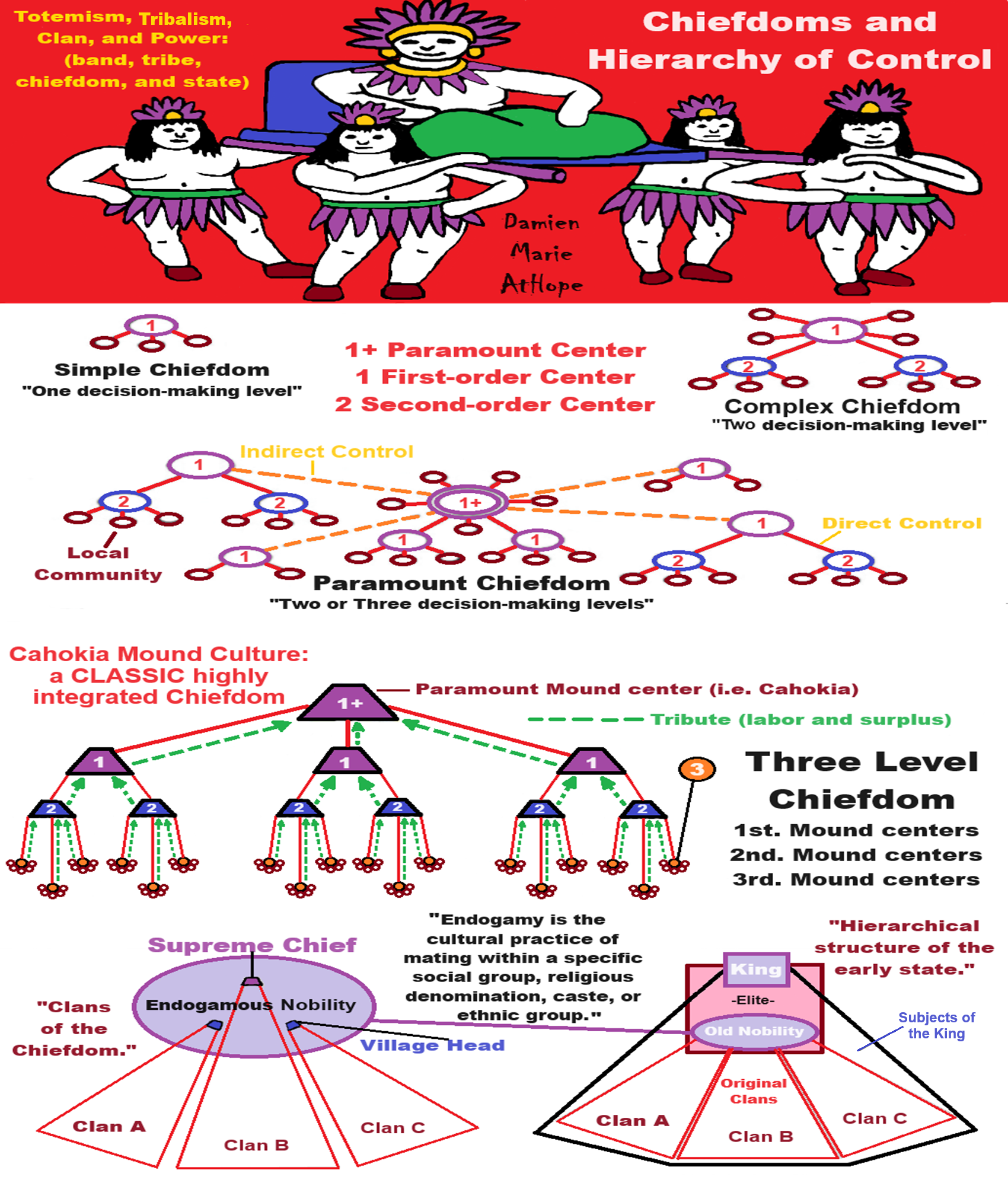

Predecessors to the Domestic Horse?
“A 2005 study analyzed the mitochondrial DNA (mtDNA) of a worldwide range of equids, from 53,000-year-old fossils to contemporary horses. Their analysis placed all equids into a single clade, or group with a single common ancestor, consisting of three genetically divergent species: Hippidion, the New World stilt-legged horse, and equus, the true horse. The true horse included prehistoric horses and the Przewalski’s horse, as well as what is now the modern domestic horse, belonged to a single Holarctic species. The true horse migrated from the Americas to Eurasia via Beringia, becoming broadly distributed from North America to central Europe, north and south of Pleistocene ice sheets. It became extinct in Beringia around 14,200 years ago, and in the rest of the Americas around 10,000 years ago. This clade survived in Eurasia, however, and it is from these horses which all domestic horses appear to have descended. These horses showed little phylogeographic structure, probably reflecting their high degree of mobility and adaptability.” ref
“Therefore, the domestic horse today is classified as Equus ferus caballus. No genetic originals of native wild horses currently exist. The Przewalski diverged from the modern horse before domestication. It has 66 chromosomes, as opposed to 64 among modern domesticated horses, and their Mitochondrial DNA (mtDNA) forms a distinct cluster. Genetic evidence suggests that modern Przewalski’s horses are descended from a distinct regional gene pool in the eastern part of the Eurasian steppes, not from the same genetic group that gave rise to modern domesticated horses. Nevertheless, evidence such as the cave paintings of Lascaux suggests that the ancient wild horses that some researchers now label the “Tarpan subtype” probably resembled Przewalski horses in their general appearance: big heads, dun coloration, thick necks, stiff upright manes, and relatively short, stout legs.” ref
Shamanic horse tradition:
“The horse occupies a very special place in shamanic rituals and mythology. The horse – primarily a carrier of souls and a burial animal – is used by the shaman in various situations as a means of helping to achieve a state of ecstasy. It is known that the eight-legged horse is a typical shamanic attribute. Eight-hoofed or headless horses are recorded in mythology and rituals of Germanic and Japanese “male unions”. The horse is a mythical image of Death, it delivers the deceased to the other world, makes the transition from one world to another.” ref
“Throughout history, horses have been credited with the gift of clairvoyance, which allows them to see the invisible danger. Therefore, they are considered especially susceptible to witch conspiracies. In the old days, witches took them at night to go to the Sabbath, they rushed on them for a long time and returned at dawn exhausted and covered with sweat and foam. To thwart “witch racing”, witchcraft and the evil eye, horse owners put trinkets and amulets installs and attached copper bells to their reins. During the witch hunt, it was believed that the devil and the witch could turn into horses.” ref
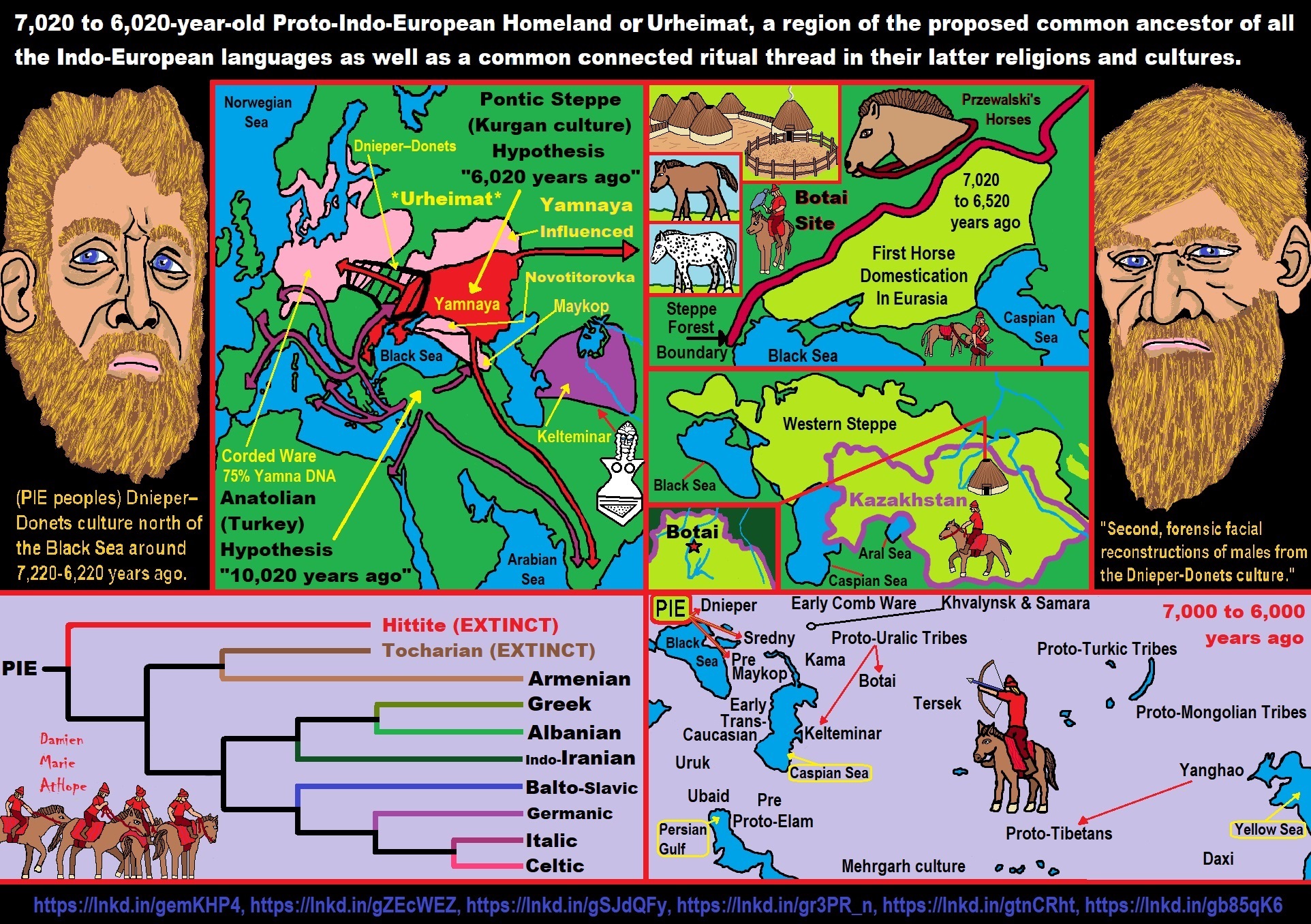
Domestication of the horse
“A number of hypotheses exist on many of the key issues regarding the domestication of the horse. Although horses appeared in Paleolithic cave art as early as 30,000 BCE, these were wild horses and were probably hunted for meat. How and when horses became domesticated is disputed. The clearest evidence of early use of the horse as a means of transport is from chariot burials dated c. 2000 BCE. However, an increasing amount of evidence supports the hypothesis that horses were domesticated in the Eurasian Steppes approximately 3500 BCE or around 5,500 years ago or so; recent discoveries in the context of the Botai culture suggest that Botai settlements in the Akmola Province of Kazakhstan are the location of the earliest domestication of the horse. Use of horses spread across Eurasia for transportation, agricultural work, and warfare.” ref
“The date of the domestication of the horse depends to some degree upon the definition of “domestication”. Some zoologists define “domestication” as human control over breeding, which can be detected in ancient skeletal samples by changes in the size and variability of ancient horse populations. Other researchers look at the broader evidence, including skeletal and dental evidence of working activity; weapons, art, and spiritual artifacts; and lifestyle patterns of human cultures. There is also evidence that horses were kept as meat animals before they were trained as working animals.” ref
“Attempts to date domestication by genetic study or analysis of physical remains rests on the assumption that there was a separation of the genotypes of domesticated and wild populations. Such a separation appears to have taken place, but dates based on such methods can only produce an estimate of the latest possible date for domestication without excluding the possibility of an unknown period of earlier gene flow between wild and domestic populations (which will occur naturally as long as the domesticated population is kept within the habitat of the wild population). Further, all modern horse populations retain the ability to revert to a feral state, and all feral horses are of domestic types; that is, they descend from ancestors that escaped from captivity.” ref
“Whether one adopts the narrower zoological definition of domestication or the broader cultural definition that rests on an array of zoological and archaeological evidence affects the time frame chosen for the domestication of the horse. The date of 4000 BCE is based on evidence that includes the appearance of dental pathologies associated with bitting, changes in butchering practices, changes in human economies and settlement patterns, the depiction of horses as symbols of power in artifacts, and the appearance of horse bones in human graves. On the other hand, measurable changes in size and increases in variability associated with domestication occurred later, about 2500–2000 BCE, as seen in horse remains found at the site of Csepel-Haros in Hungary, a settlement of the Bell Beaker culture.” ref
“Use of horses spread across Eurasia for transportation, agricultural work, and warfare. Horses and mules in agriculture used a breastplate type harness or a yoke more suitable for oxen, which was not as efficient at utilizing the full strength of the animals as the later-invented padded horse collar that arose several millennia later.” ref
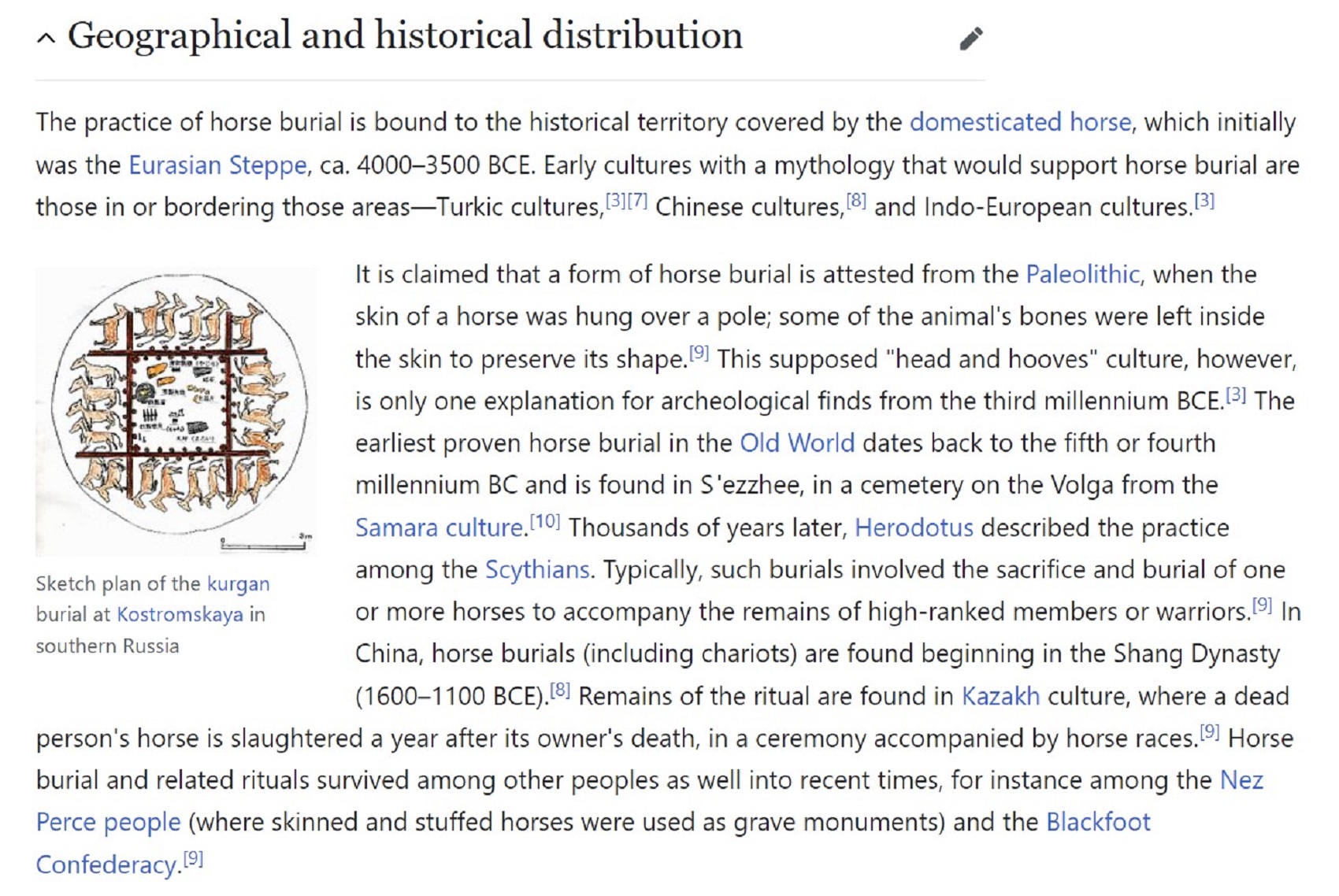
I think it possible that Proto-Indo-Europian language starts 7,022-6,022 and the time of kings could start around, an overlapping time, or with/reason-behind Horse burials that start as 6,022-5,522 years ago.
“A monarchy is a form of government in which a person, the monarch, is head of state for life or until abdication. The political legitimacy and authority of the monarch may vary from restricted and largely symbolic (constitutional monarchy), to fully autocratic (absolute monarchy), and can expand across the domains of the executive, legislative, and judicial. Monarchs can carry various titles such as emperor, empress, king, queen, raja, khan, tsar, sultan, shah, or pharaoh. The succession of monarchs is in most cases hereditary, often building dynastic periods. However, elective and self-proclaimed monarchies are possible. Aristocrats, though not inherent to monarchies, often serve as the pool of persons to draw the monarch from and fill the constituting institutions (e.g. diet and court), giving many monarchies oligarchic elements.” ref
“Most historians have suggested that Sumer was first permanently settled between 5500 and 4000 BCE so 7,533-4,022 years ago by a West Asian people who spoke the Sumerian language (pointing to the names of cities, rivers, basic occupations, etc., as evidence), thought to be a non-Semitic and non-Indo-European agglutinative language isolate. In contrast to its Semitic neighbors, it was not an inflected language. However, Sumerian civilization took form in the Uruk period (4th millennium BCE 6,022-5,022 years ago), continuing into the Jemdet Nasr and Early Dynastic periods.” ref
“The word “monarch” (Late Latin: monarchia) comes from the Ancient Greek word μονάρχης (monárkhēs), derived from μόνος (mónos, “one, single”) and ἄρχω (árkhō, “to rule”): compare ἄρχων (árkhōn, “ruler, chief”). It referred to a single at least nominally absolute ruler. In current usage the word monarchy usually refers to a traditional system of hereditary rule, as elective monarchies are quite rare.” ref

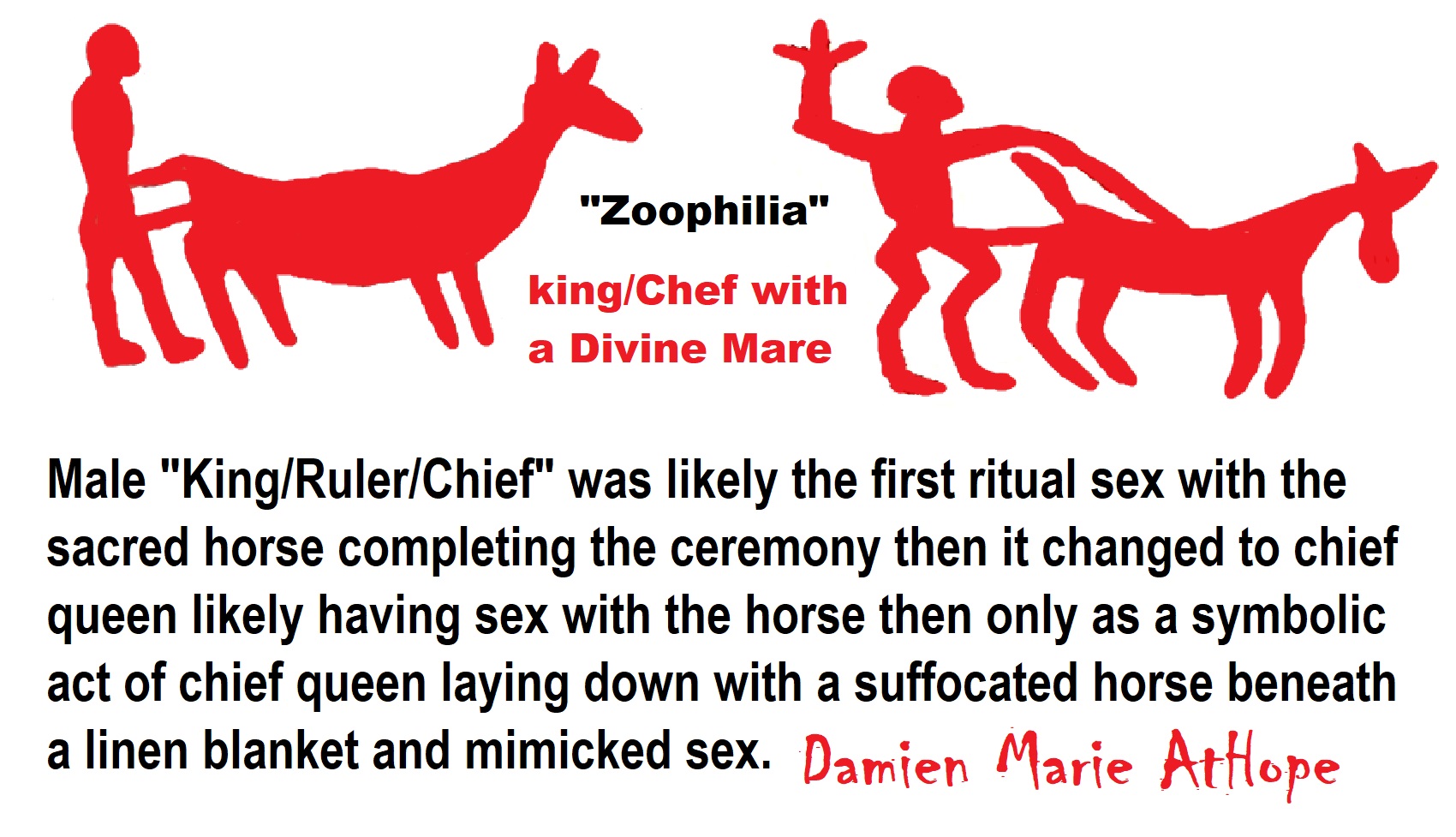
Male “King/Ruler/Chief” was likely the first ritual sex with the sacred horse completing the ceremony then it changed to chief queen likely having sex with the horse then only as a symbolic act of chief queen laying down with a suffocated horse beneath a linen blanket and mimicked sex.
“Man/god with horse-sized penis participating in royal/fertility ritual? Indo-European horse-sacrifice is one of the world’s most ancient and widespread traditions. The great Indo-European tradition of horse sacrifice in a 4000-year historic context, from the Sintashta culture in Russia in the east to historical Scandinavia in the west. In a brief history of Indo-European studies on the great horse sacrifices, we will present Indian, Irish, Greek, and Roman sacrificial traditions and
discuss how similarities across time and space have, for over a century, led different scholars to retrace these traditions to a common ‘Proto-Indo-European’ origin.” ref
Mythology: Horse worship and White horse (mythology)
“The reconstructed myth involves the coupling of a king with a divine mare which produced the divine twins. A related myth is that of a hero magically twinned with a horse foaled at the time of his birth (for example Cuchulainn, Pryderi), suggested to be fundamentally the same myth as that of the divine twin horsemen by the mytheme of a “mare-suckled” hero from Greek and medieval Serbian evidence, or mythical horses with human traits (Xanthos), suggesting totemic identity of the hero or king with the horse.” ref
Vedic (Indian): Ashvamedha
“Ashvamedha was a political ritual that was focused on the king’s right to rule. The horse had to be a stallion and it would be permitted to wander for a year, accompanied by people of the king. If the horse roamed off into lands of an enemy then that territory would be taken by the king, and if the horse’s attendants were killed in a fight by a challenger then the king would lose the right to rule. But if the horse stayed alive for a year then it was taken back to the king’s court where it was bathed, consecrated with butter, decorated with golden ornaments, and then sacrificed. After the completion of this ritual, the king would be considered as the undisputed ruler of the land which was covered by the horse.” ref
- “the sacrifice is connected with the elevation or inauguration of a member of the Kshatriya warrior caste
- the ceremony took place in spring or early summer
- the horse sacrificed was a stallion which won a race at the right side of the chariot
- the horse sacrificed was white-colored with dark circular spots, or with a dark front part, or with a tuft of dark blue hair
- it was bathed in water, in which mustard and sesame are mixed
- it was suffocated alongside a hornless ram and a he-goat, among other animals
- the chief queen lay down with the suffocated horse beneath a linen blanket and mimicked sexual intercourse with it, while the other queens perambulated the scene, slapping their thighs and fanning themselves
- the stallion was dissected along the “knife-paths” — with three knives made from gold, copper, and iron — and its portions awarded to various deities, symbolically invoking sky, atmosphere, and earth, while other priests started reciting the verses of Vedas, seeking healing and rejuvenation for the horse.” ref


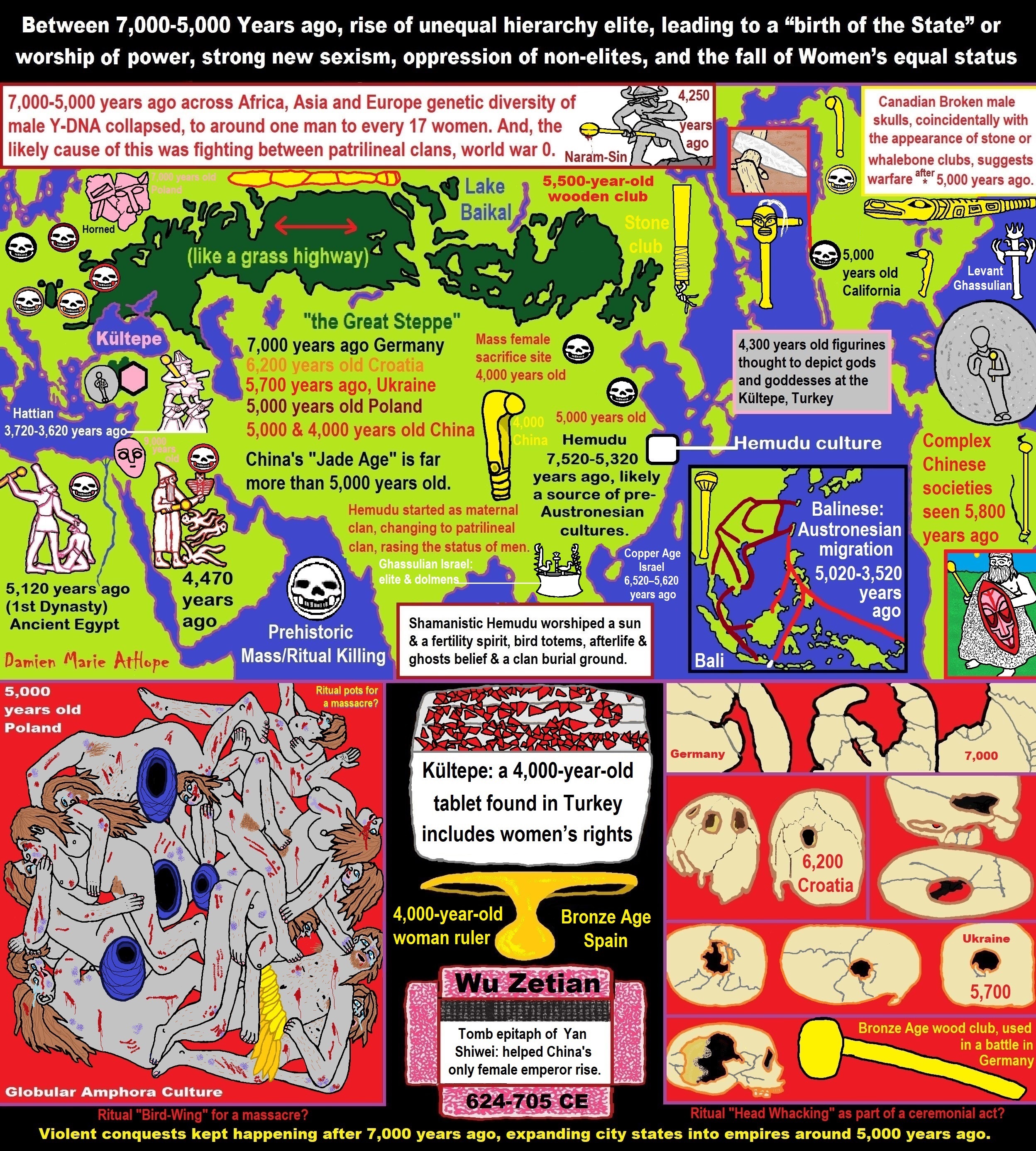
ref, ref, ref, ref, ref, ref, ref, ref, ref, ref, ref, ref, ref, ref, ref, ref, ref, ref, ref, ref, ref, ref, ref, ref, ref, ref, ref, ref, ref, ref, ref, ref, ref, ref, ref, ref, ref, ref, ref, ref, ref, ref, ref, ref, ref, ref, ref, ref, ref, ref, ref, ref, ref, ref, ref, ref, ref, ref, ref, ref, ref, ref, ref, ref, ref, ref, ref, ref, ref, ref, ref, ref, ref, ref, ref, ref, ref, ref, ref, ref, ref, ref, ref, ref, ref, ref, ref, ref, ref, ref
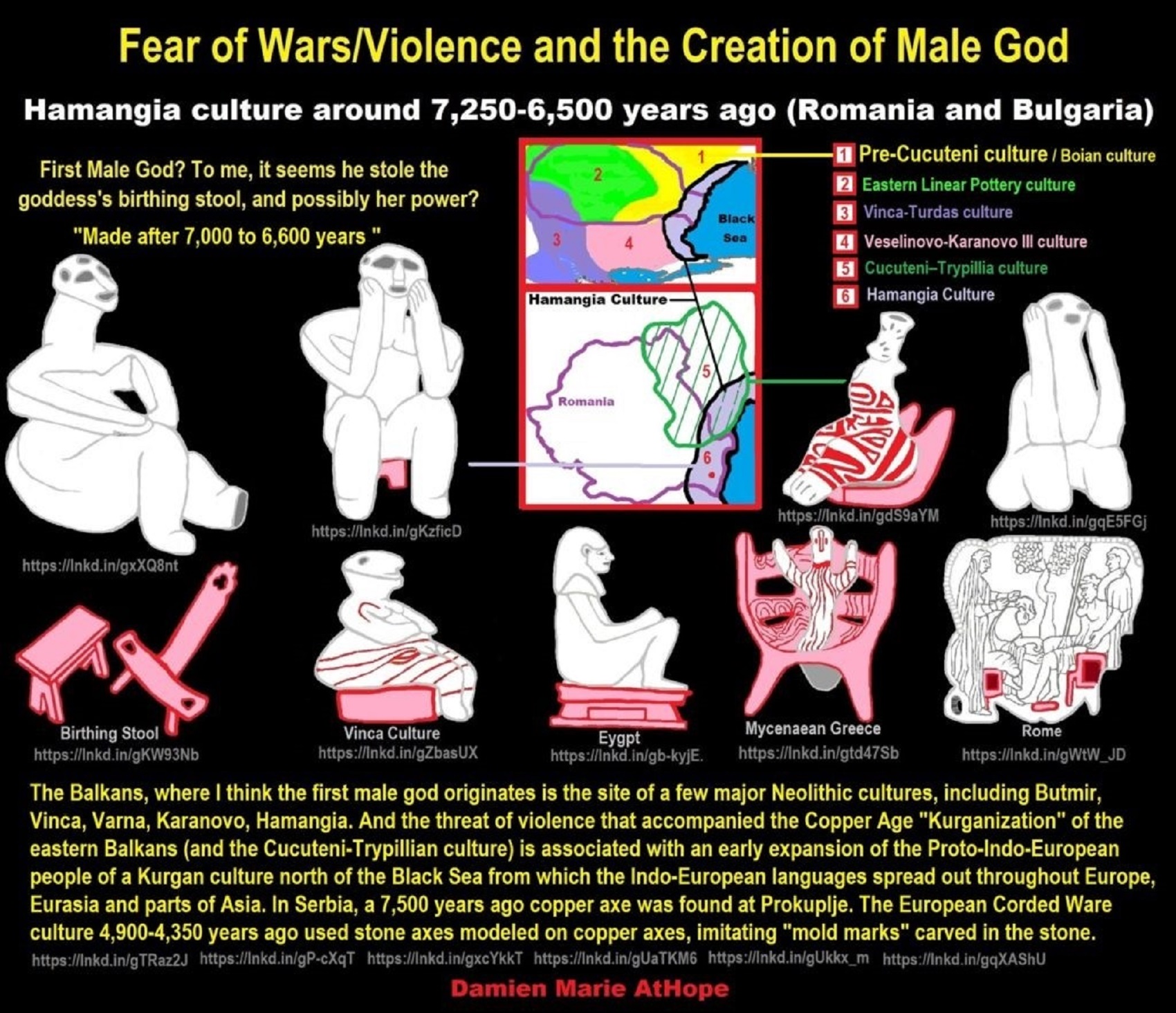

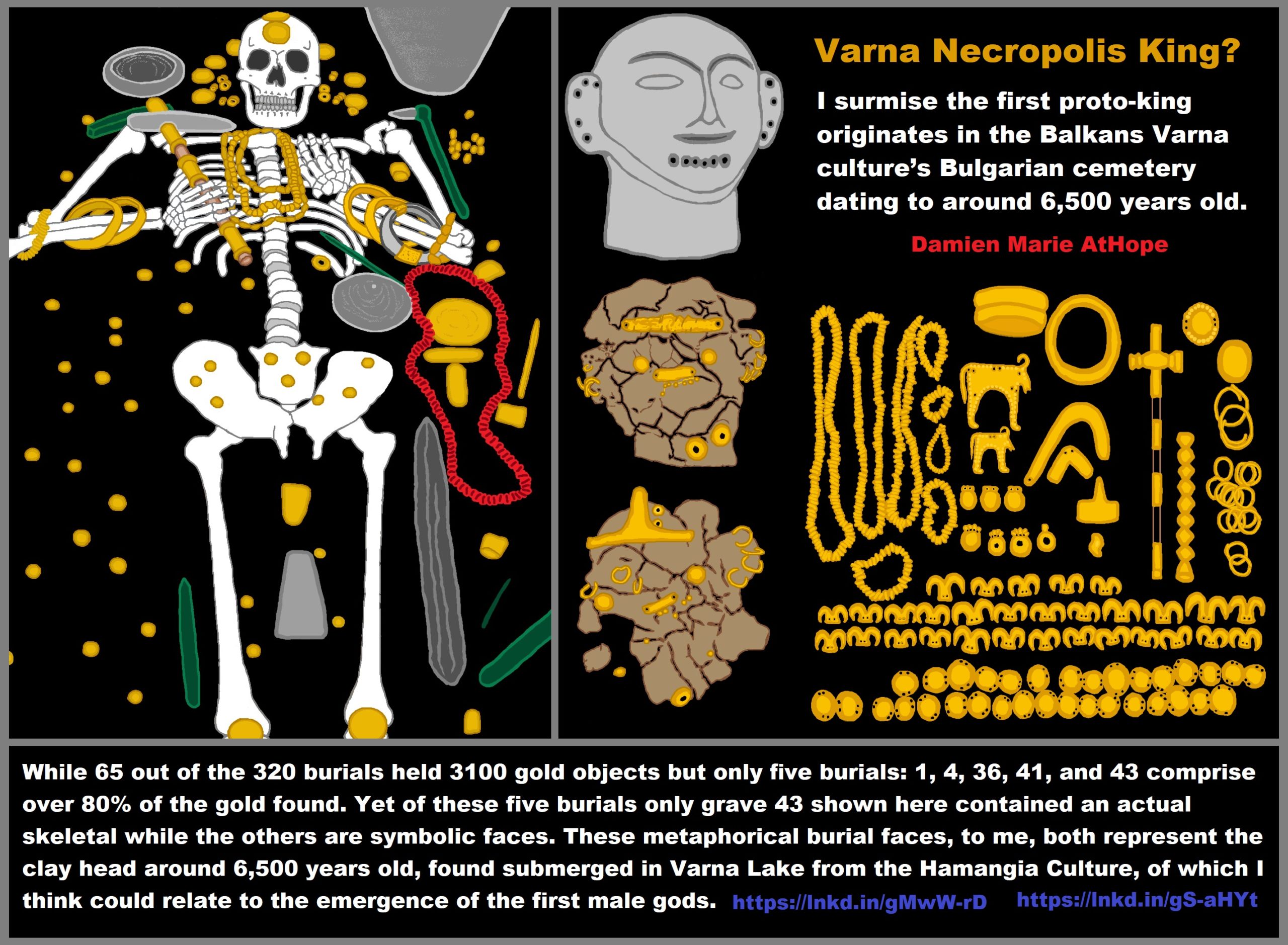
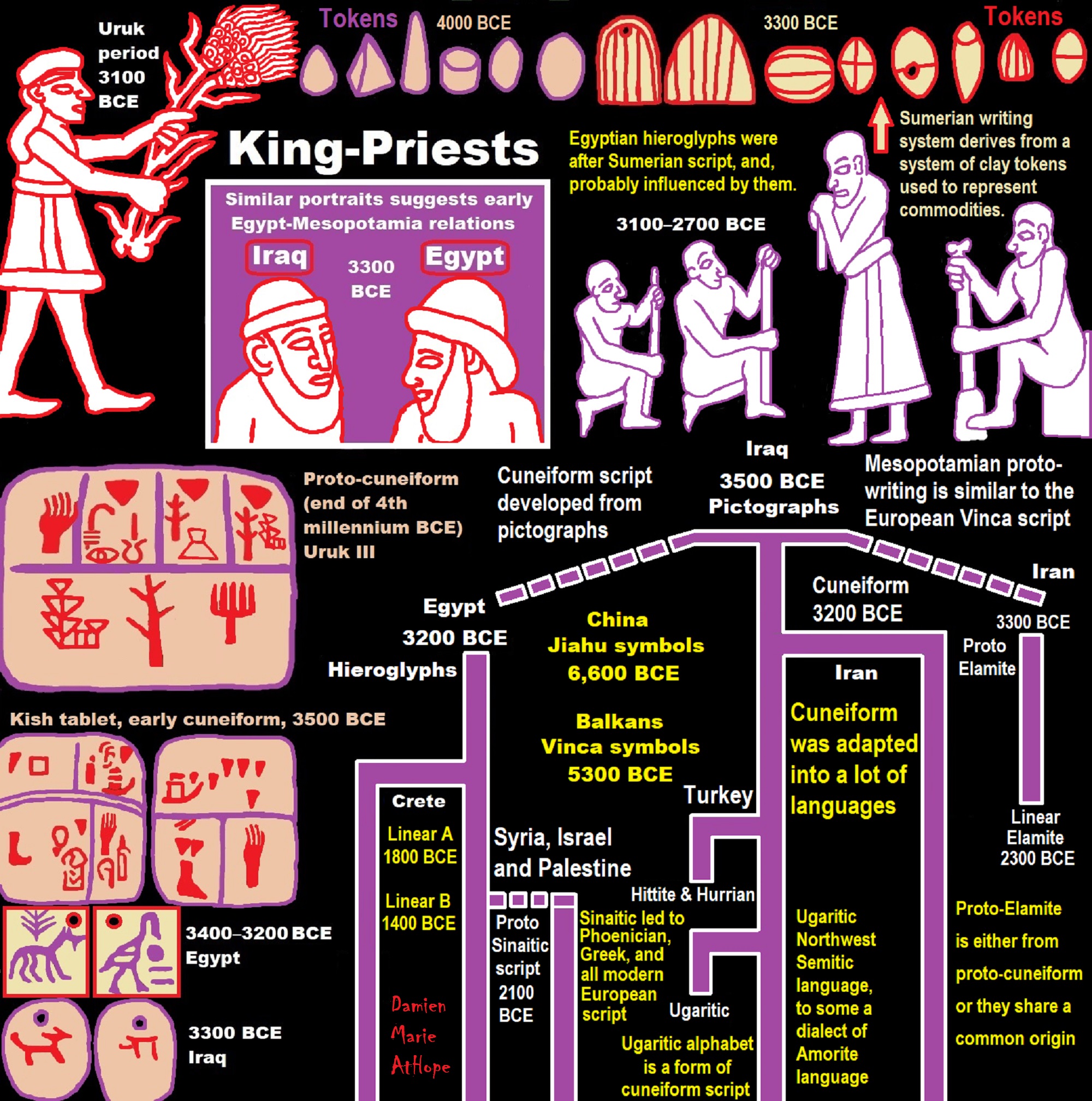
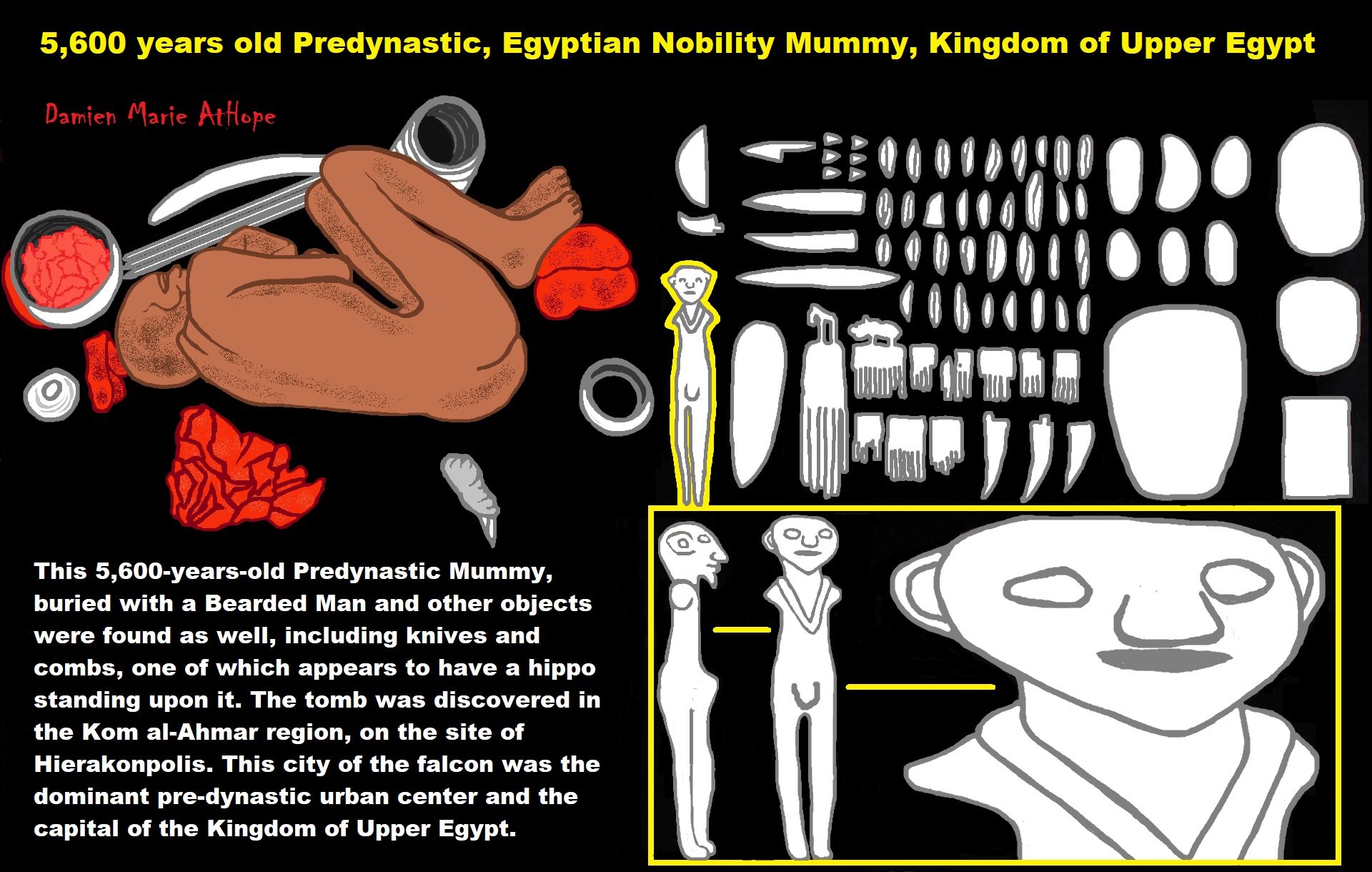

Seated Woman of Çatalhöyük
“The Seated Woman of Çatalhöyük (also Çatal Höyük) is a baked-clay, nude female form, seated between feline-headed arm-rests. It is generally thought to depict a corpulent and fertile Mother goddess in the process of giving birth while seated on her throne, which has two hand rests in the form of feline (lioness, leopard, or panther) heads in a Mistress of Animals motif. The statuette, one of several iconographically similar ones found at the site, is associated to other corpulent prehistoric goddess figures, of which the most famous is the Venus of Willendorf. It is a neolithic sculpture shaped by an unknown artist, and was completed in approximately 6000 BCE.” ref
Kubaba
“Kubaba is the only queen on the Sumerian King List, which states she reigned for 100 years – roughly in the Early Dynastic III period (ca. 2500–2330 BCE) of Sumerian history. A connection between her and a goddess known from Hurro–Hittite and later Luwian sources cannot be established on the account of spatial and temporal differences. Kubaba is one of very few women to have ever ruled in their own right in Mesopotamian history. Most versions of the king list place her alone in her own dynasty, the 3rd Dynasty of Kish, following the defeat of Sharrumiter of Mari, but other versions combine her with the 4th dynasty, that followed the primacy of the king of Akshak. Before becoming monarch, the king list says she was an alewife, brewess or brewster, terms for a woman who brewed alcohol.” ref
“Kubaba was a Syrian goddess associated particularly closely with Alalakh and Carchemish. She was adopted into the Hurrian and Hittite pantheons as well. After the fall of the Hittite empire, she continued to be venerated by Luwians. A connection between her and the similarly named legendary Sumerian queen Kubaba of Kish, while commonly proposed, cannot be established due to spatial and temporal differences. Emmanuel Laroche proposed in 1960 that Kubaba and Cybele were one and the same. This view is supported by Mark Munn, who argues that the Phrygian name Kybele developed from Lydian adjective kuvavli, first changed into kubabli and then simplified into kuballi, and finally kubelli. However, such an adjective is a purely speculative construction.” ref
Cybele
“Cybele (Phrygian: “Kubileya/Kubeleya Mother”, perhaps “Mountain Mother”) is an Anatolian mother goddess; she may have a possible forerunner in the earliest neolithic at Çatalhöyük, where statues of plump women, sometimes sitting, have been found in excavations. Phrygia‘s only known goddess, she was probably its national deity. Greek colonists in Asia Minor adopted and adapted her Phrygian cult and spread it to mainland Greece and to the more distant western Greek colonies around the 6th century BCE. In Greece, Cybele met with a mixed reception. She became partially assimilated to aspects of the Earth-goddess Gaia, of her possibly Minoan equivalent Rhea, and of the harvest–mother goddess Demeter. Some city-states, notably Athens, evoked her as a protector, but her most celebrated Greek rites and processions show her as an essentially foreign, exotic mystery-goddess who arrives in a lion-drawn chariot to the accompaniment of wild music, wine, and a disorderly, ecstatic following.” ref
“Uniquely in Greek religion, she had a eunuch mendicant priesthood. Many of her Greek cults included rites to a divine Phrygian castrate shepherd-consort Attis, who was probably a Greek invention. In Greece, Cybele became associated with mountains, town and city walls, fertile nature, and wild animals, especially lions. In Rome, Cybele became known as Magna Mater (“Great Mother”). The Roman State adopted and developed a particular form of her cult after the Sibylline oracle in 205 BCE recommended her conscription as a key religious ally in Rome’s second war against Carthage (218 to 201 BCE). Roman mythographers reinvented her as a Trojan goddess, and thus an ancestral goddess of the Roman people by way of the Trojan prince Aeneas. As Rome eventually established hegemony over the Mediterranean world, Romanized forms of Cybele’s cults spread throughout Rome’s empire. Greek and Roman writers debated and disputed the meaning and morality of her cults and priesthoods, which remain controversial subjects in modern scholarship.” ref
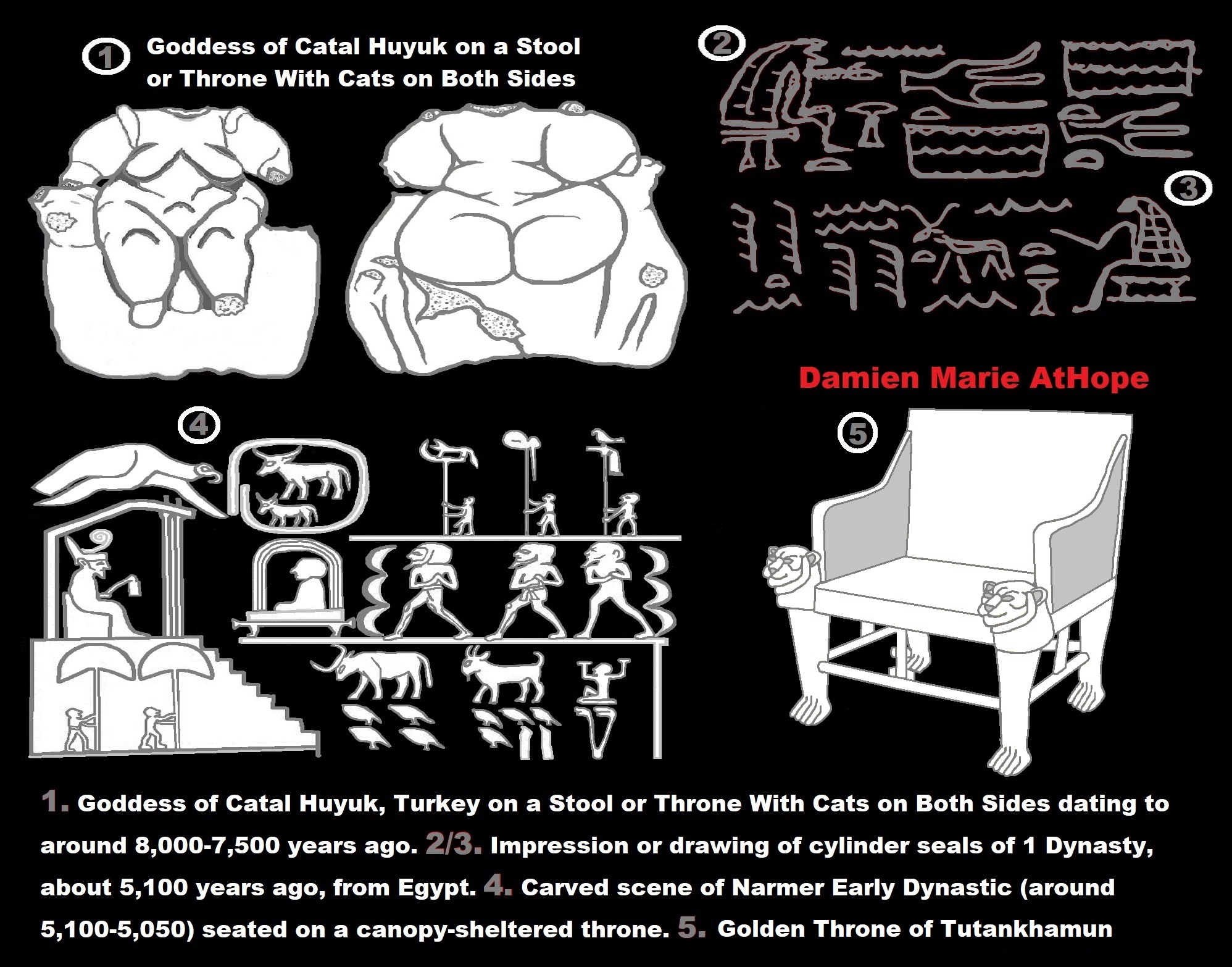
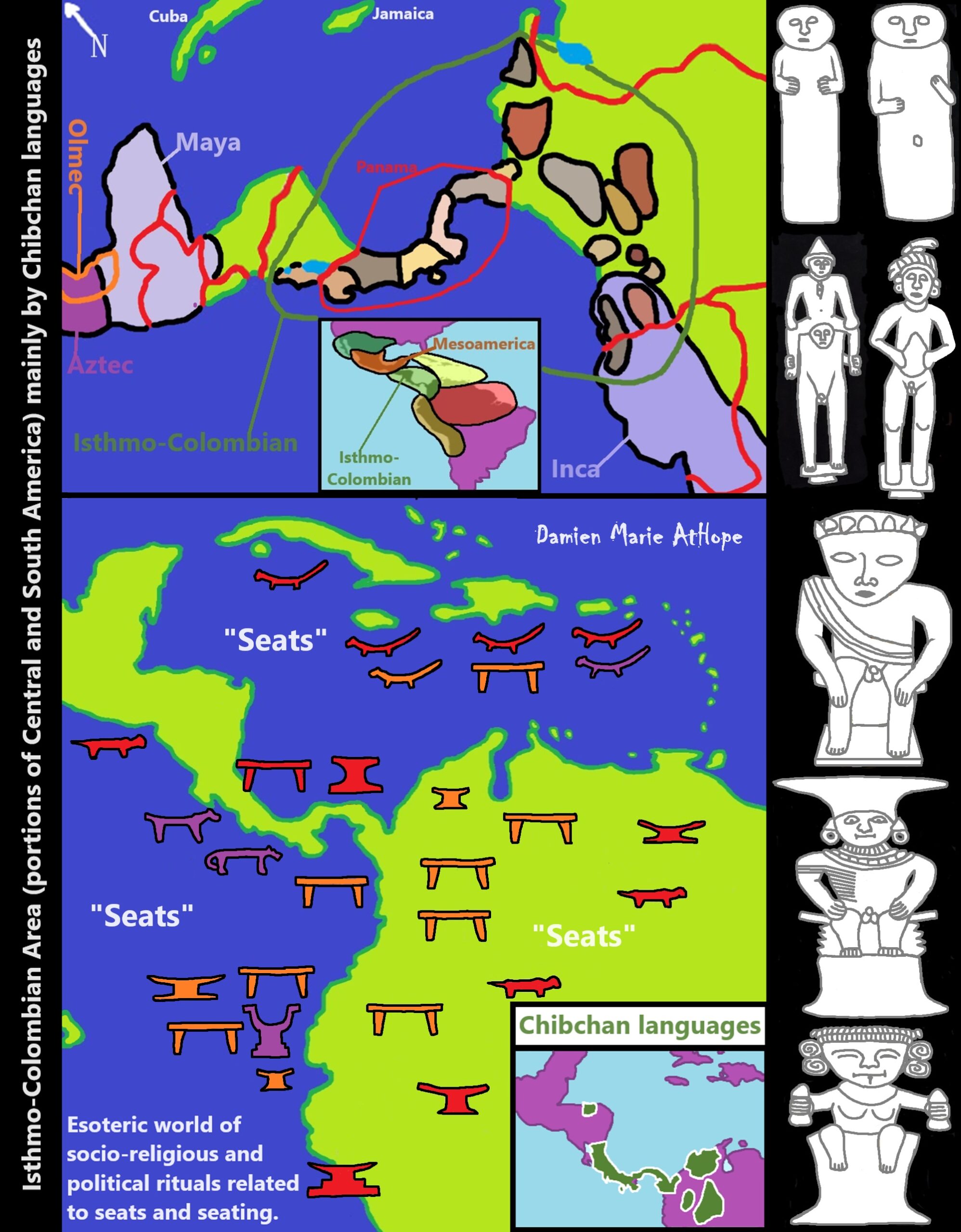
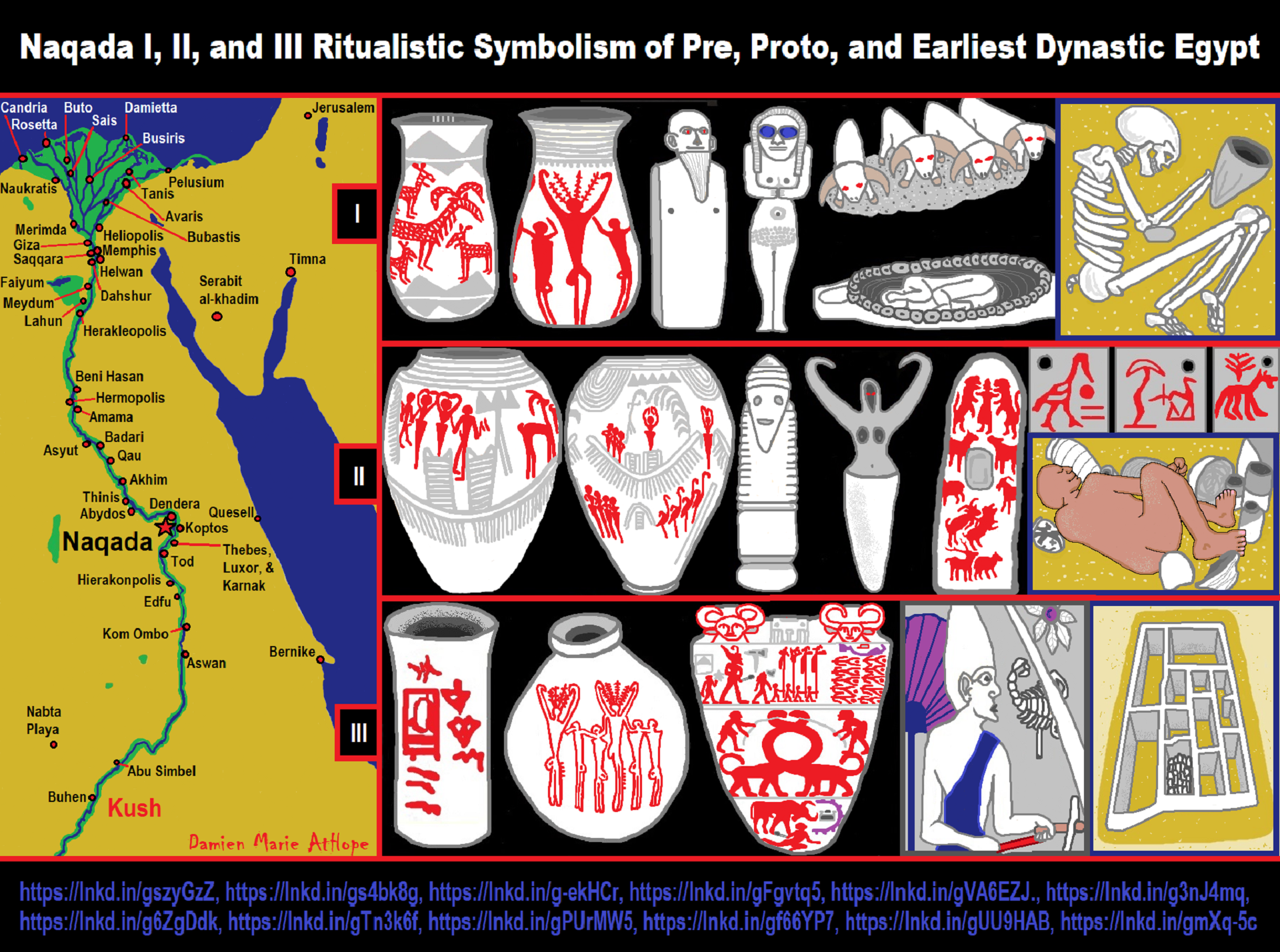
ref, ref, ref, ref, ref, ref, ref, ref, ref
“Naqada stands near the site of a prehistoric Egyptian necropolis: The town was the center of the cult of Set and large tombs were built there c. 3500 BCE. The large quantity of remains from Naqada have enabled the dating of the entire archeological period throughout Egypt and environs, hence the town name Naqada is used for the pre-dynastic Naqada culture c. 4400–3000 BCE. Other Naqada culture archeological sites include el Badari, the Gerzeh culture, and Nekhen.” ref
“The Naqada culture is an archaeological culture of Chalcolithic Predynastic Egypt (c. 4000–3000 BCE), named for the town of Naqada, Qena Governorate. A 2013 Oxford University dating study of the Predynastic period suggests a beginning date sometime between 3,800 and 3,700 BCE. The final phase of the Naqada culture is Naqada III, which is coterminous with the Protodynastic Period (Early Bronze Age c. 3200–3000 BCE) in ancient Egypt.” ref
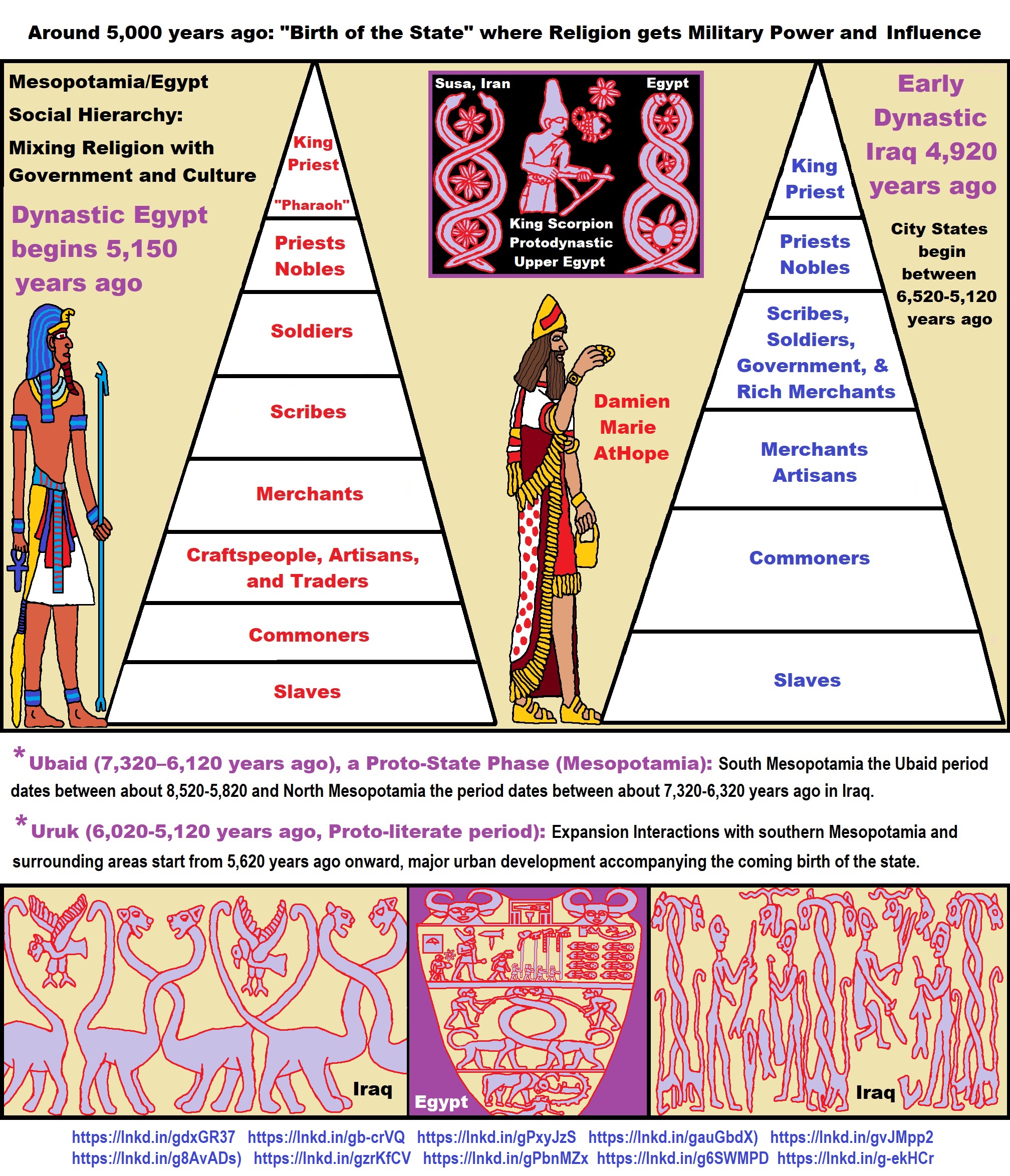
Ancient Egypt Monarch 3100 BCE or 5,122 years ago
“Monarchies are thought to be preceded by the similar form of prehistoric societal hierarchy known as chiefdom or tribal kingship. Chiefdoms are identified as having formed monarchic states, as in civilizations such as Mesopotamia, Ancient Egypt, and the Indus Valley Civilization. In some parts of the world, chiefdoms became monarchies. Some of the oldest recorded and evidenced monarchies were Narmer, Pharaoh of Ancient Egypt c. 3100 BCE, and Enmebaragesi, a Sumerian King of Kish c. 2600 BCE.” ref
“From earliest records, monarchs could be directly hereditary, while others were elected from among eligible members. With the Egyptian, Mesopotamian, Sudanic, reconstructed Proto-Indo-European religion, and others, the monarch held sacral functions directly connected to sacrifice and was sometimes identified with having divine ancestry, possibly establishing a notion of the divine right of kings.” ref
“Polybius identified monarchy as one of three “benign” basic forms of government (monarchy, aristocracy, and democracy), opposed to the three “malignant” basic forms of government (tyranny, oligarchy, and ochlocracy). The monarch in classical antiquity is often identified as “king” or “ruler” (translating archon, basileus, rex, tyrannos, etc.) or as “queen” (basilinna). Polybius originally understood monarchy as a component of republics, but since antiquity monarchy has contrasted with forms of republic, where executive power is wielded by free citizens and their assemblies. The 4th-century BCE Hindu text Arthasastra laid out the ethics of monarchism. In antiquity, some monarchies were abolished in favor of such assemblies in Rome (Roman Republic, 509 BCE), and Athens (Athenian democracy, 500 BCE).” ref
“By the 17th century, monarchy was challenged by evolving parliamentarism e.g. through regional assemblies (such as the Icelandic Commonwealth, the Swiss Landsgemeinde and later Tagsatzung, and the High Medieval communal movement linked to the rise of medieval town privileges) and by modern anti-monarchism e.g. of the temporary overthrow of the English monarchy by the Parliament of England in 1649, the American Revolution of 1776 and the French Revolution of 1789. One of many opponents of that trend was Elizabeth Dawbarn, whose anonymous Dialogue between Clara Neville and Louisa Mills, on Loyalty (1794) features “silly Louisa, who admires liberty, Tom Paine and the US, [who is] lectured by Clara on God’s approval of monarchy” and on the influence, women can exert on men.” ref
“Since then advocacy of the abolition of a monarchy or respectively of republics has been called republicanism, while the advocacy of monarchies is called monarchism. As such republics have become the opposing and alternative form of government to monarchy, despite some having seen infringements through lifelong or even hereditary heads of state.” ref
The Early Dynastic Period for Mesopotamia is around 2900–2350 BCE or 4,922-4,372 years ago
“The Early Dynastic period (abbreviated ED period or ED) is an archaeological culture in Mesopotamia (modern-day Iraq) that is generally dated to c. 2900–2350 BCE and was preceded by the Uruk and Jemdet Nasr periods. It saw the development of writing and the formation of the first cities and states. The ED itself was characterized by the existence of multiple city-states: small states with a relatively simple structure that developed and solidified over time. This development ultimately led to the unification of much of Mesopotamia under the rule of Sargon, the first monarch of the Akkadian Empire. Despite this political fragmentation, the ED city-states shared a relatively homogeneous material culture. Sumerian cities such as Uruk, Ur, Lagash, Umma, and Nippur located in Lower Mesopotamia were very powerful and influential. To the north and west stretched states centered on cities such as Kish, Mari, Nagar, and Ebla.” ref
“The study of Central and Lower Mesopotamia has long been given priority over neighboring regions. Archaeological sites in Central and Lower Mesopotamia—notably Girsu but also Eshnunna, Khafajah, Ur, and many others—have been excavated since the 19th century. These excavations have yielded cuneiform texts and many other important artifacts. As a result, this area was better known than neighboring regions, but the excavation and publication of the archives of Ebla have changed this perspective by shedding more light on surrounding areas, such as Upper Mesopotamia, western Syria, and southwestern Iran. These new findings revealed that Lower Mesopotamia shared many socio-cultural developments with neighboring areas and that the entirety of the ancient Near East participated in an exchange network in which material goods and ideas were being circulated.” ref
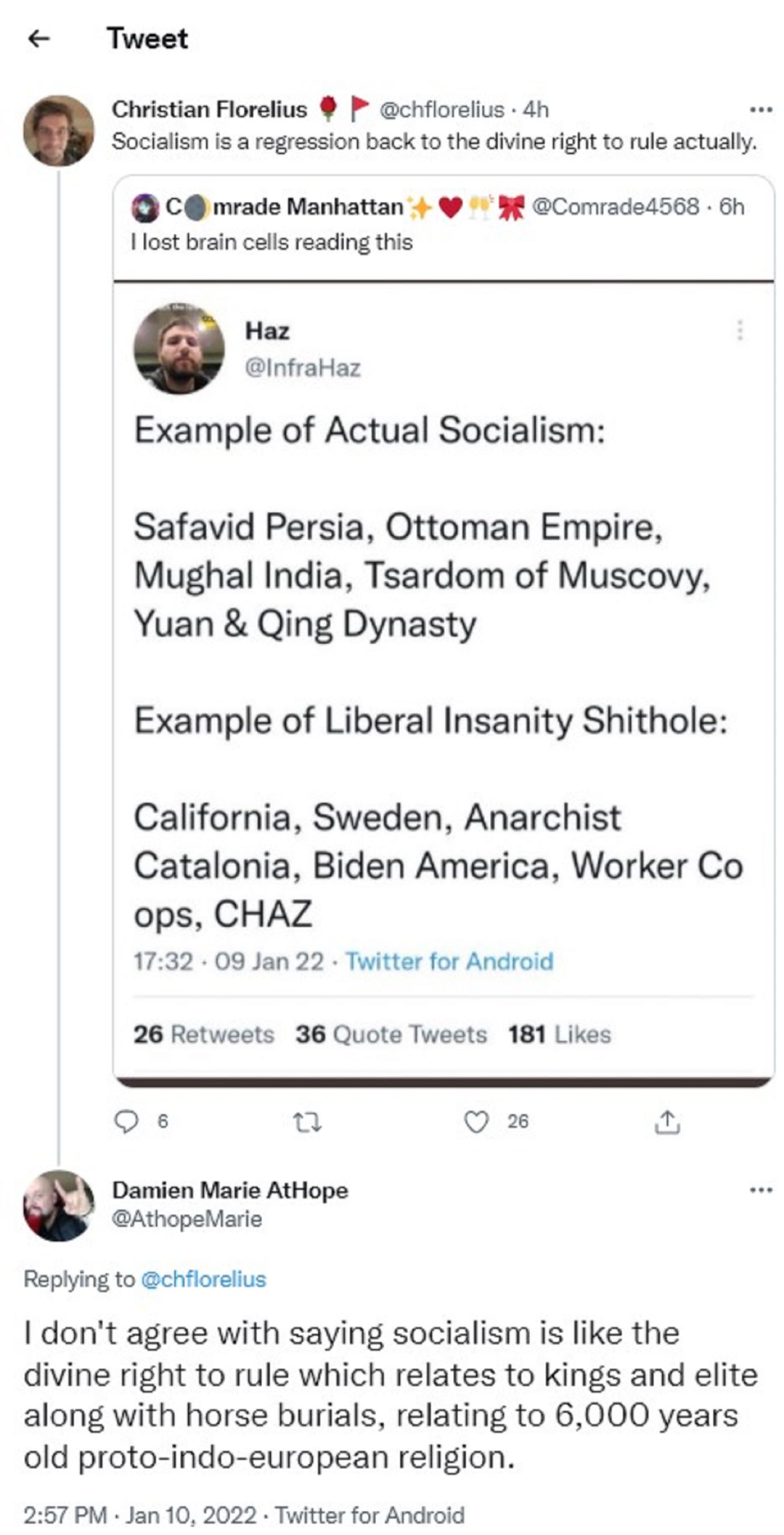
I don’t agree with saying socialism is like the divine right to rule which relates to kings and elite along with horse burials, relating to 6,000 years old Proto-Indo-European religion.
“King is the title given to a male monarch in a variety of contexts. The female equivalent is queen, which title is also given to the consort of a king. The term king may also refer to a king consort, a title that is sometimes given to the husband of a ruling queen, but the title of prince consort is more common. The English word is of Germanic origin, and historically refers to Germanic kingship, in the pre-Christian period a type of tribal kingship. The monarchies of Europe in the Christian Middle Ages derived their claim from Christianisation and the divine right of kings, partly influenced by the notion of sacral kingship inherited from Germanic antiquity.” ref
- “In the context of prehistory, antiquity, and contemporary indigenous peoples, the title may refer to tribal kingship. Germanic kingship is cognate with Indo-European traditions of tribal rulership (c.f. Indic rājan, Gothic reiks, and Old Irish rí, etc.).
- In the context of classical antiquity, king may translate in Latin as rex and in Greek as archon or basileus.
- In classical European feudalism, the title of king as the ruler of a kingdom is understood to be the highest rank in the feudal order, potentially subject, at least nominally, only to an emperor (harking back to the client kings of the Roman Republic and Roman Empire).
- In a modern context, the title may refer to the ruler of one of a number of modern monarchies (either absolute or constitutional). The title of king is used alongside other titles for monarchs: in the West, emperor, grand prince, prince, archduke, duke or grand duke, and in the Islamic world, malik, sultan, emir or hakim, etc.
- The city-states of the Aztec Empire had a Tlatoani, which were kings of pre-Hispanic Mesoamerica. The Huey Tlatoani was the emperor of the Aztecs.” ref
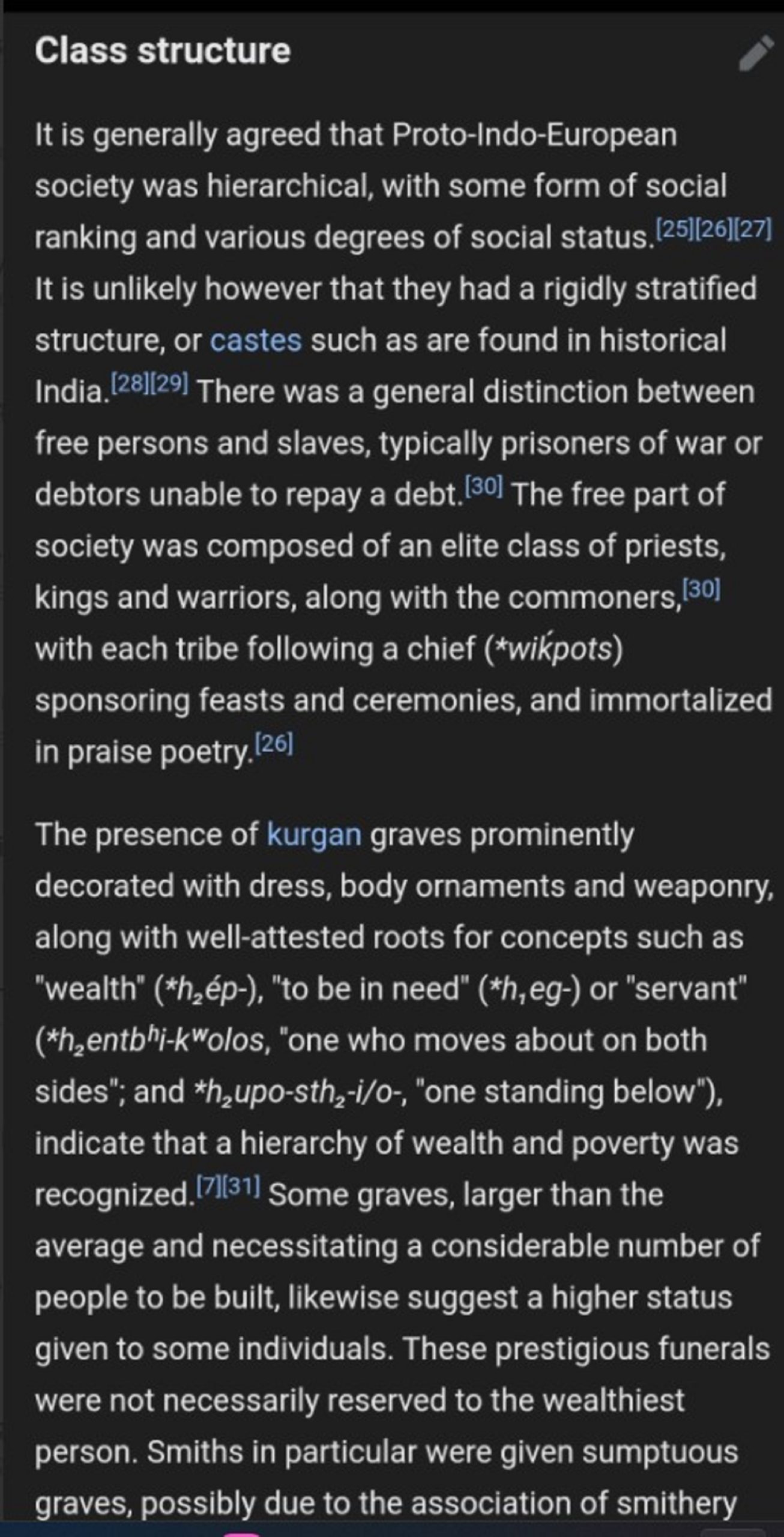
Proto-Indo-European class structure ref
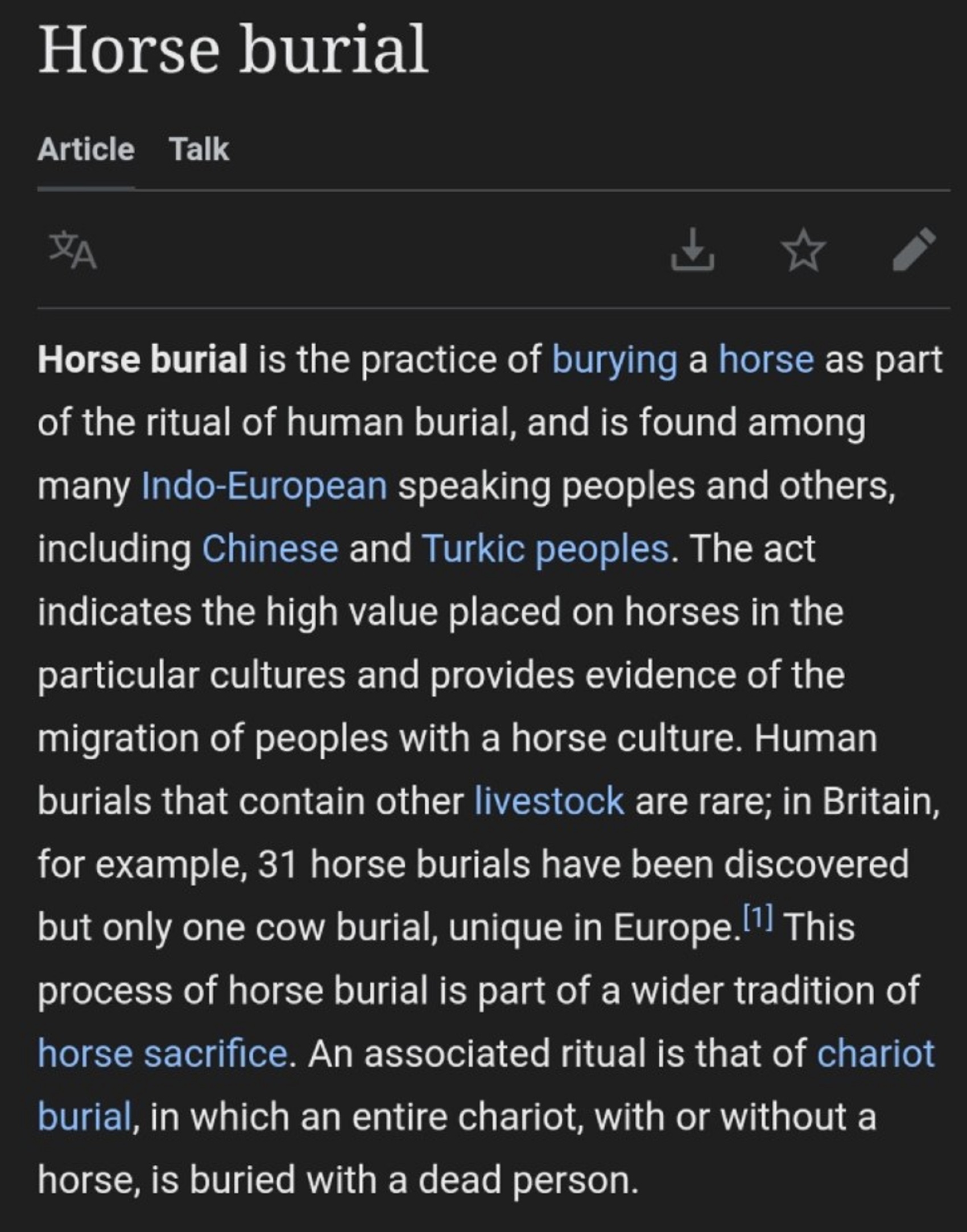
Horse burial and kingship relate as well as the divine right to rule theme. ref
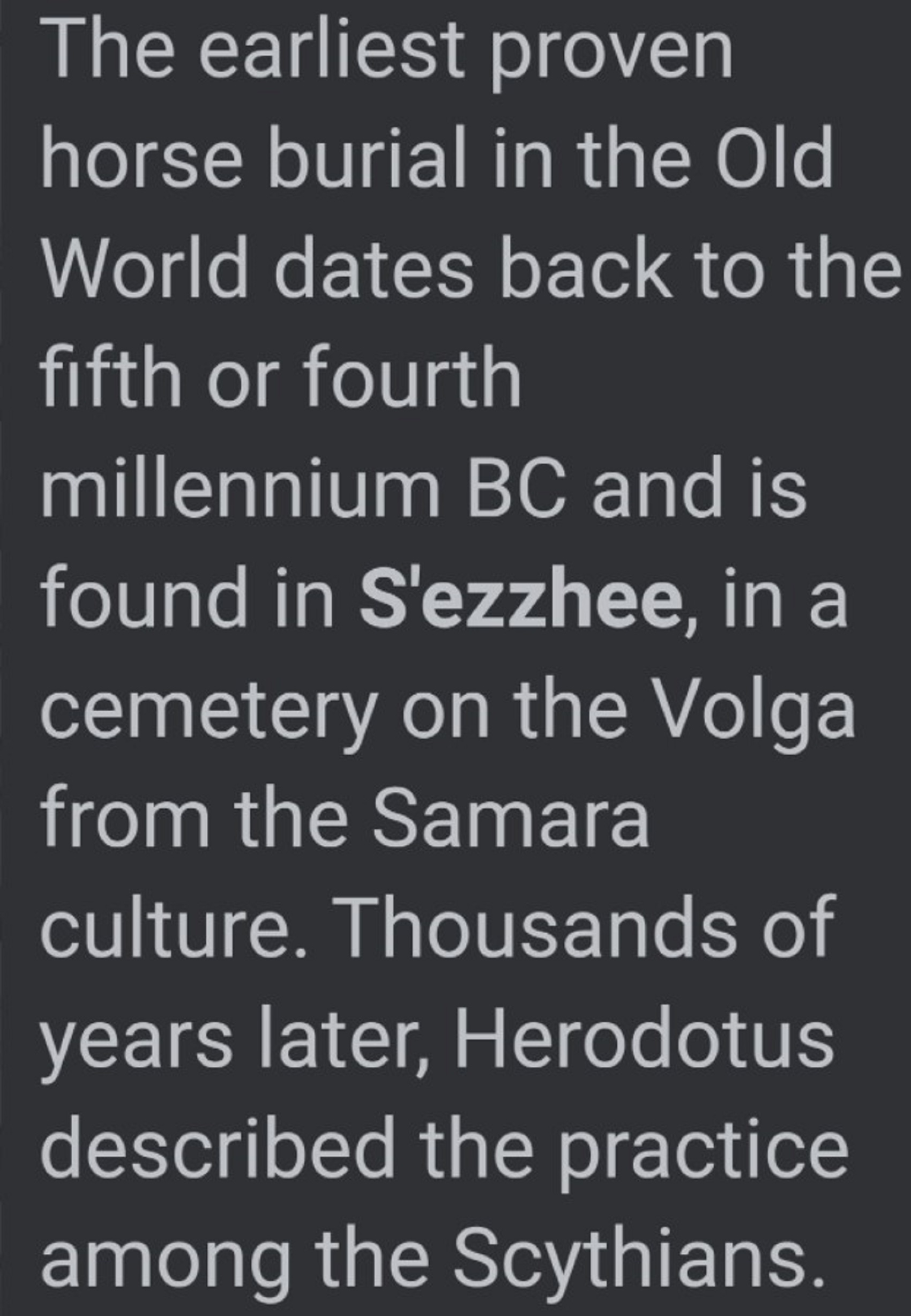
Horse burial: ref

Horse worship?
“Horse worship is a spiritual practice with archaeological evidence of its existence during the Iron Age and, in some places, as far back as the Bronze Age. The horse was seen as divine, as a sacred animal associated with a particular deity, or as a totem animal impersonating the king or warrior. Horse cults and horse sacrifice were originally a feature of Eurasian nomad cultures. While horse worship has been almost exclusively associated with Indo-European culture, by the Early Middle Ages it was also adopted by Turkic peoples. Horse worship still exists today in various regions of South Asia.” ref
Bronze Age
“The history of horse domestication is still a debated topic. The most widely accepted theory is that the horse was domesticated somewhere in the western Eurasian steppes. Various archaeological cultures including the Botai in Kazakhstan and Dereivka in Ukraine are proposed as possible candidates. However, widespread use of horses on the steppes is only noted from the late part of the third millennium BCE.” ref
Germanic
“Tacitus (Germania) mentions the use of white horses for divination by the Germanic tribes:
But to this nation it is peculiar, to learn presages and admonitions divine from horses also. These are nourished by the State in the same sacred woods and groves, all milk-white and employed in no earthly labor. These yoked in the holy chariot, are accompanied by the Priest and the King, or the Chief of the Community, who both carefully observed his actions and neighing. Nor in any sort of augury is more faith and assurance reposed, not by the populace only, but even by the nobles, even by the Priests. These account themselves the ministers of the Gods, and the horses privy to his will.” ref
India
“In India, horse worship in the form of worship of Hayagriva dates back to 2000 BCE, when the Indo-Aryan people started to migrate into the Indus valley. The Indo-Aryans worshipped the horse for its speed, strength, and intelligence. To this day, the worship of Hayagriva exists among the followers of Hinduism.” ref
Iron Age
“The Uffington White Horse in the United Kingdom, is dated to the Iron Age (800 BCE–CE 100) or the late Bronze Age (1000–700 BCE) in Britain; deposits of fine silt removed from the horse’s ‘beak’ were scientifically dated to the Late Bronze Age. The French archaeologist Patrice Méniel has demonstrated, based on examination of animal bones from many archaeological sites, a lack of hippophagy (horse eating) in ritual centers and burial sites in Gaul, although there is some evidence for hippophagy from earlier settlement sites in the same region. Horse oracles are also attested in later times (see Arkona below).” ref
“There is some reason to believe that Poseidon, like other water gods, was originally conceived under the form of a horse. In Greek art, Poseidon rides a chariot that was pulled by a hippocampus or by horses that could ride on the sea, and sailors sometimes drowned horses as a sacrifice to Poseidon to ensure a safe voyage. In the cave of Phigalia Demeter was, according to popular tradition, represented with the head and mane of a horse, possibly a relic of the time when a non-specialized corn-spirit bore this form. Her priests were called Poloi (Greek for “colts”) in Laconia.” ref
“This seems related to the archaic myth by which Poseidon once pursued Demeter; She spurned his advances, turning herself into a mare so that she could hide in a herd of horses; he saw through the deception and became a stallion and captured her. Their child was a horse, Arion, which was capable of human speech. This bears some resemblance to the Norse mythology reference to the gender-changing Loki having turned himself into a mare and given birth to Sleipnir, “the greatest of all horses.” ref

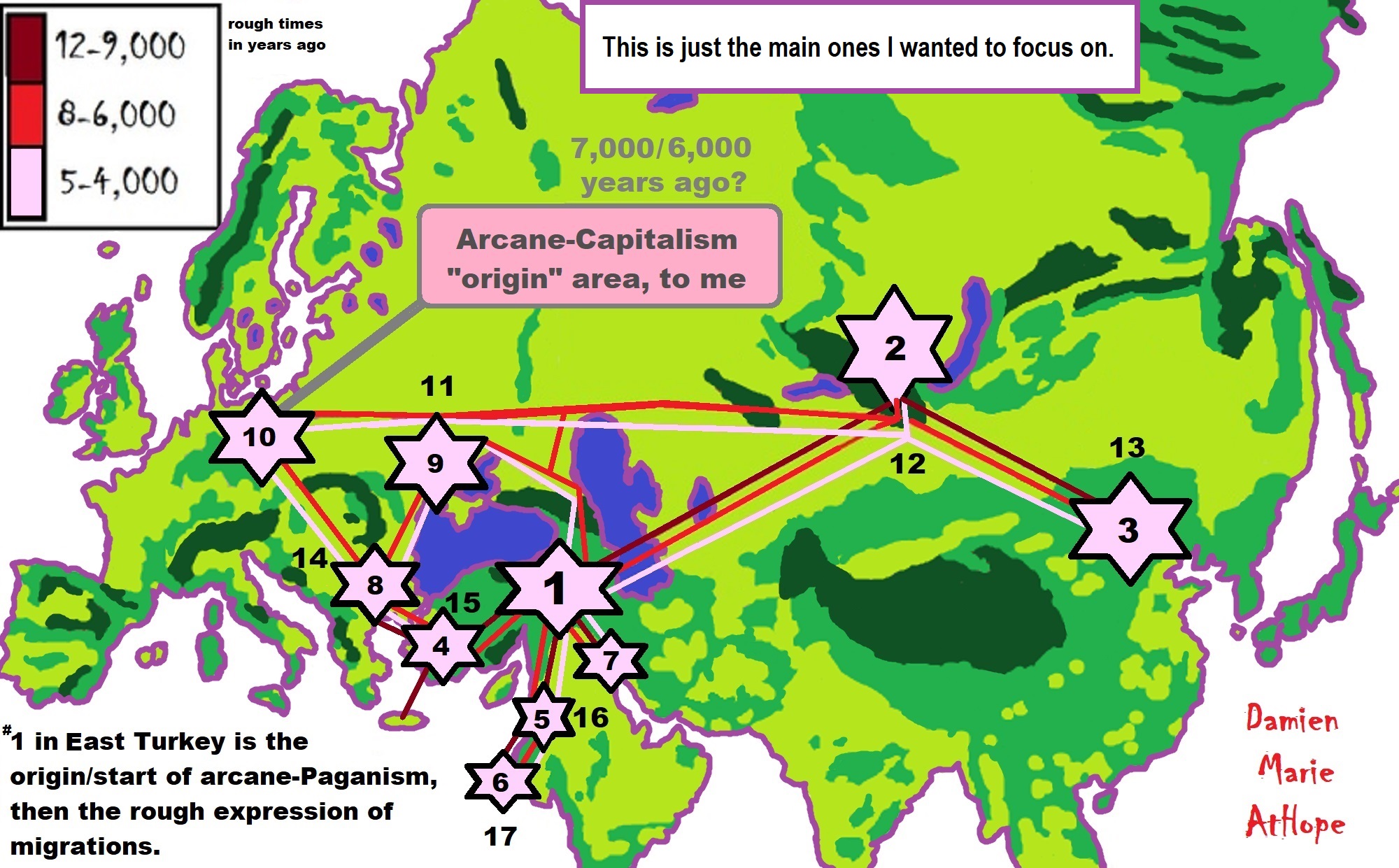
“In northern China, the Nanzhuangtou culture on the middle Yellow River around Hebei (c. 8500–7700 BCE) had grinding tools. The Xinglongwa culture in eastern Inner Mongolia (c. 6200–5400 BCE) ate millet, possibly from agriculture. The Dadiwan culture along the upper Yellow River (c. 5800–5400 BC) also ate millet. By the Yangshao culture (c. 5000–3000 BCE), the peoples of the Yellow River were growing millet extensively, along with some barley, rice, and vegetables; wove hemp and silk, which indicates some form of sericulture; but may have been limited to migratory slash and burn farming methods. The Longshan culture (c. 3000–2000 BCE) displays more advanced sericulture and definite cities.” ref
“In southern China, the Pengtoushan culture on the Yangtze River (c. 7500–6100 BCE) has left rice farming tools at some locations, though not at the type site. The Hemudu culture around Hangzhou Bay south of the Yangtze (c. 5000–4500 BCE) certainly cultivated rice. The various people (such as hundred viet tribal union) who succeeded in these areas were later conquered and culturally assimilated by the northern Chinese dynasties during the historical period.” ref
Inner Asia Mountain Corridor
“The Inner Asia Mountain Corridor (IAMC) was an ancient exchange route ranging from the Altai Mountains in Siberia to the Hindu Kush (present-day Afghanistan and northern Pakistan), which took shape in the 3rd millennium BCE. The expansion of the Indo-European Andronovo culture towards the Bactria-Margiana Culture in the second millennium BCE took place along the IAMC, giving way to the Indo-Aryan migration into South Asia.” ref
“By the fourth millennium BCE, or 6,022-5,022 years ago, a mobile pastoralist culture emerged at the Eurasian steppes. From the Pontic–Caspian steppe (present-day Ukraine and Russia), the Indo-European Yamna culture spread westwards toward the Great Hungarian Plain; and north-west it developed into the Corded Ware culture. Expanding eastward, Corded Ware eventually developed into the Sintashta culture, which further developed into the Andronovo culture. According to Narasimhan et al. (2018), the Andronovo-culture extended southwards via the IAMC, reaching into the Bactria-Margiana Culture, from where Indo-European language and culture reached South Asia.” ref
Eurasian Steppe Corridor
“The Steppe Route was an ancient overland route through the Eurasian Steppe that was an active precursor of the Silk Road. Silk and horses were traded as key commodities; secondary trade included furs, weapons, musical instruments, precious stones (turquoise, lapis lazuli, agate, nephrite), and jewels. This route extended for approximately 10,000 km (6,200 mi). Trans-Eurasian trade through the Steppe Route precedes the conventional date for the origins of the Silk Road by at least two millennia.” ref
Mal’ta–Buret’ culture of Siberia and Basal Haplogroup R* or R-M207
“The Mal’ta–Buret‘ culture is an archaeological culture of the Upper Paleolithic (around 24,000 to 15,000 years ago) on the upper Angara River in the area west of Lake Baikal in the Irkutsk Oblast, Siberia, Russian Federation. The type sites are named for the villages of Mal’ta, Usolsky District and Buret’, Bokhansky District (both in Irkutsk Oblast).” ref
“The “Mal’ta Cluster” is composed of three individuals from the Glacial Maximum 24,000-17,000 years ago from the Lake Baikal region of Siberia.” ref
“MA-1 is the abbreviation of the male child remains found near Mal’ta dated to 24,000 years ago, who belonged to a population related to the genetic ancestors of Siberians, American Indians, and Bronze Age Yamnaya people of the Eurasian steppe. In particular, modern-day Native Americans, Kets, Mansi, Nganasans, and Yukaghirs were found to be harbor a lot of ancestries related to MA-1.” ref
Haplogroup R possible time of origin about 27,000 years in Central Asia, South Asia, or Siberia:
- Mal’ta–Buret’ culture (24,000-15,000 years ago)
- Afontova Gora culture (21,000-12,000 years ago)
- Trialetian culture (16,000–8000 years ago)
- Samara culture (7,000-6,500 years ago)
- Khvalynsk culture (7,000-6,500 years ago)
- Afanasievo culture (5,300-4,500 years ago)
- Yamna/Yamnaya Culture (5,300-4,500 years ago)
- Andronovo culture (4,000–2,900 years ago) ref
“The areas were people showed red hair matches at 1% and Germanic R1b S21 at 1-5%. But it didn’t explain the Finnish I1 subclades came before the bronze age over 4,022 years ago. This also means Finnish I1 in Sweden and Norway were very old and pre bronze age and pre Germanic. Probably, also means Scandinavian I1 arrived before Corded ware culture because of another groups of I1 subclades in continental Europe.” ref
“This also means continental (mainly central) European I1a1 M227, I1a3 Z58, I1a4 Z63, and I1b Z131 own another origin and I1 M253 line that goes back over 11,000 years. I1 M253 is a very old haplogroup, datable 15,000-20,000ybp in central Europe.” ref
“A 2014 study in Hungary uncovered remains of nine individuals from the Linear Pottery culture, one of whom was found to have carried the M253 SNP which defines Haplogroup I1. It is abbreviated as LBK (from German: Linearbandkeramik), and is also known as the Linear Band Ware, Linear Ware, Linear Ceramics, or Incised Ware culture, and falls within the Danubian I culture of V. Gordon Childe. This culture is thought to have been present between 6,500 to 7,500 years ago.” ref
“The densest evidence for the culture is on the middle Danube, the upper and middle Elbe, and the upper and middle Rhine. It represents a major event in the initial spread of agriculture in Europe. The pottery after which it was named consists of simple cups, bowls, vases, and jugs, without handles, but in a later phase with lugs or pierced lugs, bases, and necks.” ref
“Important sites include Nitra in Slovakia; Bylany in the Czech Republic; Langweiler and Zwenkau in Germany; Brunn am Gebirge in Austria; Elsloo, Sittard, Köln-Lindenthal, Aldenhoven, Flomborn, and Rixheim on the Rhine; Lautereck and Hienheim on the upper Danube; and Rössen and Sonderhausen on the middle Elbe.” ref
“Excavations at Oslonki in Poland revealed a large, fortified settlement (dating to 4300 BCE or 6,322 years ago, i. e., Late LBK), covering an area of 4,000 m². Nearly 30 trapezoidal longhouses and over 80 graves make it one of the richest such settlements in archaeological finds from all of central Europe. The rectangular longhouses were between 7 and 45 meters long and between 5 and 7 meters wide. They were built of massive timber posts chinked with wattle and daub mortar.” ref
To me, in a big picture-related way, I surmise, likely, almost all clan or warrior “cult” talk, relates back to North Asia. That includes the Americas as well all people calling themselves or their clan/tribe/group “warriors”, relates back to North Aisa around 7,000 years ago.
“A warrior is a person specializing in combat or warfare as an institutionalized or professionalized career, especially within the context of a tribal or clan-based warrior culture society that recognizes a separate warrior aristocracies, class, or caste.” ref
“Warriors seem to have been present in the earliest pre-state societies. Most of the basic weapons used by warriors appeared before the rise of most hierarchical systems. Bows and arrows, clubs, spears, swords, and other edged weapons were in widespread use. However, with the new findings of metallurgy, the aforementioned weapons had grown in effectiveness.” ref
“When the first hierarchical systems evolved 5000 years ago, the gap between the rulers and the ruled had increased. Making war to extend the outreach of their territories, rulers often forced men from lower orders of society into the military role. This had been the first use of professional soldiers —a distinct difference from the warrior communities.” ref
“The warrior ethic in many societies later became the preserve of the ruling class. Egyptian pharaohs would depict themselves in war chariots, shooting at enemies, or smashing others with clubs. Fighting was considered a prestigious activity, but only when associated with status and power. European mounted knights would often feel contempt for the foot soldiers recruited from lower classes. In Mesoamerican societies of pre-Columbian America, the elite aristocratic soldiers remained separated from the lower classes of stone-throwers. The samurai were the hereditary military nobility and officer caste of Japan from the 12th to the late 19th century.” ref
“In contrast to the beliefs of the caste and clan-based warrior, who saw war as a place to attain valor and glory, warfare was a practical matter that could change the course of history. History always showed that men of lower orders would almost always outfight warrior elites through an individualistic and humble approach to war, provided that they were practically organized and equipped.” ref
“This was the approach of the Roman legions who had only the incentive of promotion, as well as a strict level of discipline. When Europe’s standing armies of the 17th and 18th centuries developed, discipline was at the core of their training. Officers had the role of transforming men that they viewed as a lower class to become reliable fighting men.” ref
“Inspired by the Ancient Greek ideals of the ‘citizen soldier‘, many European societies during the Renaissance began to incorporate conscription and raise armies from the general populace. A change in attitude was noted as well, as officers were told to treat their soldiers with moderation and respect.” ref
“For example, men who fought in the American Civil War often elected their own officers. With the mobilization of citizens in the armies sometimes reaching the millions, societies often made efforts in order to maintain or revive the warrior spirit. This trend continues to the modern-day. Due to the heroic connotations of the term “warrior”, this metaphor is especially popular in publications advocating or recruiting for a country’s military.” ref
Warrior communities
- Ahir
- Akinji
- Al-Haras
- Amazons
- Anglo-Saxons
- Apache
- Armatoloi
- Ashigaru
- Assassin
- Aswaran
- Batavi
- Berserker
- Bogatyr
- Boxers
- Boyars
- Carthaginian
- Cataphract
- Celts
- Cheyenne
- Comanche
- Comitatus
- Condottieri
- Cossacks
- Crusader
- Curetes
- Dacians
- Dog soldier
- Druzhina
- Eagle warrior
- Eso Ikoyi
- Eight Banners
- Gabiniani
- Gargareans
- Ghazi
- Gladiator
- Gurkha
- Hajduks
- Harii
- Hashashin
- Hersir
- Herules
- Hessian
- Highlander
- Hippeis
- Hird
- Hoplite
- Hospitaller
- Housecarl
- Hulubalang
- Huns
- Hyksos
- Hwarang
- Immortals
- Zulu‘s Impi
- Jaguar warrior
- Janissary
- Jat
- Jinyiwei
- Jund
- Karaiyar
- Karava
- Kassites
- Khalsa
- Kheshig
- Kipchaks
- Klephts
- Knights
- Knights Templar
- Kshatriya
- Kshetri
- Leidang
- Maccabees
- Maharlika
- Mangudai
- Mamluk
- Maravar
- Maratha
- Maryannu
- Maurya/Kushwaha
- Maori
- Mongols
- Morlachs
- Moro People
- Medjay
- Meenas
- Mesedi
- Mingghan
- Mukkuvar
- Nair
- Nakh peoples
- Ninja/Kunoichi
- Normans
- Numerus Batavorum
- Onna-musha
- Optimatoi
- Pirates
- Quilombo
- Rajput
- Red Lantern Sect
- Reddy
- Romans
- Ror
- Rus’ people
- Saini
- Samurai
- Scordisci
- Scythians
- Seminole
- Sengunthar
- Shaolin
- Shieldmaiden
- Sioux
- Sipahi
- Sohei
- Somatophylakes
- Spartan
- Timawa
- Teutonic Knights
- Thingmen
- Triballi
- Uskoks
- Valkyrie
- Vanniyar/Vanniar (Chieftain)
- Varangian Guard
- Velir or Vellalar
- Vikings
- Virago
- Voynuks
- White Lotus Sect
- Yadav
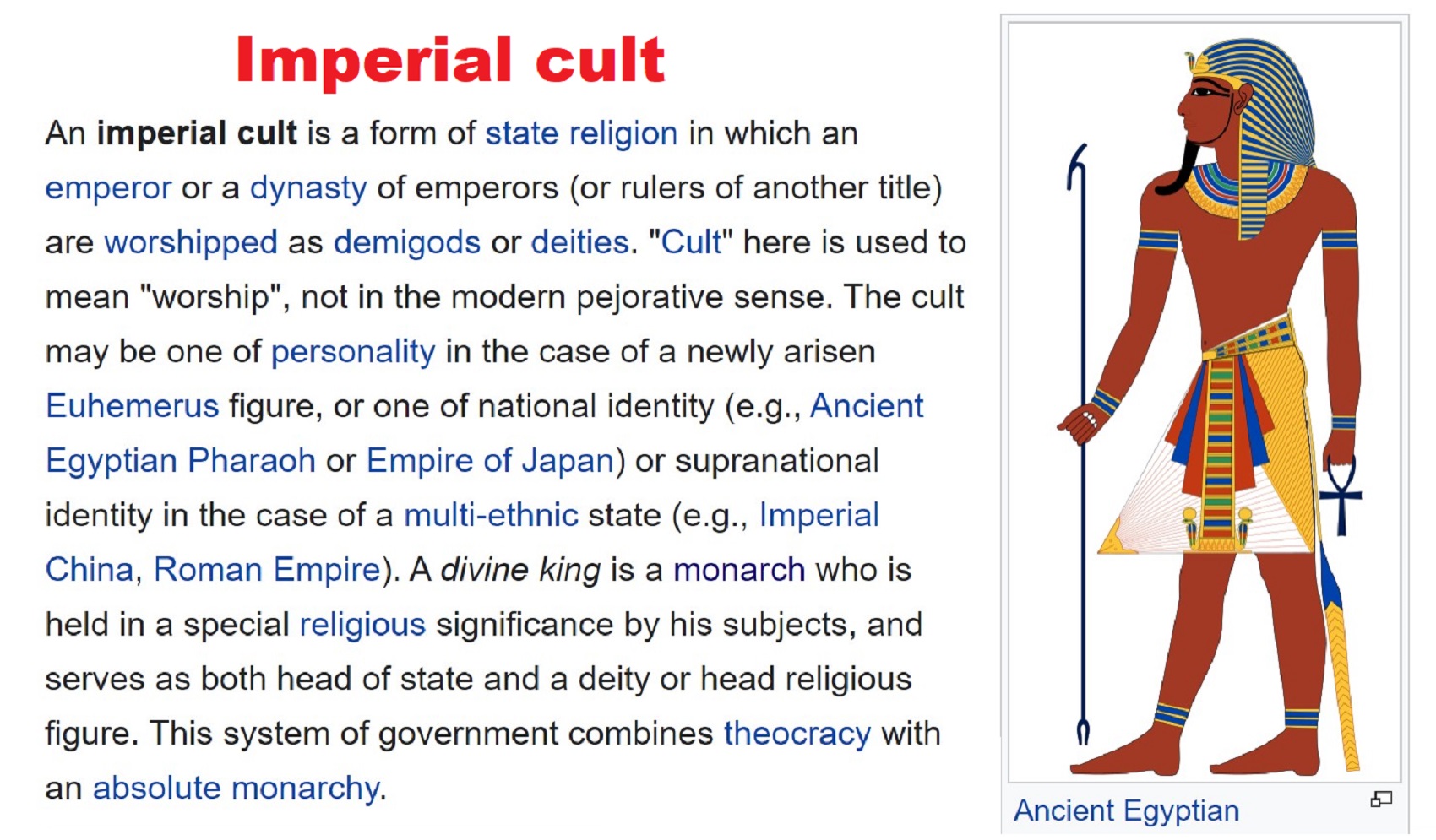
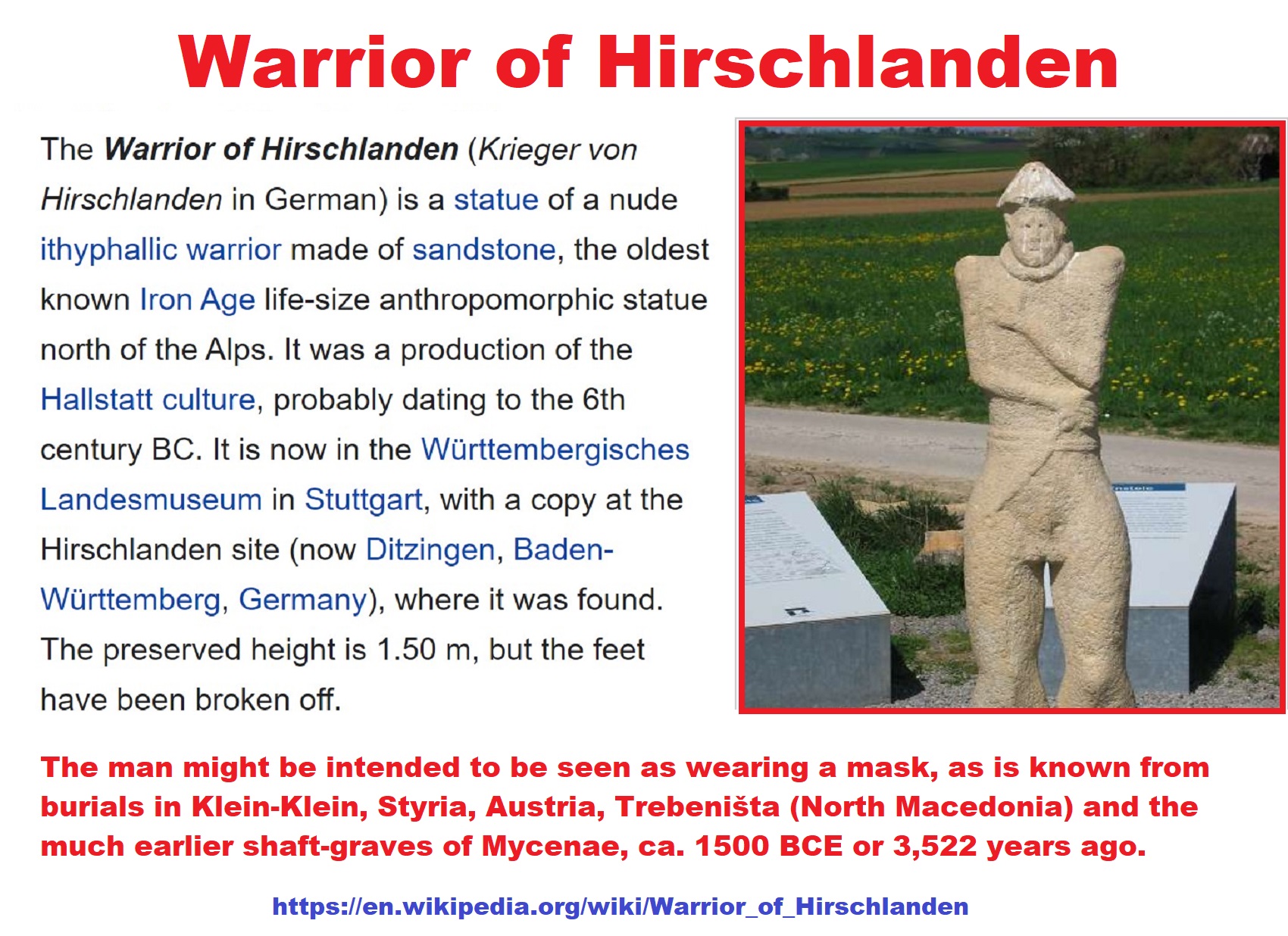
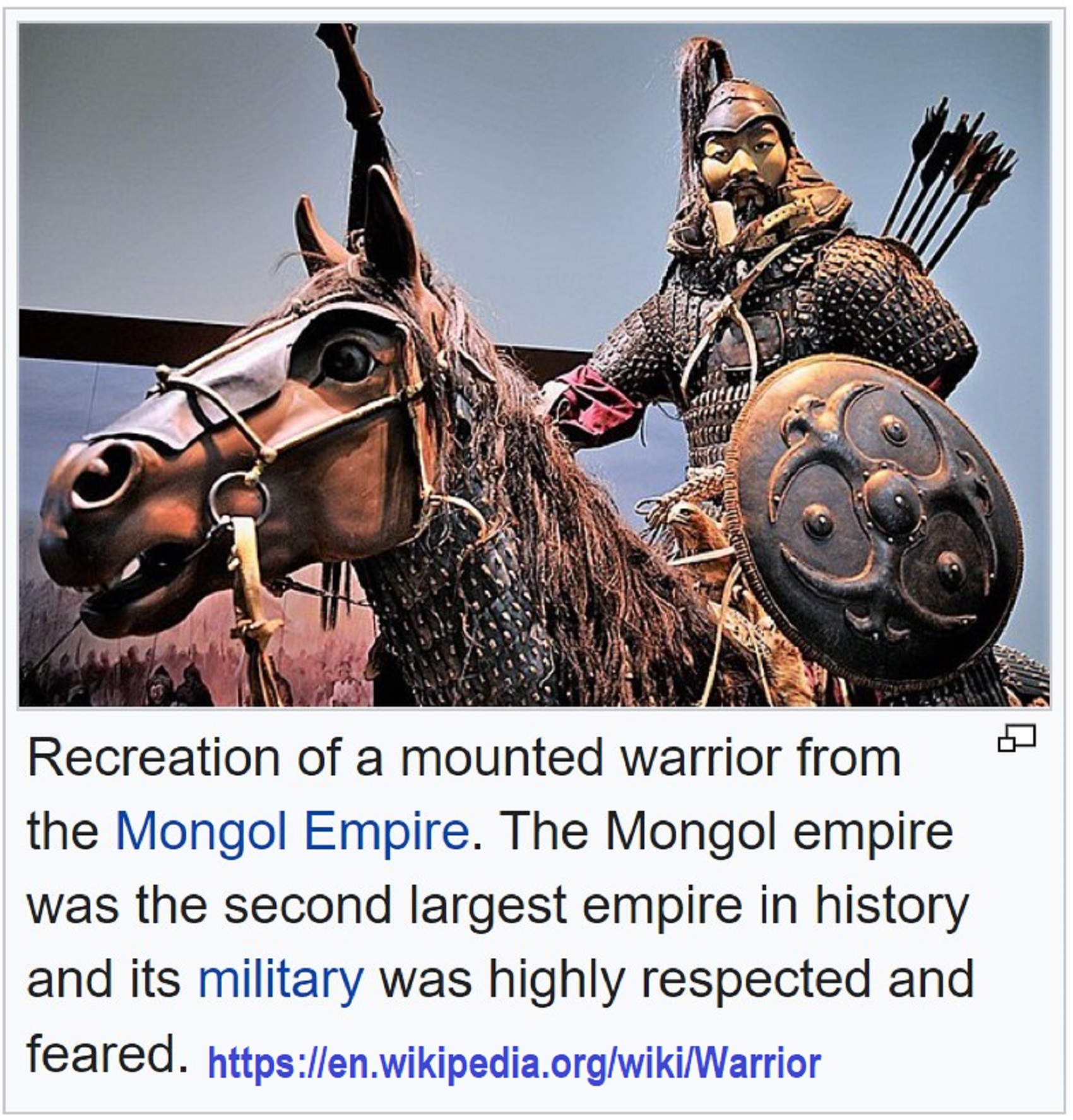
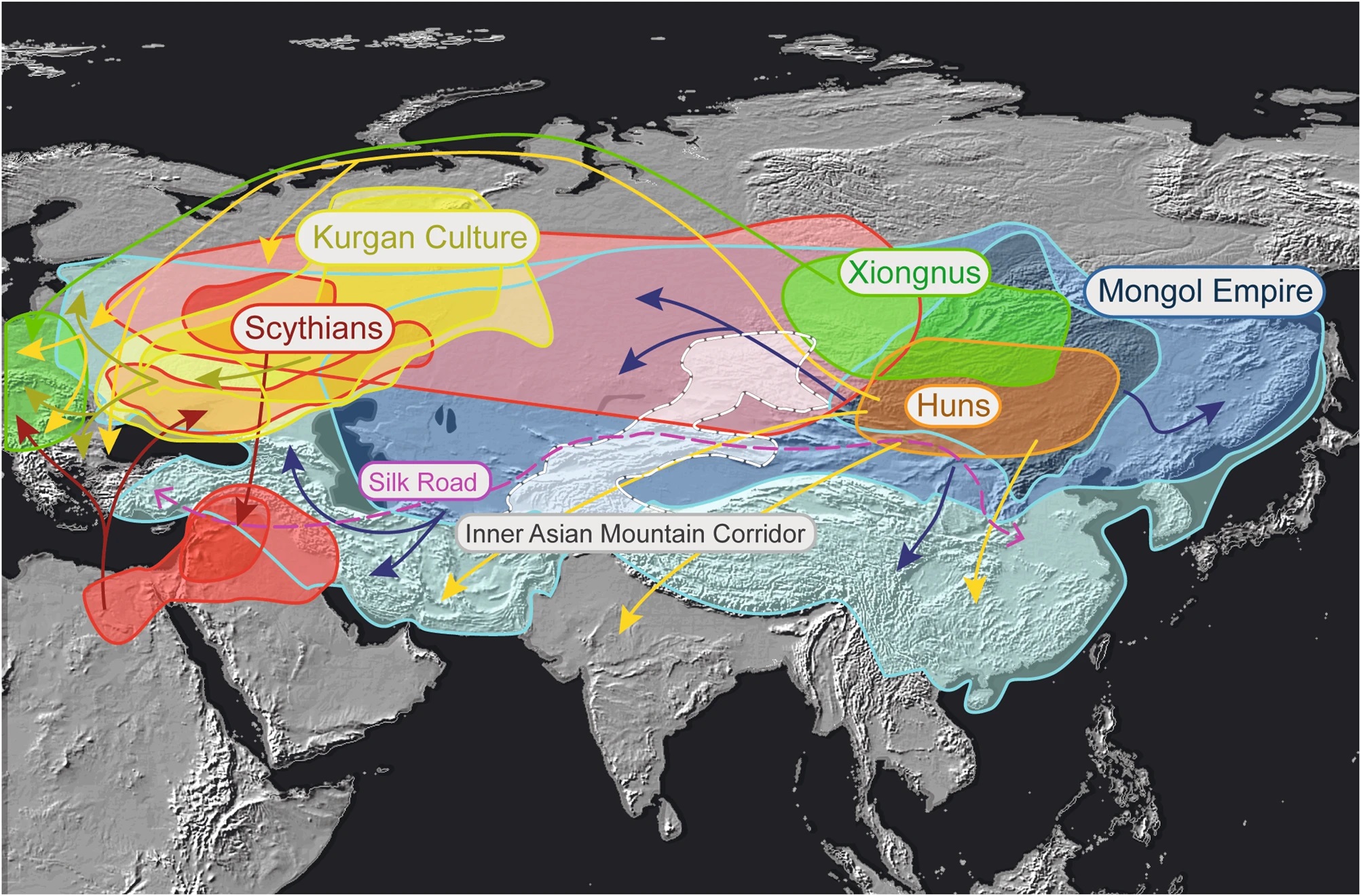
Horse Gods and Goddesses of the Ancient World
“Throughout history, white horses have been mythologized in many cultures. For example, Herodotus reported that white horses were held as sacred animals in the Achaemenid court of Xerxes the Great (ruled 486–465 BCE), In more than one tradition, a white horse carries patron saints or the world savior in the end times, including Hinduism, Christianity, and Islam.” ref
Aine: The Red Horse Goddess
“Aine is an Irish Celtic horse goddess and Fairy Queen who healed and granted fertility to her followers. Cnoc Aine in Knockainey was Aine’s center of worship. In ancient times, royalty performed marriages on top the hill to honor Aine and to seal the kingship. This act means Aine was an important sovereignty goddess. Aine’s sacred lake, Lough Gur, which isn’t far from Cnoc Aine, was used as a place of healing and transition from this life to the next.” ref
Aine’s Magical Abilities
“Aine was a fertility goddess, but also a goddess of healing, sovereignty, the otherworld, and abundance. As a fairy queen, she could shapeshift like any other fairy. She often turned into a large red mare, which made her a sacred horse goddess to the Celts. The color red signified the otherworld, bloodline, and the occult mysteries, which makes Aine a psychopomp to the afterlife.” ref
Ares the Horse God & His Warrior Horses
“Ares, the Greek god of war, was well-known for his destructive ways. Born to Zeus and Hera, Ares was a god that Zeus kept at arm’s distance. The Greeks were wary of Ares, as he had the reputation of being a cruel man-slaughterer. Ares is well-known for his scandalous affair Aphrodite. In this myth, Aphrodite’s angry husband catches Ares in a net and humiliates him in front of the gods.” ref
Ares’ Link to Animals
“Following this event, Ares turned himself into a boar when he learned Aphrodite had fallen in love with another god – Adonis. Then he charged at the boy with all his might. Ares and the horse are closely linked, as well as other animals like the bull and dog. Ares charged into battle in a chariot pulled by two divine horses. On his shield was an emblem of two war-waging, powerful horses. And the ancients sacrificed horses in Ares’ name.” ref
Belenus: The Shining Sun God
“Belenus, also known as Belenos, was a Celtic horse god who survived the Roman conquest and became part of the Gallo-Roman religion. As a sun god, solar wheels are sacred to Belenus. Belenus lends his name to the ancient Celtic sabbat Beltane. He was a sun god, and the beginning of May was once considered the official start to summer in Celtic times. He is sometimes depicted in a horse-drawn chariot similar to Apollo. Clay horse figurine offerings inundated his shrine in Burgundy, France.” ref
Epona: Celtic Goddess of Horses
“No deity’s name evokes the image of the horse quite like the name Epona. Epona was a widely-worshiped Celtic horse goddess in the region that is present-day France and Germany. Her cult survived the Roman conquest and became part of the Gallo-Roman religion. Her name literally means “Great Mare”. Epona the horse goddess ruled over all equine animals including donkeys, ponies, and mules. She is a fertility goddess who carries a cornucopia, grains, and is accompanied by foals.” ref
Freyr: Norse God of Peace and Prosperity (And Horses, Apparently)
“Freyr is the King of the Vanir, the Norse god of peace and prosperity. And while most associate Freyr with his sacred golden boar, he also has a horse ally named Bloody Hoof. In the Poetic Edda, Freyr gifts a divine horse to his messenger. This horse may have been Bloody Hoof, though the poem doesn’t clarify. In the Icelandic sagas, Freyr is closely associated with horse cults in the new settlement.” ref
Rhiannon: Welsh Fairy Queen & Horse Goddess
“Rhiannon is a Welsh mythical figure from The Mabinogion. She is a beautiful fairy maiden who marries a mortal Welsh king. Her story is a sad, yet inspiring one. Rhiannon is blamed for murdering her kidnapped son. She’s punished in a horrifying manner, while also grieving for her lost son. They strip away her dignity and force her to carry the castle’s guests on her back like a horse. Rhiannon never runs away or complains; she believes her good character will be restored. Her story is one of hope and strength and is empowering to women who have been oppressed or abused.” ref
Rhiannon’s Connection to Horses
“Rhiannon is a fairy goddess and therefore has dominion over wildlife, but her favorite animals are birds and horses. In the Mabinogi, Rhiannon is a mare and her son is a foal. She’s so strongly related to horses that scholars believe she could be the Welsh version of the continental horse goddess Epona. The fact she carries people around on her back like a horse is strong enough evidence to relate her to horses. Not to mention when her mortal husband first pursues her, Rhiannon escapes on her fairy horse.” ref
Shango and the Black Horse
“Shango is a horse god in the Yoruba religion. He is an Orisha of thunder, justice, virility, and fire (among other things). In legend, he was the fourth king of Oyo, the second dynasty of Oduduwa, in the Yoruba empire in West Africa. His consorts were Oshun, Oya, and Obba. He was son to Oddumare in some legends, and in others, he was the heir of Obbatala and Oddua. His sacred number is six, his colors are red and white, and his sacred day is December fourth because of his comparison to Saint Barbara.” ref
Shango’s Black Horse
“Sources say to place a black horse statue on Shango’s shrine. Shango rides his black horse in ancient sculptures all over Africa. In Medieval Africa, people saw horses as powerful figures – they were owned by warriors and royalty. Because of Shango’s kingship, he has a close association with horses but also because of sacred rituals.” ref
The Icelandic – “Horse of the Gods”
“Hardy, willing, friendly, versatile, sure-footed – the long list of positive breed characteristics puts the Icelandic Horse in a category of its own. Isolated for almost a thousand years, this unique creature is quickly growing in popularity around the globe. DNA evidence shows that Icelandic Horses are genetically linked to the Shetland Pony, the Norwegian Lyng Horse, and the Mongolian Horse. Archeologists believe that Viking explorers and brought their horses from Norway, and the recently conquered Shetland Islands, to Iceland in the late ninth century. Logic dictates that only the strongest and best of their stock would have survived the difficult journey.” ref
No equine breeding stock has been permitted to enter Iceland for almost a thousand years, preserving the “purity” and unique characteristics of the breed. The Icelandic has five natural gaits: walk, trot, tölt, canter, and pace. Not all horses have five gaits, but most have walk, trot, canter, and tölt, which is prized above others. Tölt, the “gait of the gods,” is a four beat trot, which is exceptionally smooth. A natural tölter is a joy to ride! Skeið, or “flying pace” is a very lateral gait with suspension. Horses can reach speeds of 35 miles per hour in pace. It feels like you are flying!” ref
Horses in Slavic Mythology
“As I finish up my first draft of book 1 in my Slavic fantasy series, my Slavic Saturday posts continue with an animal that plays a crucial role in both Slavic mythology and history: the horse. (June 2021 Updated) Note: If you enjoy Slavic mythology, check out A Dagger in the Winds, the first book in my Slavic fantasy series called The Frostmarked Chronicles. You can also join my monthly newsletter for updates and free novellas (such as the prequel, The Rider in the Night) set in the world of the series.” ref
“The three animals that appear the most in Slavic myths are the bear, the wolf, and the horse. In that trio, it would at first seem the horse is the odd one out. Both wolves and bears were seen as powerful forces of nature, though, and to the Slavs, the horse was no different.” ref
“As we talked about in my post about the Wenedowie/Veneti early Slavic tribe, agriculture was the center of their economy and way of life. And the key to their advanced agriculture was their early invention of the plow, which would often be pulled by horses. They helped farmers constantly. Without them, farming would have been a far more difficult ordeal (though it still was with their help). Horses held the power to carry and pull what humans could not, and that meant the early Slavs also saw each side of the horse—both the tender and the wild.” ref
“The multitude of sides to the horse are reflected in the many gods represented by it. Jaryło (Jarilo/Yarilo), a god of agriculture and spring, was often pictured riding a white horse with the coming of spring. One of his sisters, Dziewanna (Devana), was the goddess of the wilds and hunt, and her symbol was the mare. Dadźbóg (Dažbog), god of the sun, was said to be riding a chariot through the sky with three horses: gold, silver, and diamond. But not all the perceptions were positive. Czarnobóg (Chernobog), a dark god, rode a black horse when he faced his rival, Białobóg (Belobog), who rode a white horse.” ref
“This horse’s importance doesn’t stop with deities, though. In rituals conducted by wróżbici diviners, the behavior of horses would be used to determine whether the tribe should march to war or not. During weddings, horses were also considered to symbolize the young groom, and during many festivals, people dressed up as horses or rode them to symbolize great creatures or battles.” ref
The Horse, the Wheel, and Language
“The Horse, the Wheel, and Language: How Bronze-Age Riders from the Eurasian Steppes Shaped the Modern World is a 2007 book by the anthropologist David W. Anthony, in which the author describes his “revised Kurgan theory.” He explores the origins and spread of the Indo-European languages from the Pontic–Caspian steppe throughout Western Europe, Central Asia, and South Asia. He shows how the domesticated horse and the invention of the wheel mobilized the steppe herding societies in the Eurasian Steppe, and combined with the introduction of bronze technology and new social structures of patron-client relationships gave an advantage to the Indo-European societies. The book won the Society for American Archaeology‘s 2010 Book Award.” ref
Synopsis
“Anthony gives a broad overview of the linguistic and archaeological evidence for the early origins and spread of the Indo-European languages, describing a revised version of Marija Gimbutas‘s Kurgan hypothesis. Anthony describes the development of local cultures on the northern Black Sea coast, from hunter-gatherers to herders, under the influence of the Balkan cultures, which introduced cattle, horses, and bronze technology.” ref
“When the climate changed between 3500 and 3000 BCE, with the steppes becoming drier and cooler, those inventions led to a new way of life in which mobile herders moved into the steppes, developing a new kind of social organization with patron-client and host-guest relationships. That new social organization, with its related Indo-European languages, spread throughout Europe, Central Asia, and South Asia because of its ability to include new members within its social structures.” ref
“Part One covers theoretical considerations on language and archaeology. It gives an introductory overview of Indo-European linguistics (ch. 1); investigates the reconstruction of Proto-Indo-European (ch. 2); the dating of Proto-Indo-European (ch. 3); the specific vocabulary for wool and wheels (ch. 4); the location of the Proto-Indo-European homeland (ch. 5); and the correlation of these linguistic discoveries with archaeological evidence and the role of elite recruitment in language shift (ch. 6).” ref
“Part Two covers the development of the Steppe cultures and the subsequent migrations out of the Pontic-Caspian region into Europe, Central Asia, and South Asia. The splitting of the major branches of Indo-European (except perhaps Greek) can be correlated with archaeological cultures, showing steppe influences in a way that makes sense chronologically and geographically in light of linguistic reconstructions. Anthony gives an introduction to Part Two (ch. 7); describes the interaction between Balkan farmers and herders and steppe foragers at the Dniester River (in western Ukraine) and the introduction of cattle (ch. 8); the spread of cattle-herding during the Copper Age and the accompanying social division between high and low status (ch. 9); the domestication of the horse (ch. 10); the end of the Balkan cultures and the early migrations of Steppe people into the Danube Valley (ch. 11); the development of the steppe cultures during the Eneolithic, including the interaction with the Mesopotamian world after the collapse of the Balkan cultures and the role of Proto-Indo-European as a regional language (ch. 12); the Yamna culture as the culmination of these developments at the Pontic-Caspian steppes (ch. 13); the migration of Yamna people into the Danube Valley and the origins of the western Indo-European languages at the Danube Valley (Celtic, Italic), the Dniester (Germanic) and the Dnieper (Baltic, Slavic) (ch. 14); migrations eastward which gave rise to the Sintashta culture and Proto-Indo-Iranian (ch. 15); migrations of the Indo-Aryans southward through the Bactria-Margiana archaeological complex into Anatolia and India (ch. 16); and concluding thoughts (ch. 17).” ref
“According to Anthony, the development of the Proto-Indo-European cultures started with the introduction of cattle at the Pontic-Caspian steppes, which, until ca. 5200–5000 BCE, were populated by hunter-gatherers. The first cattle herders arrived from the Danube Valley at ca. 5800–5700 BCE, descendants from the first European farmers. They formed the Criş culture (5800–5300 BCE), creating a cultural frontier at the Prut-Dnister watershed. Anthony proposes that Proto-Indo-European emerged after ca. 3500 BCE. He bases that especially on his analysis of Indo-European terms for wool textiles and wheeled vehicles: “Neither woven wool textiles nor wheeled vehicles existed before about 4000 BCE. It is possible that neither existed before about 3500 BCE. Yet Proto-Indo-European speakers spoke regularly about wheeled vehicles and some sort of wool textile. This vocabulary suggests that Proto-Indo-European was spoken after 4000–3500 BCE.” ref
Cows, Copper, and Chiefs
“At ca. 5200–5000 BCE, the non-Indo-European Cucuteni-Tripolye culture (5200–3500 BCE) appears east of the Carpathian mountains, moving the cultural frontier to the Southern Bug valley, and the foragers at the Dniepr Rapids shifted to cattle herding, marking the shift to Dniepr-Donets II (5200/5000-4400-4200 BCE). The Dniepr-Donets culture kept cattle not only for ritual sacrifices but also for their daily diet. The Khvalynsk culture (4700–3800 BCE), located at the middle Volga, which was connected with the Danube Valley by trade networks, also had cattle and sheep, but they were “more important in ritual sacrifices than in the diet.” According to Anthony, “the set of cults that spread with the first domesticated animals was at the root of the Proto-Indo-European conception of the universe” in which cattle had an essential role. The Samara culture (early 5th millennium BCE), north of the Khvalynsk culture, interacted with the same. The steppe cultures were markedly different, economically and probably linguistically, from the Danube Valley and Balkan cultures at their west despite trade between them, the foragers of the northern forest zone, and from the cultures east of the Ural river.” ref
“The collapse of Old Europe led to a decrease in copper grave gifts in the North Pontic steppes. Between 3800 and 3300, substantial contact took place between the steppe cultures and Mesopotamia via the Maikop culture (3700–3000 BCE), in the northern Caucasus. To the west, Tripolye pottery begins to resemble Sredni Stog pottery, showing a process of assimilation between the Tripolye culture and the steppe cultures and a gradual breakdown of the cultural border between the two. Between 3800 and 3300 BCE, five eneolithic steppe cultures can be discerned, and Proto-Indo-European dialects may have then served as a regional language.” ref
“Anthony, following the methodology of Ringe and Warnow, proposes the following sequence:
- Pre-Anatolian (4200 BCE)
- Pre-Tocharian (3700 BCE)
- Pre-Germanic (3300 BCE)
- Pre-Italic and Pre-Celtic (3000 BCE)
- Pre-Armenian (2800 BCE)
- Pre-Balto-Slavic (2800 BCE)
- Pre-Greek (2500 BCE)
- Proto-Indo-Iranian (2200 BCE), split between Iranian and Old Indic 1800 BCE” ref
“Linking prehistoric archaeological remains with the development of language, David Anthony identifies the prehistoric peoples of central Eurasia’s steppe grasslands as the original speakers of Proto-Indo-European, and shows how their innovative use of the ox wagon, horseback riding, and the warrior’s chariot turned the Eurasian steppes into a thriving transcontinental corridor of communication, commerce, and cultural exchange.” ref
“Proto-Indo-European” is, first of all, the name of a language, one that left no writing but is certain to have existed because it can be reconstructed in some detail by working back from its many daughter languages.”
“For two thousand years, almost anyone who knew both Greek and Latin would have noticed that they are related, either as mother and daughter or as sisters. A man named Marcus Zuerius van Boxhorn (1612-53) noted similarities between Greek and Latin, but also among Persian and the Germanic, Slavic, Celtic, and Baltic families; he postulated a common ancestor that he called “Scythian.” When Sir William Jones (1746-94) studied Sanskrit in Bengal, he also postulated a common source and began to specify it in some detail. Since then, historical linguists have done an immense amount of work, aided by the decipherment of Hittite beginning in 1915 and of the Linear B script in 1952, which turned out to be a very old form of Greek.” ref
“You can easily convince yourself that such a language once existed simply by looking up some everyday words. “Father,” for instance, is pater in Greek, pater in Latin, pitar– in Sanskrit, father in English, Vater in German, athair in Irish (for complicated reasons Irish lost many initial consonants). The number “two” is duo in Greek, duo in Latin, dva in Sanskrit, two in English (note the -w-), zwei in German, dha in Irish, dva in Russian, da in Hittite, and dy in Albanian. The assumption is that languages are unlikely to borrow such basic words from another language, so similar words must go back to a common word a long time ago.” ref
“There are complications, of course, as languages change in different ways. Take the word for “four.” It begins with a p- in several languages, including a few dialects of ancient Greek, modern Welsh (pedwar), and ancient Umbrian (petor). In the Germanic languages it begins with an f- (Gothic fidwar, Old Norse fjórir, English four), and already you can see the p-to-f pattern, as in pater and father. In some languages it begins with a k-sound: Latin quattuor, Sanskrit catvaras, Lithianian keturi, and Irish ceathair. In the dominant dialect of ancient Greek it was tettares or tessares, which looks strange enough but follows a pattern seen in many other words.” ref
“Linguists have settled on something like kwetwores for the Proto-Indo-European original, where the kw-sound, with the lips rounding around a k, is best preserved in Latin (and Italian and Spanish). In some branches the kw- sound was susceptible to the closing of the rounded lips (Try it!), leading to an initial p-, which became f- in the Germanic family. In other branches the lip-rounding was dropped, leaving just the k-, and in a subset of those languages the k- moved from the back of the mouth (the velum) forward to a palatal ch-sound and then to a dental s-sound, just the way Latin quinque (“five”) became Italian cinque and Spanish cinco. (There will be a quiz on this next time.)” ref
“It’s not just words that we can attribute to this ancient mother-tongue. We’re pretty sure that its nouns had many cases, perhaps eight or nine; that its verbs featured aspect and mood rather than tense; that verbs tended to come at the end of their clauses; and that besides singulars and plurals it had duals. A topic for another column.” ref
“So who spoke this language, and where and when? Who were the Proto-Indo-Europeans? Archeologists have identified the Yamnaya culture as likely to belong to these people, a culture dated to about 3300 to 2600 BCE in the Pontic-Caspian steppe in what is now Ukraine and Russia. The language may have been spoken in the region before then and for a while afterward, but of course, it was always changing, like every language, and the pastoral people who spoke it were so widely dispersed that dialectal differences were probably emerging well before 3300 BCE.” ref
“These people were not a single “race,” if we can still use that term. They were certainly not the noble pure-bred race of “Aryans” which was so attractive an idea to the Nazis and which has resurfaced recently here in America and in India. DNA evidence shows that they were a blend of at least two peoples, themselves each probably a mixture: a group from the Caucasus that moved north before 4000 BCE and another from the eastern steppe. The pre-Proto-Indo-European Caucasus language may have been carried south at about the same time, into Anatolia, where it became Hittite and probably Trojan. (The Iliad to the contrary, Greeks and Trojans would have needed bilingual interpreters.)” ref
“Then something of earth-shattering importance took place among the Yamnaya. They learned from nearby tribes how to domesticate horses, first to drink their milk and eat their flesh, and then to ride them. (If you do not have lactose intolerance you might thank these ancestors of yours.) They then figured out how to attach a wagon to a pair of horses, and then a chariot that could carry a pair of warriors. By 2000 BCE bands of young warriors were invading Europe as far west as Spain and Ireland and invading Asia as far east as northern India and Nepal. It seems nothing could stop them. Spanish men today have a great deal of Yamnaya DNA in their Y-chromosome (inherited from fathers only) and virtually none in their mitochondria (from mothers).” ref
“It’s a chilling piece of evidence: the steppe warriors must have killed the local men and taken the local women. There is comparable evidence elsewhere. Though there are some contending theories as to just how these steppe warriors managed to dominate the existing populations, there is no doubt that they did. They are not the ancestors we might wish for, but nonetheless, three billion of us speak a descendant of their tongue, and most of us, three billion, carry their genes in our cells.” ref
“What were they like? About fifteen hundred years after the great invasions began, history records a people the Greeks called Skuthai, and we call Scythians, who occupied the same Pontic-Caspian steppe. The Hebrews called them Ashkenaz, which might have come from a misreading of Ashkuzai, according to at least one linguist, which is what the Assyrians called them. The Scythians spoke an Indo-European language related to Iranian, and their name seems to come from the root skudo-, which meant “shooter,” and has the same origin.” ref
“They were great shooters, all right, great archers on horseback (some were women: the Amazons were probably Scythians), and known for the “Parthian shot,” an ability to shoot an arrow accurately behind them while galloping away. The Athenians employed them as policemen! If you google them you’ll find lots of pictures of these Scythians and their artifacts. My guess is that they resembled their ancestors in many ways, and through them we might infer something about the Yamnaya. Marcus Zuerius van Boxhorn may have been on to something when he named the proto-language after them.” ref
The Indo-European horse: A linguistic reconstruction
“Abstract: Archaeologically reconstructed, the IE horse was a relatively small animal, used for food or as a sacrificial victim and domesticated around 4000 BCE. in the Sredni Stog culture in southern Ukraine. Initially kept for horseback riding, the horse was used much later, around 2300 BCE, for the traction of light-vehicles. Linguistic investigation adds new details to this description. Although the etymology of the IE root for horse *ekuo- is unknown, one can assume that it denoted a ‘work-horse,’ not only’ because most of the words for ‘horse’ derive from terms designating ‘pack- or draft-horses’ (Lat. caballus, NHG Pferd, Lith. arklys), but also because two of its cognates mean ‘ass’ (Arm. es) and ‘mule’ (Gaul. Epona), which could take place only when their common source has the meaning ‘work-horse’ or ‘work-animal’, as
in the case of Lat. sagmarius, Gk. hypozygia, etc. IE *ekuo- most probably also denoted a gelding.” ref
Sredny Stog culture with Horse Sacrifice and Flat-Grave burials
“The Sredny Stog culture is a pre-Kurgan archaeological culture from the 5th–4th millennia BCE. It seems to have had contact with the agricultural Cucuteni–Trypillian culture in the west, centered in modern-day Moldova, Romania and Ukraine, and was a contemporary of the Khvalynsk culture in the north-east, located in the middle Volga region. In its three largest cemeteries, Oleksandriia (39 individuals), Igren (17) and Deriivka II (14), evidence of burial in flat graves (ground level pits) has been found. This parallels the practice of the Cucuteni-Trypillia culture, and is in contrast with the later Yamnaya culture, which practiced tumuli burials. In Sredny Stog culture, the deceased were laid to rest on their backs with the legs flexed. The use of ochre in the burial was practiced, as with the kurgan cultures. For this and other reasons, Yuri Rassamakin suggests that the Sredny Stog culture should be considered as a real term, with at least four distinct cultural elements co-existing inside the same geographical area.” ref
“Dmytro Telegin has divided the chronology of Sredny Stog into two distinct phases. Phase I (middle 4th millennium BC, according to Telegin) included Sredny Stog complexes of the Strilcha Skelia-Sredny Stog II type that contained pottery without the corded ornament. Phase II (according to Telegin, middle 3rd millennium BCE) is represented by the Sredny Stog complexes of the Deriivka-Moliukhovyi Buhor type that used corded ware pottery which may have originated there, and stone battle-axes of the type later associated with expanding Indo-European cultures to the West. Most notably, it has perhaps the earliest evidence of horse domestication), with finds suggestive of cheek-pieces (psalia). However, there is no conclusive proof that those horses were used for riding since they were mainly employed for gathering food. Phase I is now dated to the middle 5th millennium BCE and Phase II – to the late 5th-first half of the 4th millennium BCE. Sredny Stog periodization has also undergone a revision in recent years.” ref
“In the context of the modified Kurgan hypothesis of Marija Gimbutas, this pre-kurgan archaeological culture could represent the Urheimat (homeland) of the Proto-Indo-European language which others associate with the later Yamnaya culture. It has been theorized that Cernavodă culture, together with the Sredny Stog culture, was the source of Anatolian languages and introduced them to Anatolia through the Balkans after Anatolian split from the Proto-Indo-Anatolian language, which some linguists and archaeologists place in the area of the Sredny Stog culture. Other studies have suggested that the Indo-European language family may have originated not in Eastern Europe, but among West Asian populations south of the Caucasus.” ref
“Guus Kroonen et al. 2022 found that the “basal Indo-European stage”, also known as Indo-Anatolian or Pre-Proto-Indo-European language, largely but not totally, lacked agricultural-related vocabulary, and only the later “core Indo-European languages” saw an increase in agriculture-associated words. According to them, this fits a homeland of early core Indo-European within the westernmost Yamnaya horizon, around and west of the Dnieper, while its basal stage, Indo-Anatolian, may have originated in the Sredny Stog culture, as opposed to the eastern Yamnaya horizon. They also argue that this new data contradicts a possible earlier origin of Pre-Proto-Indo-European among agricultural societies South of the Caucasus, rather “this may support a scenario of linguistic continuity of local non-mobile herders in the Lower Dnieper region and their genetic persistence after their integration into the successive and expansive Yamnaya horizon”. Furthermore the authors mention that this scenario can explain the difference in paternal haplogroup frequency between the Yamnaya and Corded Ware cultures, while both sharing similar autosomal DNA ancestry.” ref
“Examination of physical remains of the Sredny Stog people has determined that they were Europoid. A similar physical type prevails among the Yamnaya, who were tall and powerfully built. People of the neighboring Khvalynsk culture were less powerfully built. People of the preceding Dnieper–Donets culture were even more powerfully built than the Sredny Stog and Yamnaya. The culture ended at around 3500 BCE, when the Yamnaya culture expanded westward replacing Sredny Stog, and coming into direct contact with the Cucuteni–Trypillia culture culture in western Ukraine.” ref
“Mathieson et al. (2018) included a genetic analysis of a male buried at Olexandria (Ukraine) and dated to 4153-3970 calBC, ascribed to the Sredny Stog culture. He was found to be carrying the paternal haplogroup R1a1a1, and the maternal haplogroup H2a1a. He carried about 80% Western Steppe Herder (WSH) ancestry and about 20% Early European Farmer (EEF) ancestry. This Seredny Stog male was thought to be the first steppe individual found to have been carrying EEF ancestry. As a carrier of the 13910 allele, he was supposed to be the earliest individual ever examined who has had a genetic adaptation to lactase persistence.” ref
“However, the recent publication by David Reich Lab, October 2021, presented another date from a different sample of the same individual, 2134–1950 cal BCE, which could actually belong to Srubnaya culture period, as Haplotree Information Project considers this sample I6561 is from around 3650 years ago (c. 1700 BCE), and belongs to Y-DNA R1a-F2597*, corresponding to R1a-Y3. The WSH genetic cluster was a result of mixing between Eastern Hunter-Gatherers (EHGs) from Eastern Europe and Caucasus hunter-gatherers (CHGs). This mixing appears to have happened on the eastern Pontic–Caspian steppe starting around 5,000 BCE.” ref
“A preprint by Matilla et al. (2022) presented whole-genome analysis of a Sredny Stog individual, dated to 4320-4052 calBC, from the Deriivka II archaeological site in the Middle Dnieper Valley. The authors conclude that a third of the genetic ancestry of the individual was derived from the local Neolithic Dnieper Valley ancestry, while the rest was of the Yamnaya-related steppe ancestry. Another Eneolithic individual (4049-3945 calBCE) carrying steppe ancestry, potentially from a Serednii Stig population, was identified at the Trypillian settlement of Kolomyitsiv Yar Tract (KYT) near Obykhiv in central Ukraine. At the whole genome level, the KYT individual was close to the Yamnaya from Ukraine and Russia, without forming a clade with Yamnaya. The authors suggested that genetic ancestry of the KYT individual was plausibly derived from a proto-Yamnaya population, with admixture from Iron Gates Mesolithic.” ref
“The steppe ancestry, otherwise known as Western Steppe Herder WSH ancestry, found in the Sredny Stog culture is similar to that of the Khvalynsk culture, among whom there was no EEF admixture. Males of the Khvalynsk culture carried primarily the paternal haplogroup R1b, although a few samples of R1a, I2a2, Q1a and J have been detected. Succeeding Yamnaya males however, have been found to have carried only R1b and I2. This is similar to the males of the earlier Dnieper-Donets culture, who carried R and I only and were almost exclusively EHGs with Western Hunter-Gatherer (WHG) admixture.” ref
“The results suggest, as a possible yet highly simplified scenario, that the Yamnaya emerged through mixing between EHG and WHG males, and EEF and CHG females. This implies that the leading clans of the Yamnaya were of EHG paternal origin. On this basis, David W. Anthony argues that the Indo-European languages were originally spoken by EHGs. Another hypothesis about the origin of the Indo-European (IE) languages links them with the Eneolithic circum-Pontic trade network and suggests the emergence of the ancestral IE tongue in the North Pontic steppe. Recent genetic research found the Yamnaya to be a result of admixture between EHGs, CHGs, Anatolian Neolithic farmers and Levantine Neolithic farmers, with the mixture happening between an EHG + CHG population (Sredny Stog-like) and a CHG-like (CHG + Anatolia Neolithic + Levant Neolithic) population with the admixture occurring around 4,000 BCE.” ref

The “wheel” related word list
“Most linguists argue that the PIEs (Proto-Indo-Europeans) did have words for wheel. The candidates put forward for wheel or wagon-related words are nine reconstructed PIE word forms. These are:
- *hurki , argued to mean “wheel”
- *roteh2, argued to mean “wheel”
- *kwékwlo-, argued to mean “wheel”
- *kwelh1-, argued to mean “turn” perhaps in the sense of a turning wheel.
- *h2eks-, argued to mean “axle”
- *h2ih3s-, argued to mean “thill” or “wagon shaft”
- *wéĝh-, argued to mean “convey in a vehicle”
- *h3nebh-, argued to mean “nave” or “wheel hub”
- *iugó-, argued to mean “yoke” ref

ref, ref, ref, ref, ref, ref, ref, ref, ref, ref, ref, ref, ref, ref, ref, ref, ref
“The shaman is, above all, a connecting figure, bridging several worlds for his people, traveling between this world, the underworld, and the heavens. He transforms himself into an animal and talks with ghosts, the dead, the deities, and the ancestors. He dies and revives. He brings back knowledge from the shadow realm, thus linking his people to the spirits and places which were once mythically accessible to all.–anthropologist Barbara Meyerhoff” ref
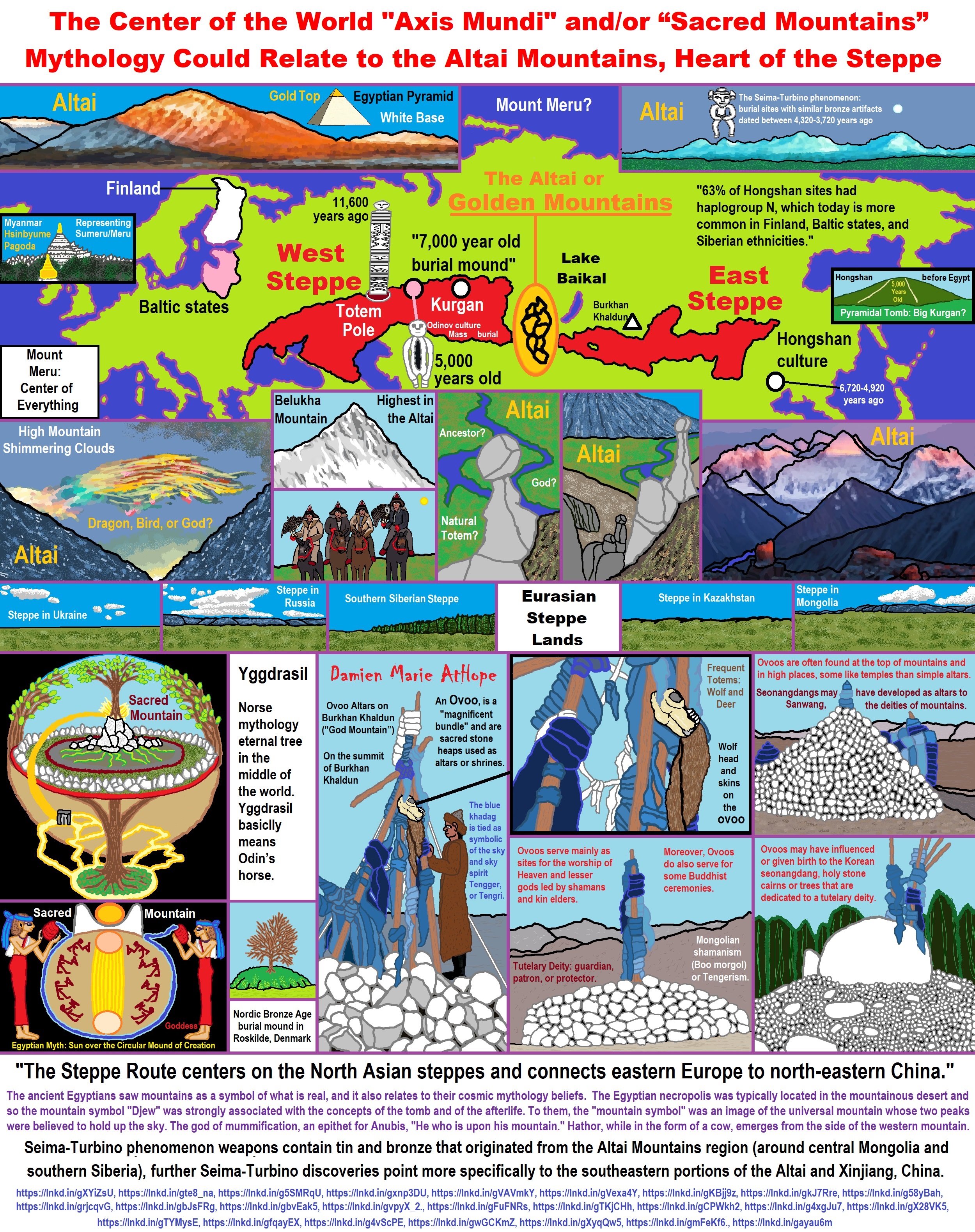
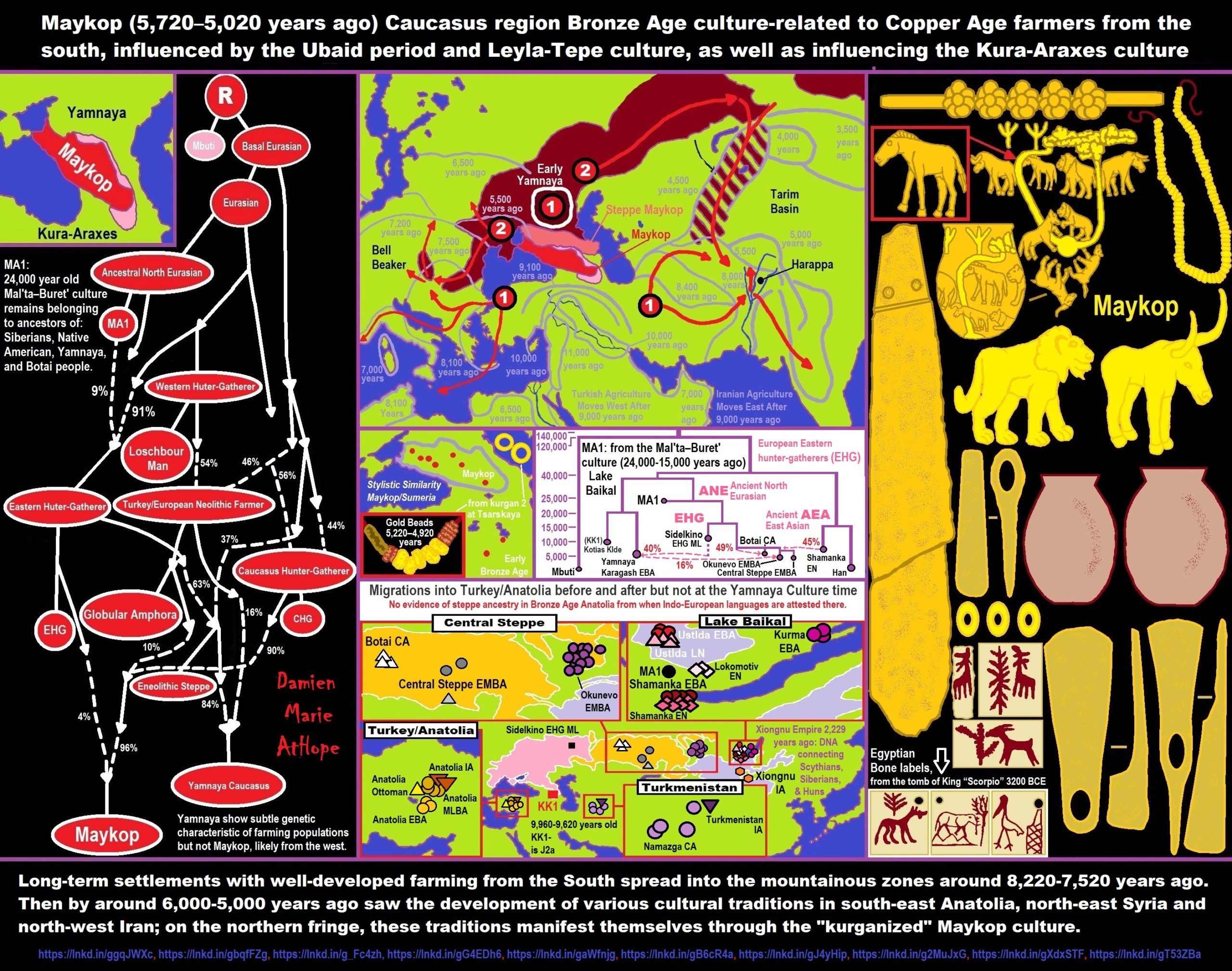
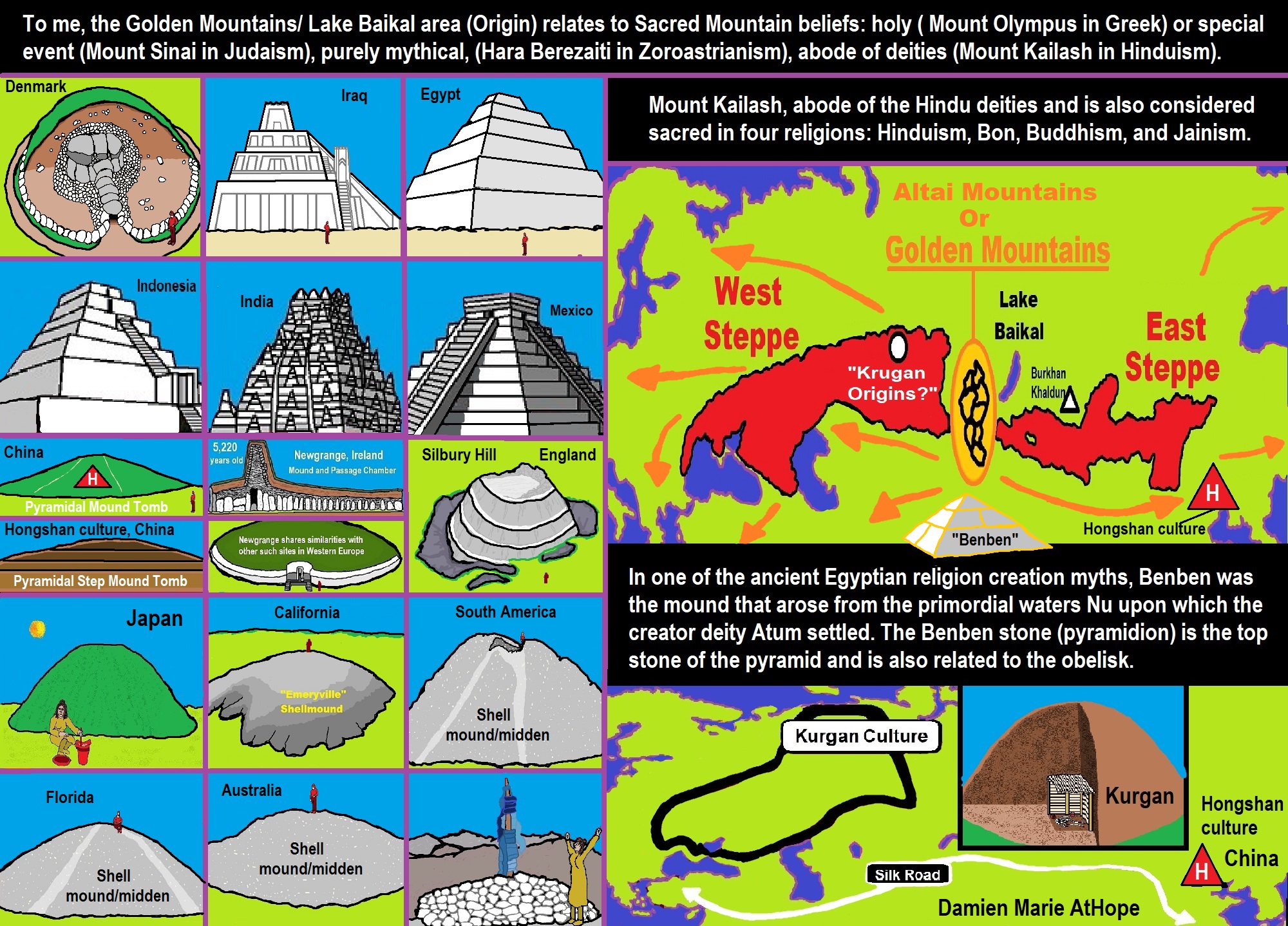
Chariot Origins at the Eurasian steppe
“A chariot is a type of carriage driven by a charioteer, usually using horses to provide rapid motive power. The oldest known chariots have been found in burials of the Sintashta culture in modern-day Chelyabinsk Oblast, Russia, dated to c. 2000 BCE. The critical invention that allowed the construction of light, horse-drawn chariots was the spoked wheel.” ref
“The chariot was a fast, light, open, two-wheeled conveyance drawn by two or more horses that were hitched side by side, and was little more than a floor with a waist-high guard at the front and sides. It was initially used for ancient warfare during the Bronze and Iron Ages, but after its military capabilities had been superseded by light and heavy cavalries, chariots continued to be used for travel and transport, in processions, for games, and in races.” ref
Ancient Horse Burials of the Bronze Age: Folklore and Superstition
“Horses have long been an important aspect in both western and eastern cultures. They are considered common in Indo-European traditions, with Chinese and Turkish traditions providing the most well-known from the east. It is significant that horse burials can be dated as far back as the Early Bronze Age, as there are few other animals that appear to hold such a valued position irrespective of culture. The earliest evidence comes from Newgrange in Ireland, a complex dating approximately to 2400 BCE, and horses remained prominent in Ireland until the present.” ref
“In the traditions of Ireland, Britain, and Scandinavia, horses have been known to represent warfare, fertility, status, and power, and this has often been indicated by the wealth of material culture discovered in graves, bogs, and other subterranean locations which have preserved the finds. Wheeled vehicles and harnesses are not uncommonly discovered, and horseshoes are symbols of good luck (even today) and have been found among other iron and horse-related objects included in both inhumations and cremations. While this work is intended to focus on horse burials in relation to Ireland in particular, it is important to note their affiliation with other neighboring cultures to emphasize the importance of horses in both religious and non-religious environments.” ref
“Horse skulls have also been found buried in foundations, and it has been the arduous task of archaeologists and ethnographers to determine what the purpose of those skulls might have been. As argued by Duffy (2015), there could be ritualistic and non-ritualistic implications. Though absolute certainty cannot be known without specific documentation to confirm, that there are two likely avenues by which these burials can be categorized reveals once again the pertinence of horses in Irish culture.” ref
“On the one hand, the skulls could be just what they appear to be: foundational burials. The ritual implications of this could have been akin to the placement of family heads in the walls and niches of houses in Çatalhöyük—that is, these burials could have been to ensure the good favor from both gods and ancestors, possibly ensuring this appreciation in lieu of being in possession of the actual remains of ancestors.” ref
“Horses are also popular in fairy lore up to the present and it is also possible that these burials served some purpose to ensure protection against the Otherworld, as indicated by Fanny D. Bergen (1895). Bergen discusses the various ways in which horses prove helpful against supernatural powers in Irish culture, such as their ability to feel evils “invisible to men” and thus protect their owners accordingly.” ref
“The opposing view of these ritualistic examples is that some foundational burials under homes and barns might have had a more practical purpose relating to the dispersal of supernatural spirits indirectly. Threshing was commonly practiced during the harvest, an activity requiring farmers to beat grains against the ground to dislodge the edible parts from the inedible. Dancing, meanwhile, was a popular social pastime in Irish culture, as evidenced by their longstanding céilí traditions and mythological texts.” ref
“According to a study by Moriarty (2015), the placement of horse skulls under the floorboards was intended enhance the resonance the sound of sound, improving the acoustics of these common locations. According to Hukantaival (2009), these skulls—referred to as “acoustic skulls”—it was “considered important that the sound of threshing carried far” and “it is well known that in many cultures loud noises are considered to expel evil forces”. While threshing was an important activity in Irish culture to cultivate grains, dancing was an equally important aspect of the social culture. The horse skulls would emphasize the loud echoes of the dancers’ feet just as it would the sounds of the threshing thereby protecting them during regular activities.” ref
“However, the aforementioned examples from the works of Duffy, Moriarty, and Hukantaival are not the only reasons why horses have been found buried. As mentioned at the beginning of this article, horses have been included in burials since the Early Bronze Age. Excavators have determined that the inclusion of a horse or the accoutrements of a horse (i.e., harness, bridle, and so on) were intended for various reasons, such as to exhibit the status of the deceased or to ensure the dead had transport to the Otherworld/underworld.” ref
“Depending on the culture, the inclusion of the horse served a variety of roles. While the precise reasons might never be known with absolute certainty, records can help in deducing the purposes. In Irish culture in particular, mythological texts like the Ulster Cycle, Lebor Gabála Érenn, Táin Bó Cúailnge, etc., laws codes, works of art (such as sculpture) all served to indicate the likely reasons for the burial of horses in particular. Nonetheless, though the practice of burying horse skulls has greatly decreased in popularity, horses still remain a valued aspect of Irish culture as suggested by present superstitions and the continued appreciation of mythology and lore.” ref
Horse Sacrifice?
“Horse sacrifice is the ritual killing and offering of a horse, usually as part of a religious or cultural ritual. Horse sacrifices were common throughout Eurasia with the domestication of the horse and continuing up until the spread of Abrahamic religions, or in some places like Mongolia, of Buddhism. The practice is rarely observed in some cultures even today. The Gaulish personal name Epomeduos is from ek’wo-medhu- (“horse + mead”), while aśvamedha is either from ek’wo-mad-dho- (“horse + drunk”) or ek’wo-mey-dho- (“horse + strength”).” ref
“Many ethnic religions from Indo-European speaking peoples show evidence for horse sacrifice, and comparative mythology suggests that they derive from a purported Proto-Indo-European ritual and common root, though the practice is also observed among non-Indo-European speaking peoples, especially in nomadic societies from the Eurasian steppe. Some scholars, including Edgar Polomé, regard the reconstruction of a purported common Proto-Indo-European ritual as unjustified due to the difference between the attested traditions.” ref
“Horses are often sacrificed in a funerary context, and interred with the deceased, a practice called horse burial. There is evidence but no explicit myths from the three branches of Indo-Europeans of a major horse sacrifice ritual based on a speculated mythical union of Indo-European kingship and the horse. The Indian Aśvamedha is the clearest evidence preserved, but vestiges from Latin and Celtic traditions allow the reconstruction of a few common attributes.” ref
“The reconstructed myth involves the coupling of a king with a divine mare which produced the divine twins. A related myth is that of a hero magically twinned with a horse foaled at the time of his birth (for example Cuchulainn, Pryderi), suggested to be fundamentally the same myth as that of the divine twin horsemen by the mytheme of a “mare-suckled” hero from Greek and medieval Serbian evidence, or mythical horses with human traits (Xanthos), suggesting totemic identity of the hero or king with the horse.” ref
Comparative Horse Sacrifice Rituals
Vedic (Indian) Horse Sacrifice: Ashvamedha
“Ashvamedha was a political ritual that was focused on the king’s right to rule. The horse had to be a stallion and it would be permitted to wander for a year, accompanied by people of the king. If the horse roamed off into lands of an enemy then that territory would be taken by the king, and if the horse’s attendants were killed in a fight by a challenger then the king would lose the right to rule. But if the horse stayed alive for a year then it was taken back to the king’s court where it was bathed, consecrated with butter, decorated with golden ornaments, and then sacrificed. After the completion of this ritual, the king would be considered as the undisputed ruler of the land which was covered by the horse.” ref
- “the sacrifice is connected with the elevation or inauguration of a member of the Kshatriya warrior caste
- the ceremony took place in spring or early summer
- the horse sacrificed was a stallion which won a race at the right side of the chariot
- the horse sacrificed was white-colored with dark circular spots, or with a dark front part, or with a tuft of dark blue hair
- it was bathed in water, in which mustard and sesame are mixed
- it was suffocated alongside a hornless ram and a he-goat, among other animals
- the chief queen lay down with the suffocated horse beneath a linen blanket and mimicked sexual intercourse with it, while the other queens perambulated the scene, slapping their thighs and fanning themselves
- the stallion was dissected along the “knife-paths” — with three knives made from gold, copper, and iron — and its portions awarded to various deities, symbolically invoking sky, atmosphere, and earth, while other priests started reciting the verses of Vedas, seeking healing and rejuvenation for the horse.” ref
Roman Horse Sacrifice
“The Roman Equus October ceremony involved:
- “the horse was dedicated to Mars, the Roman god of war
- the sacrifice took place on the Ides of October, but through ritual reuse was used in a spring festival (the Parilia)
- two-horse chariot races determined the victim, which was the right-hand horse of the winning team
- the horse is dismembered: the tail (cauda, possibly a euphemism for the penis) is taken to the Regia, the king’s residence, while two factions battle for possession of the head as a talisman for the coming year.” ref
Irish Horse Sacrifice
“Geraldus Cambrensis recorded a ceremony among the Irish:
There is in a northern and remote part of Ulster, among the Kenelcunil, a certain tribe which is wont to install a king over itself by an excessively savage and abominable ritual. In the presence of all the people of this land in one place, a white mare is brought into their midst. Thereupon he who is to be elevated, not to a prince but to a beast, not to a king but to an outlaw, steps forward in beastly fashion and exhibits his bestiality. Right thereafter the mare is killed and boiled piecemeal in water, and in the same water a bath is prepared for him. He gets into the bath and eats of the flesh that is brought to him, with his people standing around and sharing it with him. He also imbibes the broth in which he is bathed, not from any vessel, nor with his hand, but only with his mouth. When this is done right according to such unrighteous ritual, his rule and sovereignty are consecrated.” ref
The major points of comparison involve:
- “The king (most likely; Geraldus is somewhat indirect) engages in sexual intercourse with the mare to be sacrificed;
- The horse is dismembered and cooked in a cauldron, and consumed by the king who is also sitting in the cauldron.” ref
Norse Horse Sacrifice
“The Völsa þáttr mentions a Norse pagan ritual involving veneration of the penis of a slaughtered stallion. A freshly cut horse head was also used in setting up a nithing pole for a Norse curse. The Norse ceremony according to the description in Hervarar saga of the Swedish inauguration of Blot-Sweyn, the last or next to last pagan Germanic king, c. 1080:
- the horse is dismembered for eating
- the blood is sprinkled on the sacred tree at Uppsala.” ref
Horse Sacrifice Archaeology?
“The primary archaeological context of horse sacrifice are burials, notably chariot burials, but graves with horse remains reach from the Eneolithic well into historical times. Herodotus describes the execution of horses at the burial of a Scythian king, and Iron Age kurgan graves known to contain horses number in the hundreds. There are also frequent deposition of horses in burials in Iron Age India. The custom is by no means restricted to Indo-European populations, but is continued by Turkic tribes.” ref
Horse Burial?
“Horse burial is the practice of burying a horse as part of the ritual of human burial, and is found among many Indo-European speaking peoples and others, including Chinese and Turkic peoples. The act indicates the high value placed on horses in the particular cultures and provides evidence of the migration of peoples with a horse culture. Human burials that contain other livestock are rare; in Britain, for example, 31 horse burials have been discovered but only one cow burial, unique in Europe. This process of horse burial is part of a wider tradition of horse sacrifice. An associated ritual is that of chariot burial, in which an entire chariot, with or without a horse, is buried with a dead person.” ref
“The horse carries great symbolic meaning in human cultures (see horse worship). In Celtic and Germanic cultures, for instance, the horse “could be associated with the journeying sun”, and horses were deified and used in divination, but Celtic horse sacrifice is rare whereas horses were regularly sacrificed and buried alongside dead humans in Germany and Scandinavia. The Indo-European ubiquity and importance of horse sacrifice (which in many cases involves a symbolic coupling between king and mare) attests to this importance.” ref
“Considerable differences exist between different horse burials even within a single area and culture, so much so that it is perhaps impossible to generalize. Sometimes horses were cremated, sometimes buried; sometimes they were placed in the same grave as humans, sometimes in a different pit; some cultures appear to favor horse burial for male warriors, others did not seem to differentiate in gender.” ref
“The practice of horse burial is bound to the historical territory covered by the domesticated horse, which initially was the Eurasian Steppe, ca. 4000–3500 BCE. Early cultures with a mythology that would support horse burial are those in or bordering those areas—Turkic cultures, Chinese cultures, and Indo-European cultures.” ref
“It is claimed that a form of horse burial is attested from the Paleolithic, when the skin of a horse was hung over a pole; some of the animal’s bones were left inside the skin to preserve its shape. This supposed “head and hooves” culture, however, is only one explanation for archeological finds from the third millennium BCE. The earliest proven horse burial in the Old World dates back to the fifth or fourth millennium BCE and is found in S’ezzhee, in a cemetery on the Volga from the Samara culture.” ref
“Thousands of years later, Herodotus described the practice among the Scythians. Typically, such burials involved the sacrifice and burial of one or more horses to accompany the remains of high-ranked members or warriors. In China, horse burials (including chariots) are found beginning in the Shang Dynasty (1600–1100 BCE). Remains of the ritual are found in Kazakh culture, where a dead person’s horse is slaughtered a year after its owner’s death, in a ceremony accompanied by horse races. Horse burial and related rituals survived among other peoples as well into recent times, for instance among the Nez Perce people (where skinned and stuffed horses were used as grave monuments) and the Blackfoot Confederacy.” ref
“Sites featuring horse burials are found throughout the regions of the world occupied by Indo-Aryan, Turkic, and Chinese peoples. They include Tall al-Ajjul (Gaza strip, dating back to 2100 BCE), Central Iran, where horse burials are attested in the second millennium BCE, Marlik (in Iran, from the late second millennium BCE), and Gordium (in Phrygia, with horse burials attested possibly after 700 BCE). A horse burial from Bactria provides evidence of the migration in the second millennium BCE of horse cultures from Central Asia into Turkmenistan. A horse burial in Tell el-Dab’a, Egypt, evidences the introduction of the horse to Egypt by the Hyksos, in the Second Intermediate Period of Egypt (1650–1550 BCE).” ref
“A nomad’s kurgan burial of around 700 BCE at Kostromskaya in southern Russia included, as well as the principal male body with his accoutrements, thirteen humans with no adornment above him, and around the edges of the burial twenty-two horses buried in pairs. Horse burials are part of the Pazyryk burials, where lavishly decked-out horses were killed and sometimes buried in chambers separate from those containing human remains. They were characteristic in pre-Christian Hungary (one horse burial was excavated in Mikulčice, another in Sterlitamak) of the ninth and tenth centuries, especially for rich members of society, where people were buried next to the skin and the skull of a saddled horse; the rest of the horse meat was possibly eaten during a burial ceremony. Roman culture left horse burials throughout their empire, including first-century burials in modern-day Waremme, Belgium, and Beuningen, Netherlands.” ref
Horse Burial Among Germanic Cultures?
“Germanic peoples attached great significance to the horse; a horse may have been an acquaintance of the god Wodan, and they may have been (according to Tacitus) confidants of the gods. Scandinavian literature from the 8th to 11th centuries emphasizes the importance of horses in Viking society. Horses were closely associated with gods, especially Odin and Freyr. Horses played a central role in funerary practices as well as in other rituals. Horses were prominent symbols of fertility, and there were many horse fertility cults. The rituals associated with these include horse fights, burials, consumption of horse meat, and horse sacrifice.” ref
“Hengist and Horsa, the mythical ancestors of the Anglo-Saxons, were associated with horses, and references to horses are found throughout Anglo-Saxon literature. Actual horse burials in England are relatively rare and “may point to influence from the continent”. A well-known Anglo-Saxon horse burial (from the sixth/seventh century) is Mound 17 at Sutton Hoo, a few yards from the more famous ship burial in Mound 1. A sixth-century grave near Lakenheath, Suffolk, yielded the body of a man next to that of a “complete horse in harness, with a bucket of food by its head.” Another prominent example is the Wulfsen horse burial dated to 700–800 AD, near Hamburg Germany.” ref
“Horse burials are relatively widespread in Iceland; as of 1999, 115 graves were found that contained the remains of horses. There were so many graves in which the remains of a human female was associated with those of a horse, that it was speculated that a horse burial in association with a male warrior did not occur in Iceland.” ref
“Examination of the archaeological record in Norway has revealed some patterns that are comparable to horse burials in other areas. Of the six-hundred graves excavated forty of them are horse burials. Horse burials are found in both Norway and Iceland to occur more frequently with males, but are not exclusive to males. There are some female burials with horses, but a significantly lower number of them are found. Most graves are covered by circular or oval mounds. The grave goods found in Viking burials associated with horses in Norway and Iceland are also pretty similar. For male burials there are usually found weapons and tools, and women are usually found with tools, beads, brooches. Both genders are often found buried with riding equipment like horse bits and headstalls.” ref
“Viking burial rituals were complex and dramatic. One witness Ibn Fadlan Risala describes the ship burial ritual in detail. The burial consisted of days of mourning, sewing special burial clothes, dog sacrifice, running horses then cutting them into pieces and putting them in the ship with the deceased, and burning the whole thing. This shows that horse slaughter was dramatic and memorable; it was noted in this story. Also taking into consideration the economic value of horses, it was probably not a decision taken lightly. Given the public display of the sacrifice, it could not have solely been for personal religious reasons and could have had important social implications as well.” ref
Horse Burial among Chinese Culture
“Horse burials are well known from ancient China as well, beginning with the Shang Dynasty. Particularly notable is the tomb of Duke Jing of Qi (reigned 547–490 BCE), which contained a separate pit with the remains of possibly over 600 horses. Later burials, especially from the Tang dynasty, featured the well-known pottery horses.” ref
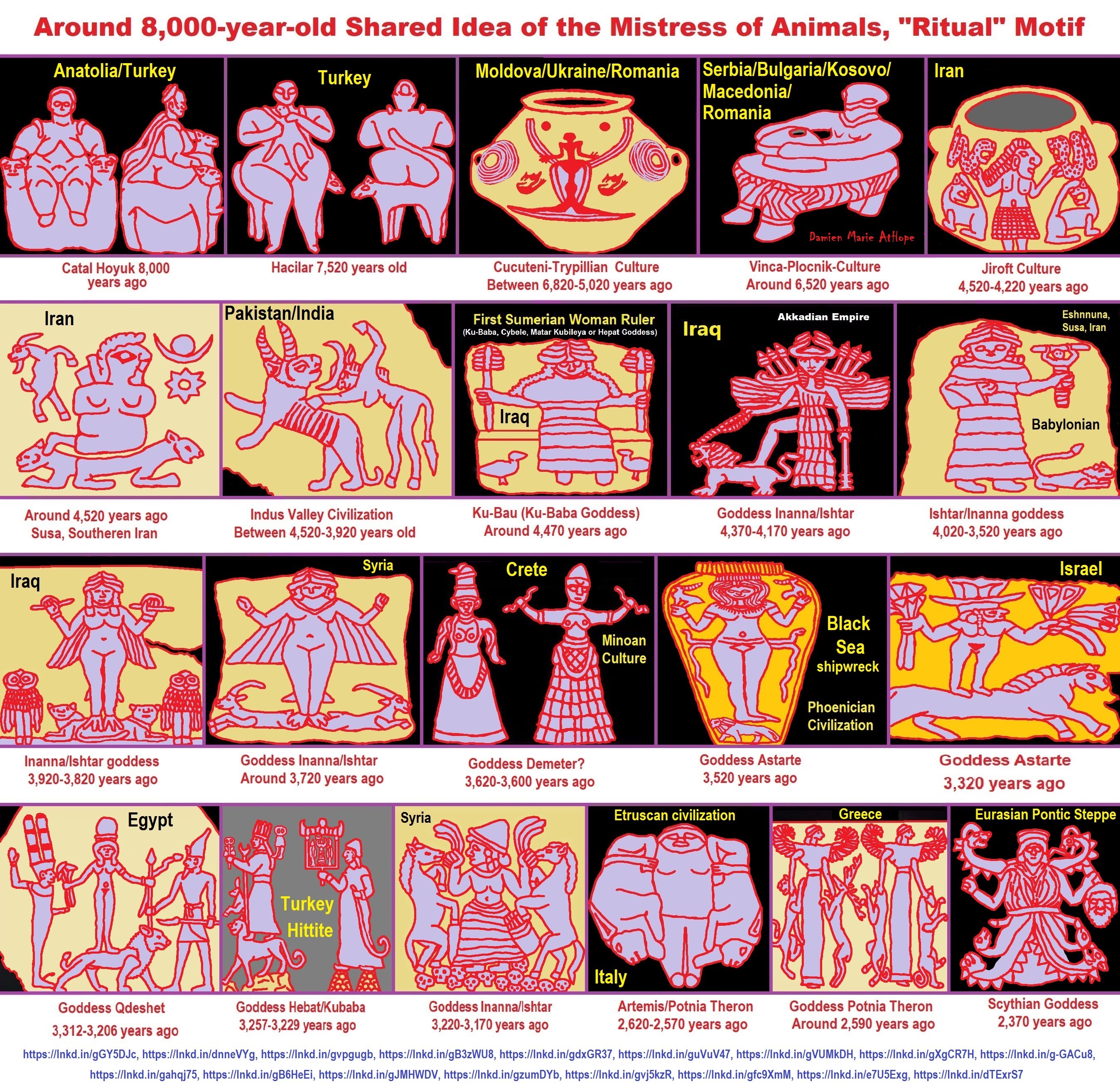
“The Yeniseian languages are a family of languages that are spoken by the Yeniseian people in the Yenisei River region of central Siberia. As part of the proposed Dené–Yeniseian language family, the Yeniseian languages have been argued to be part of “the first demonstration of a genealogical link between Old World and New World language families that meets the standards of traditional comparative–historical linguistics.” The only surviving language of the group today is Ket.” ref
“From hydronymic and genetic data, it is suggested that the Yeniseian languages were spoken in a much greater area in ancient times, including parts of northern China and Mongolia. It has been further proposed that the recorded distribution of Yeniseian languages from the 17th century onward represents a relatively recent northward migration, and that the Yeniseian urheimat lies to the south of Lake Baikal.” ref
“When a person died, his ulvei could pass into the sky or descend to the underworld, later returning to inhabit another individual. One of the shaman’s duties at funerals was to divine whether the ulvei had gone to the sky or to the underworld. Two categories of people in Ket society were traditionally involved in healing the sick. These were the shaman (known as sening) and the sorcerer (bangos, or bangoket, a term meaning ‘earth person’). The sening operated exclusively through magical intervention involving contact with the spirit world and did not resort to the use of natural medicines, while the bangos treated the sick with the help of talismans containing various plants and minerals. Certain categories of shamans were connected with the upper, heavenly world and were helped by the myriad spirits (esdeng) who dwelled in the seven layers of the sky. Women shamans were unable to travel to the sky and were limited to the earthly realm in their shamanic quests.” ref
“The sky god Es resided in the uppermost heaven, benign but remote from all but shamans. Particularly important were the Masters who controlled respectively the forests and game animals, water and fish, the mountains, and day and night. Kaygus, Master of Game Animals, was the son of a bear and a woman who offered animals, including himself, to kindly, ritual-observing men. This mystical unity was intensified by beliefs in the transmigration of souls, especially between people and bears. People and bears have seven souls; other animals, one; fish, none. Because souls of the dead could capture living kinsfolk in dreams, funerary rites were conducted by members of other clans. They included bathing the body, clothing it in a reversed manner, covering the face, placing the body facing the dwelling entrance and the west, and burial in the ground or in a tree bole (main stem of a tree). Personal articles were left broken here. Although there were no cemeteries, burials took place in distant sacred places.” ref

Horse and Sun Gods and Goddesses?
“Riding Across the Sky: Many sun gods and goddesses are humanoid and ride or drive a vessel of some sort across the sky. It may be a boat, a chariot, or a cup. The sun god of the Greeks and Romans, for example, rode in a four-horse (Pyrios, Aeos, Aethon, and Phlegon) chariot. In Hindu traditions, the sun god Surya travels across the sky in a chariot pulled by either seven horses or a single seven-headed horse. The chariot driver is Aruna, the personification of dawn. In Hindu mythology, they fight the demons of darkness.” ref
“There may be more than one god of the sun. The Egyptians differentiated among the aspects of the sun and had several gods associated with it: Khepri for the rising sun, Atum for the setting sun, and Re for the noontime sun, who rode across the sky in a solar bark. The Greeks and Romans also had more than one sun god. Sol (Sunna)NorseSun GoddessShe rides in a horse-drawn solar chariot. Or SuryaHinduSun GodRides the sky in a horse-drawn chariot.” ref
“In Gallo-Roman religion, Epona was a protector of horses, ponies, donkeys, and mules. She was particularly a goddess of fertility, as shown by her attributes of a patera, cornucopia, ears of grain, and the presence of foals in some sculptures. She and her horses might also have been leaders of the soul in the after-life ride, with parallels in Rhiannon of the Mabinogion. The worship of Epona, “the sole Celtic divinity ultimately worshipped in Rome itself”, as the patroness of cavalry, was widespread in the Roman Empire between the first and third centuries AD; this is unusual for a Celtic deity, most of whom were associated with specific localities.” ref
“Although known only from Roman contexts, the name Epona (‘Great Mare’) is from the Gaulish language; it is derived from the inferred Proto-Celtic *ekʷos ‘horse’, which gives rise to modern Welsh ebol ‘foal’, together with the augmentative suffix -on frequently, though not exclusively, found in theonyms (for example Sirona, Matrona) and the usual Gaulish feminine singular -a. In an episode preserved in a remark of Pausanias, an archaic Demeter Erinys (Vengeful Demeter) too had also been a Great Mare, who was mounted by Poseidon in the form of a stallion and foaled Arion and the Daughter who was unnamed outside the Arcadian mysteries. Demeter was venerated as a mare in Lycosoura in Arcadia into historical times.” ref
“Fernand Benoît found the earliest attestations of a cult of Epona in the Danubian provinces and asserted that she had been introduced in the limes of Gaul by horsemen from the east. That suggestion has not been generally taken up. Although the name is Gaulish, dedicatory inscriptions to Epona are in Latin or, rarely, Greek. They were made not only by Celts, but also by Germans, Romans, and other inhabitants of the Roman Empire. An inscription to Epona from Mainz, Germany, identifies the dedicator as Syrian.” ref
“A long Latin inscription of the first century BCE, engraved in a lead sheet and accompanying the sacrifice of a filly and the votive gift of a cauldron, was found in 1887 at Rom, Deux-Sèvres, the Roman Rauranum. Olmsted reads the inscription as invoking the goddess with an archaic profusion of epithets: Eponina ‘dear little Epona’, Atanta ‘horse-goddess’, Potia ‘powerful Mistress’ (compare Greek Potnia), Dibonia (Latin, the ‘good goddess’)”, Catona ‘of battle’, noble and good Vovesia. However, Olmsted’s interpretation has not been generally accepted by other scholars; Meid interprets the same inscription as an invocation of Dibona in vulgar Greek for aid in a romantic dispute.” ref
“Epona’s feast day in the Roman calendar was given as December 18 on a rustic calendar from Guidizzolo, Italy, although this may have been only a local celebration. She was incorporated into the imperial cult by being invoked on behalf of the Emperor, as Epona Augusta or Epona Regina.” ref
“The supposed autonomy of Celtic civilization in Gaul suffered a further setback with Fernand Benoît’s study of the funereal symbolism of the horseman with the serpent-tailed (“anguiforme”) daemon, which he established as a theme of victory over death, and Epona; both he found to be late manifestations of Mediterranean-influenced symbolism, which had reached Gaul through contacts with Etruria and Magna Graecia. Benoît compared the rider with most of the riders imaged around the Mediterranean shores.” ref
“Perceptions of native Celtic goddesses had changed under Roman hegemony: only the names remained the same. As Gaul was Romanized under the early Empire, Epona’s sovereign role evolved into a protector of cavalry. The cult of Epona was spread over much of the Roman Empire by the auxiliary cavalry, alae, especially the Imperial Horse Guard or equites singulares augustii recruited from Gaul, Lower Germany, and Pannonia. A series of their dedications to Epona and other Celtic, Roman, and German deities was found in Rome, at the Lateran. Her cult is said to have been “widespread also in Carinthia and Styria.” ref
“As Epane she is attested in Cantabria, northern Spain, on Mount Bernorio, Palencia; as Iccona Loiminna in Portugal on the Lusitanian inscription of Cabeço das Fráguas. A euhemeristic account of Epona’s origin occurs in the Parallela Minora, which were traditionally attributed to Plutarch (but are now classed as “Pseudo-Plutarch”): Fulvius Stellus hated women and used to consort with a mare and in due time the mare gave birth to a beautiful girl and they named her Epona. She is the goddess that is concerned with the protection of horses. So Agesilaüs in the third book of his Italian History.” ref
“The tale was passed along in the context of unseemly man-beast coupling in Giambattista Della Porta‘s edition of Magia naturalis (1589), a potpourri of the sensible and questionable, erroneously citing Plutarch’s Life of Solon. It may represent some recollection of Indo-European horse sacrifice, such as the Vedic ashvamedha and the Irish ritual described by Giraldus Cambrensis, both of which have to do with kingship. In the Celtic ritual, the king mates with a white mare thought to embody the goddess of sovereignty.” ref
“Sculptures of Epona fall into five types, as distinguished by Benoît: riding, standing or seated before a horse, standing or seated between two horses, a tamer of horses in the manner of potnia theron, and the symbolic mare and foal. In the Equestrian type, common in Gaul, she is depicted sitting side-saddle on a horse or (rarely) lying on one; in the Imperial type (more common outside Gaul) she sits on a throne flanked by two or more horses or foals. In distant Dacia, she is represented on a stela (now at the Szépmüvézeti Museum, Budapest) in the format of Cybele, seated frontally on a throne with her hands on the necks of her paired animals: her horses are substitutions for Cybele’s lions.” ref

Sintashta Culture
“The Sintashta culture (eastward Corded Ware culture/origin of the Indo-Iranian languages, with R1a (particularly R1a1a1) or R1b (particularly subclades of R1b1a1a) and ancestry from Yamnaya and Central European Middle Neolithic “oldest chariots, dating to around 2050–1900 BCE.” ref
“The oldest known chariots have been found in burials of the Sintashta culture in modern-day Chelyabinsk Oblast, Russia, dated to c. 2000 BCE. The critical invention that allowed the construction of light, horse-drawn chariots was the spoked wheel.” ref
“The Sintashta culture is a Middle Bronze Age archaeological culture of the Southern Urals, dated to the period c. 2200–1900 BCE. It is the first phase of the Sintashta–Petrovka complex, c. 2200–1750 BCE. The culture is named after the Sintashta archaeological site, in Chelyabinsk Oblast, Russia, and spreads through Orenburg Oblast, Bashkortostan, and Northern Kazakhstan. The Sintashta culture is thought to represent an eastward migration of peoples from the Corded Ware culture. It is widely regarded as the origin of the Indo-Iranian languages (Indo-Iranic languages), whose speakers originally referred to themselves as the Arya. The earliest known chariots have been found in Sintashta burials, and the culture is considered a strong candidate for the origin of the technology, which spread throughout the Old World and played an important role in ancient warfare. Sintashta settlements are also remarkable for the intensity of copper mining and bronze metallurgy carried out there, which is unusual for a steppe culture. Among the main features of the Sintashta culture are high levels of militarism and extensive fortified settlements, of which 23 are known.” ref
“Because of the difficulty of identifying the remains of Sintashta sites beneath those of later settlements, the culture was only distinguished in the 1990s from the Andronovo culture. It was then recognised as a distinct entity, forming part of the “Andronovo horizon”. Koryakova (1998) concluded from their archaeological findings that the Sintashta culture originated from the interaction of the two precursors Poltavka culture and Abashevo culture. Allentoft et al. (2015) concluded from their genetic results that the Sintashta culture should have emerged from an eastward migration of peoples from the Corded Ware culture. In addition, Narasimshan et al. (2019) cautiously cite that “morphological data has been interpreted as suggesting that both Fedorovka and Alakul’ skeletons are similar to Sintashta groups, which in turn may reflect admixture of Neolithic forest HGs and steppe pastoralists, descendants of the Catacomb and Poltavka cultures.” ref
“Sintashta emerged during a period of climatic change that saw the already arid Kazakh steppe region become even colder and drier. The marshy lowlands around the Ural and upper Tobol rivers, previously favored as winter refuges, became increasingly important for survival. Under these pressures both Poltavka and Abashevo herders settled permanently in river valley strongholds, eschewing more defensible hill-top locations. Its immediate predecessor in the Ural-Tobol steppe was the Poltavka culture, an offshoot of the cattle-herding Yamnaya horizon that moved east into the region between 2800 and 2600 BCE. Several Sintashta towns were built over older Poltavka settlements or close to Poltavka cemeteries, and Poltavka motifs are common on Sintashta pottery. Sintashta material culture also shows the influence of the late Abashevo culture, derived from the Fatyanovo–Balanovo culture, a collection of Corded Ware settlements in the forest steppe zone north of the Sintashta region that were also predominantly pastoralist.” ref
“Radiocarbon dating indicates that the Sintashta culture dates to between c. 2200 and 1750 BCE, roughly contemporary with the associated Abashevo and Petrovka cultures. Some authors date the Petrovka culture slightly later, from c. 1900 BCE. In Cis-Urals, burial sites Berezovaya and Tanabergen II showed Sintashta culture established there c. 2290–1750 BCE (68.2% probability), and the earliest values of this culture, in Trans-Urals, at the burial sites Sintashta II and Kamenny Ambar-5 (Kurgan 2) are c. 2200–2000 BCE. Chariots appear in southern Trans-Urals region in middle and late phases of the culture, c. 2050-1750 BC. Blöcher et al. (2023) consider Sintashta-Petrovka period came to an end in Trans-Urals c. 1900–1800 BCE.” ref
“Anthony (2007) assumes that probably the people of the Sintashta culture spoke “Common-Indo-Iranian”. This identification is based primarily on similarities between sections of the Rig Veda, a religious text which includes ancient Indo-Iranian hymns recorded in Vedic Sanskrit, and the funerary rituals of the Sintashta culture as revealed by archaeology. Some cultural similarities with Sintashta have also been found to be common with the Nordic Bronze Age of Scandinavia. There is linguistic evidence of interaction between Finno-Ugric and Indo-Iranian languages, showing influences from the Indo-Iranians into the Finno-Ugric culture. From the Sintashta culture the Indo-Iranian followed the migrations of the Indo-Iranians to Anatolia, the Iranian plateau, and the Indian subcontintinent. From the 9th century BCE onward, Iranian languages also migrated westward with the Scythians back to the Pontic steppe where the proto-Indo-Europeans came from.” ref
“The Sintashta economy came to revolve around copper metallurgy. Copper ores from nearby mines (such as Vorovskaya Yama) were taken to Sintashta settlements to be processed into copper and arsenical bronze. This occurred on an industrial scale: all the excavated buildings at the Sintashta sites of Sintashta, Arkaim, and Ust’e contained the remains of smelting ovens and slag. Around 10% of graves, mostly adult males, contained artifacts related to bronze metallurgy (molds, ceramic nozzles, ore, and slag remains, metal bars, and drops). However, these metal-production related grave goods rarely co-occur with higher-status grave goods. This likely means that those who engaged in metal production were not at the top of the social-hierarchy, even though being buried at a cemetery evidences some sort of higher status.” ref
“Much of Sintashta’s metal was destined for export to the cities of the Bactria–Margiana Archaeological Complex (BMAC) in Central Asia. The metal trade between Sintashta and the BMAC for the first time connected the steppe region to the ancient urban civilisations of the Near East: the empires and city-states of modern Iran and Mesopotamia provided a large market for metals. These trade routes later became the vehicle through which horses, chariots, and ultimately Indo-Iranian-speaking people entered the Near East from the steppe.” ref
“Allentoft et al. 2015 analyzed the remains of four individuals ascribed to the Sintastha culture. One male carried Y-haplogroup R1a and mt-J1c1b1a, while the other carried Y-R1a1a1b and mt-J2b1a2a. The two females carried U2e1e and U2e1h respectively. The study found a close autosomal genetic relationship between peoples of Corded Ware culture and Sintashta culture, which “suggests similar genetic sources of the two,” and may imply that “the Sintashta derives directly from an eastward migration of Corded Ware peoples.” Sintashta individuals and Corded Ware individuals both had a relatively higher ancestry proportion derived from the Central Europe, and both differed markedly in such ancestry from the population of the Yamnaya Culture and most individuals of the Poltavka Culture that preceded Sintashta in the same geographic region.” ref
“Individuals from the Bell Beaker culture, the Únětice culture, and contemporary Scandinavian cultures were also found to be closely genetically related to Corded Ware. A particularly high lactose tolerance was found among Corded Ware and the closely related Nordic Bronze Age. In addition, the study found samples from the Sintashta culture to be closely genetically related to the succeeding Andronovo culture. Estimates based on DATES (Distribution of Ancestry Tracts of Evolutionary Signals) suggest that genetic characteristics typical of the Sintashta culture formed by c. 3200 BCE. Allentoft et al. (2015) analyzed ancient DNA recovered from remains at four Sintashta sites. The five samples analyzed included the mitochondrial DNA haplogroups U2e, J1, J2, and N1a. The two male individuals both belonged to Y-chromosome haplogroup R1a1.” ref
“Narasimhan et al. 2019 analyzed the remains of several individuals associated with the Sintashta culture. mtDNA was extracted from two females buried at the Petrovka settlement. They were found to be carrying subclades of U2 and U5. The remains of fifty individuals from the fortified Sintastha settlement of Kamennyi Ambar was analyzed. This was the largest sample of ancient DNA ever sampled from a single site. The Y-DNA from thirty males was extracted. Eighteen carried R1a and various subclades of it (particularly subclades of R1a1a1), five carried subclades of R1b (particularly subclades of R1b1a1a), two carried Q1a and a subclade of it, one carried I2a1a1a, and four carried unspecified R1 clades. The majority of mtDNA samples belonged to various subclades of U, while W, J, T, H, and K also occurred. A Sintashta male buried at Samara was found to be carrying R1b1a1a2 and J1c1b1a. The authors of the study found the majority of Sintashta people (ca. 80%) to be closely genetically related to the people of the Corded Ware culture, the Srubnaya culture, the Potapovka culture, and the Andronovo culture. These were found to harbor mixed ancestry from the Yamnaya culture and peoples of the Central European Middle Neolithic, like the Globular Amphora culture. The remaining sampled Sintashta individuals belonged to various ancestral types different from the majority population, with affinities to earlier populations such as Eneolithic samples collected at Khvalynsk and hunter-gatherers from Tyumen Oblast in western Siberia. This indicates that the Sintashta settlement of Kamennyi Ambar was a cosmopolitan site that united a genetically heterogenous population in a single social group.” ref
“The dispersal of the DOM2 genetic lineage, believed to be the ancestor of all modern domesticated horses, is linked with the populations which preceded the Sintashta culture and their expansions. A genetic study published in 2021 suggests that these horses were selectively bred for desired traits including docility, stress tolerance, endurance running, and higher weight-carrying thresholds.” ref
Sintashta Warfare
“The preceding Abashevo culture was already marked by endemic intertribal warfare; intensified by ecological stress and competition for resources in the Sintashta period. This drove the construction of fortifications on an unprecedented scale and innovations in military technique such as the invention of the war chariot. Increased competition between tribal groups may also explain the extravagant sacrifices seen in Sintashta burials, as rivals sought to outdo one another in acts of conspicuous consumption analogous to the North American potlatch tradition. Sintashta artifact types such as spearheads, trilobed arrowheads, chisels, and large shaft-hole axes were taken east. Many Sintashta graves are furnished with weapons, although the composite bow associated later with chariotry does not appear.” ref
“Higher-status grave goods include chariots, as well as axes, mace-heads, spearheads, and cheek-pieces. Sintashta sites have produced finds of horn and bone, interpreted as furniture (grips, arrow rests, bow ends, string loops) of bows; there is no indication that the bending parts of these bows included anything other than wood. Arrowheads are also found, made of stone or bone rather than metal. These arrows are short, 50–70 cm long, and the bows themselves may have been correspondingly short. Sintashta culture, and the chariot, are also strongly associated with the ancestors of modern domestic horses, the DOM2 population. DOM2 horses originated from the Western Eurasia steppes, especially the lower Volga-Don, but not in Anatolia, during the late fourth and early third millennia BCE. Their genes may show selection for easier domestication and stronger backs.” ref
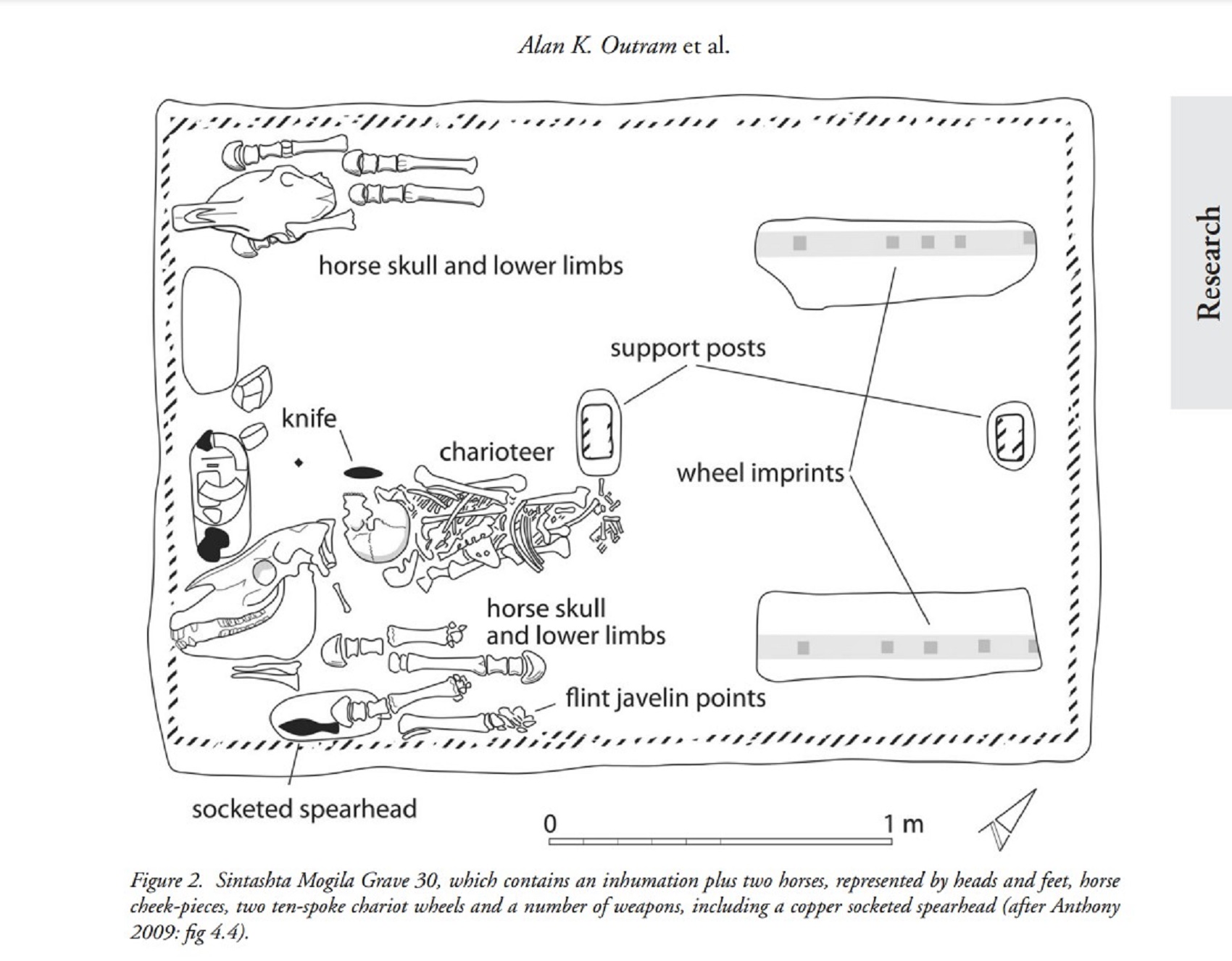
Horse Sacrifice
“The Sintashta culture dates from about 2100–1800 BCE, located along the rivers Ural and Tobol, and their tributaries, in the steppe territory immediately east of the Ural Mountains, with other key settlements being Arkaim, Alandskoye, and Andreyevskoye.” ref
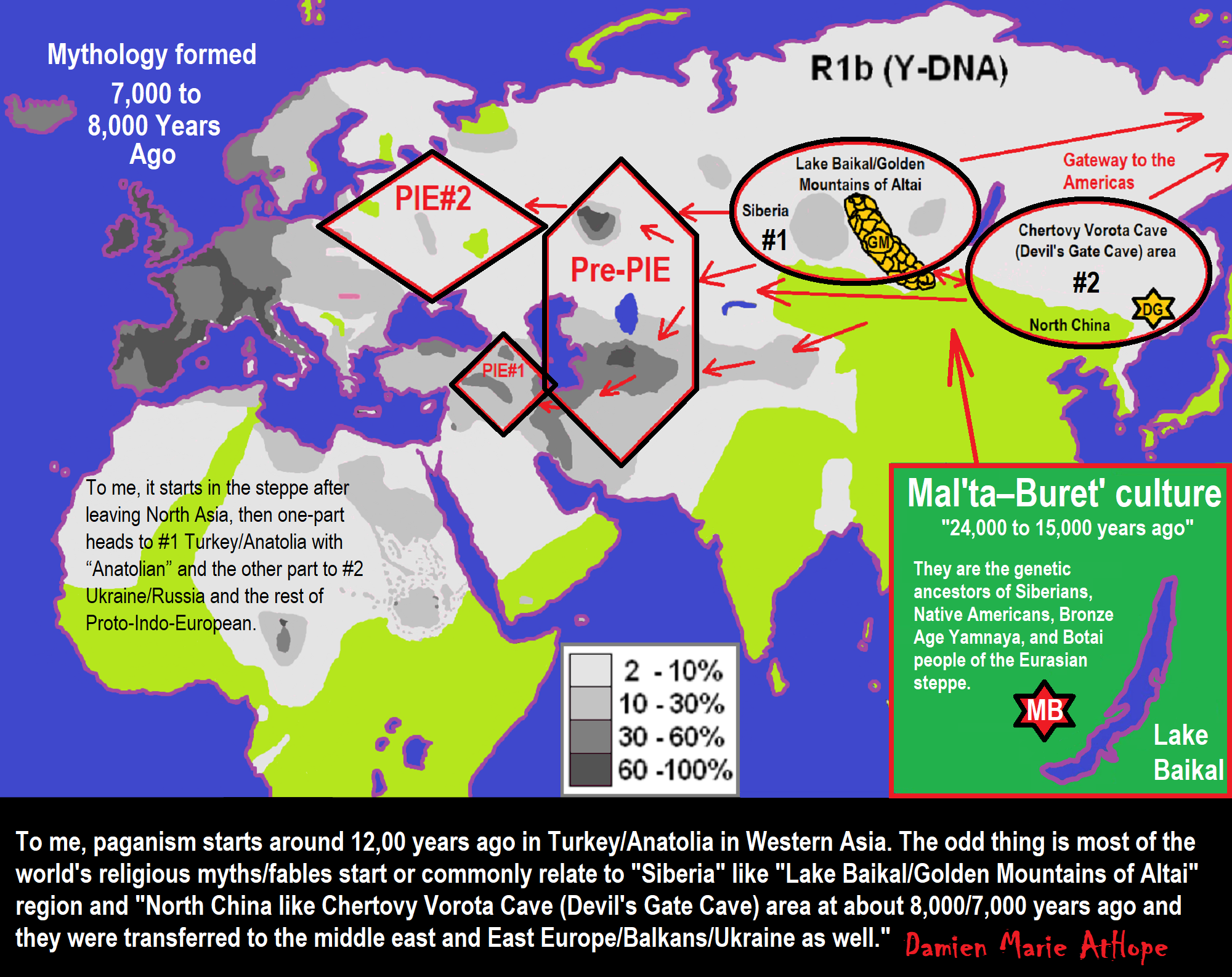
Haplogroup R possible time of origin about 27,000 years in Central Asia, South Asia, or Siberia:
- Mal’ta–Buret’ culture (24,000-15,000 years ago)
- Afontova Gora culture (21,000-12,000 years ago)
- Trialetian culture (16,000–8000 years ago)
- Samara culture (7,000-6,500 years ago)
- Khvalynsk culture (7,000-6,500 years ago)
- Afanasievo culture (5,300-4,500 years ago)
- Yamna/Yamnaya Culture (5,300-4,500 years ago)
- Andronovo culture (4,000–2,900 years ago) ref
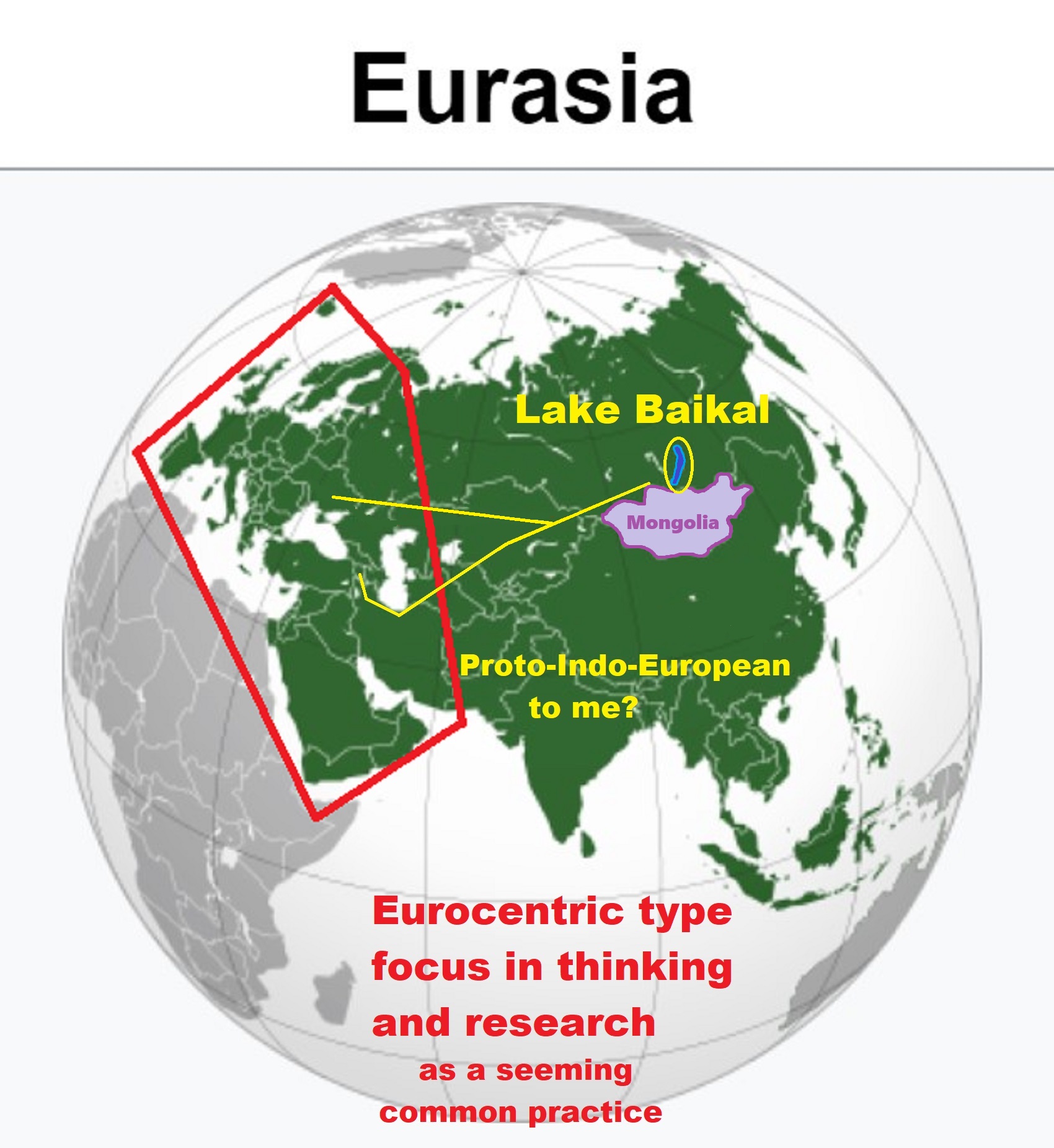
“Asian varieties of millet made their way from China to the Black Sea region of Europe by 5000 BCE or 7,000 years ago.” https://en.wikipedia.org/wiki/Millet
Origins of ‘Transeurasian’ languages traced to Neolithic millet farmers in north-eastern China about 9,000 years ago
“A study combining linguistic, genetic, and archaeological evidence has traced the origins of a family of languages including modern Japanese, Korean, Turkish and Mongolian and the people who speak them to millet farmers who inhabited a region in north-eastern China about 9,000 years ago. The findings outlined on Wednesday document a shared genetic ancestry for the hundreds of millions of people who speak what the researchers call Transeurasian languages across an area stretching more than 5,000 miles (8,000km).” ref
“Millet was an important early crop as hunter-gatherers transitioned to an agricultural lifestyle. There are 98 Transeurasian languages, including Korean, Japanese, and various Turkic languages in parts of Europe, Anatolia, Central Asia, and Siberia, various Mongolic languages, and various Tungusic languages in Manchuria and Siberia. This language family’s beginnings were traced to Neolithic millet farmers in the Liao River valley, an area encompassing parts of the Chinese provinces of Liaoning and Jilin and the region of Inner Mongolia. As these farmers moved across north-eastern Asia over thousands of years, the descendant languages spread north and west into Siberia and the steppes and east into the Korean peninsula and over the sea to the Japanese archipelago.” ref
“Eurasiatic is a proposed language with many language families historically spoken in northern, western, and southern Eurasia; which typically include Altaic (Mongolic, Tungusic, and Turkic), Chukchi-Kamchatkan, Eskimo–Aleut, Indo-European, and Uralic.” ref
“Voiced stops such as /d/ occur in the Indo-European, Yeniseian, Turkic, Mongolian, Tungusic, Japonic and Sino-Tibetan languages. They have also later arisen in several branches of Uralic.” ref
“Uralo-Siberian is a hypothetical language family of Uralic, Yukaghir, Eskimo–Aleut and besides linguistic evidence, several genetic studies, support a common origin in Northeast Asia.” ref
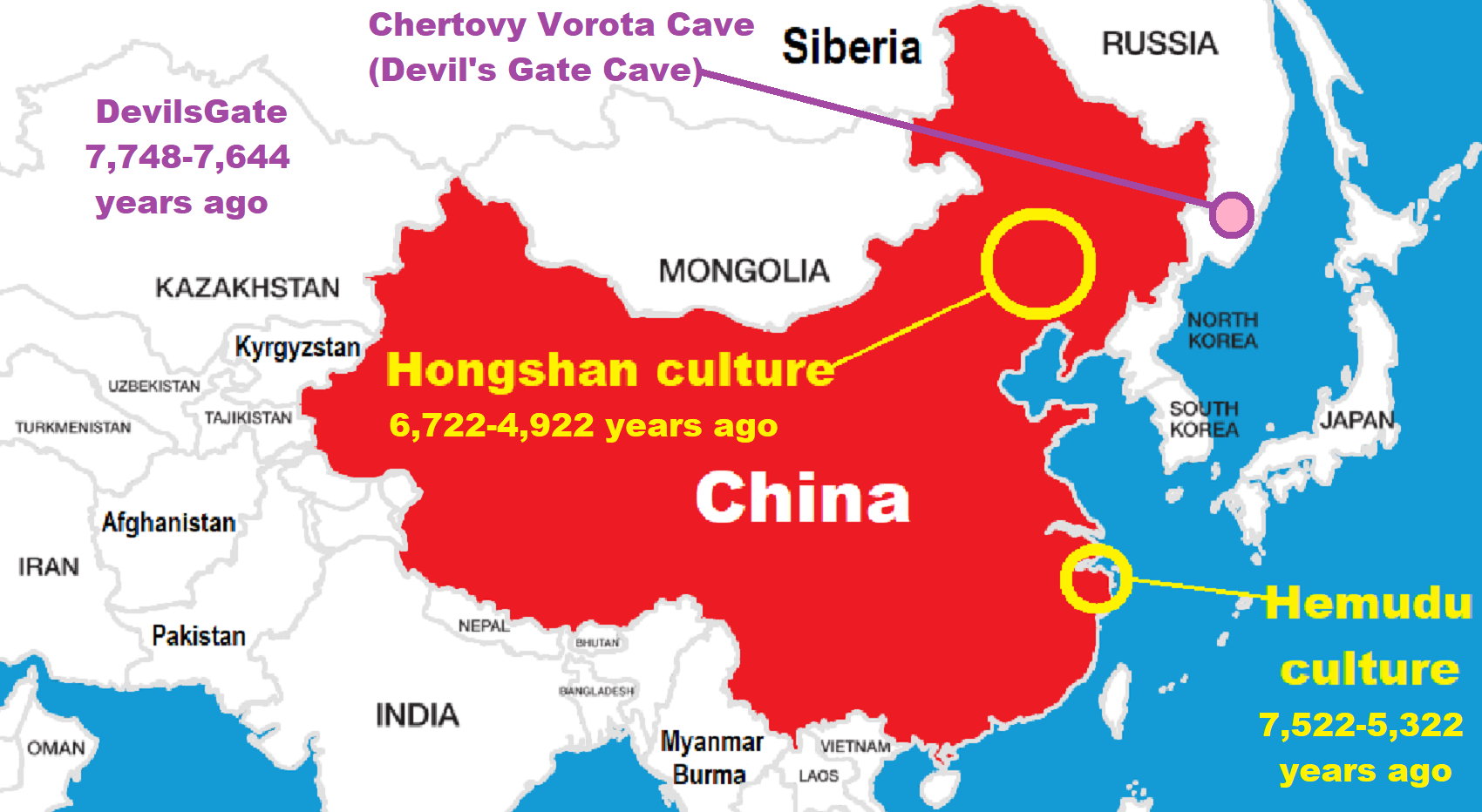

Pic ref
Ancient Women Found in a Russian Cave Turn Out to Be Closely Related to The Modern Population https://www.sciencealert.com/ancient-women-found-in-a-russian-cave-turn-out-to-be-closely-related-to-the-modern-population
Abstract
“Ancient genomes have revolutionized our understanding of Holocene prehistory and, particularly, the Neolithic transition in western Eurasia. In contrast, East Asia has so far received little attention, despite representing a core region at which the Neolithic transition took place independently ~3 millennia after its onset in the Near East. We report genome-wide data from two hunter-gatherers from Devil’s Gate, an early Neolithic cave site (dated to ~7.7 thousand years ago) located in East Asia, on the border between Russia and Korea. Both of these individuals are genetically most similar to geographically close modern populations from the Amur Basin, all speaking Tungusic languages, and, in particular, to the Ulchi. The similarity to nearby modern populations and the low levels of additional genetic material in the Ulchi imply a high level of genetic continuity in this region during the Holocene, a pattern that markedly contrasts with that reported for Europe.” ref
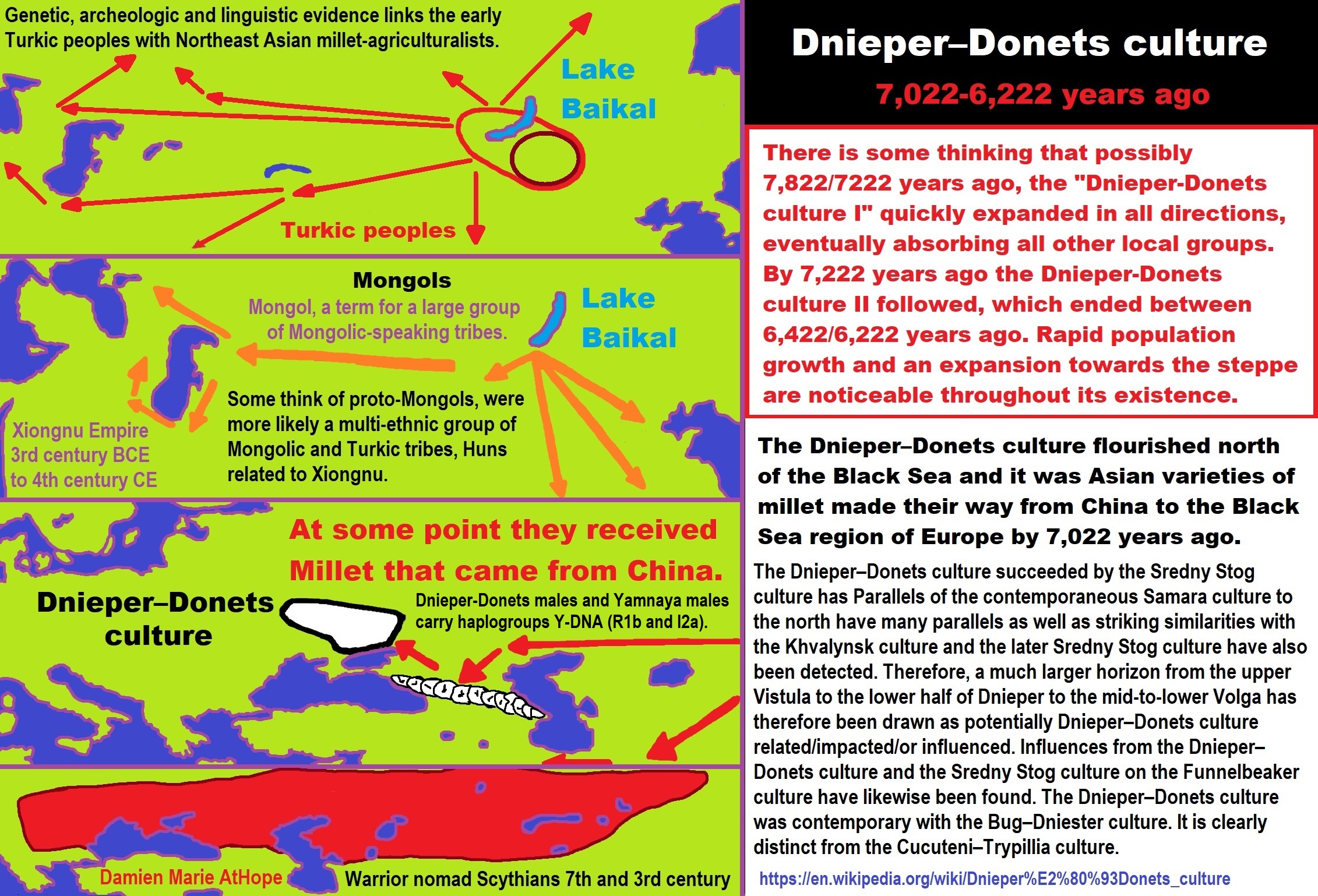

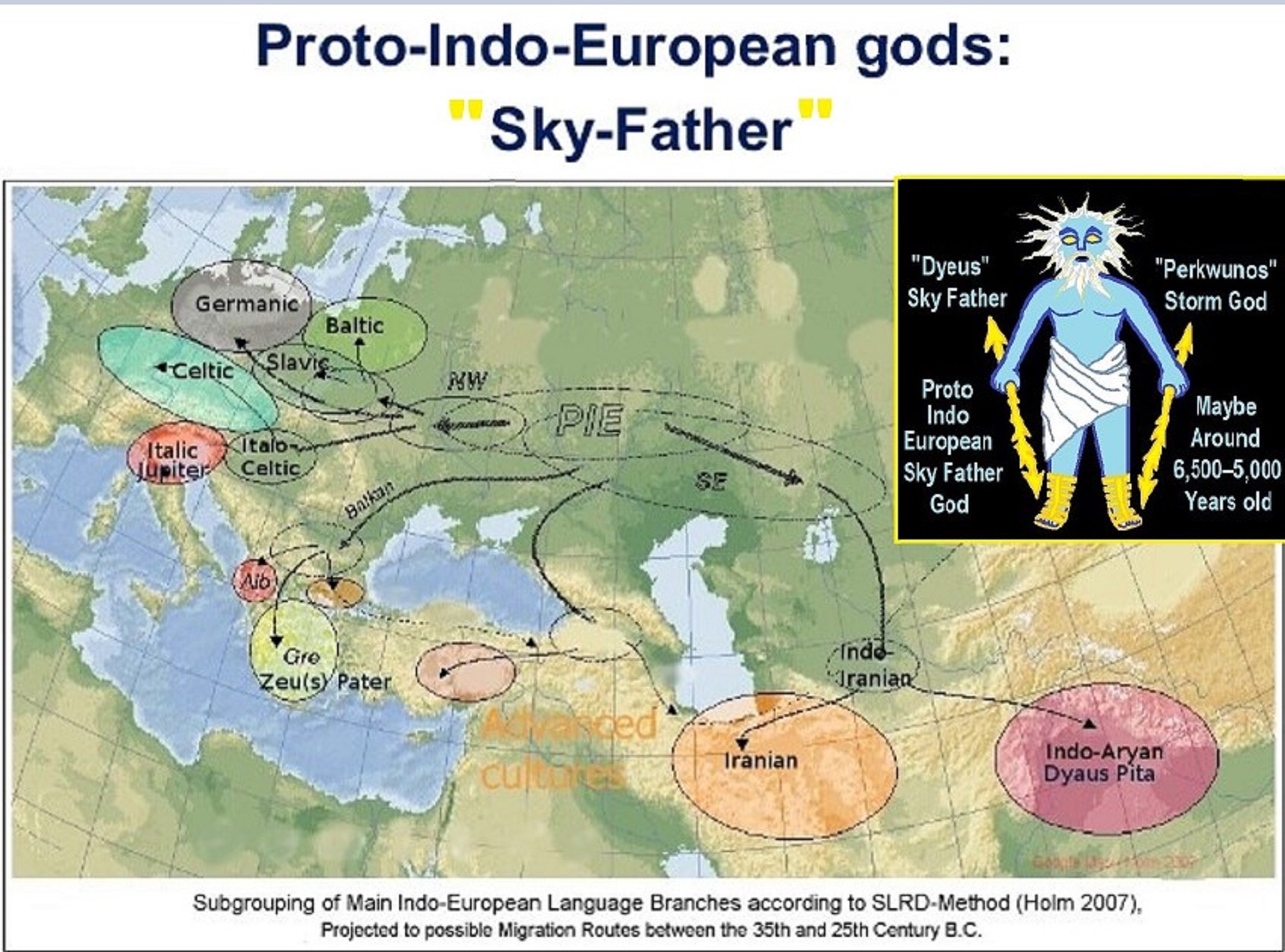
Swift Horses” from Proto-Indo-European to Greek
“Horses are nearly ubiquitous in the early recorded poetries of the Indo-European world, and one particular facet of this presents a perfect starting point for our discussion: a reconstructible Proto-Indo-European poetic expression describing horses. For the earliest poetries of Greece, India, and Iran not only treat horses in ways that are strikingly similar but even utilize some of the same poetic vocabulary for describing them. In particular, horses in Homer are described with the phrase ὠκέες ἵπποι, “swift horses,” while the Avestan Gathas use the corresponding āsauuō aspåŋhō, and the Sanskrit Vedas use āśavas aśvās. All three of these descend directly from the same PIE phrase, *h1ōk̑éu̯-es h1ék̑u̯-ōs. This shared history indicates that the phrase *h1ōk̑éu̯-es h1ék̑u̯-ōs is likely to have been in use in the poetry of the PIE speaking community and that the Homeric ὠκέες ἵπποι reflects a direct continuation of this prehistoric usage.” ref
“This is not to say, of course, that PIE poetry deployed this phrase in precisely this form and precisely this order on all occasions, although it may be assumed that it did at times. As Edwards remarks in his criticism of this conventional understanding of formulas, a formula is not a thing “handed down over the ages, like a mummified cadaver, fixed in memory.” Instead, what are generally perceived as formulas, and will conventionally be called so here, are the results of oral compositional techniques which constantly and innovatively exploit thematic, phonetic, and metrical associations to facilitate composition in performance. These techniques, which may more truly than formulas be considered the inheritance of one generation of oral singers from another, render certain patterns as naturally, not prescriptively, frequent products of such composition. That is to say that the sorts of scenes and activities in which horses are likely to be mentioned will restrict the vocabulary items with which they occur and that the poetic devices employed within the singer’s cultural tradition, along with the metrical restrictions of the poetic genre, will further facilitate certain associations of vocabulary which appear as formulas in the fixed and popular sense. In some limited cases, such as Parry’s famous noun-epithet formulas, specific coincidences of vocabulary are so frequent that they do genuinely function as bound units, but these are exceptional.” ref
“Swift Horses” in Greek
“The fact that this PIE phrase is so unlike ὠκέες ἵπποι is paradoxically reaffirming. For ὠκέες ἵπποι is relatively devoid of obviously poetic qualities, especially in comparison to its cognates, Avestan āsauuō aspåŋhō and Vedic āśavas aśvās, despite the fact that it is more frequently utilized. One would, in fact, expect a reconstruction of its linguistically earlier forms to restore to the phrase some earlier poetic features. This sort of reconstruction is routinely utilized on a smaller scale regarding Homeric phrases with original digamma, such as ὀλίγον γόνυ γουνός, reconstructed as ὀλίγον γόνυ γoνϝός so as to reveal an earlier and much tidier euphonic sequence (Iliad XI 547). Similarly we find ὠκέες ἵπποι shortly after its loss of the digamma in ὠκέες (< ōkéu̯es), and the conversion of the labiovelar, the qu-sound, in ἵπποι (< híku̯oi), which would have euphonically patterned with both the velar k-sound of ὠκέες and the labial semi-vowel sound of the lost digamma, and sounded something like ὠκέϝες ἵκϝοι. Phonically then there is good reason for this pair of words to have maintained its close poetic relationship until a period only shortly before our Homeric verse was recorded, since the comparatively unpoetic appearance of ὠκέες ἵπποι would appear to be a very recent development.” ref
“It explains why the Greek oral poets would have inherited the phrase initially, but not why they would have preserved it and continued to use it after the occurrence of the linguistic shifts that permanently altered its poetic qualities. To understand this, one must examine the applications of the phrase in early epic itself. The phrase occurs declined into nearly every case. Although Iliadic uses dominate, and will receive most consideration here, is list all occurrences in Homer and Hesiod simply to provide a good impression of the phrase’s proliferation throughout early Greek poetry. The symbol / indicates a line end, and ellipses mark wherever other words intervene between the two under consideration.” ref
Ritual Details of the Irish Horse Sacrifice in Betha Mholaise Daiminse
“The kingly inauguration ritual described by Gerald of Wales has often been compared with horse sacrifice rituals in other Indo-European traditions, in particular the Roman October Equus and the Vedic aśvamedha. Among the doubts expressed about the Irish account is that it is the only text that describes the ritual. David Fickett-Wilbar argues, however, that a similar ritual is found in another text, the Irish Life of St. Molaise of Devenish (Beatha Mholaise Daiminise), not only confirming the accuracy of much of Gerald’s account, but providing additional details.” ref
Gods and the Horse as well as Horse Sun Gods?
“In ancient Greek religion and mythology, Helios (/ˈhiːliəs, -ɒs/; Ancient Greek: Ἥλιος pronounced [hɛ̌ːlios], lit. ’Sun’; Homeric Greek: Ἠέλιος) is the god who personifies the Sun. His name is also Latinized as Helius, and he is often given the epithets Hyperion (“the one above”) and Phaethon (“the shining”). Helios is often depicted in art with a radiant crown and driving a horse-drawn chariot through the sky. He was a guardian of oaths and also the god of sight.” ref
“Helios figures prominently in several works of Greek mythology, poetry, and literature, in which he is often described as the son of the Titans Hyperion and Theia and brother of the goddesses Selene (the Moon) and Eos (the Dawn). Helios’ most notable role in Greek mythology is the story of his mortal son Phaethon who asked his father for a favour; Helios agreed, but then Phaethon asked for the privilege to drive his four-horse fiery chariot across the skies for a single day.” ref
“The Greek noun ἥλιος (GEN ἡλίου, DAT ἡλίῳ, ACC ἥλιον, VOC ἥλιε) (from earlier ἁϝέλιος /hāwelios/) is the inherited word for the Sun from Proto-Indo-European *seh₂u-el which is cognate with Latin sol, Sanskrit surya, Old English swegl, Old Norse sól, Welsh haul, Avestan hvar, etc. The Doric and Aeolic form of the name is Ἅλιος, Hálios. In Homeric Greek his name is spelled Ἠέλιος, Ēélios, with the Doric spelling of that being Ἀέλιος, Aélios. In Cretan it was Ἀβέλιος (Abélios) or Ἀϝέλιος (Awélios). The Greek view of gender was also present in their language. Ancient Greek had three genders (masculine, feminine and neuter), so when an object or a concept was personified as a deity, it inherited the gender of the relevant noun; helios is a masculine noun, so the god embodying it is also by necessity male. The female offspring of Helios were called Heliades, the male Heliadae. ” ref
“THE HIPPOI ATHANATOI were the immortal horses of the gods. Most of these divine steeds were offspring of the four Anemoi (Wind-Gods) who themselves drew the chariot of Zeus in the guise of horses.” ref
THE HORSES OF HERA
“Homer, Iliad 5. 711 ff (trans. Lattimore) (Greek epic C8th B.C.): “Hera, high goddess, daughter of Kronos (Cronus) the mighty, went away to harness the gold-bridled [immortal] horses. Then Hebe in speed set about the chariot the curved wheels eight-spoked and brazen, with an axle of iron both ways. Golden is the wheel’s felly imperishable, and outside it is joined, a wonder to look upon, the brazen running-rim, and the silver naves revolve on either side of the chariot, whereas the car itself is lashed fast with plaiting of gold and silver, with double chariot rials that circle about it, and the pole of the chariot is of silver, to whose extremity Hebe made fast the golden and splendid yoke, and fastened the harness, golden and splendid, and underneath the yoke Hera, furious for hate and battle, led the swift-running horses . . . Hera laid the lash swiftly on the horses; and moving of themselves groaned the gates of the sky that the Horai (Horae) guarded . . . Through the way between they held the speed of their goaded horses . . . Hera lashed on the horses, and they winged their way unreluctant through the space between the earth and the starry heaven. As far as into the hazing distance a man can see with his eyes, who sits in his eyrie gazing on the wine-blue water, as far as this is the stride of the gods’ proud neighing horses. Now as they cam to Troy land and the two running rivers where Simoeis and Skamandros (Scamander) dash their waters together, there the goddess of the white arms, Hera, stayed her horses, slipping them from the chariot, and drifting close mist about them, and Simoeis grew as grass ambrosia for them to graze on.” Valerius Flaccus, Argonautica 5. 184 ff (trans. Mozley) (Roman epic C1st A.D.): “Juno [Hera] and Pallas [Athena] in full panoply of glittering cloud, bring to a halt the chariots of the wing-footed steeds.” ref
LIST OF IMMORTAL HORSES
“ABRAXAS An alternative name for one of the four immortal horses of the sun-god Helios.
AITHON (1) (Aethon) One of the fire-breathing steeds of Ares.
AITHON (2) (Aethon) An alternative name for one of the four immortal horses of the sun-god Helios.
AITHOPS (Aethops) One of the four immortal horses of the sun-god Helios.
ANEMOI, THE The gods of the four winds, who in the guise of horses drew the chariot of Zeus.
AREION (Arion) An immortal horse owned by Herakles and later the hero Adrastos.
BALIOS (Balius) One of a pair of immortal horses gifted to the hero Peleus by the gods. The drove the chariot of his son Akhilleus (Achilles) in the Trojan War.
BOREAS The god of the North-Wind who, in the shape of a horse, drew the chariot of Zeus.
BRONTE One of the four immortal horses of the sun-god Helios.
EUOS One of the four immortal horses of the sun-god Helios.
EUROS (Eurus) The god of the East-Wind who, in the shape of a horse, drew the chariot of Zeus.
HARPAGOS (Harpagus) One of the immortal horses of the Dioskouroi (Dioscuri) twins.
HIPPALEKTRYON (Hippalectryon) A creature with the foreparts of a rooster and the rearparts of a horse.
HIPPOKAMPOI (Hippocamps) Fish-tailed horses of the sea, four of which drew the chariot of Poseidon.
KONABOS (Conabus) One of the fire breathing steeds of Ares.
KYLLAROS (Cyllarus) One of the immortal horses of the Dioskouroi (Dioscuri) twins.
LAMPOS (Lampus) One of the two immortal steeds of the dawn-goddess Eos.
NOTOS (Notus) The god of the South-Wind who, in the shape of a horse, drew the chariot of Zeus.
PEGASOS (Pegasus) A winged immortal horse born from the neck of the beheaded Gorgon Medousa (Medusa).
PEGASOI (Pegasi) A breed of winged immortal horses.
PHAETHON One of the two immortal steeds of the dawn-goddess Eos.
PHLEGON An alternative name for one of the four immortal horses of the sun-god Helios.
PHLOGEUS (1) One of the immortal horses of the Dioskouroi (Dioscuri) twins.
PHLOGEUS (2) One of the fire-breathing steeds of Ares.
PHOBOS (Phobus) One of the fire-breathing steeds of Ares.
PODARKES (Podarces) One of a pair of immortal horses owned by Erekhtheus (Erechtheus), king of Athens.
PYROIS An alternative name for one of the four immortal horses of the sun-god Helios.
SKYLLA (Scylla) One of the eight immortal horses which drew the chariot of Poseidon.
STEROPE One of the four immortal horses of the sun-god Helios.
STHENIOS (Sthenius) One of the eight horses of the sea-god Poseidon.
THERBEEO An alternative name for one of the four immortal horses of the sun-god Helios.
TROJAN HIPPOI, THE The twelve immortal horses owned by the Trojan kings Erikhthonios (Erichthonius) and Laomedon. They were promised to Herakles as reward for rescuing princess Hesione from a sea-monster.
XANTHOS (1) (Xanthus) One of a pair of immortal horses gifted to the hero Peleus by the gods. The drove the chariot of his son Akhilleus (Achilles) in the Trojan War.
XANTHOS (2) (Xanthus) One of the immortal horses of the Dioskouroi (Dioscuri) twins.
XANTHOS (3) (Xanthus) One of a pair of immortal horses owned by Erekhtheus (Erechtheus), king of Athens.
ZEPHYROS (Zephyrus) The god of the West-Wind who, in the shape of a horse, drew the chariot of Zeus.” ref
Surya
“Surya (/ˈsuːrjə/;Sanskrit: सूर्य, IAST: Sūrya) is the Sun as well as the solar deity in Hinduism. He is traditionally one of the major five deities in the Smarta tradition, all of whom are considered as equivalent deities in the Panchayatana puja and a means to realise Brahman. Surya in Indian literature is referred to by various names, which typically represent different aspects or phenomenological characteristics of the Sun. The figure of Surya as we know him today is an amalgamation of various different Rigvedic deities. Other names of Surya in ancient Indian literature include Aditya, Arka, Bhanu, Savitr, Pushan, Ravi, Martanda, Mitra, Bhaskara, Prabhakara, Kathiravan, and Vivasvan.” ref
“The iconography of Surya is often depicted riding a chariot harnessed by horses, often seven in number which represent the seven colours of visible light, and the seven days of the week. During the medieval period, Surya was worshipped in tandem with Brahma during the day, Shiva at noon, and Vishnu in the evening. In some ancient texts and art, Surya is presented syncretically with Indra, Ganesha, and others. Surya as a deity is also found in the arts and literature of Buddhism and Jainism. In the Mahabharata and Ramayana, Surya is represented as the spiritual father of Rama and Karna (protagonists of the Ramayana and the Mahabharata, respectively).” ref
“Surya was a primary deity in veneration by the characters of the Mahabharata and Ramayana, along with Shiva. Surya is depicted with a Chakra, also interpreted as Dharmachakra. Surya is the lord of Simha (Leo), one of the twelve constellations in the zodiac system of Hindu astrology. Surya or Ravi is the basis of Ravivara, or Sunday, in the Hindu calendar. Major festivals and pilgrimages in reverence for Surya include Makar Sankranti, Pongal, Samba Dashami, Ratha Saptami, Chath puja, and Kumbha Mela.” ref
Deities depicted as horses or whose myths and iconography are associated with the horse.
“B
C
D
E
H
K
L
M
P
R
S
U
Y
Z
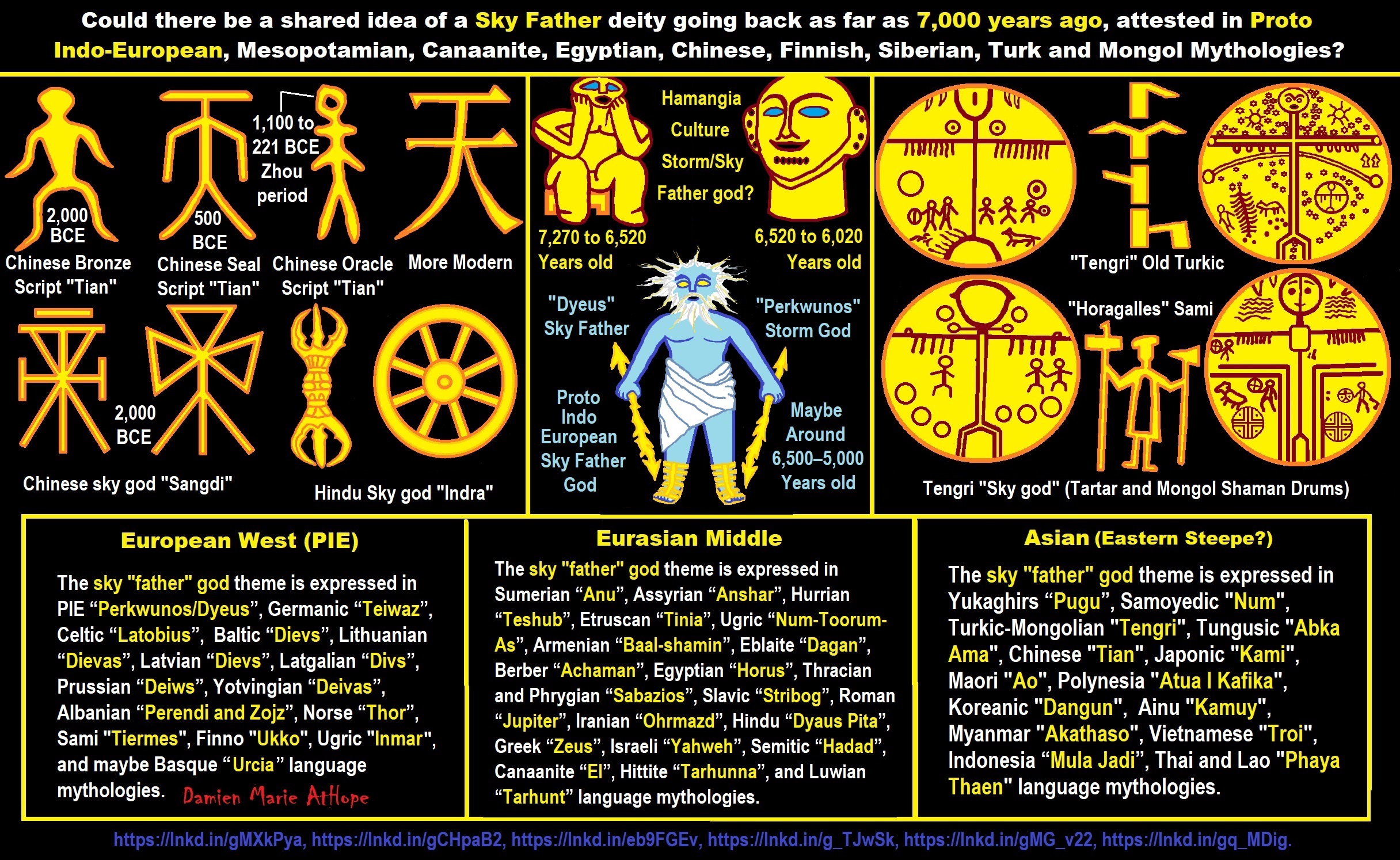
Sky deity
“The sky often has important religious significance. Many religions, both polytheistic and monotheistic, have deities associated with the sky. The daytime sky deities are typically distinct from the nighttime ones. Stith Thompson‘s Motif-Index of Folk-Literature reflects this by separating the category of “Sky-god” (A210) from that of “Star-god” (A250). In mythology, nighttime gods are usually known as night deities and gods of stars simply as star gods. Both of these categories are included here since they relate to the sky. Luminary deities are included as well since the sun and moon are located in the sky. Some religions may also have a deity or personification of the day, distinct from the god of the day lit sky, to complement the deity or personification of the night.” ref
“Daytime gods and nighttime gods are frequently deities of an “upper world” or “celestial world” opposed to the earth and a “netherworld” (gods of the underworld are sometimes called “chthonic” deities). Within Greek mythology, Uranus was the primordial sky god, who was ultimately succeeded by Zeus, who ruled the celestial realm atop Mount Olympus. In contrast to the celestial Olympians was the chthonic deity Hades, who ruled the underworld, and Poseidon, who ruled the sea. Gods may rule the sky as a pair (for example, ancient Semitic supreme god El and the fertility goddess Asherah whom he was most likely paired with). The following is a list of sky deities in various polytheistic traditions arranged mostly by language family, which is typically a better indicator of relatedness than geography.” ref
“Any masculine sky god is often also king of the gods, taking the position of patriarch within a pantheon. Such king gods are collectively categorized as “sky father” deities, with a polarity between sky and earth often being expressed by pairing a “sky father” god with an “earth mother” goddess (pairings of a sky mother with an earth father are less frequent). A main sky goddess is often the queen of the gods and may be an air/sky goddess in her own right, though she usually has other functions as well with “sky” not being her main. In antiquity, several sky goddesses in ancient Egypt, Mesopotamia, and the Near East were called Queen of Heaven.” ref
Central African
- Khonvoum, Mbuti supreme creator god and sky father
- Nzambi Mpungu, Bakongo creator, sky and sun god
- Nzambici, Bakongo sky, moon, and earth goddess” ref
East African
Ancient Egypt
- Amun, Ancient Egyptian god of creation and the wind
- Anhur, Ancient Egyptian originally a foreign war god
- Hathor, Ancient Egyptian originally a sky goddess
- Horus, Ancient Egyptian god of the sun, sky, kings, and war
- Khonsu, Ancient Egyptian moon god
- Mehet-Weret, Ancient Egyptian goddess of the sky
- Nut, Ancient Egyptian goddess of the sky
- Ra, Ancient Egyptian god of the sun that ruled the sky, earth and underworld
- Shu, Ancient Egyptian god of the air
- Thoth, Ancient Egyptian original moon god” ref
Southern African
West African
- Denka, Dinka god of sky, rain and fertility
- Nyame, Akan supreme deity, god of the sky
- Olorun, Yoruba supreme deity, god of the sky and heaven
- Shango, Yoruba sky father and thunder god
- Wulbari, Guang sky god” ref
European
Proto-Indo-European
- Dyeus, the chief sky father of the Proto-Indo-European religion
- Hausos, dawn goddess and daughter of Dyeus
- Menot, moon god
- Seul, sun goddess” ref
Albanian
Baltic
- Auštaras, the god of the northeast wind
- Dievs, the god of the day-lit sky and the chief god in Latvian mythology
- Vejopatis, the god of the wind who guards the divine realm of Dausos” ref
Celtic
- Latobius, sky and mountain god equated with the Greek gods Zeus and Ares
- Nuada, god of the sky, wind, and war
- Sulis, goddess of the hot springs at Bath; probably originally the pan-Celtic sun goddess
- Ambisagrus, Cisalpine god of rain, sky and hail equated to the Roman god Jupiter” ref
English
Germanic
- Dagr, personification of day
- Eostre, spring and fertility goddess; originally the Germanic dawn goddess
- Mēnô, the moon
- Nótt, personification of night
- Sōwilō, the sun
- Teiwaz, early Germanic sky god, also the god of law, justice, and the thing (assembly)” ref
Greek
- Aether, primeval god of the upper air
- Apollo, god of the sun, archery, prophecy, medicine, plagues…
- Astraeus, dusk god
- Eos, dawn goddess
- Helios, personification of the sun
- Hemera, primordial goddess of day
- Hera, goddess of the air, marriage, women, women’s fertility, childbirth, heirs, kings, and empires
- Iris, goddess of the rainbow and messenger of Hera
- Nephele, cloud nymph in Hera’s likeness
- Nyx, primordial goddess of night
- Selene, personification of the moon
- Uranus, primeval god of the sky
- Zeus, king of the gods, ruler of Mount Olympus, god of the sky, weather, law, order, and civilization” ref
Messapian
Roman
- Aurora, dawn goddess
- Caelus, personification of the sky, equivalent to the Greek Uranus
- Juno, goddess of the sky, queen of the gods, and Jupiter’s wife, equivalent to the Greek Hera
- Jupiter, king of heaven and god of the sky and weather, equivalent to the Greek Zeus
- Luna, moon goddess
- Nox, Roman version of Nyx, night goddess and mother of Discordia
- Sol, sun god
- Summanus, god of nocturnal thunder/lightning” ref
Slavic
- Dazhbog (or Svarog), god of the Sun
- Khors, god of the Moon
- Stribog, god of the winds, sky, and air
- Perun, god of the thunderstorms, lightning and sky.
- Triglav, a triple god whose three heads represent sky, earth, and underworld
- Zorya, goddess of dawn” ref
Thracian and Phrygian
Asian
Western Asian
- Asherah, sky goddess and consort of El; after the rise of Yahweh, she may have become Yahweh’s consort before she was demonized and the Israelite religion became monotheistic
- Baalshamin, “Lord of the Heavens” (c.f. Armenian Barsamin)
- El (god), original sky god and sky father of the Semitic speakers (replaced by Yahweh among Israelites)
- Yahweh, Levantine sky god of the Midianites, Israelites and other ethnic groups in the region” ref
Iranian
- Asmān, god of sky
- Māh, god of the moon
- Ohrmazd, sky father, the Great God
- Tīštar, god of Sirius star and Rainfall.
- Xwarxšēd, god of the sun
- Uša, goddess of dawn” ref
Central Asian
Turkic and Mongolic
Hindu
- Aditi, celestial mother of the gods
- Chandra, god of the moon
- Dyaus Pita, sky father
- Indra, king of the gods, associated with weather
- Ratri, goddess of night
- Saranyu, goddess of clouds
- Surya, god of the sun
- Ushas, goddess of dawn
- Varuna, a sky god” ref
Eastern Asian
Vietnamese
- Ông Trời, sky god in Vietnamese indigenous religion
- Ông Tử Vi, king of the stars
- Mẫu Cửu Trùng Thiên, she is the daughter of Ông Trời, the sister of the Mẫu Thượng Thiên, Mặt Trời, Mặt Trăng and also a goddess who rules the sky
- Mẫu Thượng Thiên, she is the daughter of Ông Trời and also one of the rulers of the sky
- Pháp Vân, cloud goddess
- Thần Mặt Trời, goddess of the sun, daughter of Ông Trời
- Thần Mặt Trăng, goddess of the moon, daughter of Ông Trời
- Hằng Nga, the goddess who lives on the moon with uncle Cuội and Moon Rabbit” ref
Thai
- Phaya Thaen (Thai: พญาแถน,) the sky personified with a rank equivalent to marquess (Thai Phraya,) the protagonist in a Rocket Festival” ref
Chinese
- Yu Huang Dadi-Jade Emperor (center)
- Ziwei Dadi-polestar emperor (north)
- Changsheng Dadi-longevity emperor (south)
- Qinghua Dadi-azure-illustrious emperor (east)
- Taiji Tianhuang Dadi-ultimate heaven emperor (west)
- Chang’e, moon goddess who lives with the moon rabbit
- Shang Di, the celestial emperor
- Tian or Heaven
- Xihe (deity), sun goddess
- Zhinü, weaver of the clouds
- Xian, Taoist spirits associated with the sky and tian” ref
Twenty Four Sky Emperors (Tiandi 天帝)
- Six Tiandi of the North
- 1. Bìfàn Xuánwú Tiandi
- 2. Bìkōng Zhēnjì Tiandi
- 3. Bìluó Yuánshǐ Tiandi
- 4. Bìgě Chéngkāi Tiandi
- 5. Bìyàn Zhūjǐng Tiandi
- 6. Bìhóng Xūkuàng Tiandi
- Six Tiandi of the South
- 7. Bìzhēn Dòngyáng Tiandi
- 8. Bìyáo Jiànggōng Tiandi
- 9. Bìxiá Míngsù Tiandi
- 10. Bìwú Yàodòng Tiandi
- 11. Bìyùn Shǐtú Tiandi
- 12. Bìhào Zhēngxū Tiandi
- Six Tiandi of the West
- 13. Bìshén Zhàozhì Tiandi
- 14. Bìchōng Zǐyào Tiandi
- 15. Bìgě Fànkōng Tiandi
- 16. Bìdòng Xiáyáng Tiandi
- 17. Bìhuá Kāilì Tiandi
- 18. Bìfàn Míngyáo Tiandi
- Six Tiandi of the North
- 19. Bìguāng Hánhuá Tiandi
- 20. Bìyè Zhùyán Tiandi
- 21. Bìdān Huáqì Tiandi
- 22. Bìkuò Címíng Tiandi
- 23. Bìlà Gēyīn Tiandi
- 24. Bìxū Níngyáng Tiandi” ref
Twenty Eight Sky Emperors (Tiandi 天帝)
- Seven Tiandi of the East
- 1. Tàimíng Hùzhēn Tiandi
- 2. Juéfàn Tàilíng Tiandi
- 3. Húyuè Cuìxiù Tiandi
- 4. Zǐdān Míngchǔ Tiandi
- 5. Dòngxiá Yùzhēn Tiandi
- 6. Kōngxuán Lìshǔ Tiandi
- 7. Qiáotōng Zhūpǔ Tiandi
- Seven Tiandi of the South
- 8. Yányú Zhēngshǐ Tiandi
- 9. Jīngwéi Xiāomíng Tiandi
- 10. Qìngfú Zīshàn Tiandi
- 11. Suíwén Xīdù Tiandi
- 12. Chángjī Lèwán Tiandi
- 13. Qíhuá Bùróng Tiandi
- 14. Gāolíng Dàiwú Tiandi
- Seven Tiandi of the West
- 15. Zhōuyú Píngwú Tiandi
- 16. Jǐngyán Tàizhēn Tiandi
- 17. Lǜjǐng Shǔchén Tiandi
- 18. Niúluó Pǔshì Tiandi
- 19. Dìngliáng Huìzōng Tiandi
- 20. Zhàolíng Sūjì Tiandi
- 21. Jiǔwēi Dònghuáng Tiandi
- Seven Tiandi of the North
- 22. Dìshū Guāngjìng Tiandi
- 23. Zǐyí Jìhuā Tiandi
- 24. Zhìdìng Yǔnlǐ Tiandi
- 25. Guāngfàn Jiùzhì Tiandi
- 26. Hǔ口 Zhēngbù Tiandi
- 27. Bàyān Wúyuán Tiandi
- 28. Dàomíng Húnxìng Tiandi” ref
Thirty Two Sky Emperors (Tiandi 天帝)
- Eight Tiandi of the East
- 1. Tàihuáng Huángzēng Tiandi
- 2. Tàimíng Yùwán Tiandi
- 3. Qīngmíng Hétóng Tiandi
- 4. Xuántāi Píngyù Tiandi
- 5. Yuánmíng Wénjǔ Tiandi
- 6. Qīyào Móyí Tiandi
- 7. Xūwú Yuèhéng Tiandi
- 8. Tàijí Méngyì Tiandi
- Eight Tiandi of the South
- 9. Chìmíng Héyáng Tiandi
- 10. Xuánmíng Gōnghuá Tiandi
- 11. Yàomíng Zōngpiāo Tiandi
- 12. Zhúlà Huángjiā Tiandi
- 13. Xūmíng Tángyào Tiandi
- 14. Guànmíng Duānjìng Tiandi
- 15. Xuánmíng Gōngqìng Tiandi
- 16. Tàihuàn Jíyáo Tiandi
- Eight Tiandi of the West
- 17. Yuánzǎi Kǒngshēng Tiandi
- 18. Tàiān Huángyá Tiandi
- 19. Xiǎndìng Jífēng Tiandi
- 20. Shǐhuáng Xiàománg Tiandi
- 21. Tàihuáng Wēngchóng Tiandi
- 22. Wúsī Jiāngyóu Tiandi
- 23. Shǎngshé Ruǎnlè Tiandi
- 24. Wújí Tánshì Tiandi
- Eight Tiandi of the North
- 25. Hàotíng Xiāodù Tiandi
- 26. Yuāntōng Yuándòng Tiandi
- 27. Hànchǒng Miàochéng Tiandi
- 28. Xiùlè Jīnshǎng Tiandi
- 29. Wúshàng Chángróng Tiandi
- 30. Yùlóng Téngshèng Tiandi
- 31. Lóngbiàn Fàndù Tiandi
- 32.Píngyù Jiǎyì Tiandi” ref
Sixty Four Sky Emperors (Tiandi 天帝)
- Sixteen Tiandi of the East
- 1. Wǎnkōng Míngfàn Tiandi
- 2. Zǐyuán Bàwú Tiandi
- 3. Yānjǐng Yùxū Tiandi
- 4. Chōngzhēng Dòngjí Tiandi
- 5. Míngbiàn Yuánhuáng Tiandi
- 6. Lǐchóng Yuānxū Tiandi
- 7. Jiàozhēn Quánzhòng Tiandi
- 8. Qīngwēi Huángyǔ Tiandi
- 9. Jiùmíng wàngshì Tiandi
- 10. Yuèfǔ Wènshí Tiandi
- 11. Qìlíng Zhāopǔ Tiandi
- 12. Xuánxū Guāngfàn Tiandi
- 13. Shǎngjí Sìzhǒng Tiandi
- 14. Yìhuā Zhēngzhèn Tiandi
- 15. Gūshì Bāfàn Tiandi
- 16. Jiǔyán Yùdìng Tiandi
- Sixteen Tiandi of the South
- 17. Dānmó Yìhuā Tiandi
- 18. Dòujiàn Xūyú Tiandi
- 19. Dìguāng Wújì Tiandi
- 20. Zhūlíng Yàoguāng Tiandi
- 21. Zǐjǐng Duànbái Tiandi
- 22. Jiàngxiān Táiyuán Tiandi
- 23. Shuǎngzhì Xièshēn Tiandi
- 24. Yùjiāng Sīchán Tiandi
- 25. Gūhóu Lìzhēn Tiandi
- 26. Gǔxuán Dàoyòng Tiandi
- 27. Lǐbù Míngwēi Tiandi
- 28. Shénlú Chāngyìng Tiandi
- 29. Dùzhēng Kèzōng Tiandi
- 30. Dàhuǒ Chìyī Tiandi
- 31. Qīngdì Dòngyáo Tiandi
- 32. Xuánchéng Bǎihuā Tiandi
- Sixteen Tiandi of the West
- 33. Jīnlí Guāngqǐ Tiandi
- 34. Jíhuáng Xuányùn Tiandi
- 35. Zhōuyán Jìngpíng Tiandi
- 36. Bǎosòng Róngzī Tiandi
- 37. Qìngzhēn Měiyuán Tiandi
- 38. Zhàiwú Shénsì Tiandi
- 39. Gāojiàng Zhìhuá Tiandi
- 40. Dàoqī Yánjì Tiandi
- 41. Tónglì Dàochú Tiandi
- 42. Dǐngshén Huàwēi Tiandi
- 43. Tàiān Shùnjí Tiandi
- 44. Qióngxī Yàoxiān Tiandi
- 45. Zǐdū Yuèguǎng Tiandi
- 46. Cuīkāng Jiéshí Tiandi
- 47. Jìngbì Làmáng Tiandi
- 48. Pǔhǎi Dòngjī Tiandi
- Sixteen Tiandi of the North
- 49. Yúsì Tǒngzhēn Tiandi
- 50. Hǔjiā Pīfāng Tiandi
- 51. Qiúyuān Làyú Tiandi
- 52. Jīnbái Zhēngjì Tiandi
- 53. Huánglì Kǒngxiū Tiandi
- 54. Yáoshū Jīnglíng Tiandi
- 55. Shényín Xiāodū Tiandi
- 56. Qìngzhāo Yuèfú Tiandi
- 57. Chēnmíng Chúkǔ Tiandi
- 58. Fēngxìn Kǎofú Tiandi
- 59. Zhèngrù Bàobù Tiandi
- 60. Gěnglěi Lìquán Tiandi
- 61. Guǐchǔ Shǐlè Tiandi
- 62. Língfù Hǎilún Tiandi
- 63. Shǎngjí Xiāotán Tiandi
- 64. Bìcháng Dòngyuán Tiandi” ref
Japanese
- Amaterasu, goddess of the sun and the universe, ancestor of the emperors of Japan, and the most important deity in Shintoism
- Amenominakanushi, heavenly ancestral god
- Izanagi, creator of Japan and sky father
- Izanami, creator goddess of Japan with her husband; starts off as a sky goddess, but after she dies becomes a death/underworld/chthonic goddess
- Marici, Buddhist goddess of the heavens
- Tsukuyomi, god of the moon and brother of Amaterasu” ref
Korean
The Americas
Haitian
Incan
Inuit
- Anguta, sky father and psychopomp
- Ataksak, goddess of the sky
- Negafook, god of weather systems
- Torngarsuk, god of the sky” ref
Iroquoian
Lakota
- Anpao wichapi, the Morning Star spirit, bringer of knowledge and new beginnings
- Han, the spirit of night, representative of ignorance
- Hanbli Gleska, the Spotted Eagle spirit, usually regarded as Wakan Thanka
- Hanwi, the moon spirit of knowledge, feminine power, sometimes considered to be the wife of Wi
- Mahgpia Oyate, the Cloud People, also known as the Wichapi Oyate (Star People)
- Wohpe, the spirit of meteors or falling stars (often confused with Fallen Star), also the spirit of beauty, love, wishes, dreams, and prophecy
- Wakinyan, thunder spirit usually taking the form of a bird
- Wi, the sun spirit responsible for bringing light and wisdom to the Lakota oyate
- Wichapi oyate, the Star People, each having respective powers however they usually represent knowledge to some degree
- Wichapi Hinhpaya, the Fallen Star, the son of Wichapi owáŋžila and Tapun Sa Win
- Wichapi owáŋžila, the Resting Star or Polaris, the widower of Tapun Sa Win (Red Cheeked Woman)” ref
Lencans
- Itanipuca, sky father and god of celestial bodies
- Icelca, god of time and seasons” ref
Mayan
Puebloans
- Ápoyan Ta’chu, sky father in Zuni mythology” ref
Taíno mythology
Uto-Aztecan
- Citlalincue, goddess of the Milky Way
- Cipactonal, god of the daytime
- Oxomoco, goddess of nighttime
- Centzonmimixcoa, 400 gods of the northern stars
- Centzonhuitznahua, 400 gods of the southern stars
- Coyolxauhqui, goddess of the Moon
- Meztli, goddess of the Moon
- Tonatiuh, god of the Sun
- Tianquiztli, star goddesses (see the Pleiades)
- Citlaltonac, god of male stars
- Citlalmina, goddess of female stars
- Citlaxonecuilli, goddess of Ursa Major
- Eototo, Hopi head kachina and sky father” ref
Australian
- Altjira, Arrernte creator and sky god
- Baiame, southeast Australian creator and sky god
- Bila (sun), cannibalistic sun goddess
- Binbeal, god of rainbows
- Bunjil, Kulin creator and sky god
- Daramulum, one-legged emu sky god
- Numakulla, a pair of creator and sky gods
- Rainbow Serpent, creator god in many Aboriginal cultures associated with water, rain, and rainbows, though it also has a chthonic connection” ref
Burmese
Etruscan
- Ani, primordial god of the sky identified with the Greek Uranus and Roman Caelus
- Tinia, god of the sky” ref
Filipino
- llanit: a group of Isnag sky dwellers who are helpful harvest spirits” ref
Hurrian
Meitei/Sanamahism
- Sidaba Mapu, the sky god and the Supreme Deity
- Salailen (Soraren), father sky who help humans to build a civilisation
- Konthoujam Tampha Lairembi, queen of heaven
- Korouhanba, sky and sun god
- Nongshaba, celestial dragon lion
- Nongthang Leima, thunder and lightning goddess
- Pakhangba, celestial dragon god
- Taoroinai, heavenly dragon god
- Sajik (Arietis)
- Thaba (Musca)
- Thangching, ancestral God descended from the heaven
- Khongjom Nubi (Pleiades)
- Apaknga (Lunar mansions)
- Sachung Telheiba (A Orionis)
- Likla Saphaba (Orion)
- Chingcharoibi (G Geminorum)
- Chungshennubi (Cancer)” ref
Malagasy
- Zanahary, sky deity of Madagascar” ref
Māori
- Ao, god of light and the sky
- Ranginui, sky father
- Tāwhaki Being of thunder and lightning
- Tāwhirimātea God of weather, storms, thunder and lightning
- Tane-rore, personification of shimmering air
- Te Uira Personification of lightning
- Whaitiri Female Personification of Thunder
- Uenuku, god of rainbows” ref
Other Pacific Islanders
- Abeguwo, Melanesian sky goddess
- Amai-te-rangi, sky demon of Mangaia
- Atua I Kafika, supreme sky god of Polynesia
- Ira, Polynesian sky goddess
- Laufakana’a, Tongan creator god and sky father
- Tangaloa, Tongan sky god” ref
Sumerian
- Anshar, god of the sky
- Anu, king of the gods, associated with the sky, heaven, and constellations
- Enlil, god of breath, air, and wind
- Utu, god of the sun” ref
Uralic
Finnic
- Ilmari, godlike smith-hero and creator of the sky.
- Ilmatar, virgin spirit of the air
- Ukko, supreme god of sky, weather, thunder, crops (harvest) and other natural things.
- Perkele, associated with Ukko by some researchers. A name for Devil in Finnish.
- Taara, Oeselian chief god of thunder and the sky” ref
Mari
- Kugu Jumo, chief god of the sky, creator of the world, associated with a duck
- Tõlze, god of the moon
- Piambar, daughter of the sky
- Shudyr-Shamich, god of the stars
- Uzhara, god of the dawn” ref
Mordvin
- Värde-Škaj, Mokshan supreme god of the sky
- Niškepaz, Erzyan supreme god of the sky
- Kovava, Mokshan goddess of the moon” ref
Permic
- Inmar, Udmurt god of the heavens
- Jenmar, Komi sky and chief god, creator of the world, associated with the moose” ref
Sami
- Horagalles, Sami god of the sky, thunder and lightning, the rainbow, weather, oceans, lakes, human life, health and well-being.
- Mano, god of the moon” ref
Samoyedic
- Num, god of the sky” ref
Ugric
- Num-Toorum-Aś, Ob-Ugric supreme god and ruler of the kingdom of the sky in the north” ref
See also
Sky Father
“In comparative mythology, sky father is a term for a recurring concept in polytheistic religions of a sky god who is addressed as a “father,” often the father of a pantheon and is often either a reigning or former King of the Gods. The concept of “sky father” may also be taken to include Sun gods with similar characteristics, such as Ra. The concept is complementary to an “earth mother.” “Sky Father” is a direct translation of the Vedic Dyaus Pita, etymologically descended from the same Proto-Indo-European deity name as the Greek Zeûs Pater and Roman Jupiter, all of which are reflexes of the same Proto-Indo-European deity’s name, *Dyēus Ph₂tḗr. While there are numerous parallels adduced from outside of Indo-European mythology, there are exceptions (e.g. In Egyptian mythology, Nut is the sky mother and Geb is the earth father).” ref

ref, ref, ref, ref, ref, ref, ref
List of Lunar Deities
“In mythology, a lunar deity is a god or goddess of the Moon, sometimes as a personification. These deities can have a variety of functions and traditions depending upon the culture, but they are often related. Some forms of moon worship can be found in most ancient religions. The Moon features prominently in art and literature, often with a purported influence in human affairs. Many cultures are oriented chronologically by the Moon, as opposed to the Sun. The Hindu calendar maintains the integrity of the lunar month and the moon god Chandra has religious significance during many Hindu festivals (e.g. Karwa Chauth, Sankashti Chaturthi, and during eclipses). The ancient Germanic tribes were also known to have a lunar calendar.” ref
“Many cultures have implicitly linked the 29.5-day lunar cycle to women’s menstrual cycles, as evident in the shared linguistic roots of “menstruation” and “moon” words in multiple language families. This identification was not universal, as demonstrated by the fact that not all moon deities are female. Still, many well-known mythologies feature moon goddesses, including the Greek goddess Selene, the Roman goddess Luna, and the Chinese goddess Chang’e. Several goddesses including Artemis, Hecate, and Isis did not originally have lunar aspects, and only acquired them late in antiquity due to syncretism with the de facto Greco-Roman lunar deity Selene/Luna. In traditions with male gods, there is little evidence of such syncretism, though the Greek Hermes has been equated with the male Egyptian lunar god Thoth.” ref
“Male lunar gods are also common, such as Sin of the Mesopotamians, Mani of the Germanic tribes, Tsukuyomi of the Japanese, Igaluk/Alignak of the Inuit, and the Hindu god Chandra. The original Proto-Indo-European lunar deity appears to have been male, with many possible derivatives including the Homeric figure of Menelaus. Cultures with male moon gods often feature sun goddesses. An exception is Hinduism, featuring both male and female aspects of the solar divine. The ancient Egyptians had several moon gods including Khonsu and Thoth, although Thoth is a considerably more complex deity. Set represented the moon in the Egyptian Calendar of Lucky and Unlucky Days.” ref
List of Solar Deities
“A solar deity is a god or goddess who represents the Sun, or an aspect of it, usually by its perceived power and strength. Solar deities and Sun worship can be found throughout most of recorded history in various forms. The following is a list of solar deities. A dawn god or goddess is a deity in a polytheistic religious tradition who is in some sense associated with the dawn. These deities show some relation with the morning, the beginning of the day, and, in some cases, become syncretized with similar solar deities.” ref, ref
Solar deity?
“A solar deity (also sun goddess or sun god) is a sky deity who represents the Sun, or an aspect of it, usually by its perceived power and strength. Solar deities and Sun worship can be found throughout most of recorded history in various forms. The Sun is sometimes referred to by its Latin name Sol or by its Greek name Helios. The English word sun stems from Proto-Germanic *sunnǭ.” ref
“Predynasty Egyptian beliefs attribute Atum as the sun-god and Horus as god of the sky and Sun. As the Old Kingdom theocracy gained power, early beliefs were incorporated with the expanding popularity of Ra and the Osiris-Horus mythology. Atum became Ra-Atum, the rays of the setting Sun. Osiris became the divine heir to Atum’s power on Earth and passed his divine authority to his son, Horus. Early Egyptian myths imply the Sun is within the lioness Sekhmet at night and is reflected in her eyes, or that it is within the cow, Hathor, during the night and reborn each morning as her son (bull).” ref
“Mesopotamian Shamash plays an important role during the Bronze Age, and “my Sun” was eventually used to address royalty. Similarly, South American cultures have a tradition of Sun worship as with the Incan Inti. In Germanic mythology, this is Sol, in Vedic Surya, and in Greek Helios (occasionally referred to as Titan) and (sometimes) as Apollo. In Proto-Indo-European mythology the sun appears to be a multilayered figure, manifested as a goddess but also perceived as the eye of the sky father Dyeus.” ref
Solar mythology?
Three theories exercised great influence on nineteenth and early twentieth-century mythography. These theories were the “solar mythology” of Alvin Boyd Kuhn and Max Müller, the tree worship of Mannhardt, and the totemism of J. F. McLennan. Müller’s “solar mythology” was born from the study of the Indo-European language. Of the Indo-European languages, Müller believed Archaic Sanskrit is the closest to the language spoken by the Aryans.” ref
“Using the Sanskrit names for deities as a base he applied Grimm’s law to names for similar deities from different Indo-European groups to compare their etymological relationships to one another. In this comparison, Müller saw the similarities between the names and used these etymological similarities to explain the similarities between their roles as deities. Through this study Müller concluded that it is the different names for the Sun which led to the creation of multiple solar deities and their mythologies that were passed down from one group to another.” ref
“R. F. Littledale criticized the Sun myth theory when he illustrated that Max Müller on his own principles was himself only a solar myth, whilst Alfred Lyall delivered another attack on the same theory’s assumption that tribal gods and heroes, such as those of Homer, were only reflections of the Sun myth by proving that the gods of certain Rajput clans were actual warriors who founded the clans a few centuries ago, and were the ancestors of the present chieftains.” ref
Solar vessels and Sun chariots
“The Sun was sometimes envisioned as traveling through the sky in a boat. A prominent example is the solar barque used by Ra in ancient Egyptian mythology. The Neolithic concept of a “solar barge” (also “solar bark”, “solar barque”, “solar boat” and “sun boat”, a mythological representation of the Sun riding in a boat) is found in the later myths of ancient Egypt, with Ra and Horus. Several Egyptian kings were buried with ships that may have been intended to symbolize the solar barque, including the Khufu ship that was buried at the foot of the Great Pyramid of Giza.” ref
“Examples of solar vessels include:
- Neolithic petroglyphs which are interpreted as depicting solar barges.
- The many early Egyptian goddesses that were seen as sun deities, and the later gods Ra and Horus were depicted as riding in a solar barge. In Egyptian myths of the afterlife, Ra rides in an underground channel from west to east every night so that he can rise in the east the next morning.
- The Nebra sky disk, which is thought to show a depiction of a solar barge.
- Nordic Bronze Age petroglyphs, including those found in Tanumshede, often contain barges and sun crosses in different constellations.” ref
“The concept the ‘solar chariot’ is younger than that of the solar barge and is typically Indo-European, corresponding with the Indo-European expansion after the invention of the chariot in the 2nd millennium BCE. The reconstruction of the Proto-Indo-European religion features a ‘solar chariot‘ or ‘sun chariot’ with which the Sun traverses the sky. In Chinese culture, the sun chariot is associated with the passage of time. For instance, in the poem Suffering from the Shortness of Days, Li He of the Tang dynasty is hostile towards the legendary dragons that drew the sun chariot as a vehicle for the continuous progress of time.” ref
“Examples of solar chariots include:
- In Norse mythology, the chariot of the goddess Sól, drawn by Arvak and Alsvid. The Trundholm sun chariot dates to the Nordic Bronze Age, more than 2,500 years earlier than the Norse myth, but is often associated with it.
- Greek Helios (or Apollo) riding in a chariot, (see also Phaëton)
- Sol Invictus depicted riding a quadriga on the reverse of a Roman coin.
- Vedic Surya riding in a chariot drawn by seven horses.” ref
“The following is an excerpt from the poem:
I will cut off the dragon’s feet, chew the dragon’s flesh,
so that they can’t turn back in the morning or lie down at night.
Left to themselves the old won’t die; the young won’t cry.” ref
“Solar deities are revered in some of the major world religions. The Sun was also compared to a wheel, for example, in Greek hēlíou kúklos, Sanskrit suryasya cakram, and Anglo-Saxon sunnan hweogul, all theorised to be reflexes of PIE *swelyosyo kukwelos. Scholarship also points to a possible reflex in poetic expressions in Ukrainian folksongs.” ref
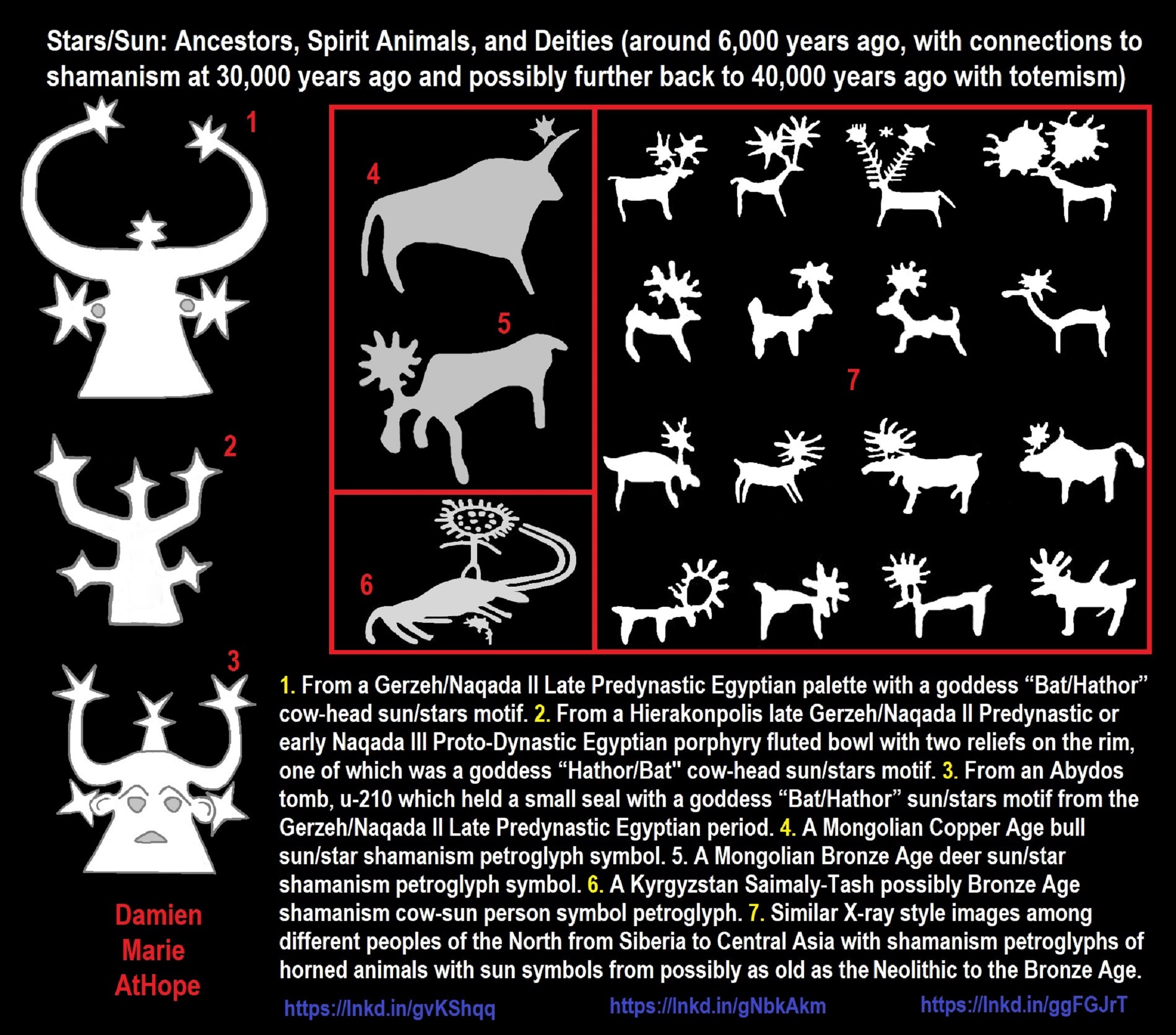
- From a Gerzeh/Naqada II Late Predynastic Egyptian palette with a goddess “Bat/Hathor” cow-head sun/stars motif.
- From a Hierakonpolis late Gerzeh/Naqada II Predynastic or early Naqada III Proto-Dynastic Egyptian porphyry fluted bowl with two reliefs on the rim, one of which was a goddess “Hathor/Bat” cow-head sun/stars motif.
- From an Abydos tomb, u-210 which held a small seal with a goddess “Bat/Hathor” sun/stars motif from the Gerzeh/Naqada II Late Predynastic Egyptian period.
- A Mongolian Copper Age bull sun/star shamanism petroglyph
- A Mongolian Bronze Age deer sun/star shamanism petroglyph symbol.
- A Kyrgyzstan Saimaly-Tash possibly Bronze Age shamanism cow-sun person symbol petroglyph.
- Similar X-ray style images among different peoples of the North from Siberia to Central Asia with shamanism petroglyphs of horned animals with sun symbols from possibly as old as the Neolithic to the Bronze Age. ref, ref, ref
Sun Deity likely Gender?
“Solar deities are often thought of as male (and lunar deities being female) but the opposite has more often been the case. In Germanic mythology the Sun is female, and the Moon is male. Other cultures that have sun goddesses include the Lithuanians (Saulė) and Latvians (Saule), the Finns (Päivätär, Beiwe) and the related Hungarians. Sun goddesses are found around the world in Australia (Bila, Wala); in Indian tribal religions (Bisal-Mariamma, Bomong, ‘Ka Sgni) and Sri Lanka (Pattini); among the Hittites (Wurusemu), Egyptians (Hathor, Sekhmet), and Canaanites (Shapash); in the Canary Islands (Chaxiraxi, Magec); in Native America, among the Cherokee (Unelanuhi), Natchez (Oüa Chill/Uwahci∙ł), Inuit (Malina), and Miwok (He’-koo-lās); and in Asia among the Japanese (Amaterasu).” ref
“The cobra (of Pharaoh, son of Ra), the lioness (daughter of Ra), and the cow (daughter of Ra), are the dominant symbols of the most ancient Egyptian deities. They were female and carried their relationship to the sun atop their heads, and their cults remained active throughout the history of the culture. Later a sun god (Aten) was established in the eighteenth dynasty on top of the other solar deities, before the “aberration” was stamped out and the old pantheon re-established. When male deities became associated with the sun in that culture, they began as the offspring of a mother (except Ra, King of the Gods who gave birth to himself).” ref
“In Buddhist cosmology, the bodhisattva of the Sun is known as Sūryaprabha (“having the light of the sun”); in Chinese he is called Rigong Riguang Pusa (The Bright Solar Bodhisattva of the Solar Palace), Rigong Riguang Tianzi (The Bright Solar Prince of the Solar Palace), or Rigong Riguang Zuntian Pusa (The Greatly Revered Bright Solar Prince of the Solar Palace), one of the 20 or 24 guardian devas.” ref
“Sūryaprabha is often depicted with Candraprabha (“having the light of the moon”), called in Chinese Yuegong Yueguang Pusa (The Bright Lunar Bodhisattva of the Lunar Palace), Yuegong Yueguang Tianzi ( The Bright Lunar Prince of the Lunar Palace), or Yuegong Yueguang Zuntian Pusa (The Greatly Revered Bright Lunar Prince of the Lunar Palace). Together with Bhaiṣajyaguru Buddha (Chinese: Yaoshi Fo) these two bodhisattvas constitute the Dongfang San Sheng (Three Holy Sages of the Eastern Quarter). The devas Surya and Candra are also recognized as deities that embody the Sun and Moon, respectively.” ref
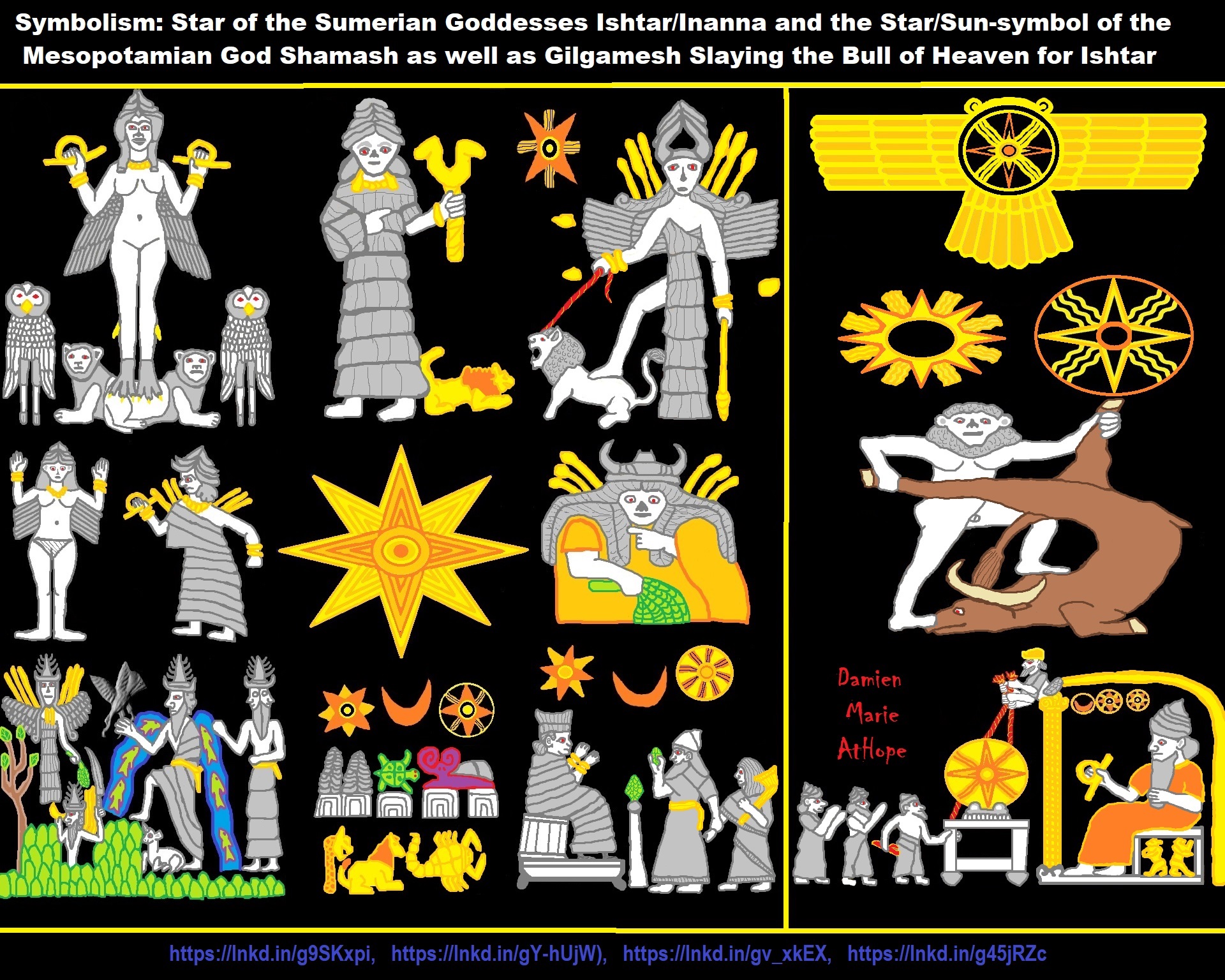
Female Sun Deities
“You may notice that most sun deities are male and act as counterparts to female moon deities, but don’t take this as a given. Sometimes the roles are reversed. There are goddesses of the sun just as there are male deities of the moon. In Norse mythology, for example, Sol (also called Sunna) is the goddess of the sun, while her brother, Mani, is the god of the moon. Sol rides a chariot that is drawn by two golden horses. Another sun goddess is Amaterasu, a major deity in the Shinto religion of Japan. Her brother, Tsukuyomi, is the god of the moon. It is from the sun goddess that the Japanese imperial family is believed to be descended.” ref
Sun Worship?
“Sun worship was prevalent in ancient Egyptian religion. The earliest deities associated with the Sun are all goddesses: Wadjet, Sekhmet, Hathor, Nut, Bast, Bat, and Menhit. First Hathor, and then Isis, give birth to and nurse Horus and Ra. Hathor the horned-cow is one of the 12 daughters of Ra, gifted with joy, and is a wet-nurse to Horus. From at least the 4th Dynasty of ancient Egypt, the Sun was worshipped as the deity Re (pronounced probably as Riya, meaning simply ‘the sun‘), and portrayed as a falcon-headed god surmounted by the solar disk, and surrounded by a serpent. Re supposedly gave warmth to the living body, symbolized as an ankh: a “☥” shaped amulet with a looped upper half.” ref
“The ankh, it was believed, was surrendered with death, but could be preserved in the corpse with appropriate mummification and funerary rites. The supremacy of Re in the Egyptian pantheon was at its highest with the 5th Dynasty, when open-air solar temples became common. In the Middle Kingdom of Egypt, Ra lost some of his preeminence to Osiris, lord of the West, and judge of the dead. In the New Empire period, the Sun became identified with the dung beetle, whose spherical ball of dung was identified with the Sun. In the form of the sun disc Aten, the Sun had a brief resurgence during the Amarna Period when it again became the preeminent, if not only, divinity for the Pharaoh Akhenaton.” ref
“The Sun’s movement across the sky represents a struggle between the Pharaoh’s soul and an avatar of Osiris. Ra travels across the sky in his solar-boat; at dawn he drives away the demon king Apep. The “solarisation” of several local gods (Hnum-Re, Min-Re, Amon-Re) reaches its peak in the period of the fifth dynasty. Rituals to the god Amun who became identified with the sun god Ra were often carried out on the top of temple pylons.” ref
“In the eighteenth dynasty, the earliest-known monotheistic head of state, Akhenaten, changed the polytheistic religion of Egypt to a monotheistic one, Atenism of the solar-disk and is the first recorded state monotheism. All other deities were replaced by the Aten, including Amun-Ra, the reigning sun god of Akhenaten’s own region. Unlike other deities, the Aten did not have multiple forms. His only image was a disk—a symbol of the Sun.” ref
“Soon after Akhenaten’s death, worship of the traditional deities was reestablished by the religious leaders (Ay the High-Priest of Amen-Ra, mentor of Tutankhaten/Tutankhamen) who had adopted the Aten during the reign of Akhenaten. A Pylon mirrored the hieroglyph for ‘horizon’ or akhet, which was a depiction of two hills “between which the sun rose and set,” associated with recreation and rebirth. On the first Pylon of the temple of Isis at Philae, the pharaoh is shown slaying his enemies in the presence of Isis, Horus, and Hathor.” ref
“In Armenian mythology and in the vicinity of Carahunge, the ancient site of interest in the field of archaeoastronomy, people worshiped a powerful deity or intelligence called Ara, embodied as the sun (Ar or Arev). The ancient Armenians called themselves “children of the sun”. (Russian and Armenian archaeoastronomers have suggested that at Carahunge seventeen of the stones still standing were associated with observations of sunrise or sunset at the solstices and equinoxes.
“Those who practice Dievturība, beliefs of traditional Latvian culture, celebrate the Sun goddess, Saule, known in traditional Lithuanian beliefs as Saulė. Saule is among the most important deities in Baltic mythology and traditions.” ref
Sun in Celtic mythology
“The sun in Insular Celtic culture is assumed to have been feminine, and several goddesses have been proposed as possibly solar in character. In Continental Celtic culture, the sun gods, like Belenos, Grannos, and Lug, were masculine. In Irish, the name of the Sun, Grian, is feminine. The figure known as Áine is generally assumed to have been either synonymous with her, or her sister, assuming the role of Summer Sun while Grian was the Winter Sun. Similarly, Étaín has at times been considered to be another theonym associated with the Sun; if this is the case, then the pan-Celtic Epona might also have been originally solar in nature, though Roman syncretism pushed her towards a lunar role.” ref
“The British Sulis has a name cognate with that of other Indo-European solar deities such as the Greek Helios and Indic Surya, and bears some solar traits like the association with the eye as well as epithets associated with light. The theonym Sulevia, which is more widespread and probably unrelated to Sulis, is sometimes taken to have suggested a pan-Celtic role as a solar goddess. She indeed might have been the de facto solar deity of the Celts. The Welsh Olwen has at times been considered a vestige of the local sun goddess, in part due to the possible etymological association with the wheel and the colors gold, white and red. Brighid has at times been argued as having had a solar nature, fitting her role as a goddess of fire and light.” ref
Sun in Chinese mythology
“In Chinese mythology (cosmology), there were originally ten suns in the sky, who were all brothers. They were supposed to emerge one at a time as commanded by the Jade Emperor. They were all very young and loved to fool around. Once they decided to all go into the sky to play, all at once. This made the world too hot for anything to grow. A hero named Hou Yi, honored to this day, shot down nine of them with a bow and arrow to save the people of the Earth.” ref
“In another myth, a solar eclipse was said to be caused by a magical dog or dragon biting off a piece of the Sun. The referenced event is said to have occurred around 2136 BCE; two royal astronomers, Ho and Hi, were executed for failing to predict the eclipse. There was a tradition in China to make lots of loud celebratory sounds during a solar eclipse to scare the sacred beast away.” ref
“The Deity of the Sun in Chinese mythology is Ri Gong Tai Yang Xing Jun (Tai Yang Gong/Grandfather Sun) or Star Lord of the Solar Palace, Lord of the Sun. In some mythologies, Tai Yang Xing Jun is believed to be Hou Yi. Tai Yang Xing Jun is usually depicted with the Star Lord of the Lunar Palace, Lord of the Moon, Yue Gong Tai Yin Xing Jun (Tai Yin Niang Niang/Lady Tai Yin). Worship of the moon goddess Chang’e and her festivals are very popular among followers of Chinese folk religion and Taoism. The goddess and her holy days are ingrained in Chinese popular culture.” ref
Germanic mythology
“In Germanic mythology the sun is personified by Sol. The corresponding Old English name is Siȝel [ˈsijel], continuing Proto-Germanic *Sôwilô or *Saewelô. The Old High German Sun goddess is Sunna. In the Norse traditions, Sól rode through the sky on her chariot every day, pulled by two horses named Arvak and Alsvid. Sól also was called Sunna and Frau Sunne.” ref
Roman historiography Helios and Sol (Roman mythology)
“The first-century historian Tacitus, in his book Germania, mentioned that “beyond the Suiones [tribe]” a sea was located where the sun maintained its brilliance from its rising to its sunset, and that “[the] popular belief” was that “the sound of its emergence was audible” and “the form of its horses visible.” ref
“During the Roman Empire, a festival of the birth of the Unconquered Sun (or Dies Natalis Solis Invicti) was celebrated on the winter solstice—the “rebirth” of the Sun—which occurred on 25 December of the Julian calendar. In late antiquity, the theological centrality of the Sun in some Imperial religious systems suggest a form of a “solar monotheism.” The religious commemorations on 25 December were replaced under Christian domination of the Empire with the birthday of Christ.” ref
Hellenistic mythology
“In Greek mythology, Helios, a Titan, was the personification of the Sun; however, with the notable exception of the island of Rhodes and nearby parts of southwestern Anatolia, he was a relatively minor deity. The Ancient Greeks also associated the Sun with Apollo, the god of enlightenment. Apollo (along with Helios) was sometimes depicted as driving a fiery chariot.” ref
“The Greek astronomer Thales of Miletus described the scientific properties of the Sun and Moon, making their godship unnecessary. Anaxagoras was arrested in 434 BCE and banished from Athens for denying the existence of a solar or lunar deity. The titular character of Sophocles‘ Electra refers to the Sun as “All-seeing”. Hermetic author Hermes Trismegistus calls the Sun “God Visible”. The Minotaur has been interpreted as a solar deity (as Moloch or Chronos), including by Arthur Bernard Cook, who considers both Minos and Minotaur as aspects of the sun god of the Cretans, who depicted the sun as a bull.” ref
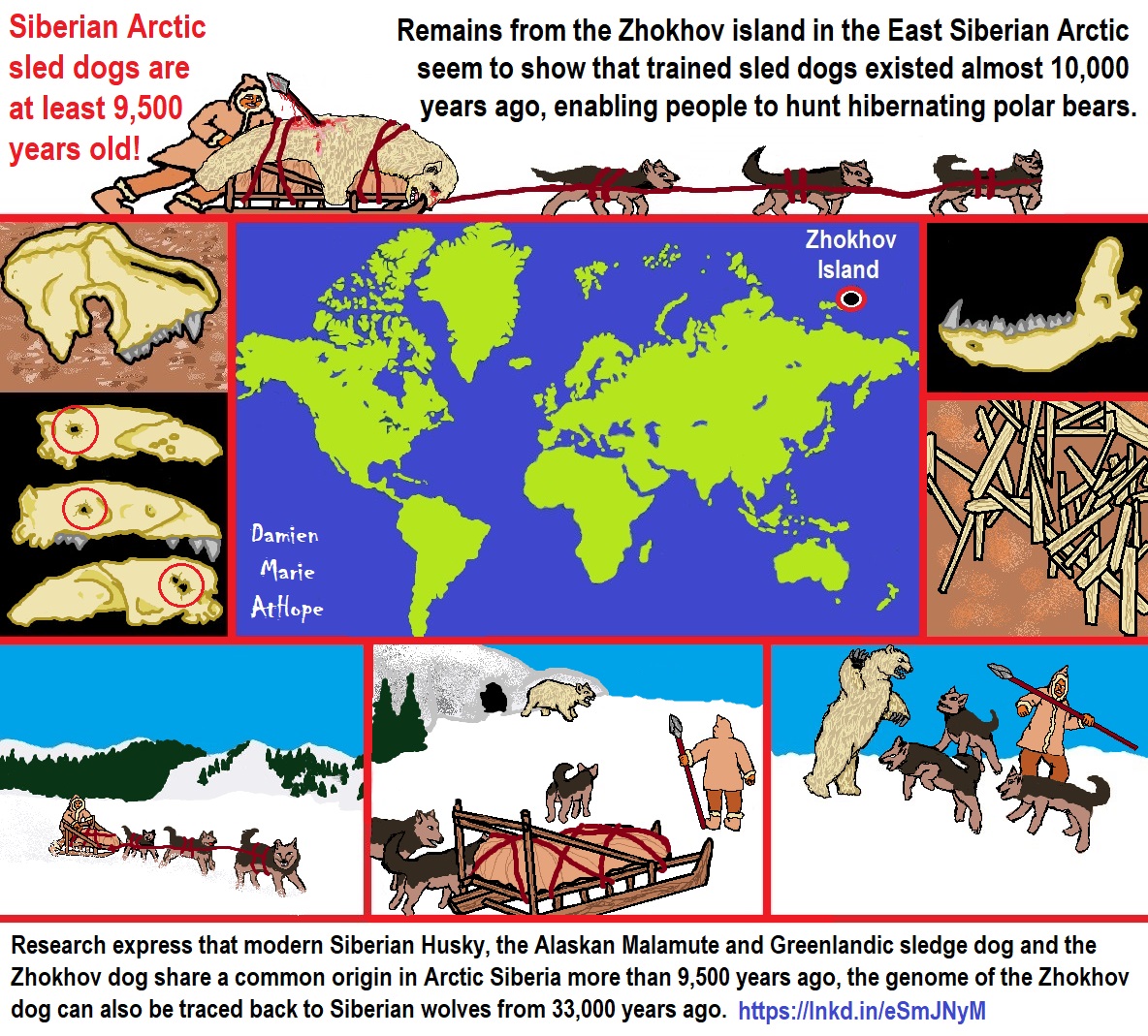
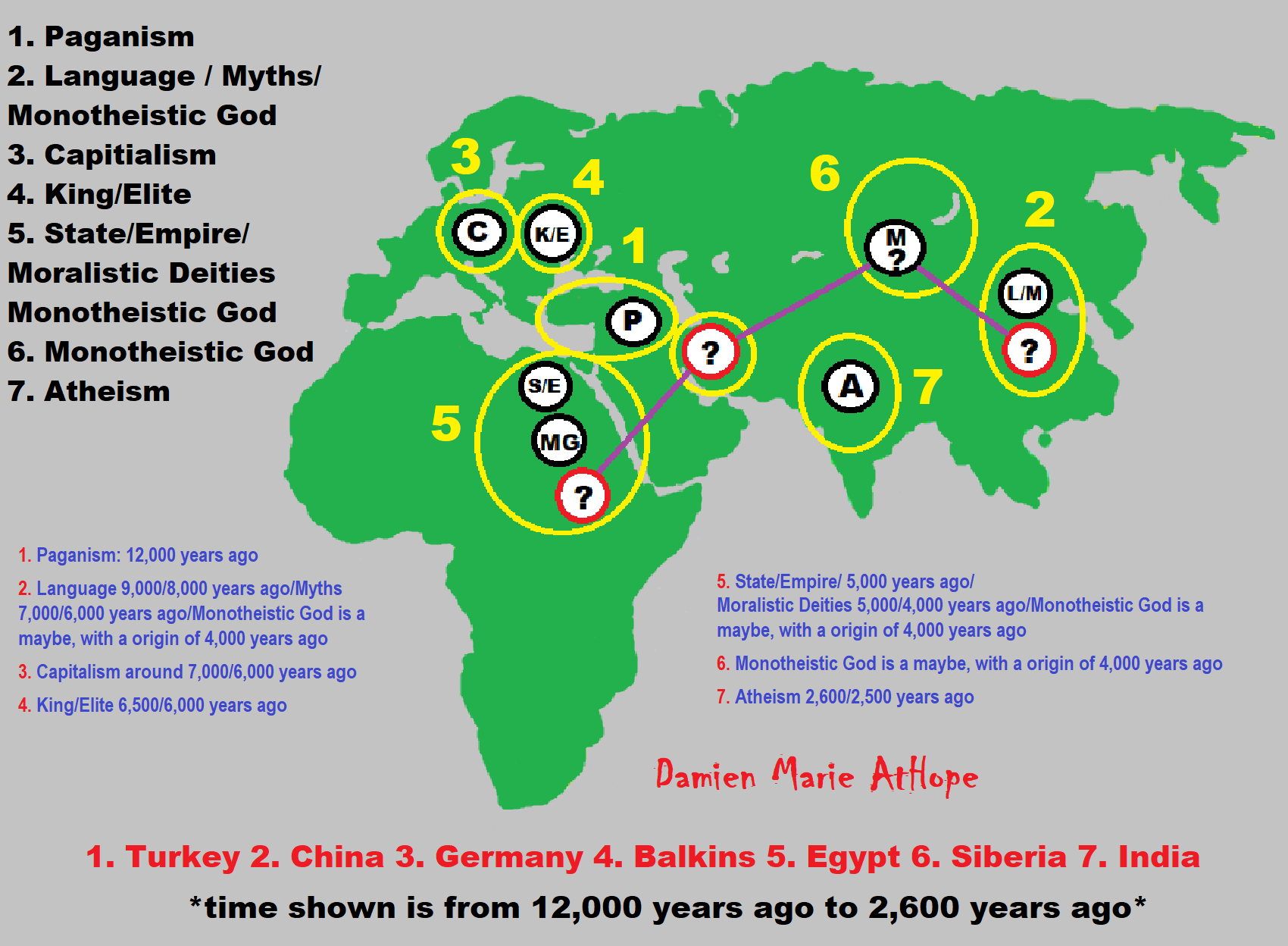

People don’t commonly teach religious history, even that of their own claimed religion. No, rather they teach a limited “pro their religion” history of their religion from a religious perspective favorable to the religion of choice.

Do you truly think “Religious Belief” is only a matter of some personal choice?
Do you not see how coercive one’s world of choice is limited to the obvious hereditary belief, in most religious choices available to the child of religious parents or caregivers? Religion is more commonly like a family, culture, society, etc. available belief that limits the belief choices of the child and that is when “Religious Belief” is not only a matter of some personal choice and when it becomes hereditary faith, not because of the quality of its alleged facts or proposed truths but because everyone else important to the child believes similarly so they do as well simply mimicking authority beliefs handed to them. Because children are raised in religion rather than being presented all possible choices but rather one limited dogmatic brand of “Religious Belief” where children only have a choice of following the belief as instructed, and then personally claim the faith hereditary belief seen in the confirming to the belief they have held themselves all their lives. This is obvious in statements asked and answered by children claiming a faith they barely understand but they do understand that their family believes “this or that” faith, so they feel obligated to believe it too. While I do agree that “Religious Belief” should only be a matter of some personal choice, it rarely is… End Hereditary Religion!

Animism: Respecting the Living World by Graham Harvey
“How have human cultures engaged with and thought about animals, plants, rocks, clouds, and other elements in their natural surroundings? Do animals and other natural objects have a spirit or soul? What is their relationship to humans? In this new study, Graham Harvey explores current and past animistic beliefs and practices of Native Americans, Maori, Aboriginal Australians, and eco-pagans. He considers the varieties of animism found in these cultures as well as their shared desire to live respectfully within larger natural communities. Drawing on his extensive casework, Harvey also considers the linguistic, performative, ecological, and activist implications of these different animisms.” ref

We are like believing machines we vacuum up ideas, like Velcro sticks to almost everything. We accumulate beliefs that we allow to negatively influence our lives, often without realizing it. Our willingness must be to alter skewed beliefs that impend our balance or reason, which allows us to achieve new positive thinking and accurate outcomes.
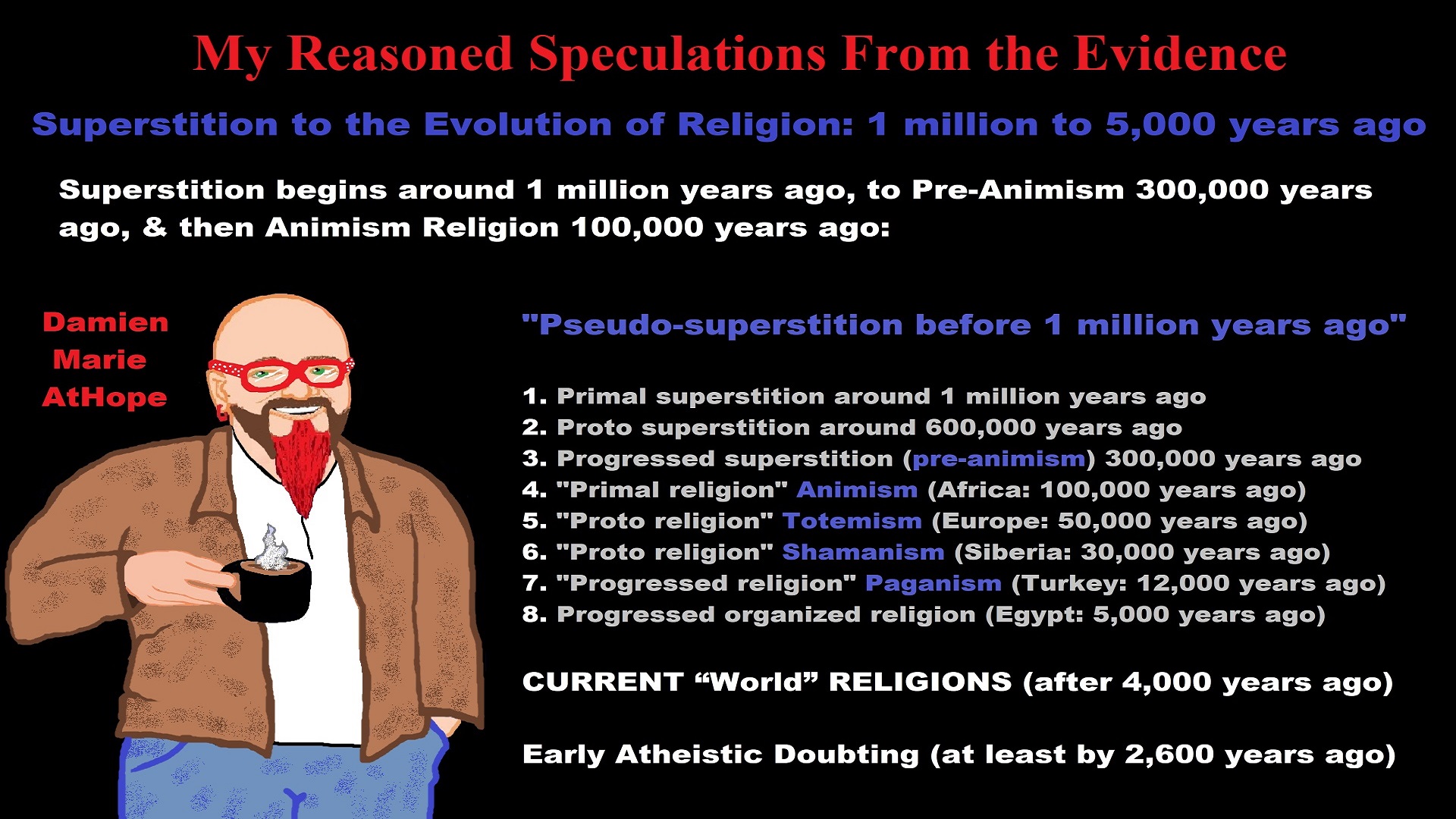
My thoughts on Religion Evolution with external links for more info:
- (Pre-Animism Africa mainly, but also Europe, and Asia at least 300,000 years ago), (Pre-Animism – Oxford Dictionaries)
- (Animism Africa around 100,000 years ago), (Animism – Britannica.com)
- (Totemism Europe around 50,000 years ago), (Totemism – Anthropology)
- (Shamanism Siberia around 30,000 years ago), (Shamanism – Britannica.com)
- (Paganism Turkey around 12,000 years ago), (Paganism – BBC Religion)
- (Progressed Organized Religion “Institutional Religion” Egypt around 5,000 years ago), (Ancient Egyptian Religion – Britannica.com)
- (CURRENT “World” RELIGIONS after 4,000 years ago) (Origin of Major Religions – Sacred Texts)
- (Early Atheistic Doubting at least by 2,600 years ago) (History of Atheism – Wikipedia)
“Religion is an Evolved Product” and Yes, Religion is Like Fear Given Wings…
Atheists talk about gods and religions for the same reason doctors talk about cancer, they are looking for a cure, or a firefighter talks about fires because they burn people and they care to stop them. We atheists too often feel a need to help the victims of mental slavery, held in the bondage that is the false beliefs of gods and the conspiracy theories of reality found in religions.
Understanding Religion Evolution:
- Pre-Animism (at least 300,000 years ago)
- Animism (Africa: 100,000 years ago)
- Totemism (Europe: 50,000 years ago)
- Shamanism (Siberia: 30,000 years ago)
- Paganism (Turkey: 12,000 years ago)
- Progressed organized religion (Egypt: 5,000 years ago), (Egypt, the First Dynasty 5,150 years ago)
- CURRENT “World” RELIGIONS (after 4,000 years ago)
- Early Atheistic Doubting (at least by 2,600 years ago)
“An Archaeological/Anthropological Understanding of Religion Evolution”
It seems ancient peoples had to survived amazing threats in a “dangerous universe (by superstition perceived as good and evil),” and human “immorality or imperfection of the soul” which was thought to affect the still living, leading to ancestor worship. This ancestor worship presumably led to the belief in supernatural beings, and then some of these were turned into the belief in gods. This feeble myth called gods were just a human conceived “made from nothing into something over and over, changing, again and again, taking on more as they evolve, all the while they are thought to be special,” but it is just supernatural animistic spirit-belief perceived as sacred.
Quick Evolution of Religion?
Pre-Animism (at least 300,000 years ago) pre-religion is a beginning that evolves into later Animism. So, Religion as we think of it, to me, all starts in a general way with Animism (Africa: 100,000 years ago) (theoretical belief in supernatural powers/spirits), then this is physically expressed in or with Totemism (Europe: 50,000 years ago) (theoretical belief in mythical relationship with powers/spirits through a totem item), which then enlists a full-time specific person to do this worship and believed interacting Shamanism (Siberia/Russia: 30,000 years ago) (theoretical belief in access and influence with spirits through ritual), and then there is the further employment of myths and gods added to all the above giving you Paganism (Turkey: 12,000 years ago) (often a lot more nature-based than most current top world religions, thus hinting to their close link to more ancient religious thinking it stems from). My hypothesis is expressed with an explanation of the building of a theatrical house (modern religions development). Progressed organized religion (Egypt: 5,000 years ago) with CURRENT “World” RELIGIONS (after 4,000 years ago).
Historically, in large city-state societies (such as Egypt or Iraq) starting around 5,000 years ago culminated to make religion something kind of new, a sociocultural-governmental-religious monarchy, where all or at least many of the people of such large city-state societies seem familiar with and committed to the existence of “religion” as the integrated life identity package of control dynamics with a fixed closed magical doctrine, but this juggernaut integrated religion identity package of Dogmatic-Propaganda certainly did not exist or if developed to an extent it was highly limited in most smaller prehistoric societies as they seem to lack most of the strong control dynamics with a fixed closed magical doctrine (magical beliefs could be at times be added or removed). Many people just want to see developed religious dynamics everywhere even if it is not. Instead, all that is found is largely fragments until the domestication of religion.
Religions, as we think of them today, are a new fad, even if they go back to around 6,000 years in the timeline of human existence, this amounts to almost nothing when seen in the long slow evolution of religion at least around 70,000 years ago with one of the oldest ritual worship. Stone Snake of South Africa: “first human worship” 70,000 years ago. This message of how religion and gods among them are clearly a man-made thing that was developed slowly as it was invented and then implemented peace by peace discrediting them all. Which seems to be a simple point some are just not grasping how devastating to any claims of truth when we can see the lie clearly in the archeological sites.
I wish people fought as hard for the actual values as they fight for the group/clan names political or otherwise they think support values. Every amount spent on war is theft to children in need of food or the homeless kept from shelter.
Here are several of my blog posts on history:
- To Find Truth You Must First Look
- (Magdalenian/Iberomaurusian) Connections to the First Paganists of the early Neolithic Near East Dating from around 17,000 to 12,000 Years Ago
- Natufians: an Ancient People at the Origins of Agriculture and Sedentary Life
- Possible Clan Leader/Special “MALE” Ancestor Totem Poles At Least 13,500 years ago?
- Jewish People with DNA at least 13,200 years old, Judaism, and the Origins of Some of its Ideas
- Baltic Reindeer Hunters: Swiderian, Lyngby, Ahrensburgian, and Krasnosillya cultures 12,020 to 11,020 years ago are evidence of powerful migratory waves during the last 13,000 years and a genetic link to Saami and the Finno-Ugric peoples.
- The Rise of Inequality: patriarchy and state hierarchy inequality
- Fertile Crescent 12,500 – 9,500 Years Ago: fertility and death cult belief system?
- 12,400 – 11,700 Years Ago – Kortik Tepe (Turkey) Pre/early-Agriculture Cultic Ritualism
- Ritualistic Bird Symbolism at Gobekli Tepe and its “Ancestor Cult”
- Male-Homosexual (female-like) / Trans-woman (female) Seated Figurine from Gobekli Tepe
- Could a 12,000-year-old Bull Geoglyph at Göbekli Tepe relate to older Bull and Female Art 25,000 years ago and Later Goddess and the Bull cults like Catal Huyuk?
- Sedentism and the Creation of goddesses around 12,000 years ago as well as male gods after 7,000 years ago.
- Alcohol, where Agriculture and Religion Become one? Such as Gobekli Tepe’s Ritualistic use of Grain as Food and Ritual Drink
- Neolithic Ritual Sites with T-Pillars and other Cultic Pillars
- Paganism: Goddesses around 12,000 years ago then Male Gods after 7,000 years ago
- First Patriarchy: Split of Women’s Status around 12,000 years ago & First Hierarchy: fall of Women’s Status around 5,000 years ago.
- Natufians: an Ancient People at the Origins of Agriculture and Sedentary Life
- J DNA and the Spread of Agricultural Religion (paganism)
- Paganism: an approximately 12,000-year-old belief system
- Paganism 12,000 years old: related to “Anarchism and Socialism” (Pre-Capitalism)
- Shaman burial in Israel 12,000 years ago and the Shamanism Phenomena
- Need to Mythicized: gods and goddesses
- 12,000 – 7,000 Years Ago – Paleo-Indian Culture (The Americas)
- 12,000 – 2,000 Years Ago – Indigenous-Scandinavians (Nordic)
- Norse did not wear helmets with horns?
- Pre-Pottery Neolithic Skull Cult around 11,500 to 8,400 Years Ago?
- 10,400 – 10,100 Years Ago, in Turkey the Nevail Cori Religious Settlement
- 9,000-6,500 Years Old Submerged Pre-Pottery/Pottery Neolithic Ritual Settlements off Israel’s Coast
- Catal Huyuk “first religious designed city” around 9,500 to 7,700 years ago (Turkey)
- Cultic Hunting at Catal Huyuk “first religious designed city”
- Special Items and Art as well as Special Elite Burials at Catal Huyuk
- New Rituals and Violence with the appearance of Pottery and People?
- Haplogroup N and its related Uralic Languages and Cultures
- Ainu people, Sámi people, Native Americans, the Ancient North Eurasians, and Paganistic-Shamanism with Totemism
- Ideas, Technology and People from Turkey, Europe, to China and Back again 9,000 to 5,000 years ago?
- First Pottery of Europe and the Related Cultures
- 9,000 years old Neolithic Artifacts Judean Desert and Hills Israel
- 9,000-7,000 years-old Sex and Death Rituals: Cult Sites in Israel, Jordan, and the Sinai
- 9,000-8500 year old Horned Female shaman Bad Dürrenberg Germany
- Neolithic Jewelry and the Spread of Farming in Europe Emerging out of West Turkey
- 8,600-year-old Tortoise Shells in Neolithic graves in central China have Early Writing and Shamanism
- Swing of the Mace: the rise of Elite, Forced Authority, and Inequality begin to Emerge 8,500 years ago?
- Migrations and Changing Europeans Beginning around 8,000 Years Ago
- My “Steppe-Anatolian-Kurgan hypothesis” 8,000/7,000 years ago
- Around 8,000-year-old Shared Idea of the Mistress of Animals, “Ritual” Motif
- Pre-Columbian Red-Paint (red ochre) Maritime Archaic Culture 8,000-3,000 years ago
- 7,522-6,522 years ago Linear Pottery culture which I think relates to Arcane Capitalism’s origins
- Arcane Capitalism: Primitive socialism, Primitive capital, Private ownership, Means of production, Market capitalism, Class discrimination, and Petite bourgeoisie (smaller capitalists)
- 7,500-4,750 years old Ritualistic Cucuteni-Trypillian culture of Moldova, Romania, and Ukraine
- Roots of a changing early society 7,200-6,700 years ago Jordan and Israel
- Agriculture religion (Paganism) with farming reached Britain between about 7,000 to 6,500 or so years ago and seemingly expressed in things like Western Europe’s Long Barrows
- My Thoughts on Possible Migrations of “R” DNA and Proto-Indo-European?
- “Millet” Spreading from China 7,022 years ago to Europe and related Language may have Spread with it leading to Proto-Indo-European
- Proto-Indo-European (PIE), ancestor of Indo-European languages: DNA, Society, Language, and Mythology
- The Dnieper–Donets culture and Asian varieties of Millet from China to the Black Sea region of Europe by 7,022 years ago
- Kurgan 6,000 years ago/dolmens 7,000 years ago: funeral, ritual, and other?
- 7,020 to 6,020-year-old Proto-Indo-European Homeland of Urheimat or proposed home of their Language and Religion
- Ancient Megaliths: Kurgan, Ziggurat, Pyramid, Menhir, Trilithon, Dolman, Kromlech, and Kromlech of Trilithons
- The Mytheme of Ancient North Eurasian Sacred-Dog belief and similar motifs are found in Indo-European, Native American, and Siberian comparative mythology
- Elite Power Accumulation: Ancient Trade, Tokens, Writing, Wealth, Merchants, and Priest-Kings
- Sacred Mounds, Mountains, Kurgans, and Pyramids may hold deep connections?
- Between 7,000-5,000 Years ago, rise of unequal hierarchy elite, leading to a “birth of the State” or worship of power, strong new sexism, oppression of non-elites, and the fall of Women’s equal status
- Paganism 7,000-5,000 years old: related to “Anarchism and Socialism” (Capitalism) (World War 0) Elite & their slaves
- Hell and Underworld mythologies starting maybe as far back as 7,000 to 5,000 years ago with the Proto-Indo-Europeans?
- The First Expression of the Male God around 7,000 years ago?
- White (light complexion skin) Bigotry and Sexism started 7,000 years ago?
- Around 7,000-year-old Shared Idea of the Divine Bird (Tutelary and/or Trickster spirit/deity), “Ritual” Motif
- Nekhbet an Ancient Egyptian Vulture Goddess and Tutelary Deity
- 6,720 to 4,920 years old Ritualistic Hongshan Culture of Inner Mongolia with 5,000-year-old Pyramid Mounds and Temples
- First proto-king in the Balkans, Varna culture around 6,500 years ago?
- 6,500–5,800 years ago in Israel Late Chalcolithic (Copper Age) Period in the Southern Levant Seems to Express Northern Levant Migrations, Cultural and Religious Transfer
- KING OF BEASTS: Master of Animals “Ritual” Motif, around 6,000 years old or older…
- Around 6000-year-old Shared Idea of the Solid Wheel & the Spoked Wheel-Shaped Ritual Motif
- “The Ghassulian Star,” a mysterious 6,000-year-old mural from Jordan; a Proto-Star of Ishtar, Star of Inanna or Star of Venus?
- Religious/Ritual Ideas, including goddesses and gods as well as ritual mounds or pyramids from Northeastern Asia at least 6,000 years old, seemingly filtering to Iran, Iraq, the Mediterranean, Europe, Egypt, and the Americas?
- Maykop (5,720–5,020 years ago) Caucasus region Bronze Age culture-related to Copper Age farmers from the south, influenced by the Ubaid period and Leyla-Tepe culture, as well as influencing the Kura-Araxes culture
- 5-600-year-old Tomb, Mummy, and First Bearded Male Figurine in a Grave
- Kura-Araxes Cultural 5,520 to 4,470 years old DNA traces to the Canaanites, Arabs, and Jews
- Minoan/Cretan (Keftiu) Civilization and Religion around 5,520 to 3,120 years ago
- Evolution Of Science at least by 5,500 years ago
- 5,500 Years old birth of the State, the rise of Hierarchy, and the fall of Women’s status
- “Jiroft culture” 5,100 – 4,200 years ago and the History of Iran
- Stonehenge: Paganistic Burial and Astrological Ritual Complex, England (5,100-3,600 years ago)
- Around 5,000-year-old Shared Idea of the “Tree of Life” Ritual Motif
- Complex rituals for elite, seen from China to Egypt, at least by 5,000 years ago
- Around 5,000 years ago: “Birth of the State” where Religion gets Military Power and Influence
- The Center of the World “Axis Mundi” and/or “Sacred Mountains” Mythology Could Relate to the Altai Mountains, Heart of the Steppe
- Progressed organized religion starts, an approximately 5,000-year-old belief system
- China’s Civilization between 5,000-3,000 years ago, was a time of war and class struggle, violent transition from free clans to a Slave or Elite society
- Origin of Logics is Naturalistic Observation at least by around 5,000 years ago.
- Paganism 5,000 years old: progressed organized religion and the state: related to “Anarchism and Socialism” (Kings and the Rise of the State)
- Ziggurats (multi-platform temples: 4,900 years old) to Pyramids (multi-platform tombs: 4,700 years old)
- Did a 4,520–4,420-year-old Volcano In Turkey Inspire the Bible God?
- Finland’s Horned Shaman and Pre-Horned-God at least 4,500 years ago?
- 4,000-year-Old Dolmens in Israel: A Connected Dolmen Religious Phenomenon?
- Creation myths: From chaos, Ex nihilo, Earth-diver, Emergence, World egg, and World parent
- Bronze Age “Ritual” connections of the Bell Beaker culture with the Corded Ware/Single Grave culture, which were related to the Yamnaya culture and Proto-Indo-European Languages/Religions
- Low Gods (Earth/ Tutelary deity), High Gods (Sky/Supreme deity), and Moralistic Gods (Deity enforcement/divine order)
- The exchange of people, ideas, and material-culture including, to me, the new god (Sky Father) and goddess (Earth Mother) religion between the Cucuteni-Trypillians and others which is then spread far and wide
- Koryaks: Indigenous People of the Russian Far East and Big Raven myths also found in Tlingit, Haida, Tsimshian, and other Indigenous People of North America
- 42 Principles Of Maat (Egyptian Goddess of the justice) around 4,400 years ago, 2000 Years Before Ten Commandments
- “Happy Easter” Well Happy Eostre/Ishter
- 4,320-3,820 years old “Shimao” (North China) site with Totemistic-Shamanistic Paganism and a Stepped Pyramid
- 4,250 to 3,400 Year old Stonehenge from Russia: Arkaim?
- 4,100-year-old beaker with medicinal & flowering plants in a grave of a woman in Scotland
- Early European Farmer ancestry, Kelif el Boroud people with the Cardial Ware culture, and the Bell Beaker culture Paganists too, spread into North Africa, then to the Canary Islands off West Africa
- Flood Accounts: Gilgamesh epic (4,100 years ago) Noah in Genesis (2,600 years ago)
- Paganism 4,000 years old: related to “Anarchism and Socialism” (First Moralistic gods, then the Origin time of Monotheism)
- When was the beginning: TIMELINE OF CURRENT RELIGIONS, which start around 4,000 years ago.
- Early Religions Thought to Express Proto-Monotheistic Systems around 4,000 years ago
- Kultepe? An archaeological site with a 4,000 years old women’s rights document.
- Single God Religions (Monotheism) = “Man-o-theism” started around 4,000 years ago with the Great Sky Spirit/God Tiān (天)?
- Confucianism’s Tiān (Shangdi god 4,000 years old): Supernaturalism, Pantheism or Theism?
- Yes, Your Male God is Ridiculous
- Mythology, a Lunar Deity is a Goddess or God of the Moon
- Sacred Land, Hills, and Mountains: Sami Mythology (Paganistic Shamanism)
- Horse Worship/Sacrifice: mythical union of Ruling Elite/Kingship and the Horse
- The Amorite/Amurru people’s God Amurru “Lord of the Steppe”, relates to the Origins of the Bible God?
- Bronze Age Exotic Trade Routes Spread Quite Far as well as Spread Religious Ideas with Them
- Sami and the Northern Indigenous Peoples Landscape, Language, and its Connection to Religion
- Prototype of Ancient Analemmatic Sundials around 3,900-3,150 years ago and a Possible Solar Connection to gods?
- Judaism is around 3,450 or 3,250 years old. (“Paleo-Hebrew” 3,000 years ago and Torah 2,500 years ago)
- The Weakening of Ancient Trade and the Strengthening of Religions around 3000 years ago?
- Are you aware that there are religions that worship women gods, explain now religion tears women down?
- Animistic, Totemistic, and Paganistic Superstition Origins of bible god and the bible’s Religion.
- Myths and Folklore: “Trickster gods and goddesses”
- Jews, Judaism, and the Origins of Some of its Ideas
- An Old Branch of Religion Still Giving Fruit: Sacred Trees
- Dating the BIBLE: naming names and telling times (written less than 3,000 years ago, provable to 2,200 years ago)
- Did a Volcano Inspire the bible god?
- The Amorite/Amurru people’s God Amurru “Lord of the Steppe”, relates to the Origins of the Bible God?
- Dené–Yeniseian language, Old Copper Complex, and Pre-Columbian Mound Builders?
- No “dinosaurs and humans didn’t exist together just because some think they are in the bible itself”
- Sacred Shit and Sacred Animals?
- Everyone Killed in the Bible Flood? “Nephilim” (giants)?
- Hey, Damien dude, I have a question for you regarding “the bible” Exodus.
- Archaeology Disproves the Bible
- Bible Battle, Just More, Bible Babble
- The Jericho Conquest lie?
- Canaanites and Israelites?
- Accurate Account on how did Christianity Began?
- Let’s talk about Christianity.
- So the 10 commandments isn’t anything to go by either right?
- Misinformed christian
- Debunking Jesus?
- Paulism vs Jesus
- Ok, you seem confused so let’s talk about Buddhism.
- Unacknowledged Buddhism: Gods, Savior, Demons, Rebirth, Heavens, Hells, and Terrorism
- His Foolishness The Dalai Lama
- Yin and Yang is sexist with an ORIGIN around 2,300 years ago?
- I Believe Archaeology, not Myths & Why Not, as the Religious Myths Already Violate Reason!
- Archaeological, Scientific, & Philosophic evidence shows the god myth is man-made nonsense.
- Aquatic Ape Theory/Hypothesis? As Always, Just Pseudoscience.
- Ancient Aliens Conspiracy Theorists are Pseudohistorians
- The Pseudohistoric and Pseudoscientific claims about “Bakoni Ruins” of South Africa
- Why do people think Religion is much more than supernaturalism and superstitionism?
- Religion is an Evolved Product
- Was the Value of Ancient Women Different?
- 1000 to 1100 CE, human sacrifice Cahokia Mounds a pre-Columbian Native American site
- Feminist atheists as far back as the 1800s?
- Promoting Religion as Real is Mentally Harmful to a Flourishing Humanity
- Screw All Religions and Their Toxic lies, they are all fraud
- Forget Religions’ Unfounded Myths, I Have Substantiated “Archaeology Facts.”
- Religion Dispersal throughout the World
- I Hate Religion Just as I Hate all Pseudoscience
- Exposing Scientology, Eckankar, Wicca and Other Nonsense?
- Main deity or religious belief systems
- Quit Trying to Invent Your God From the Scraps of Science.
- Archaeological, Scientific, & Philosophic evidence shows the god myth is man-made nonsense.
- Ancient Alien Conspiracy Theorists: Misunderstanding, Rhetoric, Misinformation, Fabrications, and Lies
- Misinformation, Distortion, and Pseudoscience in Talking with a Christian Creationist
- Judging the Lack of Goodness in Gods, Even the Norse God Odin
- Challenging the Belief in God-like Aliens and Gods in General
- A Challenge to Christian use of Torture Devices?
- Yes, Hinduism is a Religion
- Trump is One of the Most Reactionary Forces of Far-right Christian Extremism
- Was the Bull Head a Symbol of God? Yes!
- Primate Death Rituals
- Christian – “God and Christianity are objectively true”
- Australopithecus afarensis Death Ritual?
- You Claim Global Warming is a Hoax?
- Doubter of Science and Defamer of Atheists?
- I think that sounds like the Bible?
- History of the Antifa (“anti-fascist”) Movements
- Indianapolis Anti-Blasphemy Laws #Free Soheil Rally
- Damien, you repeat the golden rule in so many forms then you say religion is dogmatic?
- Science is a Trustable Methodology whereas Faith is not Trustable at all!
- Was I ever a believer, before I was an atheist?
- Atheists rise in reason
- Mistrust of science?
- Open to Talking About the Definition of ‘God’? But first, we address Faith.
- ‘United Monarchy’ full of splendor and power – Saul, David, and Solomon? Most likely not.
- Is there EXODUS ARCHAEOLOGY? The short answer is “no.”
- Lacking Proof of Bigfoots, Unicorns, and Gods is Just a Lack of Research?
- Religion and Politics: Faith Beliefs vs. Rational Thinking
- Hammer of Truth that lying pig RELIGION: challenged by an archaeologist
- “The Hammer of Truth” -ontology question- What do You Mean by That?
- Navigation of a bad argument: Ad Hominem vs. Attack
- Why is it Often Claimed that Gods have a Gender?
- Why are basically all monotheistic religions ones that have a male god?
- Shifting through the Claims in support of Faith
- Dear Mr. AtHope, The 20th Century is an Indictment of Secularism and a Failed Atheist Century
- An Understanding of the Worldwide Statistics and Dynamics of Terrorist Incidents and Suicide Attacks
- Intoxication and Evolution? Addressing and Assessing the “Stoned Ape” or “Drunken Monkey” Theories as Catalysts in Human Evolution
- Sacred Menstrual cloth? Inanna’s knot, Isis knot, and maybe Ma’at’s feather?
- Damien, why don’t the Hebrews accept the bible stories?
- Dealing with a Troll and Arguing Over Word Meaning
- Knowledge without Belief? Justified beliefs or disbeliefs worthy of Knowledge?
- Afrocentrism and African Religions
- Crecganford @crecganford offers history & stories of the people, places, gods, & culture
- Empiricism-Denier?
I am not an academic. I am a revolutionary that teaches in public, in places like social media, and in the streets. I am not a leader by some title given but from my commanding leadership style of simply to start teaching everywhere to everyone, all manner of positive education.



To me, Animism starts in Southern Africa, then to West Europe, and becomes Totemism. Another split goes near the Russia and Siberia border becoming Shamanism, which heads into Central Europe meeting up with Totemism, which also had moved there, mixing the two which then heads to Lake Baikal in Siberia. From there this Shamanism-Totemism heads to Turkey where it becomes Paganism.


Not all “Religions” or “Religious Persuasions” have a god(s) but
All can be said to believe in some imaginary beings or imaginary things like spirits, afterlives, etc.

Paganism 12,000-4,000 years old
12,000-7,000 years old: related to (Pre-Capitalism)
7,000-5,000 years old: related to (Capitalism) (World War 0) Elite and their slaves!
5,000 years old: related to (Kings and the Rise of the State)
4,000 years old: related to (First Moralistic gods, then the Origin time of Monotheism)

ref, ref, ref, ref, ref, ref, ref, ref, ref, ref, ref, ref, ref, ref, ref, ref, ref, ref, ref, ref, ref
Low Gods “Earth” or Tutelary deity and High Gods “Sky” or Supreme deity
“An Earth goddess is a deification of the Earth. Earth goddesses are often associated with the “chthonic” deities of the underworld. Ki and Ninhursag are Mesopotamian earth goddesses. In Greek mythology, the Earth is personified as Gaia, corresponding to Roman Terra, Indic Prithvi/Bhūmi, etc. traced to an “Earth Mother” complementary to the “Sky Father” in Proto-Indo-European religion. Egyptian mythology exceptionally has a sky goddess and an Earth god.” ref
“A mother goddess is a goddess who represents or is a personification of nature, motherhood, fertility, creation, destruction or who embodies the bounty of the Earth. When equated with the Earth or the natural world, such goddesses are sometimes referred to as Mother Earth or as the Earth Mother. In some religious traditions or movements, Heavenly Mother (also referred to as Mother in Heaven or Sky Mother) is the wife or feminine counterpart of the Sky father or God the Father.” ref
“Any masculine sky god is often also king of the gods, taking the position of patriarch within a pantheon. Such king gods are collectively categorized as “sky father” deities, with a polarity between sky and earth often being expressed by pairing a “sky father” god with an “earth mother” goddess (pairings of a sky mother with an earth father are less frequent). A main sky goddess is often the queen of the gods and may be an air/sky goddess in her own right, though she usually has other functions as well with “sky” not being her main. In antiquity, several sky goddesses in ancient Egypt, Mesopotamia, and the Near East were called Queen of Heaven. Neopagans often apply it with impunity to sky goddesses from other regions who were never associated with the term historically. The sky often has important religious significance. Many religions, both polytheistic and monotheistic, have deities associated with the sky.” ref
“In comparative mythology, sky father is a term for a recurring concept in polytheistic religions of a sky god who is addressed as a “father”, often the father of a pantheon and is often either a reigning or former King of the Gods. The concept of “sky father” may also be taken to include Sun gods with similar characteristics, such as Ra. The concept is complementary to an “earth mother“. “Sky Father” is a direct translation of the Vedic Dyaus Pita, etymologically descended from the same Proto-Indo-European deity name as the Greek Zeûs Pater and Roman Jupiter and Germanic Týr, Tir or Tiwaz, all of which are reflexes of the same Proto-Indo-European deity’s name, *Dyēus Ph₂tḗr. While there are numerous parallels adduced from outside of Indo-European mythology, there are exceptions (e.g. In Egyptian mythology, Nut is the sky mother and Geb is the earth father).” ref
Tutelary deity
“A tutelary (also tutelar) is a deity or spirit who is a guardian, patron, or protector of a particular place, geographic feature, person, lineage, nation, culture, or occupation. The etymology of “tutelary” expresses the concept of safety and thus of guardianship. In late Greek and Roman religion, one type of tutelary deity, the genius, functions as the personal deity or daimon of an individual from birth to death. Another form of personal tutelary spirit is the familiar spirit of European folklore.” ref
“A tutelary (also tutelar) in Korean shamanism, jangseung and sotdae were placed at the edge of villages to frighten off demons. They were also worshiped as deities. Seonangshin is the patron deity of the village in Korean tradition and was believed to embody the Seonangdang. In Philippine animism, Diwata or Lambana are deities or spirits that inhabit sacred places like mountains and mounds and serve as guardians. Such as: Maria Makiling is the deity who guards Mt. Makiling and Maria Cacao and Maria Sinukuan. In Shinto, the spirits, or kami, which give life to human bodies come from nature and return to it after death. Ancestors are therefore themselves tutelaries to be worshiped. And similarly, Native American beliefs such as Tonás, tutelary animal spirit among the Zapotec and Totems, familial or clan spirits among the Ojibwe, can be animals.” ref
“A tutelary (also tutelar) in Austronesian beliefs such as: Atua (gods and spirits of the Polynesian peoples such as the Māori or the Hawaiians), Hanitu (Bunun of Taiwan‘s term for spirit), Hyang (Kawi, Sundanese, Javanese, and Balinese Supreme Being, in ancient Java and Bali mythology and this spiritual entity, can be either divine or ancestral), Kaitiaki (New Zealand Māori term used for the concept of guardianship, for the sky, the sea, and the land), Kawas (mythology) (divided into 6 groups: gods, ancestors, souls of the living, spirits of living things, spirits of lifeless objects, and ghosts), Tiki (Māori mythology, Tiki is the first man created by either Tūmatauenga or Tāne and represents deified ancestors found in most Polynesian cultures). ” ref, ref, ref, ref, ref, ref, ref
Mesopotamian Tutelary Deities can be seen as ones related to City-States
“Historical city-states included Sumerian cities such as Uruk and Ur; Ancient Egyptian city-states, such as Thebes and Memphis; the Phoenician cities (such as Tyre and Sidon); the five Philistine city-states; the Berber city-states of the Garamantes; the city-states of ancient Greece (the poleis such as Athens, Sparta, Thebes, and Corinth); the Roman Republic (which grew from a city-state into a vast empire); the Italian city-states from the Middle Ages to the early modern period, such as Florence, Siena, Ferrara, Milan (which as they grew in power began to dominate neighboring cities) and Genoa and Venice, which became powerful thalassocracies; the Mayan and other cultures of pre-Columbian Mesoamerica (including cities such as Chichen Itza, Tikal, Copán and Monte Albán); the central Asian cities along the Silk Road; the city-states of the Swahili coast; Ragusa; states of the medieval Russian lands such as Novgorod and Pskov; and many others.” ref
“The Uruk period (ca. 4000 to 3100 BCE; also known as Protoliterate period) of Mesopotamia, named after the Sumerian city of Uruk, this period saw the emergence of urban life in Mesopotamia and the Sumerian civilization. City-States like Uruk and others had a patron tutelary City Deity along with a Priest-King.” ref
“Chinese folk religion, both past, and present, includes myriad tutelary deities. Exceptional individuals, highly cultivated sages, and prominent ancestors can be deified and honored after death. Lord Guan is the patron of military personnel and police, while Mazu is the patron of fishermen and sailors. Such as Tu Di Gong (Earth Deity) is the tutelary deity of a locality, and each individual locality has its own Earth Deity and Cheng Huang Gong (City God) is the guardian deity of an individual city, worshipped by local officials and locals since imperial times.” ref
“A tutelary (also tutelar) in Hinduism, personal tutelary deities are known as ishta-devata, while family tutelary deities are known as Kuladevata. Gramadevata are guardian deities of villages. Devas can also be seen as tutelary. Shiva is the patron of yogis and renunciants. City goddesses include: Mumbadevi (Mumbai), Sachchika (Osian); Kuladevis include: Ambika (Porwad), and Mahalakshmi. In NorthEast India Meitei mythology and religion (Sanamahism) of Manipur, there are various types of tutelary deities, among which Lam Lais are the most predominant ones. Tibetan Buddhism has Yidam as a tutelary deity. Dakini is the patron of those who seek knowledge.” ref
“A tutelary (also tutelar) The Greeks also thought deities guarded specific places: for instance, Athena was the patron goddess of the city of Athens. Socrates spoke of hearing the voice of his personal spirit or daimonion:
You have often heard me speak of an oracle or sign which comes to me … . This sign I have had ever since I was a child. The sign is a voice which comes to me and always forbids me to do something which I am going to do, but never commands me to do anything, and this is what stands in the way of my being a politician.” ref
“Tutelary deities who guard and preserve a place or a person are fundamental to ancient Roman religion. The tutelary deity of a man was his Genius, that of a woman her Juno. In the Imperial era, the Genius of the Emperor was a focus of Imperial cult. An emperor might also adopt a major deity as his personal patron or tutelary, as Augustus did Apollo. Precedents for claiming the personal protection of a deity were established in the Republican era, when for instance the Roman dictator Sulla advertised the goddess Victory as his tutelary by holding public games (ludi) in her honor.” ref
“Each town or city had one or more tutelary deities, whose protection was considered particularly vital in time of war and siege. Rome itself was protected by a goddess whose name was to be kept ritually secret on pain of death (for a supposed case, see Quintus Valerius Soranus). The Capitoline Triad of Juno, Jupiter, and Minerva were also tutelaries of Rome. The Italic towns had their own tutelary deities. Juno often had this function, as at the Latin town of Lanuvium and the Etruscan city of Veii, and was often housed in an especially grand temple on the arx (citadel) or other prominent or central location. The tutelary deity of Praeneste was Fortuna, whose oracle was renowned.” ref
“The Roman ritual of evocatio was premised on the belief that a town could be made vulnerable to military defeat if the power of its tutelary deity were diverted outside the city, perhaps by the offer of superior cult at Rome. The depiction of some goddesses such as the Magna Mater (Great Mother, or Cybele) as “tower-crowned” represents their capacity to preserve the city. A town in the provinces might adopt a deity from within the Roman religious sphere to serve as its guardian, or syncretize its own tutelary with such; for instance, a community within the civitas of the Remi in Gaul adopted Apollo as its tutelary, and at the capital of the Remi (present-day Rheims), the tutelary was Mars Camulus.” ref
Household deity (a kind of or related to a Tutelary deity)
“A household deity is a deity or spirit that protects the home, looking after the entire household or certain key members. It has been a common belief in paganism as well as in folklore across many parts of the world. Household deities fit into two types; firstly, a specific deity – typically a goddess – often referred to as a hearth goddess or domestic goddess who is associated with the home and hearth, such as the ancient Greek Hestia.” ref
“The second type of household deities are those that are not one singular deity, but a type, or species of animistic deity, who usually have lesser powers than major deities. This type was common in the religions of antiquity, such as the Lares of ancient Roman religion, the Gashin of Korean shamanism, and Cofgodas of Anglo-Saxon paganism. These survived Christianisation as fairy-like creatures existing in folklore, such as the Anglo-Scottish Brownie and Slavic Domovoy.” ref
“Household deities were usually worshipped not in temples but in the home, where they would be represented by small idols (such as the teraphim of the Bible, often translated as “household gods” in Genesis 31:19 for example), amulets, paintings, or reliefs. They could also be found on domestic objects, such as cosmetic articles in the case of Tawaret. The more prosperous houses might have a small shrine to the household god(s); the lararium served this purpose in the case of the Romans. The gods would be treated as members of the family and invited to join in meals, or be given offerings of food and drink.” ref
“In many religions, both ancient and modern, a god would preside over the home. Certain species, or types, of household deities, existed. An example of this was the Roman Lares. Many European cultures retained house spirits into the modern period. Some examples of these include:
- Brownie (Scotland and England) or Hob (England) / Kobold (Germany) / Goblin / Hobgoblin
- Domovoy (Slavic)
- Nisse (Norwegian or Danish) / Tomte (Swedish) / Tonttu (Finnish)
- Húsvættir (Norse)” ref
“Although the cosmic status of household deities was not as lofty as that of the Twelve Olympians or the Aesir, they were also jealous of their dignity and also had to be appeased with shrines and offerings, however humble. Because of their immediacy they had arguably more influence on the day-to-day affairs of men than the remote gods did. Vestiges of their worship persisted long after Christianity and other major religions extirpated nearly every trace of the major pagan pantheons. Elements of the practice can be seen even today, with Christian accretions, where statues to various saints (such as St. Francis) protect gardens and grottos. Even the gargoyles found on older churches, could be viewed as guardians partitioning a sacred space.” ref
“For centuries, Christianity fought a mop-up war against these lingering minor pagan deities, but they proved tenacious. For example, Martin Luther‘s Tischreden have numerous – quite serious – references to dealing with kobolds. Eventually, rationalism and the Industrial Revolution threatened to erase most of these minor deities, until the advent of romantic nationalism rehabilitated them and embellished them into objects of literary curiosity in the 19th century. Since the 20th century this literature has been mined for characters for role-playing games, video games, and other fantasy personae, not infrequently invested with invented traits and hierarchies somewhat different from their mythological and folkloric roots.” ref
“In contradistinction to both Herbert Spencer and Edward Burnett Tylor, who defended theories of animistic origins of ancestor worship, Émile Durkheim saw its origin in totemism. In reality, this distinction is somewhat academic, since totemism may be regarded as a particularized manifestation of animism, and something of a synthesis of the two positions was attempted by Sigmund Freud. In Freud’s Totem and Taboo, both totem and taboo are outward expressions or manifestations of the same psychological tendency, a concept which is complementary to, or which rather reconciles, the apparent conflict. Freud preferred to emphasize the psychoanalytic implications of the reification of metaphysical forces, but with particular emphasis on its familial nature. This emphasis underscores, rather than weakens, the ancestral component.” ref
“William Edward Hearn, a noted classicist, and jurist, traced the origin of domestic deities from the earliest stages as an expression of animism, a belief system thought to have existed also in the neolithic, and the forerunner of Indo-European religion. In his analysis of the Indo-European household, in Chapter II “The House Spirit”, Section 1, he states:
The belief which guided the conduct of our forefathers was … the spirit rule of dead ancestors.” ref
“In Section 2 he proceeds to elaborate:
It is thus certain that the worship of deceased ancestors is a vera causa, and not a mere hypothesis. …
In the other European nations, the Slavs, the Teutons, and the Kelts, the House Spirit appears with no less distinctness. … [T]he existence of that worship does not admit of doubt. … The House Spirits had a multitude of other names which it is needless here to enumerate, but all of which are more or less expressive of their friendly relations with man. … In [England] … [h]e is the Brownie. … In Scotland this same Brownie is well known. He is usually described as attached to particular families, with whom he has been known to reside for centuries, threshing the corn, cleaning the house, and performing similar household tasks. His favorite gratification was milk and honey.” ref

ref, ref, ref, ref, ref, ref, ref, ref, ref, ref, ref, ref, ref, ref, ref, ref, ref
“These ideas are my speculations from the evidence.”
I am still researching the “god‘s origins” all over the world. So you know, it is very complicated but I am smart and willing to look, DEEP, if necessary, which going very deep does seem to be needed here, when trying to actually understand the evolution of gods and goddesses. I am sure of a few things and less sure of others, but even in stuff I am not fully grasping I still am slowly figuring it out, to explain it to others. But as I research more I am understanding things a little better, though I am still working on understanding it all or something close and thus always figuring out more.
Sky Father/Sky God?
“Egyptian: (Nut) Sky Mother and (Geb) Earth Father” (Egypt is different but similar)
Turkic/Mongolic: (Tengri/Tenger Etseg) Sky Father and (Eje/Gazar Eej) Earth Mother *Transeurasian*
Hawaiian: (Wākea) Sky Father and (Papahānaumoku) Earth Mother *Austronesian*
New Zealand/ Māori: (Ranginui) Sky Father and (Papatūānuku) Earth Mother *Austronesian*
Proto-Indo-European: (Dyḗus/Dyḗus ph₂tḗr) Sky Father and (Dʰéǵʰōm/Pleth₂wih₁) Earth Mother
Indo-Aryan: (Dyaus Pita) Sky Father and (Prithvi Mata) Earth Mother *Indo-European*
Italic: (Jupiter) Sky Father and (Juno) Sky Mother *Indo-European*
Etruscan: (Tinia) Sky Father and (Uni) Sky Mother *Tyrsenian/Italy Pre–Indo-European*
Hellenic/Greek: (Zeus) Sky Father and (Hera) Sky Mother who started as an “Earth Goddess” *Indo-European*
Nordic: (Dagr) Sky Father and (Nótt) Sky Mother *Indo-European*
Slavic: (Perun) Sky Father and (Mokosh) Earth Mother *Indo-European*
Illyrian: (Deipaturos) Sky Father and (Messapic Damatura’s “earth-mother” maybe) Earth Mother *Indo-European*
Albanian: (Zojz) Sky Father and (?) *Indo-European*
Baltic: (Perkūnas) Sky Father and (Saulė) Sky Mother *Indo-European*
Germanic: (Týr) Sky Father and (?) *Indo-European*
Colombian-Muisca: (Bochica) Sky Father and (Huythaca) Sky Mother *Chibchan*
Aztec: (Quetzalcoatl) Sky Father and (Xochiquetzal) Sky Mother *Uto-Aztecan*
Incan: (Viracocha) Sky Father and (Mama Runtucaya) Sky Mother *Quechuan*
China: (Tian/Shangdi) Sky Father and (Dì) Earth Mother *Sino-Tibetan*
Sumerian, Assyrian and Babylonian: (An/Anu) Sky Father and (Ki) Earth Mother
Finnish: (Ukko) Sky Father and (Akka) Earth Mother *Finno-Ugric*
Sami: (Horagalles) Sky Father and (Ravdna) Earth Mother *Finno-Ugric*
Puebloan-Zuni: (Ápoyan Ta’chu) Sky Father and (Áwitelin Tsíta) Earth Mother
Puebloan-Hopi: (Tawa) Sky Father and (Kokyangwuti/Spider Woman/Grandmother) Earth Mother *Uto-Aztecan*
Puebloan-Navajo: (Tsohanoai) Sky Father and (Estsanatlehi) Earth Mother *Na-Dene*
ref, ref, ref, ref, ref, ref, ref, ref, ref, ref, ref, ref, ref, ref, ref, ref, ref, ref, ref, ref, ref, ref, ref, ref, ref, ref, ref

Hinduism around 3,700 to 3,500 years old. ref
Judaism around 3,450 or 3,250 years old. (The first writing in the bible was “Paleo-Hebrew” dated to around 3,000 years ago Khirbet Qeiyafa is the site of an ancient fortress city overlooking the Elah Valley. And many believe the religious Jewish texts were completed around 2,500) ref, ref
Judaism is around 3,450 or 3,250 years old. (“Paleo-Hebrew” 3,000 years ago and Torah 2,500 years ago)
“Judaism is an Abrahamic, its roots as an organized religion in the Middle East during the Bronze Age. Some scholars argue that modern Judaism evolved from Yahwism, the religion of ancient Israel and Judah, by the late 6th century BCE, and is thus considered to be one of the oldest monotheistic religions.” ref
“Yahwism is the name given by modern scholars to the religion of ancient Israel, essentially polytheistic, with a plethora of gods and goddesses. Heading the pantheon was Yahweh, the national god of the Israelite kingdoms of Israel and Judah, with his consort, the goddess Asherah; below them were second-tier gods and goddesses such as Baal, Shamash, Yarikh, Mot, and Astarte, all of whom had their own priests and prophets and numbered royalty among their devotees, and a third and fourth tier of minor divine beings, including the mal’ak, the messengers of the higher gods, who in later times became the angels of Judaism, Christianity and Islam. Yahweh, however, was not the ‘original’ god of Israel “Isra-El”; it is El, the head of the Canaanite pantheon, whose name forms the basis of the name “Israel”, and none of the Old Testament patriarchs, the tribes of Israel, the Judges, or the earliest monarchs, have a Yahwistic theophoric name (i.e., one incorporating the name of Yahweh).” ref
“El is a Northwest Semitic word meaning “god” or “deity“, or referring (as a proper name) to any one of multiple major ancient Near Eastern deities. A rarer form, ‘ila, represents the predicate form in Old Akkadian and in Amorite. The word is derived from the Proto-Semitic *ʔil-, meaning “god”. Specific deities known as ‘El or ‘Il include the supreme god of the ancient Canaanite religion and the supreme god of East Semitic speakers in Mesopotamia’s Early Dynastic Period. ʼĒl is listed at the head of many pantheons. In some Canaanite and Ugaritic sources, ʼĒl played a role as father of the gods, of creation, or both. For example, in the Ugaritic texts, ʾil mlk is understood to mean “ʼĒl the King” but ʾil hd as “the god Hadad“. The Semitic root ʾlh (Arabic ʾilāh, Aramaic ʾAlāh, ʾElāh, Hebrew ʾelōah) may be ʾl with a parasitic h, and ʾl may be an abbreviated form of ʾlh. In Ugaritic the plural form meaning “gods” is ʾilhm, equivalent to Hebrew ʾelōhîm “powers”. In the Hebrew texts this word is interpreted as being semantically singular for “god” by biblical commentators. However the documentary hypothesis for the Old Testament (corresponds to the Jewish Torah) developed originally in the 1870s, identifies these that different authors – the Jahwist, Elohist, Deuteronomist, and the Priestly source – were responsible for editing stories from a polytheistic religion into those of a monotheistic religion. Inconsistencies that arise between monotheism and polytheism in the texts are reflective of this hypothesis.” ref
Jainism around 2,599 – 2,527 years old. ref
Confucianism around 2,600 – 2,551 years old. ref
Buddhism around 2,563/2,480 – 2,483/2,400 years old. ref
Christianity around 2,o00 years old. ref
Shinto around 1,305 years old. ref
Islam around 1407–1385 years old. ref

Knowledge to Ponder:
Stars/Astrology:
- Possibly, around 30,000 years ago (in simpler form) to 6,000 years ago, Stars/Astrology are connected to Ancestors, Spirit Animals, and Deities.
- The star also seems to be a possible proto-star for Star of Ishtar, Star of Inanna, or Star of Venus.
- Around 7,000 to 6,000 years ago, Star Constellations/Astrology have connections to the “Kurgan phenomenon” of below-ground “mound” stone/wood burial structures and “Dolmen phenomenon” of above-ground stone burial structures.
- Around 6,500–5,800 years ago, The Northern Levant migrations into Jordon and Israel in the Southern Levant brought new cultural and religious transfer from Turkey and Iran.
- “The Ghassulian Star,” a mysterious 6,000-year-old mural from Jordan may have connections to the European paganstic kurgan/dolmens phenomenon.
“Astrology is a range of divinatory practices, recognized as pseudoscientific since the 18th century, that claim to discern information about human affairs and terrestrial events by studying the apparent positions of celestial objects. Different cultures have employed forms of astrology since at least the 2nd millennium BCE, these practices having originated in calendrical systems used to predict seasonal shifts and to interpret celestial cycles as signs of divine communications. Most, if not all, cultures have attached importance to what they observed in the sky, and some—such as the Hindus, Chinese, and the Maya—developed elaborate systems for predicting terrestrial events from celestial observations. Western astrology, one of the oldest astrological systems still in use, can trace its roots to 19th–17th century BCE Mesopotamia, from where it spread to Ancient Greece, Rome, the Islamicate world and eventually Central and Western Europe. Contemporary Western astrology is often associated with systems of horoscopes that purport to explain aspects of a person’s personality and predict significant events in their lives based on the positions of celestial objects; the majority of professional astrologers rely on such systems.” ref
Around 5,500 years ago, Science evolves, The first evidence of science was 5,500 years ago and was demonstrated by a body of empirical, theoretical, and practical knowledge about the natural world. ref
Around 5,000 years ago, Origin of Logics is a Naturalistic Observation (principles of valid reasoning, inference, & demonstration) ref
Around 4,150 to 4,000 years ago: The earliest surviving versions of the Sumerian Epic of Gilgamesh, which was originally titled “He who Saw the Deep” (Sha naqba īmuru) or “Surpassing All Other Kings” (Shūtur eli sharrī) were written. ref
Hinduism:
- 3,700 years ago or so, the oldest of the Hindu Vedas (scriptures), the Rig Veda was composed.
- 3,500 years ago or so, the Vedic Age began in India after the collapse of the Indus Valley Civilization.
Judaism:
- around 3,000 years ago, the first writing in the bible was “Paleo-Hebrew”
- around 2,500 years ago, many believe the religious Jewish texts were completed
Myths: The bible inspired religion is not just one religion or one myth but a grouping of several religions and myths
- Around 3,450 or 3,250 years ago, according to legend, is the traditionally accepted period in which the Israelite lawgiver, Moses, provided the Ten Commandments.
- Around 2,500 to 2,400 years ago, a collection of ancient religious writings by the Israelites based primarily upon the Hebrew Bible, Tanakh, or Old Testament is the first part of Christianity’s bible.
- Around 2,400 years ago, the most accepted hypothesis is that the canon was formed in stages, first the Pentateuch (Torah).
- Around 2,140 to 2,116 years ago, the Prophets was written during the Hasmonean dynasty, and finally the remaining books.
- Christians traditionally divide the Old Testament into four sections:
- The first five books or Pentateuch (Torah).
- The proposed history books telling the history of the Israelites from their conquest of Canaan to their defeat and exile in Babylon.
- The poetic and proposed “Wisdom books” dealing, in various forms, with questions of good and evil in the world.
- The books of the biblical prophets, warning of the consequences of turning away from God:
- Henotheism:
- Exodus 20:23 “You shall not make other gods besides Me (not saying there are no other gods just not to worship them); gods of silver or gods of gold, you shall not make for yourselves.”
- Polytheism:
- Judges 10:6 “Then the sons of Israel again did evil in the sight of the LORD, served the Baals and the Ashtaroth, the gods of Aram, the gods of Sidon, the gods of Moab, the gods of the sons of Ammon, and the gods of the Philistines; thus they forsook the LORD and did not serve Him.”
- 1 Corinthians 8:5 “For even if there are so-called gods whether in heaven or on earth, as indeed there are many gods and many lords.”
- Monotheism:
- Isaiah 43:10 “You are my witnesses,” declares the LORD, “and my servant whom I have chosen, so that you may know and believe me and understand that I am he. Before me no god was formed, nor will there be one after me.
Around 2,570 to 2,270 Years Ago, there is a confirmation of atheistic doubting as well as atheistic thinking, mainly by Greek philosophers. However, doubting gods is likely as old as the invention of gods and should destroy the thinking that belief in god(s) is the “default belief”. The Greek word is apistos (a “not” and pistos “faithful,”), thus not faithful or faithless because one is unpersuaded and unconvinced by a god(s) claim. Short Definition: unbelieving, unbeliever, or unbelief.

Expressions of Atheistic Thinking:
- Around 2,600 years ago, Ajita Kesakambali, ancient Indian philosopher, who is the first known proponent of Indian materialism. ref
- Around 2,535 to 2,475 years ago, Heraclitus, Greek pre-Socratic philosopher, a native of the Greek city Ephesus, Ionia, on the coast of Anatolia, also known as Asia Minor or modern Turkey. ref
- Around 2,500 to 2,400 years ago, according to The Story of Civilization book series certain African pygmy tribes have no identifiable gods, spirits, or religious beliefs or rituals, and even what burials accrue are without ceremony. ref
- Around 2,490 to 2,430 years ago, Empedocles, Greek pre-Socratic philosopher and a citizen of Agrigentum, a Greek city in Sicily. ref
- Around 2,460 to 2,370 years ago, Democritus, Greek pre-Socratic philosopher considered to be the “father of modern science” possibly had some disbelief amounting to atheism. ref
- Around 2,399 years ago or so, Socrates, a famous Greek philosopher was tried for sinfulness by teaching doubt of state gods. ref
- Around 2,341 to 2,270 years ago, Epicurus, a Greek philosopher known for composing atheistic critics and famously stated, “Is God willing to prevent evil, but not able? Then he is not omnipotent. Is he able, but not willing? Then he is malevolent. Is he both able and willing? Then whence cometh evil? Is he neither able nor willing? Then why call him god?” ref
This last expression by Epicurus, seems to be an expression of Axiological Atheism. To understand and utilize value or actually possess “Value Conscious/Consciousness” to both give a strong moral “axiological” argument (the problem of evil) as well as use it to fortify humanism and positive ethical persuasion of human helping and care responsibilities. Because value-blindness gives rise to sociopathic/psychopathic evil.
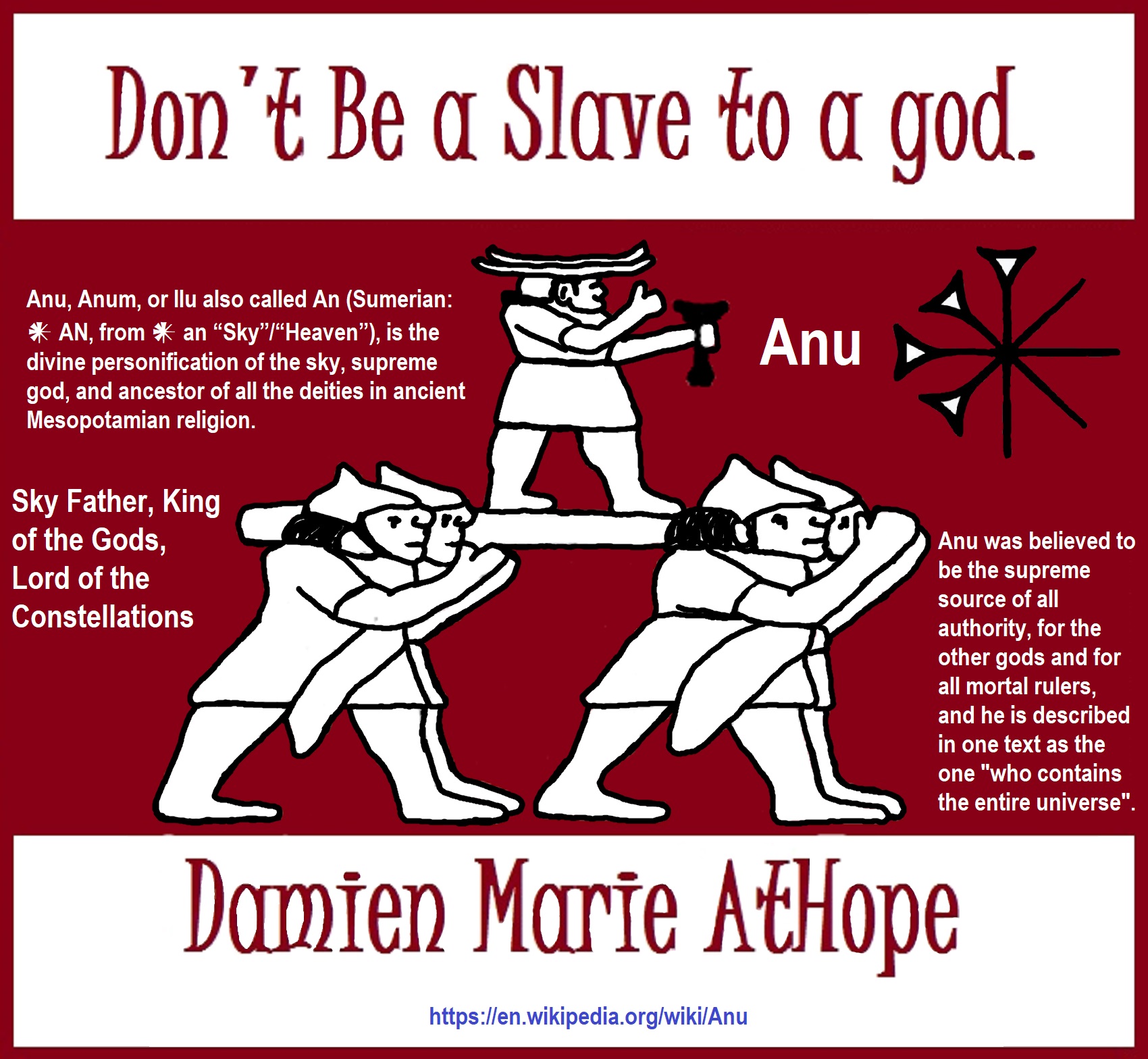
“Theists, there has to be a god, as something can not come from nothing.”
Well, thus something (unknown) happened and then there was something. This does not tell us what the something that may have been involved with something coming from nothing. A supposed first cause, thus something (unknown) happened and then there was something is not an open invitation to claim it as known, neither is it justified to call or label such an unknown as anything, especially an unsubstantiated magical thinking belief born of mythology and religious storytelling.

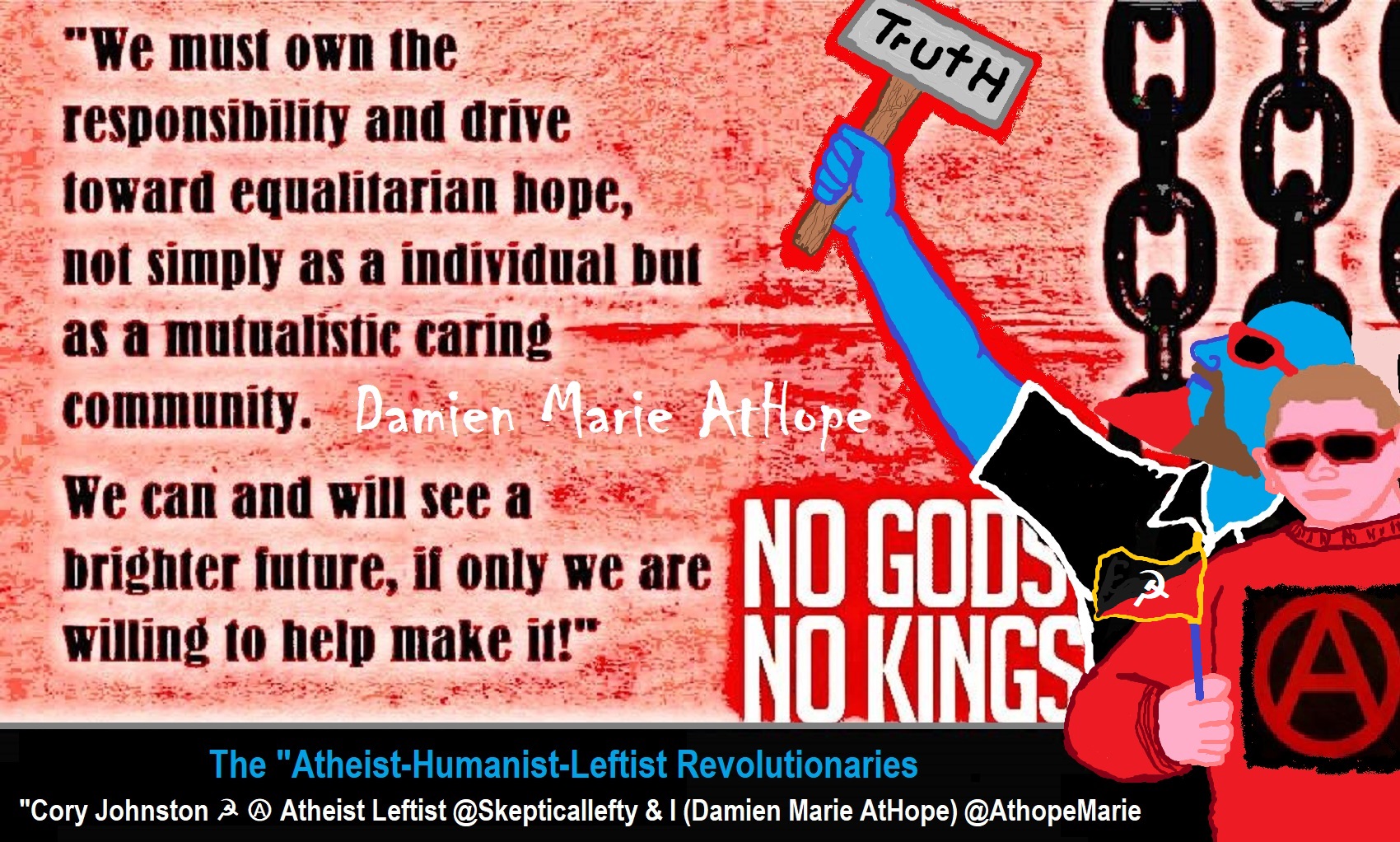
While hallucinogens are associated with shamanism, it is alcohol that is associated with paganism.
The Atheist-Humanist-Leftist Revolutionaries Shows in the prehistory series:
Show two: Pre-animism 300,000 years old and animism 100,000 years old: related to “Anarchism and Socialism”
Show tree: Totemism 50,000 years old: related to “Anarchism and Socialism”
Show four: Shamanism 30,000 years old: related to “Anarchism and Socialism”
Show five: Paganism 12,000 years old: related to “Anarchism and Socialism”
Show six: Emergence of hierarchy, sexism, slavery, and the new male god dominance: Paganism 7,000-5,000 years old: related to “Anarchism and Socialism” (Capitalism) (World War 0) Elite and their slaves!
Prehistory: related to “Anarchism and Socialism” the division of labor, power, rights, and recourses: VIDEO
Pre-animism 300,000 years old and animism 100,000 years old: related to “Anarchism and Socialism”: VIDEO
Totemism 50,000 years old: related to “Anarchism and Socialism”: VIDEO
Shamanism 30,000 years old: related to “Anarchism and Socialism”: VIDEO
Paganism 12,000 years old: related to “Anarchism and Socialism” (Pre-Capitalism): VIDEO
Paganism 7,000-5,000 years old: related to “Anarchism and Socialism” (Capitalism) (World War 0) Elite and their slaves: VIEDO
Paganism 5,000 years old: progressed organized religion and the state: related to “Anarchism and Socialism” (Kings and the Rise of the State): VIEDO
Paganism 4,000 years old: related to “Anarchism and Socialism” (First Moralistic gods, then the Origin time of Monotheism): VIEDO
I do not hate simply because I challenge and expose myths or lies any more than others being thought of as loving simply because of the protection and hiding from challenge their favored myths or lies.
The truth is best championed in the sunlight of challenge.
An archaeologist once said to me “Damien religion and culture are very different”
My response, So are you saying that was always that way, such as would you say Native Americans’ cultures are separate from their religions? And do you think it always was the way you believe?
I had said that religion was a cultural product. That is still how I see it and there are other archaeologists that think close to me as well. Gods too are the myths of cultures that did not understand science or the world around them, seeing magic/supernatural everywhere.
I personally think there is a goddess and not enough evidence to support a male god at Çatalhöyük but if there was both a male and female god and goddess then I know the kind of gods they were like Proto-Indo-European mythology.
This series idea was addressed in, Anarchist Teaching as Free Public Education or Free Education in the Public: VIDEO
Our 12 video series: Organized Oppression: Mesopotamian State Force and the Politics of power (9,000-4,000 years ago), is adapted from: The Complete and Concise History of the Sumerians and Early Bronze Age Mesopotamia (7000-2000 BC): https://www.youtube.com/watch?v=szFjxmY7jQA by “History with Cy“
Show #1: Mesopotamian State Force and the Politics of Power (Samarra, Halaf, Ubaid)
Show #2: Mesopotamian State Force and the Politics of Power
Show #3: Mesopotamian State Force and the Politics of Power (Uruk and the First Cities)
Show #4: Mesopotamian State Force and the Politics of Power (First Kings)
Show #5: Mesopotamian State Force and the Politics of Power (Early Dynastic Period)
Show #6: Mesopotamian State Force and the Politics of Power
Show #7: Mesopotamian State Force and the Politics of Power (Sargon and Akkadian Rule)
Show #9: Mesopotamian State Force and the Politics of Power (Gudea of Lagash and Utu-hegal)
Show #12: Mesopotamian State Force and the Politics of Power (Aftermath and Legacy of Sumer)

The “Atheist-Humanist-Leftist Revolutionaries”
Cory Johnston ☭ Ⓐ Atheist Leftist @Skepticallefty & I (Damien Marie AtHope) @AthopeMarie (my YouTube & related blog) are working jointly in atheist, antitheist, antireligionist, antifascist, anarchist, socialist, and humanist endeavors in our videos together, generally, every other Saturday.
Why Does Power Bring Responsibility?
Think, how often is it the powerless that start wars, oppress others, or commit genocide? So, I guess the question is to us all, to ask, how can power not carry responsibility in a humanity concept? I know I see the deep ethical responsibility that if there is power their must be a humanistic responsibility of ethical and empathic stewardship of that power. Will I be brave enough to be kind? Will I possess enough courage to be compassionate? Will my valor reach its height of empathy? I as everyone, earns our justified respect by our actions, that are good, ethical, just, protecting, and kind. Do I have enough self-respect to put my love for humanity’s flushing, over being brought down by some of its bad actors? May we all be the ones doing good actions in the world, to help human flourishing.
I create the world I want to live in, striving for flourishing. Which is not a place but a positive potential involvement and promotion; a life of humanist goal precision. To master oneself, also means mastering positive prosocial behaviors needed for human flourishing. I may have lost a god myth as an atheist, but I am happy to tell you, my friend, it is exactly because of that, leaving the mental terrorizer, god belief, that I truly regained my connected ethical as well as kind humanity.
Cory and I will talk about prehistory and theism, addressing the relevance to atheism, anarchism, and socialism.
At the same time as the rise of the male god, 7,000 years ago, there was also the very time there was the rise of violence, war, and clans to kingdoms, then empires, then states. It is all connected back to 7,000 years ago, and it moved across the world.
Cory Johnston: https://damienmarieathope.com/2021/04/cory-johnston-mind-of-a-skeptical-leftist/?v=32aec8db952d
The Mind of a Skeptical Leftist (YouTube)
Cory Johnston: Mind of a Skeptical Leftist @Skepticallefty
The Mind of a Skeptical Leftist By Cory Johnston: “Promoting critical thinking, social justice, and left-wing politics by covering current events and talking to a variety of people. Cory Johnston has been thoughtfully talking to people and attempting to promote critical thinking, social justice, and left-wing politics.” http://anchor.fm/skepticalleft
Cory needs our support. We rise by helping each other.
Cory Johnston ☭ Ⓐ @Skepticallefty Evidence-based atheist leftist (he/him) Producer, host, and co-host of 4 podcasts @skeptarchy @skpoliticspod and @AthopeMarie
Damien Marie AtHope (“At Hope”) Axiological Atheist, Anti-theist, Anti-religionist, Secular Humanist. Rationalist, Writer, Artist, Poet, Philosopher, Advocate, Activist, Psychology, and Armchair Archaeology/Anthropology/Historian.
Damien is interested in: Freedom, Liberty, Justice, Equality, Ethics, Humanism, Science, Atheism, Antiteism, Antireligionism, Ignosticism, Left-Libertarianism, Anarchism, Socialism, Mutualism, Axiology, Metaphysics, LGBTQI, Philosophy, Advocacy, Activism, Mental Health, Psychology, Archaeology, Social Work, Sexual Rights, Marriage Rights, Woman’s Rights, Gender Rights, Child Rights, Secular Rights, Race Equality, Ageism/Disability Equality, Etc. And a far-leftist, “Anarcho-Humanist.”
I am not a good fit in the atheist movement that is mostly pro-capitalist, I am anti-capitalist. Mostly pro-skeptic, I am a rationalist not valuing skepticism. Mostly pro-agnostic, I am anti-agnostic. Mostly limited to anti-Abrahamic religions, I am an anti-religionist.
To me, the “male god” seems to have either emerged or become prominent around 7,000 years ago, whereas the now favored monotheism “male god” is more like 4,000 years ago or so. To me, the “female goddess” seems to have either emerged or become prominent around 11,000-10,000 years ago or so, losing the majority of its once prominence around 2,000 years ago due largely to the now favored monotheism “male god” that grow in prominence after 4,000 years ago or so.
My Thought on the Evolution of Gods?
Animal protector deities from old totems/spirit animal beliefs come first to me, 13,000/12,000 years ago, then women as deities 11,000/10,000 years ago, then male gods around 7,000/8,000 years ago. Moralistic gods around 5,000/4,000 years ago, and monotheistic gods around 4,000/3,000 years ago.
To me, animal gods were likely first related to totemism animals around 13,000 to 12,000 years ago or older. Female as goddesses was next to me, 11,000 to 10,000 years ago or so with the emergence of agriculture. Then male gods come about 8,000 to 7,000 years ago with clan wars. Many monotheism-themed religions started in henotheism, emerging out of polytheism/paganism.

Damien Marie AtHope (Said as “At” “Hope”)/(Autodidact Polymath but not good at math):
Axiological Atheist, Anti-theist, Anti-religionist, Secular Humanist, Rationalist, Writer, Artist, Jeweler, Poet, “autodidact” Philosopher, schooled in Psychology, and “autodidact” Armchair Archaeology/Anthropology/Pre-Historian (Knowledgeable in the range of: 1 million to 5,000/4,000 years ago). I am an anarchist socialist politically. Reasons for or Types of Atheism
My Website, My Blog, & Short-writing or Quotes, My YouTube, Twitter: @AthopeMarie, and My Email: damien.marie.athope@gmail.com

